Jane Jacobs
description: an American-Canadian journalist and activist best known for her influence on urban planning and her opposition to the urban renewal policies of the 1950s in New York.
232 results

Makeshift Metropolis: Ideas About Cities
by
Witold Rybczynski
Published 9 Nov 2010
Alexander Garvin, The American City: What Works, What Doesn’t (New York: McGraw-Hill, 1996), 124. Chapter 3: Home Remedies 1. For example, Jane Jacobs, “Washington,” Architectural Forum, January 1956, 93–115; “Typical Downtown Transformed,” Architectural Forum, May 1956, 145–55. 2. Jane Jacobs, “The Missing Link in City Redevelopment,” Architectural Forum, June 1956, 133. 3. Lewis Mumford, “Home Remedies for Urban Cancer,” in The Lewis Mumford Reader, ed. Donald L. Miller (New York: Pantheon Books, 1986), 186. Orig. pub. as “Mother Jacobs’ Home Remedies,” New Yorker, December 1, 1962. 4. Alice Sparberg Alexiou, Jane Jacobs: Urban Visionary (New Brunswick, N.J.: Rutgers University Press, 2006), 61–62. 5.
…
Their intricate order—a manifestation of the freedom of countless numbers of people to make and carry out countless plans—is in many ways a great wonder. —Jane Jacobs Contents Preface 1. Remaking the City 2. Three Big Ideas 3. Home Remedies 4. Mr. Wright and the Disappearing City 5. The Demand-Side of Urbanism 6. Arcades and Malls, Big Boxes and Lifestyle Centers 7. On the Waterfront 8. The Bilbao Anomaly 9. Putting the Pieces Together 10. The Kind of Cities We Want 11. The Kind of Cities We Need Acknowledgments Notes List of Illustrations Index Preface Like those of many architecture students of my generation, my ideas about cities were formed by reading Lewis Mumford and Jane Jacobs. While I pored over their books, in class and out, I was too green to see that in many important ways they were intellectual adversaries.
…
Of Habitat he wrote, “I wanted to demonstrate that a city could be built at a population density comparable with the downtown areas of Montreal or Boston without compromising the quality of environment of each particular urban activity, whether it was shopping, or housing, or work.”9 Habitat, an attempt to raise housing density through a radically different design, was basically a megastructure solution. Modi’in is different: a city informed by post–Jane Jacobs urban design. I asked Safdie how Jacobs had influenced his thinking. “No doubt Jacobs’s book had a great impact,” he answered. “At the time we were all struggling with Miesian planning and the urban-renewal syndrome, and it’s interesting how the responses to Jane Jacobs differed. On one hand, the New Urbanism setting the clock back; in my case, actually feeling we needed to deal with her observations and values looking forward to a denser, more urban environment.”
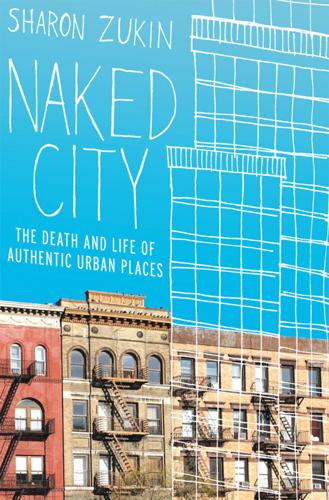
Naked City: The Death and Life of Authentic Urban Places
by
Sharon Zukin
Published 1 Dec 2009
If postwar mayors thought their cities could have it all, so too does the urban middle class. And in a curious way, this is where Jane Jacobs and Robert Moses find common ground: the journalist who saw the city through middle-class eyes and the autocrat who tried to rebuild the city for middle-class tastes and incomes. Their opposing views converge in the desire to have both the high-rise and the interesting neighborhood, both origins and new beginnings; both Moses’s desire to build a corporate city and Jacobs’s desire to preserve the urban village. The conflict between the combined legacies of Jane Jacobs and Robert Moses brings its own contradictions. While some who yearn for the urban village work in the corporate sector—and these include most gentrifiers—others, like the hipsters, see themselves as fleeing corporate conformity.
…
This tension has made New York more modern, more interesting, and also more vulnerable than it seemed when Naked City was filmed. It has also convinced me that the debate is far from ended between Robert Moses, New York’s extraordinary public sector developer of parks, bridges, public housing projects, and highways from the 1930s to the 1960s, and the great urban writer and community organizer Jane Jacobs, who, with her neighbors and allies, fought Moses and won in the late 1950s. While Moses pushed to build the corporate city, Jacobs struggled to preserve the urban village. Though Jacobs and her fellow community activists were able to stop Moses’s plans to destroy significant parts of Lower Manhattan and replace them with highways and high-rise housing projects, the struggle between the corporate city and the urban village continues in our time.
…
Who benefits from the city’s revitalization? Does anyone have a right to be protected from displacement? These stakes, which the French social theorist Henri Lefebvre calls the right to the city, make it important to determine how the city’s authenticity is produced, interpreted, and deployed. Neither Jane Jacobs nor Robert Moses used the term “authenticity.” Each would have thought it unnecessary or even misguided in the 1950s to apply it to their work. But the term has crept into popular language in the past few years, appearing in shop signs—right there on Fourteenth Street: “Red Mango: The Authentic Yogurt”—as well as in marketing strategies and cultural critiques.
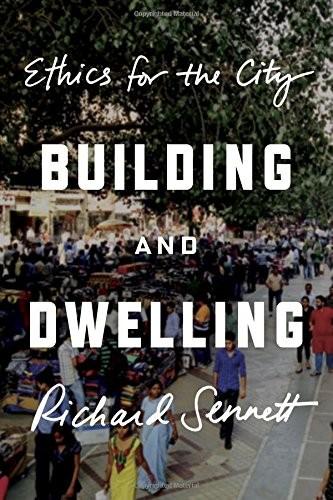
Building and Dwelling: Ethics for the City
by
Richard Sennett
Published 9 Apr 2018
Likewise, if our plans for racial integration had succeeded, people would have had to learn how to adapt the hard surfaces accommodating the school’s buses as playgrounds when the buses were absent. Jane Jacobs combined all these views. The great writer-warrior did not dispute the worth of urban design itself, but asserted that urban forms emerged slowly and incrementally, following the lessons of use and experience. Her bête noire Homo faber, Robert Moses, the New York City planner and power-broker, built in exactly the opposite way: big, fast and arbitrarily. As will emerge in these pages, I dwelt in Jane Jacob’s shadow as a young man. Gradually, I have emerged from it. In part this was because the scene of my own practical activity shifted.
…
He ringingly declared the ‘absolute folly of creating a physical structure at the price of destroying the intimate social structure of a community’s life’, which was in fact just what the developers Gruen, Bacon and Lawrence were in the midst of doing, big-time.17 Mumford and Jacobs sought an alternative to official urbanism, one which incorporated a city’s lived complexities into its built form. Yet only a few years after the Harvard meeting, Mumford and Jacobs parted ways, bitterly, over how to achieve this goal. III. HOW THEN TO OPEN THE CITY? – LEWIS MUMFORD DEBATES JANE JACOBS Jane Jacobs became famous as an activist for the campaign she waged against Robert Moses, the dictatorial planner of much of twentieth-century New York who wanted to turn Fifth Avenue into a highway running through one of the city’s most loved parks, Washington Square. She persuaded the public to see this proposal as criminal, and eventually New York’s politicians relented.
…
The breach which divided Chicago from Paris debouched as a conflict between New Yorkers about whether a city can be made open, by design. * * * I once remarked to Jane Jacobs, when I was first trying to work out the relation of cité and ville, that she was better on the cité than Mumford, while he was better on the ville. This was not while their quarrel simmered in New York, but later, after the Vietnam years when she and her family left for wintry Toronto. Jane Jacobs was strong spice in her placid Canadian home; she remained so even after she became physically immobile. We became friendly in the way New Yorkers are friendly, which is to say we argued whenever I visited Toronto.

Cities Are Good for You: The Genius of the Metropolis
by
Leo Hollis
Published 31 Mar 2013
West’s results can be seen across the board: moving to a city that is twice the size will increase per capita income, it will also be a more creative and industrious place; as the pace of all socio-economic activity accelerates, this leads to higher productivity while economic and social activities diversify.12 The increased complexity that comes from the agglomeration that one finds in the city, therefore, is what makes cities special. As West said in a 2010 interview with the New York Times, he offers a scientific bedrock to Jane Jacobs’s imaginative hunch: ‘One of my favourite compliments is when people come up to me and say, “You have done what Jane Jacobs would have done, if only she could do mathematics” … What the data clearly shows, and what she was clever enough to anticipate, is that when people come together, they become much more productive.’13 While Jacobs focused her attention on her own front stoop and observed life on her local street, West’s superlinear power law shows how this complexity is applicable wherever people gather.
…
It was the innovations of the city that produced a surplus to feed the citizens who did not work the soil. Urban technology transformed subsistence farming to the extent that workers could leave the fields and work in other forms of industry. ‘It was not agriculture, for all its importance, that was the salient invention, or occurrence if you will, of the Neolithic Age,’ observes the urban writer Jane Jacobs. ‘Rather it was the fact of sustained, interdependent, creative city economies that made possible many new kinds of work, agriculture among them.’1 The metropolis was also defined by its walls that acted as a fortification and a trade barrier as well as, in some cases, a measure of citizenship where belonging was bestowed on those born within.
…
All the plots of ground on which the houses of the city are built are four-square, and laid out with straight lines; all the plots being occupied by great and spacious palaces, with courts and gardens of proportionate size. Each square plot is surrounded by handsome streets for the traffic. Thus the whole city is arranged in squares just like a chessboard.2 Contrast this with a more recent description of Greenwich Village by the local author Jane Jacobs who lived in Hudson Street: The ballet of a good city sidewalk never repeats itself from place to place, and in any one place is always replete with new improvisations … Mr Halpert unlocking the laundry’s handcart from its moorings to a cellar door, Joe Cornacchia’s son-in-law stacking out the empty crates from the delicatessen, the barber bringing out his sidewalk folding chair, Mr Goldstein arranging the coils of wire which proclaim the hardware store is open, the wife of the tenement’s supervisor depositing her chunky three-year-old with a toy mandolin on the stoop.
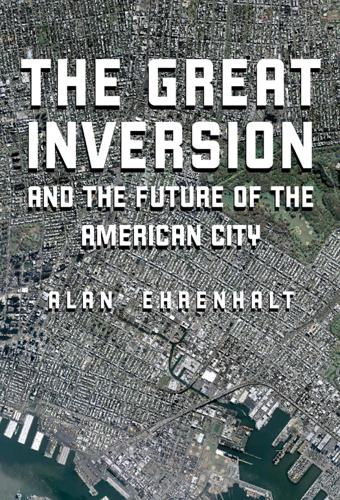
The Great Inversion and the Future of the American City
by
Alan Ehrenhalt
Published 23 Apr 2012
The living habits and preferences of the emerging adult generation are simply too strong to prevent it from occurring to some degree in every healthy urban area. Somewhere in the midst of all these differing prophecies lies the vision of Jane Jacobs. Much of what Jacobs loved and wrote about will never return: The era of the mom-and-pop grocer, the shoemaker, and the candy store has ended for good. We live, for the most part, in a big-box, big-chain century. But I think the youthful urban elites of the present are looking in some sense for the things Jane Jacobs valued, whether they have heard of her or not. They are drawn to the densely packed urban life that they find vastly more interesting than the cul-de-sac world that they grew up inhabiting.
…
New public elementary schools have opened in downtown Vancouver in the past few years. For several decades now, cities in the United States have wished for a 24/7 downtown, a place where people live as well as work, and keep the streets busy, interesting, and safe at every time of day. This is what Jane Jacobs preached in the 1960s, and it has long since become the accepted goal of urban planners. The irony in Vancouver’s case is that it has not merely done well at attracting downtown residents, it has done too well. The condominiums are crowding out office space. Relatively few commercial building projects have been launched in the past decade, and there is little vacant land to build them on anyway.
…
The people who are moving downtown are doing so in part to escape the real or virtual “gatedness” of suburban life. The condos that house them in the coming years may feature elaborate security systems, but the inhabitants will not be walled off from the street. They will want to be in contact with the street. This will mean different things to different people. Some will want the funky qualities of Jane Jacobs’s 1950s version of Hudson Street in New York’s Greenwich Village, with locally owned and slightly messy bookstores, coffeehouses, and bars, and a concentration of art galleries and studios. Others will be willing to accept the less adventurous urban world invaded by chain stores, with street-level rows occupied by the Gap, Cheesecake Factory, and Barnes & Noble, and with apartments perched above them on upper residential floors, either rental or condominium.
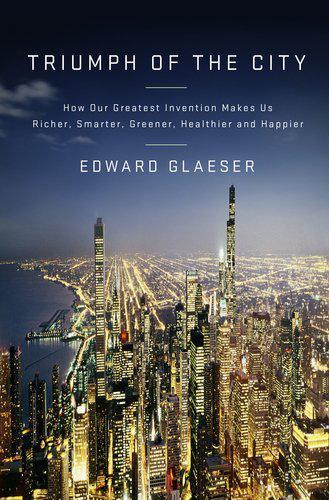
Triumph of the City: How Our Greatest Invention Makes Us Richer, Smarter, Greener, Healthier, and Happier
by
Edward L. Glaeser
Published 1 Jan 2011
After World War II, New York made private development more difficult by overregulating construction and rents while building a bevy of immense publicly supported structures, such as Stuyvesant Town and Lincoln Center. But then, during the 1950s and 1960s, both public and private projects increasingly ran into resistance from grassroots organizers, like Jane Jacobs, who were becoming adept at mounting opposition to large-scale development. Jane Jacobs hardly seemed cut out for big-city glory. She graduated from Scranton’s Central High School in 1934 and left the next year for New York City, because she thought it would be more fun than northeastern Pennsylvania. She took extension-school classes at Columbia University without ever getting a college degree.
…
Height restrictions do increase light, and preservation does protect history, but we shouldn’t pretend that these benefits come without a price. The Perils of Preservation In 1961, the same year that Jane Jacobs published her great book, the Pennsylvania Railroad was preparing to raze its old New York station. That railroad had built the station on Thirty-third Street as a temple to trains in 1908, the height of the rail era. The old Penn Station was a stunning structure, complete with Doric columns and a waiting room based on the Baths of Caracalla. The building’s architect, like Jane Jacobs, saw height as inimical to urban life, so he insisted that the building be short. The decision to go low would prove to be the station’s undoing.
…
They are, tallest first, Empire State Building, 1931; Bank of America Tower, 2009; Chrysler Building, 1930; New York Times Tower, 2007; American International Building, 1932; Trump Building, 1930; Citigroup Center, 1977; Beekman Tower, 2010; Trump World Tower, 2001; and GE Building, 1933. 143 race to produce the tallest structure: Bascomb, Higher, 139-53. 143 amended more than twenty-five hundred times: Makielski, Politics of Zoning. 143 resulting 420-page code: New York City, City Planning Commission, Zoning Maps and Resolution. 143 thirteen different types ... of commercial districts: Ibid. 144 picayune detail of the code: Ibid., 25. 145 “piece of built-in rigor mortis”: Alexiou, Jane Jacobs, 91. 145 a fight with Jane Jacobs: Asbury, “Board Ends Plan.” 146 Jacobs published her masterpiece: Jacobs, Death and Life, Random House, 1961. 146 between one and two hundred households per acre: Jacobs, Death and Life, 208-17. 148 Several papers have shown that new construction is lower: For example, Glaeser and Ward, “The Causes and Consequences of Land Use Regulation: Evidence from Greater Boston,” 265-78; and Katz and Rosen.
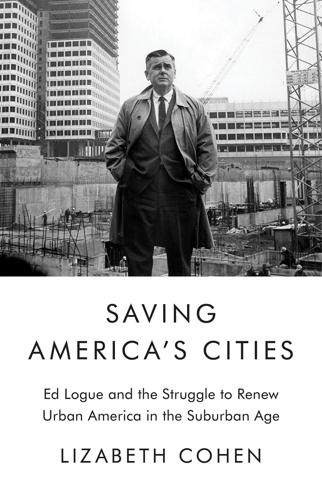
Saving America's Cities: Ed Logue and the Struggle to Renew Urban America in the Suburban Age
by
Lizabeth Cohen
Published 30 Sep 2019
Martin Anderson, The Federal Bulldozer: A Critical Analysis of Urban Renewal, 1949–1962 (Cambridge, MA: MIT Press, 1964); Reason website, http://www.reason.com, particularly Jacobs’s obituary, “Jane Jacobs, RIP,” http://reason.com/blog/2006/04/25/jane-jacobs-rip, and “Jane Jacobs at 100,” http://reason.com/blog/2016/05/04/jane-jacobs-at-100, which labels her “the great defender of urban freedom.” Peter Laurence offers a careful analysis of where Jacobs’s thinking overlapped with that of prominent conservatives like Friedrich Hayek and Karl Popper and where she recognized that government action was needed; Laurence, Becoming Jane Jacobs, 289–305. 18. Lawrence P. Goldman, “Eulogy, Edward J. Logue, Memorial Service, April 27, 2000,” Faneuil Hall, Boston, MDL, 4.
…
Jackson, eds., Robert Moses and the Modern City: The Transformation of New York (New York: W. W. Norton, 2007). 16. Jane Jacobs, The Death and Life of Great American Cities (New York: Vintage, 1961); for a critique along these lines at her death, see Nicolai Ouroussoff, “Outgrowing Jane Jacobs,” NYT, April 30, 2006. For other recent considerations of Jacobs, see Peter L. Laurence, Becoming Jane Jacobs (Philadelphia: University of Pennsylvania Press, 2016); and Robert Kanigel, Eyes on the Street: The Life of Jane Jacobs (New York: Knopf, 2016). 17. Martin Anderson, The Federal Bulldozer: A Critical Analysis of Urban Renewal, 1949–1962 (Cambridge, MA: MIT Press, 1964); Reason website, http://www.reason.com, particularly Jacobs’s obituary, “Jane Jacobs, RIP,” http://reason.com/blog/2006/04/25/jane-jacobs-rip, and “Jane Jacobs at 100,” http://reason.com/blog/2016/05/04/jane-jacobs-at-100, which labels her “the great defender of urban freedom.”
…
“Learning from Twin Parks,” AF 138, no. 5 (June 1973): 62–67; Freemark, “Entrepreneurial State,” 147–48; Mariana Mogilevich, “Designing the Urban: Space and Politics in Lindsay’s New York” (Ph.D. dissertation, Harvard, 2012), 169–86; NYSUDC Annual Report 1973, 35; Nicholai Ouroussoff, “By the Architects, for the People: A Trend for the 2010s,” NYT, May 3, 2010; Susanne Schindler and Juliette Spertus, “A Few Days in the Bronx: From Co-op City to Twin Parks,” Urban Omnibus, July 25, 2012, https://urbanomnibus.net/2012/07/a-few-days-in-the-bronx-from-co-op-city-to-twin-parks/; Yonah Freemark and Susanne Schindler, “Twin Parks,” in Affordable Housing in New York, 226–30. 124. Jane Jacobs, interview by James Howard Kunstler, “Godmother of the American City,” expanded from Metropolis, March 2001, in Jane Jacobs: The Last Interview and Other Conversations (Brooklyn, NY: Melville House, 2016), 81. In early 1967 on a speaking tour of Britain, Jacobs complained after spending an evening with planners, “These people are tiresome beyond belief about their new towns, etc. I wish they would just leave me alone”; quoted in Robert Kanigel, Eyes on the Street: The Life of Jane Jacobs (New York: Alfred A. Knopf, 2016), 260. 125. Margaret Mead, epilogue to Campbell, New Towns: Another Way to Live, 267. 126.
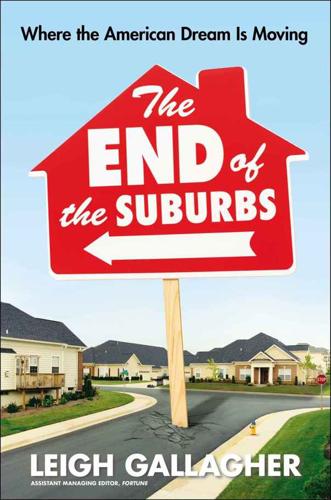
The End of the Suburbs: Where the American Dream Is Moving
by
Leigh Gallagher
Published 26 Jun 2013
And as formulaic as critics say cul-de-sacs are, they do have design virtues that make them appealing to families with young kids. Jason Duckworth of Arcadia Land Company points out that there’s something “almost a little Jane Jacobs-y” about them, he says; when children are playing outside, the circular arrangement of homes with parents looking out tends to put multiple “eyes on the street,” Jane Jacobs parlance for the natural surveillance that comes from the presence of people in homes or stores who can easily view street activity. The biggest issue with the suburbs is the way we have developed them in recent years.
…
“The idea went from, ‘Let’s build a campus’ to ‘Let’s build a city,’” Hsieh says over shots of Fernet, the bitter digestif that has become the team’s signature drink, at his new neighborhood’s Cheers equivalent, the Downtown Cocktail Room. Hsieh has a vision to create his own version of the sidewalk “ballet” Jane Jacobs described, a place where people can live, work, and play without leaving their neighborhood. (It’s actually Jane Jacobs meets Ed Glaeser; the economist and author has become a hero of the Downtown Project team.) Hsieh himself has moved, too, vacating his suburban Vegas house for one of the loft-style apartments. “I haven’t been back there in months,” he told me.
…
Jackson, Crabgrass Frontier: The Suburbanization of the United States (Oxford University Press, 1985), p. 6. former stomping ground: Jane Jacobs’s former residence is located at 555 Hudson Street in Manhattan’s West Village. A two-story mixed-use building with an apartment above a storefront, it sold for $3.3 million in 2009. In recent years, another Jacobs has taken over the rest of the neighborhood: there are at least six separate Marc Jacobs boutiques in the small neighborhood, prompting graphic designer Mike Joyce to start a guerrilla campaign calling for “More Jane Jacobs Less Marc Jacobs.” More than twenty years later: Thanks goes to my high school English teacher, Emily Farrell.
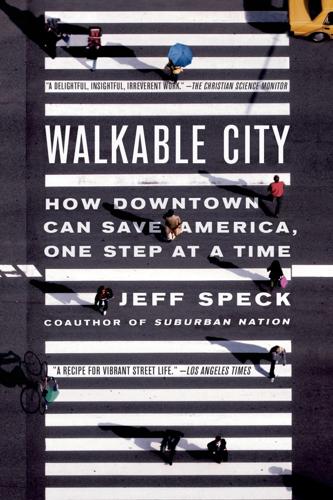
Walkable City: How Downtown Can Save America, One Step at a Time
by
Jeff Speck
Published 13 Nov 2012
Toward that end, I provide the following short interlude. KILL THE TRAFFIC ENGINEERS FIRST Everybody likes Jane Jacobs, right? She was famous for fighting traffic engineers, and took them to task repeatedly and effectively in her masterpiece, The Death and Life of Great American Cities. Most planners and many public servants swear by that book, but few have read Dark Age Ahead, in which, forty years later, she took off the gloves. Until traffic engineers change their tune on induced demand, here is the statement from Jane Jacobs that every public official and planner needs to tape prominently above his or her desk: It is popularly assumed that when universities give science degrees in traffic engineering, as they do, they are recognizing aboveboard expert knowledge.
…
What characterizes the discussion on cities these days is not a wrongheadedness or a lack of awareness about what needs to be done, but rather a complete disconnect between that awareness and the actions of those responsible for the physical form of our communities. We’ve known for three decades how to make livable cities—after forgetting for four—yet we’ve somehow not been able to pull it off. Jane Jacobs, who wrote in 1960, won over the planners by 1980. But the planners have yet to win over the city. Certain large cities, yes. If you make your home in New York, Boston, Chicago, San Francisco, Portland, or in a handful of other special places, you can have some confidence that things are on the right track.
…
He states that “each ten additional minutes in daily commuting time cuts involvement in community affairs by ten percent—fewer public meetings attended, fewer committees chaired, fewer petitions signed, fewer church services attended, and so on.”37 This finding seems perfectly logical—there’s only so much time in the day, after all—but it is only one part of a much larger picture that includes not only how long it takes to get home, but also in what sort of neighborhood that home is located. Much civic engagement is physical, grown from interaction on the street. Jane Jacobs put it this way: “Lowly, unpurposeful, and random as they may appear, sidewalk contacts are the small change from which a city’s wealth of public life may grow.”● About now we could use some good news, so let’s turn to Dan Buettner, the charismatic National Geographic host and bestselling author responsible for The Blue Zones: Lessons for Living Longer from the People Who’ve Lived the Longest.
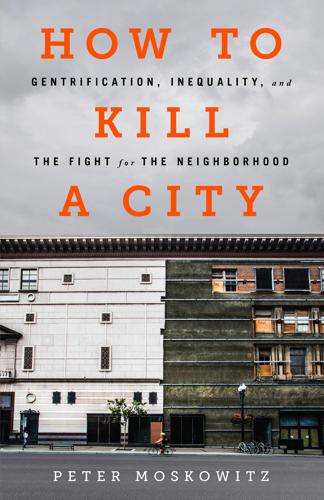
How to Kill a City: The Real Story of Gentrification
by
Peter Moskowitz
Published 7 Mar 2017
It’s hard to not sound nostalgic when talking about growing up in the West Village. My childhood home was just a few blocks from where Jane Jacobs wrote The Death and Life of Great American Cities. And even though I was born years after that book was published, its lessons felt applicable—I could have been a character in Jacobs’s book. Jacobs wrote about how sidewalk life provides many of the things people in suburbs have to pay for—namely, safety and community—and that’s what the Village provided me. I was able to walk on my own to elementary school on Hudson Street (now christened Jane Jacobs Way by the city) when I was ten years old, because I knew people on the route.
…
Classification: LCC HT175 .M67 2017 (print) | LCC HT175 (ebook) | DDC 307.3/362—dc23 LC record available at https://lccn.loc.gov/2016042410 E3-20170206-JV-PC Contents Cover Title Page Copyright Dedication Introduction PART 1: NEW ORLEANS Chapter 1: Hanging On Chapter 2: How Gentrification Works Chapter 3: Destroy to Rebuild PART 2: DETROIT Chapter 4: The New Detroit Chapter 5: The 7.2 Chapter 6: How the Slate Got Blank PART 3: SAN FRANCISCO Chapter 7: The Gentrified City Chapter 8: Growth Machine Chapter 9: The New Geography of Inequality PART 4: NEW YORK Chapter 10: An Elegy Chapter 11: New York Is Not Meant for People Chapter 12: Fight Back Conclusion: Toward an Un-Gentrified Future Acknowledgments About the Author Notes Index To Bubbe, who introduced me to New York Introduction When I returned to New York from college, I found myself belonging to two groups of people: the gentrified and the gentrifiers. I’d grown up in the West Village, just a few blocks from where journalist and activist Jane Jacobs wrote her pro-urban treatise The Death and Life of Great American Cities in 1961. Jacobs’s book was a 400-page meditation on what made the Village great—its small, varied streetscapes; its diversity of profession, class, and race; its inherent eclecticism. Jacobs argued that every other city in the United States should try to emulate its success by encouraging the creation of small shops over big ones, small streets over grand avenues, and varying sizes of apartment buildings and town houses over huge complexes.
…
People no longer held the front door for each other. People no longer said hi on the elevator. I no longer recognized our neighbors. I started giving stern looks to everyone I passed in my building. The sense of community that had made the West Village feel like home for me and my parents—and that had inspired Jane Jacobs over fifty years earlier—was gone. What had happened between 1961 and now? Or even between the 1980s, when my parents first moved to the neighborhood, and now? The Village Jacobs wrote about is all but gone, and a new one that looks like a funhouse version of its former self has replaced it. A lot of the people are gone too, forced out because they could no longer afford sky-high rents.
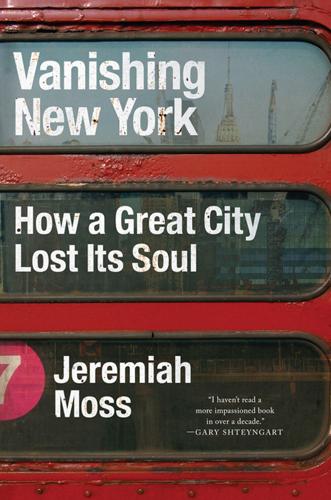
Vanishing New York
by
Jeremiah Moss
Published 19 May 2017
Burden said it again to the Times: “I like to say that our ambitions are as broad and far-reaching as those of Robert Moses, but we judge ourselves by Jane Jacobs’s standards.” (Upping the Frankensteinian ante, Bloomberg has since called Janette Sadik-Khan, who was his Department of Transportation commissioner, “the child that Robert Moses and Jane Jacobs never had,” bringing to mind a rather unsavory libidinal image.) Yet the Bloomberg administration seemed to use Jacobs’s standards only when it suited their agenda. “What mattered most to the administration,” writes Scott Larson in Building Like Moses with Jane Jacobs in Mind, “was producing an ascendant global city whose quality of life was a selling point and an object of consumption.
…
Was this the same brute who ripped out the city’s guts and tore apart countless communities? Meanwhile, the soul of Jane Jacobs was continually co-opted by the planners in Bloomberg’s administration. Amanda Burden claimed to think like Jacobs while behaving like Moses, an impossibly absurd contradiction. At a forum on Jacobs and Moses at the CUNY Graduate Center in 2006, Burden said, “It is to the great credit of the Mayor that we are building and rezoning today once again like Moses on an unprecedented scale but with Jane Jacobs in mind.” Jacobs had only been dead six months—from what I can tell, this phrase was never uttered while she was alive.
…
In quiet protest, bright yellow postcards started popping up around Bleecker, propped in store windows, on café counters, even pinned to the shirtfronts of senior citizens sunning on park benches. In black Helvetica type, the postcard read: “More Jane Jacobs, Less Marc Jacobs.” A guerrilla campaign created by graphic designer Mike Joyce, the slogan went onto T-shirts that quickly sold out. Joyce told me in an interview, “Probably the biggest question I am asked is ‘Who’s Jane Jacobs?’” The western end of Bleecker Street was soon nicknamed “Rodeo Drive East” and the “Gold Coast,” as every last one of the small businesses from Tenth Street to Hudson was pushed out by skyrocketing rents.

Streetfight: Handbook for an Urban Revolution
by
Janette Sadik-Khan
Published 8 Mar 2016
It was a great education and left a profound impact on how I viewed the city’s operating system of streets and bridges and their importance for people. My backyard was Washington Square Park, just a few blocks from my mom’s apartment, and our conversations often included Jane Jacobs and Robert Moses, whose names are forever entwined by the park. I didn’t grow up wanting to be a transportation commissioner. I wanted to be a lawyer and work on social justice issues—more Clarence Darrow than Jane Jacobs. I had been encouraged to go to law school by Marian Wright Edelman, the visionary leader of the Children’s Defense Fund, during my first job out of college. After finishing law school I worked at a law firm, but it didn’t take long to realize that wasn’t where my passion lay.
…
In July 2014, seven months after I stepped down as transportation commissioner when a new mayor came into office, a work team from New York City’s Department of Transportation added a footnote to Manhattan’s urban history: working with thermoplastic paint and concrete, the crew striped and heat-stenciled a parking-protected bike path directly in front of 555 Hudson Street in Greenwich Village, the former home of Jane Jacobs. Jane’s Lane, a protected bike path in front of Jane Jacobs’s former home at 555 Hudson Street, Manhattan, arrived fifty-three years after the publication of The Death and Life of Great American Cities. Seth Solomonow The design of the bike path, now running alongside the curb, protected by the line of parked cars on the other side, wasn’t new to Manhattan’s streets.
…
“outside of the Gaza Strip”: Natalie O’Neill, “The Prospect Park West Bike Lane Had Our Presses Rolling All Year Long,” The Brooklyn Paper, December 30, 2011, accessed August 10, 2015, www.brooklynpaper.com/stories/34/52/all_year_bikelane_2011_12_30_bk.html. “Ballet of Hudson Street”: Jane Jacobs, The Death and Life of Great American Cities (New York: Random House, 2009), 52. “eyes on the street”: Ibid., 35. “public life may grow”: Ibid., 72. “that we must fit our plans”: Jane Jacobs, “Downtown Is for People,” Fortune, 1958, accessed August 5, 2015, http://fortune.com/2011/09/18/downtown-is-for-people-fortune-classic-1958/. exclusively on NIMBY: These ad hoc groups are also known, variously, as NOPE (Not on Planet Earth) or CAVEmen (Citizens Against Virtually Everything) or BANANA (Build Absolutely Nothing Anywhere Near Anything).

Smart Cities: Big Data, Civic Hackers, and the Quest for a New Utopia
by
Anthony M. Townsend
Published 29 Sep 2013
Katz (Washington, DC: Brookings Institution, 2000), 115. Fishman’s original source material is Jacobs, Death and Life of Great American Cities, chap. 7. 8Thomas J. Campanella, “Jane Jacobs and the Death and Life of American Planning,” Places: Forum of Design for the Public Realm, April 25, 2011, http://places.designobserver.com/feature/jane-jacobs-and-the-death-and-life-of-american-planning/25188/. 9Campanella, “Jane Jacobs and the Death and Life of American Planning.” 10R. L. Duffus, “A Rising Tide of Traffic Rolls Over New York; What is Being Done to Relieve the Ever-Growing Street Congestion Which Threatens to Slow Up the Vital Processes of Life in the Metropolis,” New York Times, February 9, 1930, XX4. 11Peter D.
…
Norton, Fighting Traffic: The Dawn of the Motor Age in the American City (Cambridge, MA: MIT Press, 2008), 25. 12Duffus, “A Rising Tide of Traffic Rolls Over New York,” XX4. 13Norton, Fighting Traffic, 25–27. 14Norton, Fighting Traffic, 24. 15Norton, Fighting Traffic, 105. 16Norton, Fighting Traffic, 2. 17Campanella, “Jane Jacobs and the Death and Life of American Planning.” 18Anthony Flint, Wrestling with Moses: How Jane Jacobs Took on New York’s Master Builder and Transformed the American City (New York: Random House, 2009), 51. 19Author’s calculation using estimates from Caro, The Power Broker, 9, and US Bureau of Labor Statistics CPI Inflation Calculator, http://www.bls.gov/cpi/cpicalc.htm, accessed August 15, 2012. 20Flint, Wrestling with Moses, 85–87. 21Flint, Wrestling with Moses, 100. 22Flint, Wrestling with Moses, 105. 23Flint, Wrestling with Moses, 99. 24Flint, Wrestling with Moses, 109. 25Campanella, “Jane Jacobs and the Death and Life of American Planning.” 26Tom Wright, remarks, “Tools for Engagement” workshop, Regional Plan Association & Lincoln Institute for Land Policy, New York, March 29, 2012. 27Patrick Geddes, quoted in Jaqueline Tyrwhitt, ed., Patrick Geddes in India (London: Lund Humphries: 1947), 45. 28Helen Meller, Patrick Geddes: Social Evolutionist and City Planner (New York: Routledge, 1990), 76–79. 29Patrick Geddes, quoted in Tyrwhitt, ed., Patrick Geddes in India, 41 30Alasdair Geddes, quoted in Tyrwhitt, ed., Patrick Geddes in India, 15. 31Lewis Mumford, quoted in in Tyrwhitt, ed., Patrick Geddes in India, 11. 32Quoted in Welter, Biopolis, 18. 33Nicolai Ouroussoff, “Outgrowing Jane Jacobs and Her New York, New York Times, April 30, 2006, http://www,nytimes.com/2006/04/30/weekinreview/30jacobs.html. 34Campanella, “Jane Jacobs and the Death and Life of American Planning.” 35Fareed Zakaria, “Special Address: At the Intersection of Globalization and Urbanization,” SmarterCities Forum, Rio de Janeiro, Brazil, November 9, 2011. 36Tyler Cowen, The Great Stagnation: How America Ate All The Low-Hanging Fruit of Modern History, Got Sick, and Will (Eventually) Feel Better (New York: Dutton, 2011), Kindle edition, location 93. 37“Hal Varian on How the Web Challenges Managers,” video interview with James Manyika, McKinsey & Co., last modified January 2009, http://www.mckinseyquarterly.com/Hal_Varian_on_how_the_Web_challenges_ managers_2286. 38Joi Ito, “The Internet, innovation and learning,” last modified December 5, 2011, http://joi.ito.com/weblog/2011/12/05/the-internet-in.html. 39Ito, “The Internet, innovation and learning.” 40Michael Hiltzik, “So, who really did invent the Internet?”
…
Norton, Fighting Traffic: The Dawn of the Motor Age in the American City (Cambridge, MA: MIT Press, 2008), 25. 12Duffus, “A Rising Tide of Traffic Rolls Over New York,” XX4. 13Norton, Fighting Traffic, 25–27. 14Norton, Fighting Traffic, 24. 15Norton, Fighting Traffic, 105. 16Norton, Fighting Traffic, 2. 17Campanella, “Jane Jacobs and the Death and Life of American Planning.” 18Anthony Flint, Wrestling with Moses: How Jane Jacobs Took on New York’s Master Builder and Transformed the American City (New York: Random House, 2009), 51. 19Author’s calculation using estimates from Caro, The Power Broker, 9, and US Bureau of Labor Statistics CPI Inflation Calculator, http://www.bls.gov/cpi/cpicalc.htm, accessed August 15, 2012. 20Flint, Wrestling with Moses, 85–87. 21Flint, Wrestling with Moses, 100. 22Flint, Wrestling with Moses, 105. 23Flint, Wrestling with Moses, 99. 24Flint, Wrestling with Moses, 109. 25Campanella, “Jane Jacobs and the Death and Life of American Planning.” 26Tom Wright, remarks, “Tools for Engagement” workshop, Regional Plan Association & Lincoln Institute for Land Policy, New York, March 29, 2012. 27Patrick Geddes, quoted in Jaqueline Tyrwhitt, ed., Patrick Geddes in India (London: Lund Humphries: 1947), 45. 28Helen Meller, Patrick Geddes: Social Evolutionist and City Planner (New York: Routledge, 1990), 76–79. 29Patrick Geddes, quoted in Tyrwhitt, ed., Patrick Geddes in India, 41 30Alasdair Geddes, quoted in Tyrwhitt, ed., Patrick Geddes in India, 15. 31Lewis Mumford, quoted in in Tyrwhitt, ed., Patrick Geddes in India, 11. 32Quoted in Welter, Biopolis, 18. 33Nicolai Ouroussoff, “Outgrowing Jane Jacobs and Her New York, New York Times, April 30, 2006, http://www,nytimes.com/2006/04/30/weekinreview/30jacobs.html. 34Campanella, “Jane Jacobs and the Death and Life of American Planning.” 35Fareed Zakaria, “Special Address: At the Intersection of Globalization and Urbanization,” SmarterCities Forum, Rio de Janeiro, Brazil, November 9, 2011. 36Tyler Cowen, The Great Stagnation: How America Ate All The Low-Hanging Fruit of Modern History, Got Sick, and Will (Eventually) Feel Better (New York: Dutton, 2011), Kindle edition, location 93. 37“Hal Varian on How the Web Challenges Managers,” video interview with James Manyika, McKinsey & Co., last modified January 2009, http://www.mckinseyquarterly.com/Hal_Varian_on_how_the_Web_challenges_ managers_2286. 38Joi Ito, “The Internet, innovation and learning,” last modified December 5, 2011, http://joi.ito.com/weblog/2011/12/05/the-internet-in.html. 39Ito, “The Internet, innovation and learning.” 40Michael Hiltzik, “So, who really did invent the Internet?”
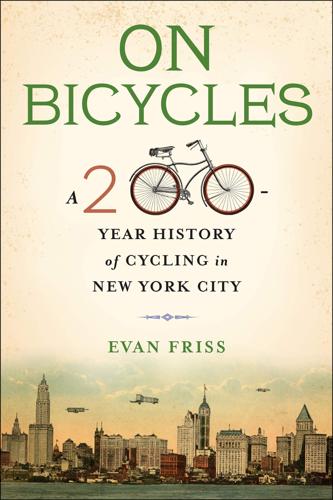
On Bicycles: A 200-Year History of Cycling in New York City
by
Evan Friss
Published 6 May 2019
The organizer of the ride and TA cofounder, David Gurin, was an anticar evangelist who worried about the destructive effect of cars on the quality of the air and, à la Jane Jacobs, on the quality and character of urban life.17 Working out of the Cathedral of Saint John the Divine’s basement, TA wasted no time making its presence known. On April 7, 1973, TA hosted its first “bike-in,” encouraging riders from each of the boroughs to “Ride & Rally” from Central Park to Washington Square, the park that Jane Jacobs had saved from Robert Moses. A poster advertising the event featured a hand-drawn cavalcade of goofy-looking cyclists, a special invitation to Spanish-speaking New Yorkers, and a promise that folk singer Pete Seeger, an early supporter of the organization, would perform.
…
What exactly they symbolized depended on the moment and person in question; they usefully served as metaphors, ways to talk indirectly about (and argue about) politics, class, and culture; critique an ever-changing city; and coalesce around a perceived threat to the neighborhood, whether immigrant commercial cyclists run amok or white gentrifying cycling commuters. Both kinds of riders indicated that New York was home, even if not a completely welcoming one, to more practical cyclists than ever before. In 2009, New York Magazine described Janette Sadik-Khan as “equal parts Jane Jacobs and Robert Moses,” and in 2016, Bloomberg wrote: “Janette Sadik-Khan is like the child that Robert Moses and Jane Jacobs never had.” They recognized that Sadik-Khan’s style included a dash of Jacobs-like vision and a dollop of Moses-like efficiency.67 Jacobs and Sadik-Khan both lived in the West Village, biked to work, advocated for what they saw as common-sense policy, and never shied away from challenging the status quo.
…
New York City Department of Parks, Recreational Facilities for New Yorkers (New York: Dept. of Parks), 1946; Recreational Facilities for New Yorkers, 1948; Recreational Facilities for New Yorkers, 1953; Recreational Facilities for New Yorkers, 1956. 40. Robert Kanigel, Eyes on the Street: The Life of Jane Jacobs (New York: Vintage, 2016), 134–35. 41. W. McQ., “(Get A Bike!),” Architectural Forum, April 1956, 43, 51; Kanigel, Eyes on the Street, 134–35. 42. For those cycling references, see Jane Jacobs, The Death and Life of Great American Cities (New York: Vintage, 1961), 87, 110, 267; David Byrne, Bicycle Diaries (New York: Viking, 2009), 2. For more on the unique ways cyclists experience the city and a phenomenological take on the practice, see Jesús Illundáin-Agurruza and Michael W.
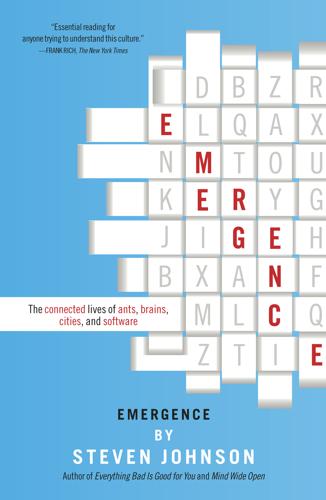
Emergence
by
Steven Johnson
You can answer all of these questions without resorting to the sciences of complexity and self-organization, but those answers all share a common pattern, as clear as the whorls of a fingerprint. But to see it as a pattern you needed to encounter it in several contexts. Only when the pattern was detected did people begin to think about studying self-organizing systems on their own merits. Keller and Segel saw it in the slime mold assemblages; Jane Jacobs saw it in the formation of city neighborhoods; Marvin Minsky in the distributed networks of the human brain. What features do all these systems share? In the simplest terms, they solve problems by drawing on masses of relatively stupid elements, rather than a single, intelligent “executive branch.”
…
It is indeed too huge and too complex a state of organized affairs ever to have been thought up in advance, to have preexisted as an idea.” Those broad, glittering avenues, in other words, suggest a Potemkin village without a Potemkin. That mix of order and anarchy is what we now call emergent behavior. Urban critics since Lewis Mumford and Jane Jacobs have known that cities have lives of their own, with neighborhoods clustering into place without any Robert Moses figure dictating the plan from above. But that understanding has entered the intellectual mainstream only in recent years—when Engels paced those Manchester streets in the 1840s, he was left groping blindly, trying to find a culprit for the city’s fiendish organization, even as he acknowledged that the city was notoriously unplanned.
…
In October of 1961, the New York City Planning Commission announced its findings that a large portion of the historic West Village was “characterized by blight, and suitable for clearance, replanning, reconstruction, or rehabilitation.” The Village community—a lively mix of artists, writers, Puerto Rican immigrants, and working-class Italian-Americans—responded with outrage, and at the center of the protests was an impassioned urban critic named Jane Jacobs. Jacobs had just spearheaded a successful campaign to block urban-development kingpin Robert Moses’s plan to build a superhighway through the heart of SoHo, and she was now turning her attention to the madness of the projects. (The proposed “rehabilitation” included Jacobs’s own residence on Hudson Street.)
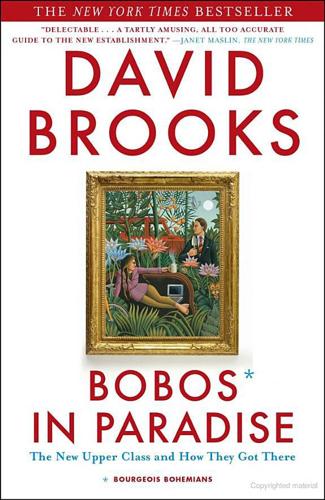
Bobos in Paradise: The New Upper Class and How They Got There
by
David Brooks
Published 1 Jan 2000
But that doesn’t mean that he and Whyte were wrong when they criticized technocracies or the conformist and artificial social ethic they engendered. It simply means that it would take a more down-to-earth writer to provide a more practical way of rethinking organizations and social structures. Jane Jacobs, Proto-Bobo In fact, when Roszak was writing, the seeds of that rethinking had already been planted. In 1961 Jane Jacobs published The Death and Life of Great American Cities, which remains the most influential book on how Bobos view organizations and social structures. Jane Jacobs was born in Scranton, Pennsylvania, in 1916, the daughter of a doctor and a teacher. After high school she went to work as a reporter for the Scranton Tribune.
…
The disastrous failure of social-engineering projects across the developing world have exposed the hubris of technocrats who thought they could reshape reality. The failure of the Communist planned economies has taught us that the world is too complicated to be organized and centrally directed. We are, with Jane Jacobs, more modest about what we can know, more skeptical of planners and bureaucrats. We’re more likely to trust modest individuals like Jacobs, who take the time to sit quietly and observe closely. The Pastoral Organization Now we can return to the workplace of today. If you look at today’s management theorists or the restructuring that has been instituted by cutting-edge companies, you are immediately struck by how deeply they have been influenced first by Whyte’s and Roszak’s objections to the old business structures and then by Jacobs’s vision of what constitutes a healthy community.
…
At Procter & Gamble, elevators, which are thought to destroy give-and-take conversations, are out, while escalators, which are thought to enhance them, are in. Nickelodeon installed extra-wide stairs to encourage exchange and schmoozing. IDEO, another design company, has long rolls of butcher paper spread out over conference tables for brainstorming and doodling. All these companies and hundreds of others are trying to recreate little Jane Jacobs environments, complete with chance meetings, spontaneous exchanges, small gathering places, and the sort of constant flexibility that is really a dynamic order. In the old organization it was the system that was king. Now, so we are told, relationships matter most. In 1967 Kenneth Keniston completed Young Radicals, a study of the 1960s counterculturalists in which he observed that “in manner and style, these young radicals are extremely ‘personalistic,’ focused on face-to-face, direct and open relationships with other people; hostile to formally structured roles and traditional bureaucratic patterns of power and authority.”
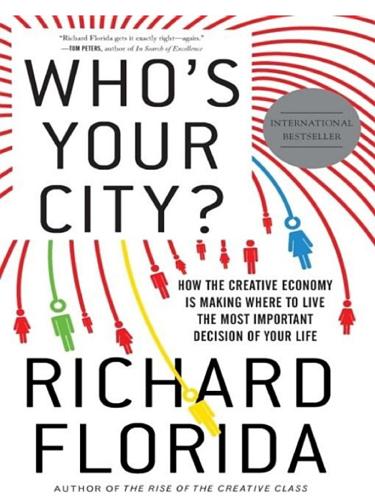
Who's Your City?: How the Creative Economy Is Making Where to Live the Most Important Decision of Your Life
by
Richard Florida
Published 28 Jun 2009
Chapter 4 1 Robert Lucas, “On the Mechanics of Economic Development,” Journal of Monetary Economics 22, 1988, pp. 3-42. 2 Adam Smith, The Wealth of Nations, Bantam, 2003 (1st ed., 1776). 3 David Ricardo, Principles of Political Economy and Taxation, Cosimo Classics, 2006 (1st ed., 1817). 4 Joseph Schumpeter, Theory of Economic Development, Harvard University Press, 1934 (1st ed., 1911); Schumpeter, Capitalism, Socialism, and Democracy, Harper, 1975 (1st ed., 1942). Thomas McCraw has written an illuminating biography of Schumpeter, Prophet of Innovation: Joseph Schumpeter and Creative Destruction, Belknap, 2007. 5 Bill Steigerwald, “City Views: Urban Studies Legend Jane Jacobs on Gentrification, the New Urbanism, and Her Legacy,” Reason, June 2001. 6 See the discussion of Jacobs’s ideas in David Ellerman, “Jane Jacobs on Development,” Oxford Development Studies, December 4, 2004, pp. 507-521. 7 Geoffrey West et al., “Growth, Innovation, Scaling, and the Pace of Life in Cities,” Proceedings of the National Academy of Sciences, April 24, 2007, pp. 7301-7306. 8 Robert Axtell and Richard Florida, “Emergent Cities: Micro-foundations of Zipf’s Law,” March 2006.
…
The classical economists Adam Smith and David Ricardo both argued that nation-states are the geographic engines behind economic growth. As Ricardo famously theorized, discretely defined countries have incentive to specialize in different kinds of industries, which would allow them to gain and maintain “comparative advantage” over others.1 The first person to see this was the great urbanist Jane Jacobs, who is best known for her scathing critique of urban planning, The Death and Life of Great American Cities, and two other very important books, The Economy of Cities and Cities and the Wealth of Nations.2 In The Economy of Cities (1969) Jacobs refutes the long-standing theory that cities emerged only after agriculture had become sufficiently productive to create a surplus beyond what was needed to survive.
…
In 1776 Adam Smith published The Wealth of Nations, which argued that specialization, efficiency, and division of labor are the cornerstones of modern economic growth.2 Later, David Ricardo’s theory of comparative advantage argued that not just firms but countries gain advantage by specializing in certain kinds of economic activity.3 The far-seeing urbanist Jane Jacobs agrees that specialization has its uses, but she focuses on an even more fundamental source of economic growth—what she terms expansion. Like the great economist Joseph Schumpeter, she emphasizes the critical importance of innovation and entrepreneurship. In her eyes, the prospect of new types of work and new ways of doing things drives large-scale economic expansion.
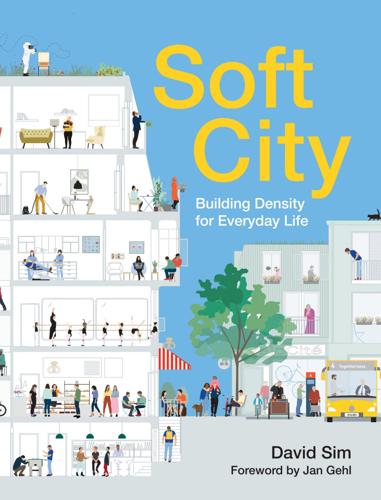
Soft City: Building Density for Everyday Life
by
David Sim
Published 19 Aug 2019
Seemingly, it took 65 years and numerous Modernist city districts to reach this conclusion. However, a counter cities-for-people movement had been gradually developing for quite a number of years in reaction to the technocratic modernist movement. In the area of writings and research, the work of Jane Jacobs in New York, and her famous 1961 book The Death and Life of Great American Cities, stands out. Jane Jacobs raised the flag and excellently described many of the problems of Modernist city planning. She started to formulate new directions: look out of your windows; look at the people; look at life before you plan and design. In the years and decades following her call to arms, a number of researchers developed and deepened the work concerning how the built form influences quality of life.
…
In the years and decades following her call to arms, a number of researchers developed and deepened the work concerning how the built form influences quality of life. The New York School, with William H. Whyte, and later with the Project for Public Spaces, continues the work and inspiration from Jane Jacobs. In California, the Berkeley School, with Christopher Alexander, Donald Appleyard, Clare Cooper Marcus, Allan Jacobs, and Peter Bosselmann, contributed much valuable research and insights on people-oriented architecture and city planning over several decades. In Copenhagen, a rather extensive research environment was established at the School of Architecture at the Royal Danish Academy of Fine Arts in the mid-1960s.
…
Some buildings may be run for the highest possible profit, and others for no profit at all. What is important is that there are not only different kinds of buildings, but that they accommodate different uses and different types of people in close proximity. Mixing old and new buildings can contribute to the socio-economic diversity described by Jane Jacobs.7 The diversity of use and users can contribute to a sense of community and make the neighborhood safer. A mixture of dwellings, workplaces, businesses, and services will ensure that there are people on a block at all hours. Different kinds of residents and users are at home and awake at different times of the day, which is particularly important for crime prevention.
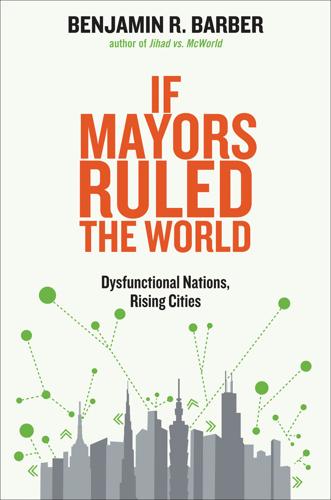
If Mayors Ruled the World: Dysfunctional Nations, Rising Cities
by
Benjamin R. Barber
Published 5 Nov 2013
The metaphysics are mostly gone today, but current admirers of the city share the Enlightenment preoccupation with mobility, creativity, and innovation; they agree that inequality is amenable to mitigation and that cities can self-improve even where nations cannot and do not. In her Cities and the Wealth of Nations, Jane Jacobs observed that just because they are salient political and military entities, nations are not necessarily “the basic, salient entities of economic life.”9 It is rather the city and its capacity for innovation that grow urban economies. “Cities do not depend on the entire nation state for their growth” although “neither do they exist on their own here—they depend on surrounding regions.”10 No one since Jane Jacobs has made the argument for creative invention as an engine of urban growth and reform as compellingly (and controversially) as Richard Florida, with his focus on the captivating notion of the creative class.
…
In a chapter titled “The High-Modernist City,” he accuses Le Corbusier of bombastically seeking “total city planning” through “a lyrical marriage between Cartesian pure forms and the implacable requirements of the machine,” p. 107. But Scott misses entirely Le Corbusier’s parallel decentrist inclinations that aspire to purchase open green space in the city with high-rise towers. 10. Jane Jacobs, The Death and Life of Great American Cities, p. 65. 11. Jane Jacobs is anxious to distinguish the city (or “great city”) from entities that, while like it, are distinctly not it! “Towns, suburbs and even little cities,” she writes, “are totally different organisms from great cities . . . to try to understand town in terms of big cities will only compound confusion.”
…
Much of what I do here is merely to hold up a megaphone before them so that their measured and persistent voices on behalf of the redemptive potential of the urban can be widely heard. Tom Bender, Manuel Castells, Eric Corijn, Mike Davis, Richard Florida, Edward Glaeser, David Harvey, Peter Marcuse, Saskia Sassen, Richard Sennett, and Ronald van Kempen—and before them Lewis Mumford, Max Weber, Jane Jacobs, and the many others who are cited below—have built a scholarly edifice I feel lucky to have been able to inhabit and explore. My task has been to apply the results of their work to the challenge of establishing a form of constructive interdependence—global democratic governance—in which cities are prime actors.
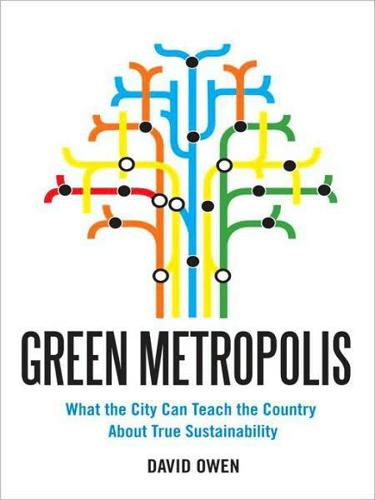
Green Metropolis: Why Living Smaller, Living Closer, and Driving Less Are Thekeys to Sustainability
by
David Owen
Published 16 Sep 2009
Many more acres of upstate pastoral paradise were destroyed by the steady spread of towns like hers than by the creation of the water supply system that makes it possible for New York City to exist. Building the city didn’t fill the Hudson Valley with parking lots; fleeing the city did. THE SIGNIFICANCE OF POPULATION DENSITY WAS ELUCIDATED brilliantly in 1961 in a landmark book called The Death and Life of Great American Cities, by Jane Jacobs.35 Jacobs upended many widely held ideas about how cities ought to be put together, and she has been celebrated ever since as an urban-planning iconoclast and visionary, but she could be viewed just as easily as a pioneering environmentalist. Indeed, Jacobs’s book may be most valuable today as a guide to reducing the ecological damage caused by human beings, even though it scarcely mentions the environment, other than by making a couple of passing references to smog.
…
The commissioners’ view regarding parks was that “vacant spaces” were made unnecessary by “those large arms of the sea which embrace Manhattan Island,” thereby providing what they felt to be an adequate supply of fresh air and obviating the need to sacrifice developable real estate to recreation.39 No one today would lay out such a large inhabited area with such a paucity of open space, but the relentlessness of the street plan is actually one of the keys to the city’s continuing vitality—and to its greenness. One of Jane Jacobs’s many arresting observations is that parks and other open spaces, if poorly planned, can actually make cities less livable, by creating dead ends that prevent people from moving freely between neighborhoods and by decreasing adjacent activity, a subject to which I’ll return in chapter 4.40 Manhattan’s crush of architecture is paradoxically humanizing, because it brings the city’s commercial, cultural, and other offerings closer together, thereby increasing their accessibility.
…
With the home and the workplace separated, often by long car commutes, two well-serviced developments are created with duplicate retail, service, and parking institutions: the bedroom community and the office park.”16 Standard zoning regulations prohibit or sharply limit almost every characteristic that Jane Jacobs celebrated as the irreducible ingredients of urban vitality, and that the Sierra Club has identified as tools for reducing or reversing sprawl. Zoning tends to fully separate residential and commercial uses, to move buildings farther apart and farther from streets and sidewalks, to force low-density development by limiting building height and lot coverage, and to require the creation of oversized parking facilities, which move buildings still farther apart, usually making them inaccessible to anyone who isn’t driving.

Stuck: How the Privileged and the Propertied Broke the Engine of American Opportunity
by
Yoni Appelbaum
Published 17 Feb 2025
GO TO NOTE REFERENCE IN TEXT On the first floor: Anthony Flint, Wrestling with Moses: How Jane Jacobs Took On New York’s Master Builder and Transformed the American City (New York: Random House, 2009), 14–15. GO TO NOTE REFERENCE IN TEXT “The front of No. 555”: Greenwich Village Historic District Designation Report, 2: 400. GO TO NOTE REFERENCE IN TEXT In 1956, in front: Leticia Kent, “Oral History Interview of Jane Jacobs,” Oct. 1997, 23, Greenwich Village Society for Historic Preservation Archives. GO TO NOTE REFERENCE IN TEXT She watched Samuel Halpert: Jane Jacobs, The Death and Life of Great American Cities (New York: Vintage Books, 2016), 50.
…
But the next resident of 555 Hudson Street would do as much as anyone to change that, celebrating American dynamism even as she helped bring it to a crashing halt. Hechler died in 1945, and his landlord died the following year. The building was sold “well below market values to quick buyer,” who promptly flipped it to an eager pair of purchasers. And Jane Jacobs moved in. * * * In 1947, when Jacobs and her husband moved to the West Village, it was still a zone of emergence, filled with immigrants and their children, people constantly moving in and moving out. Robert and Jane were different. The young, urban professionals both held full-time jobs, Robert working as an architect and Jane writing for a State Department magazine.
…
She landed in a rental; in one of those “only in New York” stories, her landlord was Calvin Trillin, coiner of “neighborhoodism.” When a town house came on the market, she jumped at the chance to buy it. She’d been living in the house for less than a year when she opened the door onto the street to find a crowd of forty people staring at her. “I don’t think that’s Jane Jacobs,” said a voice from the back of the crowd. That’s how Spehar learned whose house she had bought. In its first circular in 1961, the Committee to Save the West Village had inveighed against redevelopment, warning ominously that “even when some buildings are saved and rehabilitated, their rents are usually doubled or tripled.”

Messy: The Power of Disorder to Transform Our Lives
by
Tim Harford
Published 3 Oct 2016
A much better recipe for success was a cluster of industries that drew on some common elements—for example, the same basic scientific research—but which were also diverse. Per person, San Francisco and Boston were comfortably the two most innovative places in the United States. Feldman and Audretsch concluded that Jane Jacobs had been right that innovation emerged from diverse (but complementary) industries rather than specialized clusters. The great Alfred Marshall had missed this important point—while Jane Jacobs, a woman with no formal qualifications, dismissed as “a crazy dame” by establishment figures, had come at the subject from a different angle and discovered something important. That is, of course, exactly the kind of thing her own theory predicted
…
There is a balance to be struck here—a balance that we are still working hard to understand.11 Yet the early lessons of the new science of the microbiome chime strikingly with what we’ve already discovered: If you try to control a complex system, suppressing or tidying away the parts that seem unimportant, you are likely to discover that what seemed unimportant turns out to be very important indeed. • • • If we are increasingly understanding that mess makes natural systems more healthy and resilient, then could the same be true for artificial systems, such as the neighborhoods, cities, and countries where we live? Jane Jacobs, the urban writer and campaigner, made the case for neighborhood diversity in The Death and Life of Great American Cities. She wrote of “the daily ballet of Hudson Street” in Greenwich Village, New York, where she lived. “We may fancifully call it the art form of the city and liken it to the dance,” she wrote.
…
Birmingham is famous for making nothing in particular, yet over the years has been a hub for steam engines, pneumatic tires, pen nibs, toys, jewelry, cars, chocolate, buckles, buttons, tanks, planes, banking, and electrical engineering. Stumped for a marketing slogan to sell this hodgepodge to a skeptical world, Birmingham’s elders have tended to go for “the city of a thousand trades.” It hasn’t really caught on.*14 When Jane Jacobs was admiring Birmingham in the early 1960s, her view seemed odd. Detroit, the quintessential one-industry town, was booming. The standard view was that cities could prosper by playing to their own strengths. But as deindustrialization ripped the life out of specialized cities from Detroit to Glasgow, it became clear that this view was shortsighted.
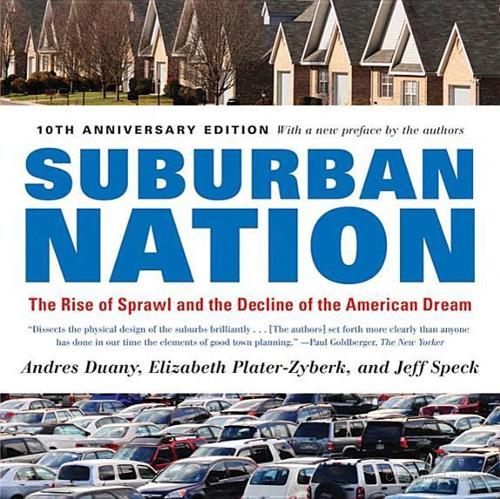
Suburban Nation
by
Andres Duany
,
Elizabeth Plater-Zyberk
and
Jeff Speck
Published 14 Sep 2010
Census Bureau’s 1997 report on Geographical Mobility. 2 Edward Blakely and Mary Gail Snyder, Fortress America, 24. 3 Ibid., 7. 4 Peter Calthorpe, The Next American Metropolis, 19. 4. THE PHYSICAL CREATION OF SOCIETY 1 “Parking Lot Pique,” A26. 2 Jonathan Franzen, “First City,” 91. 3 Jonathan Rose, “Violence, Materialism, and Ritual,” 145. 4 Le Corbusier, The City of Tomorrow and Its Planning, 129. 5 Jane Jacobs, The Death and Life of Great American Cities, 129. 5. THE AMERICAN TRANSPORTATION MESS 1 Jane Jacobs, The Death and Life of Great American Cities, 183. 2 Donald D.T. Chen, “If You Build It, They Will Come,” 4. 3 Ibid., 6. 4 Stanley Hart and Alvin Spivak, The Elephant in the Bedroom, 122. 5 Jane Holtz Kay, Asphalt Nation, 129. 6 Hart and Spivak, The Elephant in the Bedroom, 111; James Howard Kunstler, Home from Nowhere, 67, 99. 7 Hart and Spivak, The Elephant in the Bedroom, 166. 6.
…
With new towns to design that could outlast centuries, why spend an inordinate number of hours on a text that might have a shelf life of only a few years? I was aware of the tension between a book focused on a present problem and one of lasting relevance, and I argued strongly that our book should be the latter. In this regard, Jane Jacobs’s half-century-old The Death and Life of Great American Cities was my model—a difficult one to live up to, granted, but the pursuit of unattainable ideals is stimulating. And so I undertook the editing with an eye to issues that were of the more transcendental sort. To this end, the grand subject of urbanism certainly provided a good foundation.
…
This would be an important first step toward creating public spaces worthy of habitation. 3 THE HOUSE THAT SPRAWL BUILT THE ODDITY OF AMERICAN HOUSING; PRIVATE REALM VERSUS PUBLIC REALM; THE SEGREGATION OF SOCIETY BY INCOME; TWO ILLEGAL TYPES OF AFFORDABLE HOUSING; TWO FORGOTTEN RULES OF AFFORDABLE HOUSING; THE MIDDLE-CLASS HOUSING CRISIS Does anyone suppose that, in real life, answers to any of the great questions that worry us today are going to come out of homogeneous settlements? —JANE JACOBS, THE DEATH AND LIFE OF GREAT AMERICAN CITIES (1961) THE ODDITY OF AMERICAN HOUSING Sprawl is made up mostly of housing. Its ubiquity alone makes it an important subject to study, but there are other reasons to consider the way America provides housing. While the current suburban model may seem natural enough to most Americans, it appears quite odd when viewed in a global context.

Scale: The Universal Laws of Growth, Innovation, Sustainability, and the Pace of Life in Organisms, Cities, Economies, and Companies
by
Geoffrey West
Published 15 May 2017
The movement advocated a return to diverse, mixed-use neighborhoods architecturally as well as socially and commercially, with an emphasis on community structure through designs that enhanced pedestrian use and public transportation. Much of the thinking was inspired by the critical writings of the great urbanists Lewis Mumford and Jane Jacobs, who had reminded us that cities are people and not just infrastructure in the service of the automobile and corporate concrete-and-steel high-rises. Jane Jacobs gained her fame and notoriety during the 1950s and ’60s battling plans to run a four-lane limited-access highway through Greenwich Village in New York City, where she then lived. This was the height of the period of “urban renewal” and “slum clearance” in which massive, unattractive high-rise public housing projects were erected along with major four-lane highways running through downtown city areas with little regard for the urban fabric or the human scale.
…
First, and the most obvious, is that working in an innovative research environment that allows and even encourages freedom of thought and movement beats laboring in the confines of a brewery mindlessly feeding a machine with beer bottles. The second was that Jane Jacobs, who I suspect had never actually been to a garden city despite her damning comments about them, was right. It was many years before I came to know who Jane Jacobs was, but I quickly came to see that, compared with living in a somewhat run-down Victorian row house in lower-middle-class northeast London, Stevenage was like living in a fancy country resort. And that was its problem.
…
Which I translate to mean: cities are emergent complex adaptive social network systems resulting from the continuous interactions among their inhabitants, enhanced and facilitated by the feedback mechanisms provided by urban life. 2. ST. JANE AND THE DRAGONS No one is more identified with viewing cities through the collective lives of their citizens than the famous urban writer-theorist Jane Jacobs. Her defining book, The Death and Life of Great American Cities, had an enormous influence across the globe on how we think about cities and how we approach “urban planning.”3 It’s required reading for anyone interested in cities whether a student, a professional, or just an intellectually curious citizen.
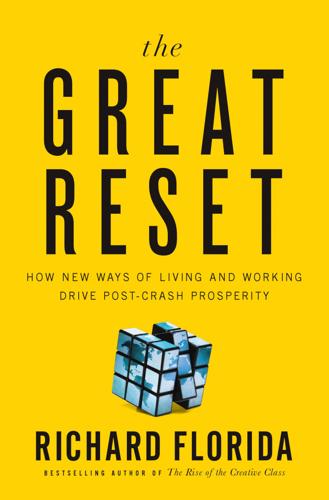
The Great Reset: How the Post-Crash Economy Will Change the Way We Live and Work
by
Richard Florida
Published 22 Apr 2010
By this measure, New York is more of a mecca for fashion designers, musicians, film directors, artists, and, yes, psychiatrists than it is for financial professionals. New York’s continued success—its uncanny knack for renewing itself again and again—is based on the diversity of its industries and its ability to attract the best and brightest across a wide range of fields. Writing in the 1960s and 1970s, the great urbanist Jane Jacobs was among the first to identify cities’ diverse economic and social structures as the true engines of growth.12 More than two hundred years ago, the great moral philosopher and economist Adam Smith showed how the organization of tasks and the fine-grained division of labor in his now-famous pin factory powered economic efficiency and so undergirded a healthy capitalist economy.
…
Non-Japanese-looking people are so uncommon as to seem out of place when seen on the street or in the subway. Just 1 percent of Japan’s entire workforce is made up of foreign workers (and that includes illegal as well as legal workers), the lowest rate of any of the advanced OECD countries.11 As Jane Jacobs wrote in The Economy of Cities, “[t]he diversity, of whatever kind, that is generated by cities rests on the fact that in cities so many people are so close together, and among them contain so many different tastes, skills, needs, supplies, and bees in their bonnets.” It is difficult to envision such a cacophony of voices and needs among the office towers and shopping districts of Tokyo and Singapore—at least Tokyo and Singapore as we know them now.
…
He talked about how efforts to support local entrepreneurship, build and nurture local clusters, develop arts and cultural industries, support local festivals and tourism, attract and retain people—efforts that he and his peers would have sneered at a decade or two ago—have become the core stuff of economic development. When taken together, seemingly smaller initiatives and efforts can and do add up in ways that confer real benefits to communities. These are the kinds of initiatives that Jane Jacobs and others have advocated as plain old good urbanism. And as chapter 21 will show, one of the most effective things the federal government can do to help revitalize older Rust Belt cities and regions is to invest in a high-speed rail network that would better connect them to one another and to other, more thriving economic hubs, shrinking the distance between them and building economic size and scale required to compete more effectively.

The New Urban Crisis: How Our Cities Are Increasing Inequality, Deepening Segregation, and Failing the Middle Class?and What We Can Do About It
by
Richard Florida
Published 9 May 2016
,” New York Times, January 3, 2015, www.nytimes.com/2015/01/04/opinion/sunday/is-life-better-in-americas-red-states.html. 8. Tyler Cowen, “Market Urbanism and Tax Incidence,” Marginal Revolution, April 19, 2016, http://marginalrevolution.com/marginalrevolution/2016/04/market-urbanism-and-tax-incidence.html. 9. As quoted in Stephen Wickens, “Jane Jacobs: Honoured in the Breach,” Globe and Mail, May 6, 2011, www.theglobeandmail.com/arts/jane-jacobs-honoured-in-the-breach/article597904. 10. Henry George, Progress and Poverty (New York: Robert Schalkenbach Foundation, 1997 [1879]). For more on George, see Edward T. O’Donnell, Henry George and the Crisis of Inequality (New York: Columbia University Press, 2015); “Why Henry George Had a Point,” The Economist, April 1, 2015, www.economist.com/blogs/freeexchange/2015/04/land-value-tax. 11.
…
Urbanism for All Acknowledgments About the Author More Advance Praise for The New Urban Crisis Appendix Notes Index For Mila Any city, however small, is in fact divided into two, one the city of the poor, the other of the rich. —PLATO, THE REPUBLIC Cities have the capability of providing something for everybody, only because, and only when, they are created by everybody. —JANE JACOBS, THE DEATH AND LIFE OF GREAT AMERICAN CITIES PREFACE I was born in Newark, New Jersey, in 1957, back when it was a thriving city, bustling with iconic department stores, morning and evening newspapers, libraries and museums, a busy downtown, and a large middle class. My parents both came of age in the city’s Italian district, and they still lived there when I was born, in an apartment near the city’s verdant Branch Brook Park.
…
Paul Krugman won his Nobel Prize in part for his insights into the ways that clusters of firms shape our economic geography and power economic growth. Big, populous cities develop thriving industry clusters, such as finance in New York and London, motion pictures in LA, fashion in Milan and Paris, and technology in San Jose. But second, and perhaps even more importantly, skilled and ambitious people cluster in cities. Jane Jacobs originally showed how the clustering of diverse groups of people and skills power urban economies. The Nobel Prize–winning economist Robert Lucas formalized her insights about talent clustering into a theory of economic growth based on what he called human capital externalities. Superstar cities push together talented people from all corners of the world across lines of ethnicity, race, national origin, and sexual orientation.

The Human City: Urbanism for the Rest of Us
by
Joel Kotkin
Published 11 Apr 2016
As Gregg Easterbrook, contributing editor of the Atlantic and the Washington Monthly, asks, “Sprawl is caused by affluence and population growth, and which of these, exactly, do we propose to inhibit?”3 Many voices influenced this book. These include the writings of Fernand Braudel, Lewis Mumford, Frank Lloyd Wright, Peter Hall, H. G. Wells, Herbert Gans, and, although I differed from her on many ideas, Jane Jacobs. These figures from the past informed my reporting on the present; their focus on how people actually live, and what they desire, gave me necessary inspiration. No field of study—technical or in the humanities—thrives when only one side or perspective is allowed free reign and granted a dispensation from criticism.
…
In some parts of the world, notably western Europe, eastern Asia, and even parts of North America, low birth rates are threatening the fiscal health of governments, the future of the workforce, and the consumer base.58 In many cases, as is already evident in Europe, the choice is increasingly to either accept large numbers of immigrants or face gradual demographic decline. Here, the question of what families need and prefer should be central. In her heyday in the 1960s, Jane Jacobs asserted that “suburbs must be a difficult place to raise children.”59 Jacobs’s ideal city, dense but human-scaled, indeed was once a congenial place for families. But a quick look at demographic changes in places like Greenwich Village shows how far we have traveled from Jacobs’s ideal city. The area today—which my own grandmother knew as a child—now largely consists of students, wealthy people, and pensioners.
…
The history of successful cities reveals that, although their functions change, cities have to achieve two things: a better way of life for their residents and a degree of transcendence critical to their identities. In addressing the wider issues faced by urban residents, we need to also draw on older urban traditions that have emerged over the last three millennia. Jane Jacobs’s idealistic notions of cities, however outdated, contain meaningful insights—about the importance of diverse, child-friendly, dense city neighborhoods, for example.4 By exploring the deeper veins of urbanity—spiritual, political, economic—we can begin to hone our efforts to improve and develop our cities so that they are more pleasant, and particularly more accommodating, for people as they go through the various stages of life.
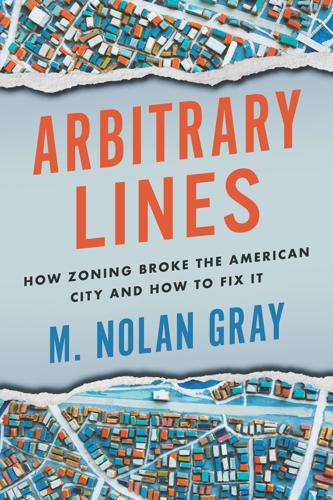
Arbitrary Lines: How Zoning Broke the American City and How to Fix It
by
M. Nolan Gray
Published 20 Jun 2022
To their great credit, the current generation of Houston planners are busy undertaking many of the ideas discussed in the next chapter: the city is making major investments in transit, has adopted ambitious bicycle and open space plans, and is working to establish what could soon be the largest land bank in the nation. CHAPTER 10: PLANNING AFTER ZONING 1. Thomas Campanella, “Jane Jacobs and the Death and Life of American Planning,” Places Journal (April 2011), https://placesjournal.org/article/jane-jacobs-and-the-death-and-life-of-american-planning/?cn-reloaded=1. 2. The author speaks from experience. 3. Hiral Jariwala, “Noise Pollution & Human Health: A Review,” conference paper, March 2017, https://www.researchgate.net/profile/Hiral-Jariwala/publication/319329633_Noise_Pollution_Human_Health_A_Review/links/59a54434a6fdcc773a3b1c49/Noise-Pollution-Human-Health-A-Review.pdf. 4.
…
Entrepreneurs require what only a big city can offer: a large potential nearby market, a large labor market to provide the specialized labor they may require, and the ecosystem of business services that young firms depend on. Add in the special sauce of an entrepreneurial culture, and cities transform into engines of growth. All of this innovation gradually transforms into what urban theorist Jane Jacobs calls “new work,” remaking the larger economies that surround cities.14 All of this innovation makes us collectively wealthier, even if you don’t happen to work in an especially innovative sector. Within cities, each new job in a high-tech industry creates five more jobs in various local service sectors, like education, dining, health care, or entertainment.15 Economists call this a “multiplier” effect, in that the wealth of innovative sectors multiplies into many more jobs, creating opportunity for folks at all levels of the economy.
…
None of this is to say that land markets resolve all possible conflicts, or that Houston has reached land-use planning nirvana. No city clears that bar—density quirks and land conflicts will always slip through, no matter how aggressively markets or zoning might militate against them. Yet as astute observers of urban life as far back as Jane Jacobs have observed, cities are host to spontaneous orders that—to a much greater degree than we might at first appreciate—lend cities a basic degree of organization.14 And how could they not? Until one hundred years ago, this was how all cities worked. Land-Use Regulation after Zoning Houston may be free of zoning, but it is hardly free of rules—and not just of the amorphous variety imposed by land markets.
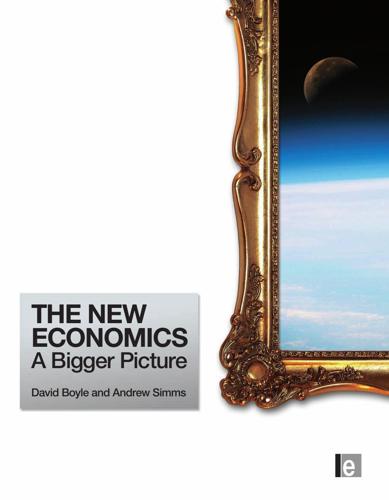
The New Economics: A Bigger Picture
by
David Boyle
and
Andrew Simms
Published 14 Jun 2009
‘Any national policy that makes enough national spending available to enable Liverpool to generate healthy levels of economic activity there, is bound to create inflationary conditions in other parts of the country,’ wrote the economist and former civil servant James Robertson.13 That situation is probably even more pronounced under the euro. 56 THE NEW ECONOMICS The problem with big currencies is that they undermine the kind of information small currencies can provide to cities and regions. This was the argument that the radical economist Jane Jacobs put forward in 1986: Imagine a group of people who are all properly equipped with diaphragms and lungs, but share only one single brainstem breathing centre. In this goofy arrangement, through breathing they would receive consolidated feedback on the carbon dioxide level of the whole group, without discriminating among the individuals producing it...
…
63 9 Tax Justice Network (2005) The Price of Offshore, London. 10 Edgar Cahn (2000) No More Throwaway People: The Co-production Imperative, Essential Books, Washington DC. 11 Robert Skidelsky (1992) John Maynard Keynes Vol 2: The Economist as Saviour, Picador, London. 12 David Boyle (2003) Beyond Yes and No: A Multi-currency Alternative to EMU, New Economics Foundation, London. 13 James Robertson (2002) ‘The euro will prompt further monetary reform’, European Business Review, Vol 14, No 1. 14 Jane Jacobs (1986) Cities and the Wealth of Nations, Random House, New York. 15 Bernard Lietaer (2000) The Future of Money, Random Century, London. 16 Richard Douthwaite (1999) The Ecology of Money, Schumacher Briefings Number 4, Green Books, Totnes. 17 Tom Greco (1985) New Money for Healthy Communities, Greco, Tucson. 18 See, for example, David Boyle (ed) (2002) The Money Changers: Currency Reform from Aristotle to e-cash, Earthscan, London. 19 New York Times (1921) 4 December. 20 Stamp Out Poverty (2005) Submission to the Intergovernmental Working Group, London. 21 Joseph Stiglitz (2002) Globalisation and its Discontents, Norton, New York. 5 Markets: Why has London Traffic Always Travelled at 12mph?
…
So much for the efficiency of modern international trade built on the old economic theory of countries enjoying comparative advantages. We have enough chocolate waffles in the UK, but we have to take the trouble of shipping and trucking ours somewhere else and then bringing containers of the stuff back again from somewhere else. 110 THE NEW ECONOMICS The visionary new economist Jane Jacobs demonstrated how cities have traditionally developed economically by replacing imports and producing their own local replacements.2 Modern laws about intellectual property (IP) undermine this process, but this is how cities and nations have dragged themselves up through the centuries. Even so, IP regulations are not enough to explain entirely why we are dragging in imports at such a rate when we produce the same stuff ourselves.

You Are Here: Why We Can Find Our Way to the Moon, but Get Lost in the Mall
by
Colin Ellard
Published 6 Jul 2009
In the 1920s, when his ideas were incubating, the automobile was at the very beginning of its ascendancy, and in it Le Corbusier saw the solution to one of the key problems in urban development—the movement of people. In order for a large city to have a high level of dynamic integration, for all of its citizenry to have access to as many of the city’s offerings as possible, there must be a way for large numbers of people to get from place to place in a hurry. The problem was, as urban visionary Jane Jacobs first pointed out, that to use the automobile to effect such movement, Le Corbusier’s numbers simply didn’t add up.3 His vast green pastures lying beneath skyscrapers would need to have been endless gray plains of parking lots. Le Corbusier proposed in all seriousness to the administrative officials in Paris that they raze large neighborhoods of Paris to erect his sky-kissing vision of the future.
…
It is one thing to understand how the design of a dwelling can support hierarchies or gender relationships among kin, but another thing entirely to see how city design influences interactions among thousands or even millions of people who may cross paths every day or only once in a lifetime. Nobody understood the importance of this difference better than Jane Jacobs, the urban visionary, activist, and writer who spent much of her life fighting modernist forces poised to reshape New York City and used her later years to exert similar powerful influences on Toronto, her adopted home. In her trailblazing book The Death and Life of Great American Cities—still current more than forty years after its initial publication—Jacobs offers a scathing indictment of the influence of modernist principles on urban design, but the more enduring contribution of this book is the collection of worldly wise prescriptions for designing livable, safe, and vibrant neighborhoods.
…
Others were always teeming with business. Why? Whyte’s group tackled the question with characteristic straightforwardness. They mounted high cameras to record movements of people, and they waded into the crowds to ask questions. Why had people come? Where had they come from? Why had they chosen this particular place? Like Jane Jacobs, his finest and most successful student, Whyte learned that life attracts life. In spite of what many builders had believed, people do not look for out-of-the-way, secluded spots in cities. More than anything else, we are fascinated by each other. We want to be as close to the fray as possible.
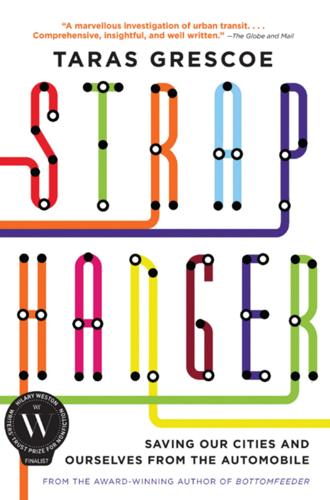
Straphanger
by
Taras Grescoe
Published 8 Sep 2011
When he tried to have part of Greenwich Village declared a blighted slum, protests by residents reinforced his new image as a destroyer of communities. “There is nobody against this,” he was heard to splutter when his plan to ram a four-lane roadway through Washington Square Park was foiled. “Nobody, nobody, nobody but a bunch of, a bunch of mothers.” One of those mothers, of course, was the great urban theorist Jane Jacobs. From her home on Hudson Street, the author and activist orchestrated theatrical opposition to Moses’s projects, burning cars in effigy in Washington Square, and tossing the stenographer’s paper around the stage of a public hearing to protest the building of the Lower Manhattan Expressway. In The Death and Life of Great American Cities, she pinpointed the appeal of such neighborhoods as Boston’s North End and her own Greenwich Village, arguing that it was the disorderly vestiges of nineteenth-century street life—shops and residences cheek by jowl, with the bartender sweeping his sidewalk keeping an eye on the neighbors’ kids playing hopscotch—that made them safe and viable urban spaces.
…
Even when violent crime peaked in 1981, there were only 17 murders in the subway, versus 1,832 on the streets; more people died that year from vehicular homicides—being run over by cars—than underground. The subway has changed, but so has New York. The new Greenwich Villages are a train ride from Manhattan, in Astoria, Corona, Boerum Hill, Sunset Park, Carroll Gardens, and Ridgewood, walkable old neighborhoods, now being colonized by families, that Jane Jacobs would have appreciated. Tens of thousands of condos built at the height of the real estate boom are being turned into affordable rental housing. These days, New York resembles nothing so much as New York of the late ‘40s, when municipal population and vitality were at their peak. With a twist: 40 percent of the population is now foreign-born, and the pace of immigration is eclipsing the Ellis Island days.
…
Calvin Trillin, who has been living in the West Village since 1961, could probably be numbered among the first wave of urban pioneers—or gentrifiers, depending on how you look at things. The longtime New Yorker writer’s Federal-style townhouse, on a dog-legged street west of Seventh Avenue, was built in the 1830s. Trillin used to rent; now he owns. (I didn’t dare ask how much his place was worth, but a couple of blocks away, Jane Jacobs’s modest Hudson Street home, declared “blight” by Moses and company fifty years ago, recently sold for $3 million.) Pulling down a folding staircase from the ceiling, Trillin invited me to climb to his roof, where we sat beneath a sycamore tree. You might assume the author of Tepper Isn’t Going Out, a novel about a New Yorker who becomes a kind of grumpy guru of Gotham for camping out in his Chevrolet, would be a die-hard driver.
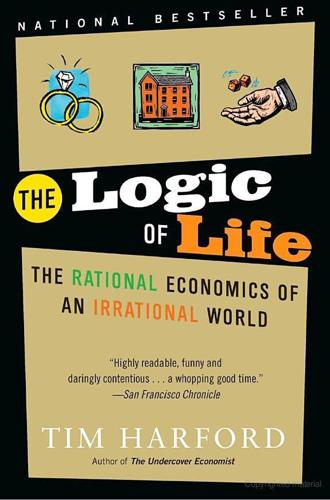
The Logic of Life: The Rational Economics of an Irrational World
by
Tim Harford
Published 1 Jan 2008
Department of Justice press release, February 21, 2006, www.usdoj.gov/usao/dc/Press_Releases/2006_Archives/Feb_2006/06060.html, summarizes the evidence, which Reginald Jones accepted, entering an “Alford” plea, which asserted his innocence but accepted that enough evidence existed to convict him. Newspaper accounts include “Horrific Attack, Heroic Rescue,” The Washington Post, July 7, 2005, and “Blood, Sweat, and Fear,” FT Magazine, August 27, 2005. I was one of the witnesses to the attack. Jane Jacobs: Jane Jacobs, The Death and Life of Great American Cities 1961; rept. New York: Vintage 1992). Two economists: Edward Glaeser and Bruce Sacerdote, “The Social Consequences of Housing,” NBER Working Paper 8034, December 2000, papers.nber.org/papers/W8034. The British ghettos are up: U.K. white population from the Office for National Statistics, www.statistics.gov.uk/cci/nugget.asp?
…
She owes her life to the neighborhood in which she was attacked and to the protection it gave her. Most city dwellers are not so unlucky as to attract the attention of maniacs, but we still rely on the city streets for protection. Usually we do not need passersby to pull muggers off us or apprehend pickpockets, because rational muggers and pickpockets do not act when there are passersby. Jane Jacobs—an unconventional observer of economies, especially city economies—famously argued that successful neighborhoods provide “eyes on the street” to protect us from crime, just as they protected Sarah but could not protect Margaret. It is yet another example of a positive externality: When I go to the park, I not only make it more interesting for other people, I also make it feel safer.
…
Each additional floor in your building increases your risk of being robbed in the street or having your car stolen by two and a half percentage points—if your building has twelve stories rather than two, your chance of being mugged rises by a quarter. The higher the building, the more people are lifted away from the stoop and the street. Since Glaeser and Sacerdote adjusted for poverty, public housing, and many other factors, that is a big effect coming from mere steel and concrete. Jane Jacobs was right: The architecture of city neighborhoods isn’t just about what looks nice. It’s about whether the neighborhoods themselves live or die. And the pernicious effect of the tower blocks falls unevenly. In the United Kingdom, for example, whose population is 92 percent white, racial segregation is vertical: Whites are in the minority of those who live above the fifth floor of a tower block.

Data Action: Using Data for Public Good
by
Sarah Williams
Published 14 Sep 2020
See also: Miami City Planning and Zoning Board, “The Miami Long Range Plan”; Wilbur Smith and Associates, “A Major Highway Plan for Metropolitan Dade County, Florida”; Smith and Associates, “Alternates for Expressways.” 67 Mohl, “Stop the Road.” 68 Peter Hall, “The Turbulent Eighth Decade: Challenges to American City Planning,” Journal of the American Planning Association 55, no. 3 (September 30, 1989): 275–282, https://doi.org/10.1080/01944368908975415. 69 Roberta Brandes Gratz, The Battle for Gotham: New York in the Shadow of Robert Moses and Jane Jacobs (New York: Nation Books, 2010). 70 Gratz, The Battle for Gotham; Jane Jacobs, The Death and Life of Great American Cities (New York: Random House, 1961). 71 Sherry Arnstein, “A Ladder of Citizen Participation,” Journal of the American Institute of Planners 35. no. 4 (1969): 216–224. 72 John Forester, Planning in the Face of Power (Oakland: University of California Press, 1988). 73 James J.
…
Source: Margare… 1.21 City of New York Board of Estimate and Apportionment, Use District Map, 19… 1.22 This 1934 map, based on the 1930 census, shows both the distribution of th… 1.23 Bartholomew classified many African American neighborhoods in St. Louis as… 1.24 Home Owners’ Loan Corporation maps of Chicago, showing the inner-city Afri… 1.25 This street scene of Overtown shows African American shoppers outside the … 1.26 Massive highway interchange clears huge section of Overtown in 1967. Sourc… 1.27 “Mrs. Jane Jacobs, Chairman of the Comm. to Save the West Village, holds u… 1.28 Robert Moses, Park Commissioner of New York City, with a 1939 model of the… Chapter 2 2.1 This photomontage shows AP reporters as they were measuring particulate mat… 2.2 Tiananmen Square at noon, just one month before the official start day of t… 2.3 This map shows data traces measured by the CO sensor of an AP reporter near… 2.4 The location of daily air quality measurements AP reporters took on the Oly… 2.5 Interactive graphic of particulate matter on the Olympic Green made availab… 2.6 The graph of raw data from the particulate matter sensor used on the Olympi… 2.7 Carbon monoxide measurements along the Olympic marathon route before and af… 2.8 This visualization presented at New York University's Global Design Exposit… 2.9 Image of the balloon mapping kit one can receive in the mail from Public La… 2.10 Participants engage in a balloon-mapping project.
…
Source: “Miami, FL: Overtown,” January 3, 2019, http://miamiplanning.weebly.com/freeway-history–overtown.html. Qualitative Analytics: The Call of Social Reformers The failures of urban renewal policies, which often exacerbated problems in urban areas, caused some urban activists to fight the top-down planning methods that were being employed by technocratic planners. Jane Jacobs, an influential civic activist who became well known for her work in New York City in the 1960s, along with other civic actors such as Herbert J. Gans, led this charge.68 Jacobs, who lived in New York's Greenwich Village, believed human-centered narratives were essential for understanding the economic and social needs of cities.69 Jacobs fought against using data-driven policies as evidence for building highways because the results were so devastating to entire neighborhoods—and saw the removal of these neighborhoods as a complete failure to acknowledge the importance that their residents and networks played in the larger economy of the city.70 Jacobs believed the public's voice should speak louder than data in the decision-making process.
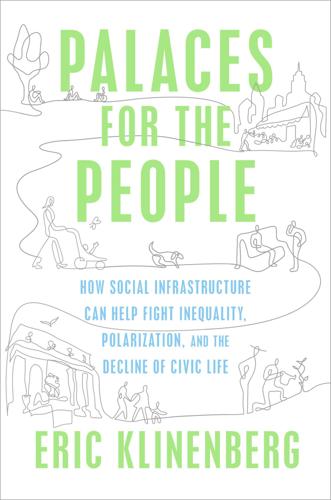
Palaces for the People: How Social Infrastructure Can Help Fight Inequality, Polarization, and the Decline of Civic Life
by
Eric Klinenberg
Published 10 Sep 2018
Commercial establishments can also be important parts of the social infrastructure, particularly when they operate as what the sociologist Ray Oldenburg called “third spaces,” places (like cafés, diners, barbershops, and bookstores) where people are welcome to congregate and linger regardless of what they’ve purchased. Entrepreneurs typically start these kinds of businesses because they want to generate income. But in the process, as close observers of the city such as Jane Jacobs and the Yale ethnographer Elijah Anderson have discovered, they help produce the material foundations for social life. What doesn’t qualify as social infrastructure? Transit networks determine where we live, work, and play, and how long it takes to move between places. But whether they’re social infrastructure depends on how they’re organized, since a system designed for private vehicles will likely keep people separate as they travel (and consume enormous amounts of energy), whereas public systems that use buses and trains can enhance civic life.
…
The designer, Doepel Strijkers, engineered a system that uses industrial waste to heat buildings along rails, dramatically reducing their carbon emissions and making the air that pedestrians breathe a little cleaner. Across the planet, projects like these evince the value of social infrastructure, and the rising demand for it as well. Not long ago, Jane Jacobs and other prominent advocates for improving urban life argued that entrepreneurs, not governments, should build the spaces that support our social interactions. But places like the High Line have not emerged from the free market. They required thoughtful design, careful planning, and, crucially, enlightened leadership from the public sector.
…
“Across the street from Pruitt-Igoe was an older, smaller, row-house complex, Carr Square Village, occupied by an identical population,” he writes. “It had remained fully occupied and trouble-free throughout the construction, occupancy, and decline of Pruitt-Igoe.” People made good use of their semiprivate gardens and public areas, which meant that there were plenty of what Jane Jacobs, whose ideas greatly influenced Newman, called informal surveillance through “eyes on street.” Families felt safe and relatively comfortable, and with good reason: the crime level was three times lower than it was in Pruitt-Igoe. Newman was fascinated. “With social variables constant in the two developments,” he explains, the underlying reasons “that enabled one to survive while the other was destroyed” had to involve “physical differences,” not the characteristics of the residents.

The Weightless World: Strategies for Managing the Digital Economy
by
Diane Coyle
Published 29 Oct 1998
Paul Hirst & Grahame Thompson (1996) Globalisation in Question, Polity Press, Cambridge. Mathew Horsman & Andrew Marshall (1994) After the Nation State, HarperCollins, London. Peter Huber (2 December 1996) ‘Cyber Power’, Forbes, New York. Mike Hudson (1995) Managing Without Profit, Penguin, London. Jane Jacobs (1984) Cities and the Wealth of Nations, Random House/Viking, London. Jane Jacobs (1961) The Life and Death of Great American Cities, Jonathan Cape, London. Thierry Jeantet (1986) La modernisation de la France par l’Economie Sociale. Peter Kenen, ed. (1994) Managing the World Economy, Institute for International Economics, Washington, DC.
…
In short, they were jobs done best in dense urban areas.’ Whether for reasons of weightlessness or the reverse, some cities at least will become important centres of economic power. Perhaps, as in mediaeval and The Weightless World 22 renaissance times, the city state will become the key political unit. This development was foreseen by Jane Jacobs in her wonderful book Cities and the Wealth of Nations. The assumption underlying conventional economic analysis, she argues, is that the national economy is the salient unit, an assumption dating from the mercantilists of the sixteenth and seventeenth centuries. Only Marxist economic theory has diverged successfully from this assumption.
…
Social lending has a longer history and takes place on a much bigger scale on the Continent. For example, France has the Caisses de Credit Municipal, serving a million lowincome customers, and Germany has a big credit union movement dating back to the mid-nineteenth century. Sometimes the process is more informal. Jane Jacobs gives the example of the redevelopment of Boston’s North End in the 1950s — it has since become an expensive and chi-chi neighbourhood. But after World War II it was a squalid, crowded immigrant area with a very dilapidated housing stock. Banks would not lend for redevelopment in the area. It was a no-hope project, a bad credit risk, in their eyes.
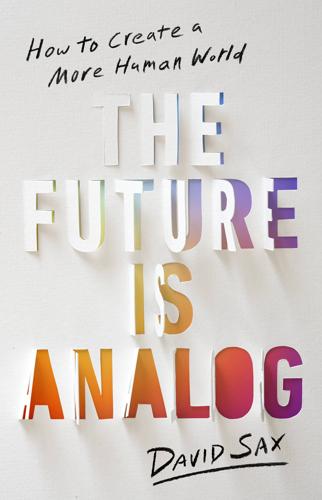
The Future Is Analog: How to Create a More Human World
by
David Sax
Published 15 Jan 2022
Give me a sidewalk that’s wide enough to accommodate all the human activities Jane Jacobs identified as the keys to establishing “the web of public identity and trust” at the heart of a vibrant city: kids playing, friends having a conversation, business owners griping, seniors hanging out, restaurant patrons sitting at tables, bike parking, dog walking, and so on. Think of the great cities you have lived in and visited. Think of New York and Chicago, Hong Kong and Hanoi, Mexico and Cairo and Durban. What do you remember? Parks and architecture, people and markets, walking on bustling streets in magical neighborhoods like Jane Jacobs’s West Village. Digital technology doesn’t make a city great or memorable.
…
“Sometimes the absence of something makes people realize the value of it,” Debow said. “When you walk down the street you realize the city and neighborhood are made better by the value of humans connecting with you. A store is not just a distribution point to pick something up. The story of humans and commerce is one of the neighborhood—all that good Sesame Street and Jane Jacobs stuff—and when the absence happened, we felt like we lost something.” Debow lives less than two miles from my house, and as we talked about those dark days, we reminisced about the local stores that didn’t make it, the restaurants that remained on the endangered list, and, most importantly, what it felt like to walk down our city’s deserted streets and stare down a dystopian future filled with empty windows and boarded-up shops.
…
They turn them from places built to facilitate human interaction into ones that are openly hostile to our bodies. The competing debate between the future city built for cars and one built for humans is captured in the famous rivalry between New York’s self-appointed “master builder” Robert Moses, who commanded a sweeping array of city and state agencies responsible for urban infrastructure, and Jane Jacobs, an architecture critic and writer, who lived in New York’s Greenwich Village. Moses firmly staked the city’s future on the car, and for several crucial decades, he rebuilt New York around this invention, ramming through highways and avenues, bridges and tunnels to bring workers into the city from rapidly expanding suburbs, then take them back home.

The Coming of Neo-Feudalism: A Warning to the Global Middle Class
by
Joel Kotkin
Published 11 May 2020
For example, the Atlantic found less tolerance for differing opinions in the Boston area, and other places with a high proportion of university graduates, than in less-educated regions.42 An Age of “Mass Amnesia” Universities can get away with obscurantism and enforced ideological conformism because of their enormous power over labor markets. They are no longer primarily about learning, as Jane Jacobs noted, but about providing the credential needed for a high-paying job.43 One recent study of American college students found that more than one-third “did not demonstrate any significant improvement in learning” in four years of college.44 Employers report that recent graduates are short on critical thinking skills.45 Equally worrying is that students in the West are not acquiring familiarity with their own cultural heritage.
…
PART VI The New Geography of Feudalism A metropolitan economy, if it is working well, is constantly transforming many poor people into middle-class people, many illiterates into skilled (or even educated) people, many greenhorns into competent citizens…. Cities don’t lure the middle class. They create it. —Jane Jacobs, The Death and Life of Great American Cities CHAPTER 16 The New Gated City Few sights are more thrillingly suggestive of artful modernity than the Chicago skyline. The city center along Lake Michigan is one of the most vibrant business districts in the nation, boasting numerous corporate headquarters and drawing affluent, highly skilled people from across America’s vast Midwest.1 In 2017, Chicago ranked second only to the tech hub Seattle among major American cities for the number of active construction cranes.2 Yet just a short drive away from the cranes and gleaming towers is a landscape of utter devastation.
…
Los Angeles, for example, once had an abundance of middle-class housing, but some parts of the city, such as around Central Los Angeles, have seen a major drop in homeownership rates. Middle-class and working-class families—many of them minorities—have been displaced by hipsters and often pushed to the far periphery.41 Jane Jacobs spoke passionately about the solidity and “staying power” of New York’s neighborhoods.42 But the middle-class families that provide the social ballast for such neighborhoods are disappearing in places like Manhattan, West Los Angeles, San Francisco, Central London, and Paris. This is not simply a result of market forces, but of planning by urban political and economic leaders.
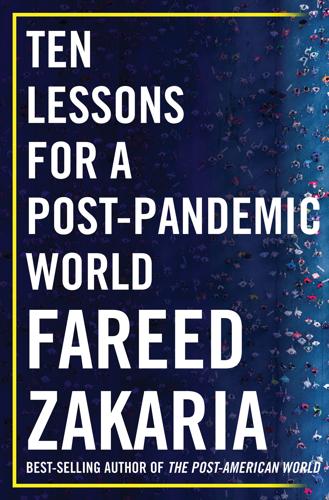
Ten Lessons for a Post-Pandemic World
by
Fareed Zakaria
Published 5 Oct 2020
See map in the digital version: https://www.nytimes.com/2016/04/17/opinion/sunday/a-new-map-for-america.html. 140 pushed ahead with the agreement: Ivo Daalder, “Why Cities Need Their Own Foreign Policies,” Politico, May 6, 2017. 141 stay in Columbus: Alina Dizik, “New Residents Are Spending Big in Columbus,” Wall Street Journal, November 7, 2019. 141 “Death and Life of Great Cities”: Drawn from the title of Jane Jacobs’s masterwork, The Death and Life of Great American Cities (New York: Random House, 1961). 141 “This City now doth”: William Wordsworth, “Composed Upon Westminster Bridge, September 3, 1802.” 142 “Here is New York”: Elwyn Brooks White, Here Is New York (1949), 21. 142 “Genuine, rich diversity”: Jane Jacobs, “Can Big Plans Solve the Problem of Renewal?,” in Vital Little Plans: The Short Works of Jane Jacobs, edited by Samuel Zipp and Nathan Storring (New York: Random House, 2016). 143 “each piece of the mosaic”: Jane Jacobs, quoted in Jared Greed, “The Case for Diversity,” Dirt: Uniting the Built and Natural Environments, September 30, 2016, https://dirt.asla.org/2016/09/30/jane-jacobs-the-case-for-diversity/. 143 watercooler conversations: Tom Simonite, “Remote Work Has Its Perks, Until You Want a Promotion,” Wired, May 28, 2020. 144 “Men seldom moved their bodies”: E.
…
Nonetheless, for White, “The city is like poetry: it compresses all life, all races and breeds, into a small island and adds music and the accompaniment of internal engines. The island of Manhattan is without any doubt the greatest human concentrate on earth, the poem whose magic is comprehensible to millions of permanent residents but whose full meaning will always remain elusive.” That captures the essence of what the great urban theorist Jane Jacobs loved about cities—their diversity. It’s why she believed that the architecture of cities should grow organically in an unplanned, haphazard way. As she put it, “Genuine, rich diversity of the built environment is always the product of many, many different minds, and at its richest is also the product of different periods of time with their different aims and fashions.”
…
,” in Vital Little Plans: The Short Works of Jane Jacobs, edited by Samuel Zipp and Nathan Storring (New York: Random House, 2016). 143 “each piece of the mosaic”: Jane Jacobs, quoted in Jared Greed, “The Case for Diversity,” Dirt: Uniting the Built and Natural Environments, September 30, 2016, https://dirt.asla.org/2016/09/30/jane-jacobs-the-case-for-diversity/. 143 watercooler conversations: Tom Simonite, “Remote Work Has Its Perks, Until You Want a Promotion,” Wired, May 28, 2020. 144 “Men seldom moved their bodies”: E. M. Forster, “The Machine Stops,” Oxford and Cambridge Review (November 1909). Note: Forster’s original text has the archaic “Pekin” for “Peking” (i.e., Beijing). 145 “Only connect!”: E. M. Forster, Howards End (London: Edward Arnold, 1910). Lesson Seven: Inequality Will Get Worse 147 “death is democratic”: Adriana Gomez Licon, “Mexican Day of Dead ‘Skeleton Lady’ Spreads Look,” Associated Press, October 31, 2013. 147 La Catrina: Simon Ingram, “La Catrina: The Dark History of Day of the Dead’s Immortal Icon,” National Geographic, October 18, 2019. 147 The Skull of Morbid Cholera: José Guadalupe Posada, La calavera del cólera morbo (1910), accessed via Library of Congress, https://www.loc.gov/pictures/item/99615954/. 148 “a very big problem”: Richard Wike, “The Global Consensus: Inequality Is a Major Problem,” Pew Research, November 15, 2013, https://www.pewresearch.org/fact-tank/2013/11/15/the-global-consensus-inequality-is-a-major-problem/. 148 narrowing over the same period: Taking on Inequality: Poverty and Shared Prosperity 2016, The World Bank Group, 9, 81, https://openknowledge.worldbank.org/bitstream/handle/10986/25078/9781464809583.pdf. 149 forty-two saw rises: “Table 4.1: Trends in the Within-Country Gini Index, 1993–2013,” Taking on Inequality: Poverty and Shared Prosperity 2016, The World Bank Group, 86, https://openknowledge.worldbank.org/bitstream/handle/10986/25078/9781464809583.pdf. 149 two where it fell: Ibid, 88. 149 twelve of the sixteen: Ibid. 149 gap has widened dramatically: Facundo Alvaredo, Lucas Chancel, Thomas Piketty, Emmanuel Saez, and Gabriel Zucman, “World Inequality Report 2018,” 46, https://wir2018.wid.world/files/download/wir2018-full-report-english.pdf. 150 highest level since 1928: Markus P.
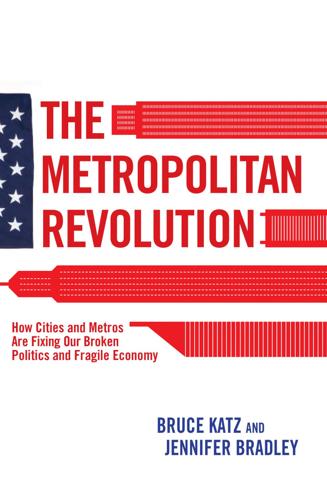
The Metropolitan Revolution: How Cities and Metros Are Fixing Our Broken Politics and Fragile Economy
by
Bruce Katz
and
Jennifer Bradley
Published 10 Jun 2013
The Future of the Metropolitan Revolution: Ushering In the Metro Age 6 7 8 9 The Rise of Innovation Districts 113 Toward a Global Network of Trading Cities 144 Metros as the New Sovereign 171 A Revolution Realized 192 Notes 209 Selected Bibliography 245 Index 251 v 00-2151-2 fm.indd 5 5/21/13 10:10 AM To the memory of my father, Alan Katz To Leon and Matthew Wieseltier 00-2151-2 fm.indd 6 5/21/13 10:10 AM F O RE W O RD H ow does one measure a city? By the buildings that fill its skyline? By the efficiency of its rapid transit? Or, perhaps, by what Jane Jacobs called the “sidewalk ballet” of a busy street? Certainly these are the memorable hallmarks of any modern city or metropolitan area. But a city’s true measure goes beyond human-made structures and lies deeper than daily routine. Rather, cities and metro areas are defined by the quality of the ideas they generate, the innovations they spur, and the opportunities they create for people living within and outside the city limits.
…
Detroiters like to point out that their city was the Silicon Valley of the early twentieth century; but at some point Detroit stopped making cutting-edge cars. Now the region is scrambling to deploy its deep reservoir of skilled people, resurrect its distant history of entrepreneurship, and revivify innovation. As Jane Jacobs puts it, “Innovating economies expand and develop. Economies that do not add new kinds of goods and services, but continue only to repeat old work, do not expand much nor do they, by definition, develop.”51 More specifically, if a metropolitan area starts to lose its export orientation and forgets about the need to make things or provide services that are competitive on a national or international scale, eventually even its local market will become stuck.52 The Applied Sciences campuses are, in essence, a major push for New York to create more things to sell to the rest of the country and the rest of the world.
…
We don’t share a past, we share a future.”69 05-2151-2 ch5.indd 109 5/20/13 6:52 PM 05-2151-2 ch5.indd 110 5/20/13 6:52 PM II THE FUTURE OF THE PA R T METROPOLITAN REVOLUTION Ushering in the Metro Age 06-2151-2 ch6.indd 111 5/20/13 6:53 PM 06-2151-2 ch6.indd 112 5/20/13 6:53 PM 6 TH E RI S E O F IN N O V AT I O N D I ST RI C T S People gathered in concentrations of city size and density can be considered a positive good . . . because they are the source of immense vitality, and because they do represent, in small geographic compass, a great and exuberant richness of differences and possibilities, many of these differences unique and unpredictable and all the more valuable because they are. —JANE JACOBS, The Death and Life of Great American Cities The American metropolitan revolution, although nascent and evolving, is already inventing new models of economic development (as seen in the Applied Sciences initiative), new approaches to social integration (Neighborhood Centers), and new levels of collaboration (as in Northeast Ohio and Denver).
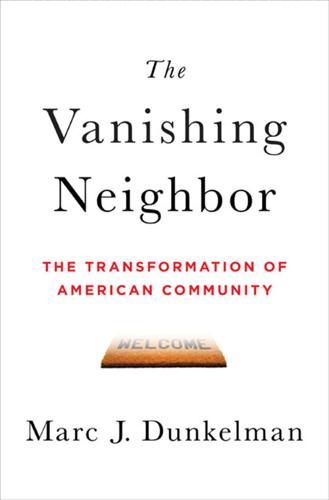
The Vanishing Neighbor: The Transformation of American Community
by
Marc J. Dunkelman
Published 3 Aug 2014
For the better part of the next several decades, right through the Great Depression, the Second World War, and the postwar era that raised Kitty Genovese, answering those questions became one of sociology’s most important projects. Then two things happened. First, in 1961, a transplant to New York City from Scranton, Pennsylvania, published arguably the most important twentieth-century treatise on American community. Jane Jacobs’s The Death and Life of American Cities offered a wholly new understanding of municipal success. Conventional wisdom argued that city problems were driven by the chaos of urban life; but Jacobs thought just the opposite. It wasn’t that cities alienated people from one another; quite the opposite, efforts to clean up the nation’s metropolises were sterilizing their streetscapes.
…
No matter whether in colonial villages, frontier towns, urban tenements, or, as Fischer noted, the distinct pockets of life that persevered even in the darkest days of American city life, the township remained the core building block of American community. It’s not that the disruptive elements of the nation’s past didn’t have dramatic effects. Undoubtedly, cities experienced growing pains around the turn of the twentieth century. But Jane Jacobs’s work illustrated clearly that the connections that represent the core ties of any township remained a central feature of successful twentieth-century American communities. Whether or not neighbors were socializing with more circumscribed groups of people—if the Italian immigrants largely kept to themselves, or the gay community cocooned in one part of a city—they were carrying on the tradition.
…
10 EXIT TOCQUEVILLE Let’s recall where we left off in our historical survey of American community. What had seemed imminent during the early years of the twentieth century—namely, that the massive migration from the wholesome countryside to the gritty metropolis would leave Americans isolated and depraved—had, just a few decades later, been proven wrong. As Jane Jacobs revealed—and many academics later came to acknowledge—many of the rhythms that had defined the Tocqevillian township had survived despite the big shift. Indeed, cities thrived after the Industrial Revolution in large part because the individual neighborhoods that subdivided urban America had embraced the same basic social architecture that had been present in America’s colonial villages and frontier towns.

The Warhol Economy
by
Elizabeth Currid-Halkett
Published 15 Jan 2020
I don’t know where one thanks their parents, but there’s no way this book would have been written without their emotional and shoe budget support. And that’s that. All of us, I suppose, have that person who has handed us a new kaleidoscope through which to view the world. For me, there are two: Richard Florida and Jane Jacobs. Richard taught me to love cities. Jacobs taught me how they work. Jacobs, who died in April 2006, understood the organic nature of urban life better than anyone. She defied her generation’s intellectual views on cities and challenged urban planners, sociologists, and economists to think about how cities really work.
…
While trade is still prominent in New York, it is now not just the physical exchange of goods but also that of ideas, professional services, and knowledge. Overall, New York City is successful due to its ability to capitalize upon its diverse economy and mix of industries, an observation that harkens back to the great urbanist Jane Jacobs’ acute observation that diverse economies are essential to perpetuate growth.50 New York’s gain in skilled, human capital–intensive industries in the 1970s could be initially attributed to the decline of manufacturing (i.e., as manufacturing declines as a percentage of the workforce, inherently skilled industry gains proportional representation).
…
As the seminal economist Alfred Marshall wrote, “So great are the advantages which people following the same skilled trade get from near neighborhood to one another. The mysteries of the trade become no mystery: but are as it were, in the air.”11 Saxenian’s findings in Silicon Valley echo observations that the great urbanist Jane Jacobs made about cities some forty years ago concerning the role of place and the built environment in facilitating the types of environments and interactions that spur innovation. It’s useful to start with a little history on the evolution of Jacobs’ ideas. Jacobs despised contemporary urban planning, with its knee-jerk tendency to impose physical order on the apparent chaos of the city.
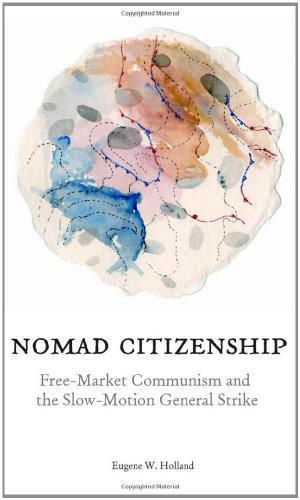
Nomad Citizenship: Free-Market Communism and the Slow-Motion General Strike
by
Eugene W. Holland
Published 1 Jan 2009
If the third and fourth theoretical displacements yield a kind of minor marxism, the four displacements taken together yield something like a mi nor feminism or a feminist nomadology. Affirmative nomadology is, to be sure, adapted from the work of Deleuze and Guattari, but it is informed through and through by the perspectives of Mies and Federici and the work of Mary Parker Follett, Jane Jacobs, Iris Marion Young, Rosa Lux emburg, and J. K. Gibson-Graham, among others. I chose these women’s works—or rather they chose me, forced and helped me to think—because their work offers means with which to address the Problems confronting us, both sociohistorical and philosophical, in the most provocative and productive ways.
…
The problem with an exclusive focus on faceto-face groups, as Iris Marion Young has shown, is that it can construe any kind of mediation as alienation, and privilege instead immediacy and transparency; it tends, in short, to deny some kinds of difference.34 Such a focus is not only theoretically untenable (Young argues that it falls afoul of the Derridean critique of unified subjects present to one another35), it is also totally impractical: urbanization and hence intensifying social me diation and complexification are long-standing and worldwide trends that must be worked with, not wished away in a nostalgic attempt to restore something like small-town, gemeinschaft social life. Drawing directly on the work of Jane Jacobs—arguably the second great twentieth-century American theorist of urban neighborhoods, after Mary Parker Follett herself—Young proposes city life as an alternative to the neighborhood group, “an ideal of city life as a vision of social relations affirming group difference,” and as a venue for “different groups that dwell together . . . without forming a community”36—or while forming at most what van Gunsteren would call a “community of fate.”37 If the essence of society is not just difference but “related difference,” as Follett insists, it is city life as a whole that concentrates and composes related differences, even more than the neighborhood group alone.38 We saw th at for Follett, the neighborhood group already possessed this advantage compared to the Greek polis: whereas Greek citizens qua citi zens were all alike (land- and slave-owning males), neighborhood citizens were different—occupationally, at least—and those differences contrib uted directly to the strength of the group.
…
Familiar acquaintances combine with neighborhood residents in composing a web of interpersonal connections that makes it possible not only to tolerate the presence of strangers and passers-by without undue concern but to enjoy and appreciate their novelty and their differences. It is the haphazard mix of residents, regular users, mere passers-by, neighbors, strangers, and ac quaintances that, for Jacobs, both enlivens and secures the neighborhood. In one important respect, the Jane Jacobs neighborhood is quite un like the neighborhood watch groups her work partly inspired and quite unlike the Progressive-era neighborhood organization championed by Mary Parker Follett and others—not to mention the radiant city of Le Corbusier—because the Jacobs neighborhood is completely unplanned (unconscious is the word she often uses).
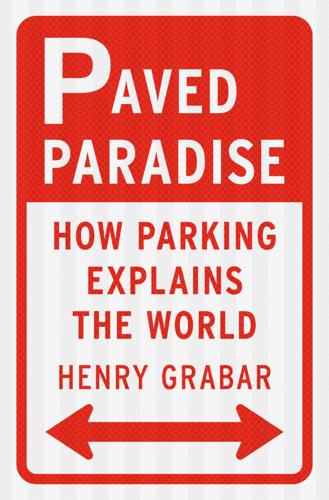
Paved Paradise: How Parking Explains the World
by
Henry Grabar
Published 8 May 2023
Newspapers around the county applauded Fort Worth’s foresight; local leaders were delighted to find themselves the center of attention. The developer James Rouse, who would go on to mastermind downtown renewal projects like Harborplace in Baltimore and Faneuil Hall in Boston, wrote that this “most magic plan” was “the largest, and the boldest, and the most complete dealing with the American city.” And even Jane Jacobs, germinating the ideas that would make up her landmark antiplanning book The Death and Life of Great American Cities, wrote a self-described “fan letter” to Gruen, saying his Fort Worth plan was of “incalculable value” and would return America to a time of “downtowns for the people.” But Gruen never got his Fort Worth plan: the Texas legislature was not so easily charmed by the vision of the Viennese architect who flew in from Los Angeles, and rejected Gruen’s allies’ urban renewal bill.
…
At that point, suburbanites might as well have gone to Southdale or Northland. And so they did. The truth was, Gruen never had a historical idea of what an American downtown ought to look like. He invoked Swiss fountains and espressos en terrace, but he rarely extolled the charm of Georgetown or Society Hill or the verve of Bourbon Street or Michigan Avenue. Just as Jane Jacobs was mounting her popular and wildly influential defense of the messy, lively American urban neighborhood, Victor Gruen was bitterly on his way to the opposite conclusion: “American cities, with their comparatively short histories and small traditions, offered people little beyond traffic jams.” American car culture, and architects’ acquiescence to its demands, was becoming Victor Gruen’s bête noire.
…
It seems unlikely that anyone in 1945 could even imagine a downtown with too much parking—they didn’t mean to paint the town gray—but such places were becoming more common by 1960. “The more downtown is broken up and interspersed with parking lots and garages, the duller and deader it becomes in appearance,” Jane Jacobs wrote in 1961. Such places weren’t just low on tax revenue and sex appeal. They had also lost, to surface lots, many of the older buildings that Jacobs thought so essential to a lively city. In places like New York’s SoHo or Chicago’s Lincoln Park, such structures would be among the key building blocks of urban population recovery, resettled by recent immigrants, artists, and yuppies.
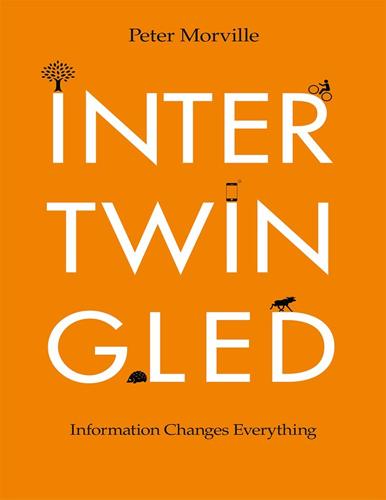
Intertwingled: Information Changes Everything
by
Peter Morville
Published 14 May 2014
Donella may overstate her case, for even when words come one at a time, the narrative that emerges is often nonlinear. Good stories tend to wander. They draw upon our memories, associations, and emotions to create rich, sensory experience. Often, words are the best way to paint a picture. In The Death and Life of Great American Cities, Jane Jacobs does this brilliantly. In a text with no image, she helps us see the city as a system. Her words bring sidewalks, parks, and neighborhoods to life. Jane shows us why traditional maps aren’t good for urban planning. By focusing on roads and buildings, maps reveal the skeleton but miss the point.
…
When the murk between the lights becomes deep and undefinable and shapeless, the only way to give it form or structure is to kindle new fires in the murk or sufficiently enlarge the nearest existing fires.xii We’ve all felt the warmth and vitality of populous city streets, and we’ve also felt fear in the cold, dark, lost areas. Jane’s words help us see why this picture, rather than a classic map, is the right frame for city planning. It’s an unconventional text that explains why slums stay slums and traffic gets worse. So it’s no surprise that Jane Jacobs was a systems thinker. To see complex systems of functional order as order, and not as chaos, takes understanding. The leaves dropping from the trees in autumn, the interior of an airplane engine, the entrails of a dissected rabbit, the city desk of a newspaper, all appear to be chaos if they are seen without comprehension.
…
vi Make Things Be Good by Dan Klyn (2013). vii Systemantics by John Gall (1975), p.14. viii Systems Thinking for Curious Managers by Russell Ackoff (2010), p.6. ix Thinking in Systems by Donella Meadows (2008), p.14. x Meadows (2008), p.157. xi Meadows (2008), p.5. xii The Death and Life of Great American Cities by Jane Jacobs (1961), p.376. xiii Jacobs (1961), p.376. xiv The Agile Manifesto, http://agilemanifesto.org. xv The Machine That Changed the World by James Womack (1990), p.56. xvi The Lean Startup by Eric Ries (2011). xvii Meadows (2008), p.170. xviii Should Isle Royale Wolves Be Reintroduced by John Vucetich (2012), p.130.

The Survival of the City: Human Flourishing in an Age of Isolation
by
Edward Glaeser
and
David Cutler
Published 14 Sep 2021
“Why COVID-19 Is More Deadly in People with Obesity—Even If They’re Young.” Science, September 8, 2020. www.sciencemag.org/news/2020/09/why-covid-19-more-deadly-people-obesity-even-if-theyre-young. Wainwright, Oliver. “Street Fighter: How Jane Jacobs Saved New York from Bulldozer Bob.” The Guardian (London), April 30, 2017. www.theguardian.com/artanddesign/2017/apr/30/citizen-jane-jacobs-the-woman-who-saved-manhattan-from-the-bulldozer-documentary. Walker, Mark. “ ‘If We Get It, We Chose to Be Here’: Despite Virus, Thousands Converge on Sturgis for Huge Rally,” The New York Times, August 11, 2020. www.nytimes.com/2020/08/07/us/sturgis-motorcyle-rally.html.
…
Mayor Menino didn’t want a new financial zone, but before 2020 that seemed like the future for the innovation district. The entrepreneurs relocated to cheaper, poorer parts of the city, which led to the fights over gentrification that are the topic of the next chapter. But if the banks go remote or move to another city, then the space becomes available again. Jane Jacobs, author, journalist, and activist, was among the wisest observers of twentieth-century urban America. Her 1961 book, The Death and Life of Great American Cities, remains one of the true masterpieces of nonfiction writing. In that book, Jacobs wrote that cities needed “cheap and makeshift” space to permit the growth of new businesses.
…
The Home Owners’ Loan Corporation report notes without editorial comment that “the Federal Government, in conjunction with the city government are undertaking a slum clearance project covering 41 acres in the extreme northeast part of the area.” As slums were cleared, public housing projects, like Ramona Gardens and Estrada Courts, were built. As Jane Jacobs would warn twenty years later, replacing dense slums with new projects often transformed functional, if gritty, urban spaces into crime-ridden no-man’s-lands. These projects have had their share of fire bombings, but the magnificent murals that adorn their walls remind us that urban creativity can survive even postwar urban planning.
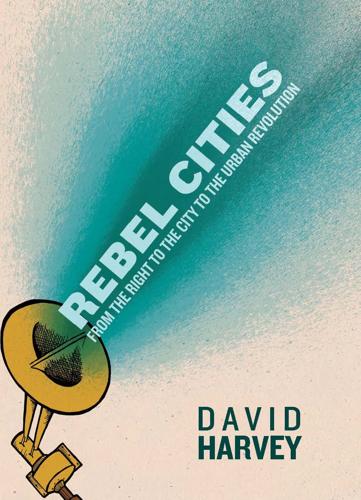
Rebel Cities: From the Right to the City to the Urban Revolution
by
David Harvey
Published 3 Apr 2012
B ut it did so at the cost of hollowing out the central cities and le aving them bereft o f a sustainable economic b asis, thus producing the so-called "urban crisis" of the 1 960s, defined by revolts of impacted minorities (chiefly 10 REBEL CITIES African-American) in the inner cities, who were denied access to the new prosperity. Not only were the central cities in revolt. Trad itionalists increasingly rallied around Jane Jacobs and sought to counter the brutal modernism of Moses's large-scale projects with a different kind of urban aesthetic that focused on local neighborhood development, and on the historical preservation, and ultimately gentrification, of older areas. But by then the suburbs had been built, and the radical transformation in lifestyle that this betokened had all manner of so cial consequences, leading fem i nists, for example, to proclaim the suburb and its lifestyle as the locus of all their primary discontents.
…
Th e sad point here, of course, is that the processes Engels described recur again and again in capitalist urban h istory. Robert Moses "took a meat axe to the Bronx" ( in his infamous words), and long and loud were the lamentations of neighborhood groups and movements, which eventually coalesced around t he rheto ric of Jane Jacobs, at the unim aginable destruction not only of valued urban fabric but also of whole communities of residents and their long established networks of social integration. 15 But in the New York and Parisian case, once the brutal power of state expropriations had been successfully resisted and contained by the agitations of '68, a far more insidious and cancerous pro cess of transformation occurred through fiscal disciplining of democratic urban governments, land markets, prop erty speculation, and the sorting of land to those uses that generated the h ighest possible financial rate of return under the land's "highest and best use."
…
In New York C ity, for example, we have a billionaire mayor, M ichael Bloomberg, who is reshaping the c ity along lines favorable to the developers, to Wall Street and transn ational capital ist class elements, while continuing to sell the city as an optimal lo cation for high-value businesses and a fantastic destination for tourists, thus turning M anhattan in effect into one vast gated community for the rich. (His developmental slogan, iron ically, h as been "B u ilding L ike Moses with Jane Jacobs in M ind:'2 1} In Seattle a billionaire like Paul A llen c alls the shots, and in Mex ico City the wealth iest man in the world, Carlos Slim, has the downtown streets re-cobbled to suit the tourist gaze. And it is not only affluent individuals who exercise d irect power. In the town o f New H aven, strapped for any resources for urban reinvestment of its own, it is Yale University, one of the wealthiest universities in the world, that is redesigning much of the urban fabric to suit its needs.
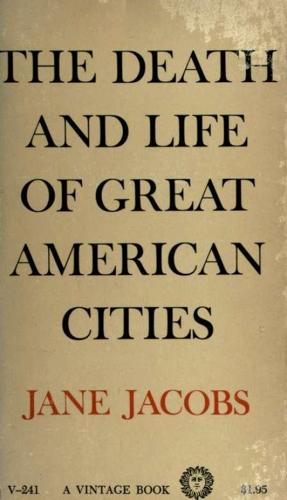
The death and life of great American cities
by
Jane Jacobs
Published 1 Nov 1961
The DEATH and LIFE of GREAT AMERICAN CITIES Jane Jacobs Jane Jacobs was born in Scranton, Pennsylvania, and now lives in Toronto. In addition to The Death and Life of Great American Cities, she is the author of Cities and the Wealth of Nations, The Question of Separatism, The Economy of Cities, and, most recently, Systems of Survival. ALSO BY Jane Jacobs Systems of Survival: A Dialogue on the Moral Foundation of Commerce and Politics Cities and the Wealth of Nations: Principles of Economic Life The Question of Separatism: Quebec and the Struggle over Sovereignty The Economy of Cities VINTAGE BOOKS EDITION, DECEMBER 1992 Copyright © 1961 by Jane Jacobs Copyright renewed 1989 by Jane Jacobs All rights reserved under International and Pan-American Copyright Conventions Published in the United States by Vintage Books, a division of Random House, Inc., New York, and simultaneously in Canada by Random House of Canada Limited, Toronto Originally published in hardcover by Random House, Inc., New York, in 1961 Acknowledgment is made to the following publications for permission to reprint portions of this book which first appeared in their pages: Architectural Forum, the Columbia University Forum, Harper’s Magazine, The Reporter.
…
ALSO BY Jane Jacobs Systems of Survival: A Dialogue on the Moral Foundation of Commerce and Politics Cities and the Wealth of Nations: Principles of Economic Life The Question of Separatism: Quebec and the Struggle over Sovereignty The Economy of Cities VINTAGE BOOKS EDITION, DECEMBER 1992 Copyright © 1961 by Jane Jacobs Copyright renewed 1989 by Jane Jacobs All rights reserved under International and Pan-American Copyright Conventions Published in the United States by Vintage Books, a division of Random House, Inc., New York, and simultaneously in Canada by Random House of Canada Limited, Toronto Originally published in hardcover by Random House, Inc., New York, in 1961 Acknowledgment is made to the following publications for permission to reprint portions of this book which first appeared in their pages: Architectural Forum, the Columbia University Forum, Harper’s Magazine, The Reporter.
…
I am grateful also to the Rockefeller Foundation for the financial support which made my research and writing possible, to the New School for Social Research for its hospitality, and to Douglas Haskell, the Editor of Architectural Forum, for his encouragement and forbearance. Most of all I am grateful to my husband, Robert H. Jacobs, Jr.; by this time I do not know which ideas in this book are mine and which are his. JANE JACOBS Contents Cover About the Author Also by Jane Jacobs Title Page Copyright Dedication Acknowledgment Illustrations Epigraph 1 Introduction Part One THE PECULIAR NATURE OF CITIES 2 The uses of sidewalks: safety 3 The uses of sidewalks: contact 4 The uses of sidewalks: assimilating children 5 The uses of neighborhood parks 6 The uses of city neighborhoods Part Two THE CONDITIONS FOR CITY DIVERSITY 7 The generators of diversity 8 The need for primary mixed uses 9 The need for small blocks 10 The need for aged buildings 11 The need for concentration 12 Some myths about diversity Part Three FORCES OF DECLINE AND REGENERATION 13 The self-destruction of diversity 14 The curse of border vacuums 15 Unslumming and slumming 16 Gradual money and cataclysmic money Part Four DIFFERENT TACTICS 17 Subsidizing dwellings 18 Erosion of cities or attrition of automobiles 19 Visual order: its limitations and possibilities 20 Salvaging projects 21 Governing and planning districts 22 The kind of problem a city is Illustrations The scenes that illustrate this book are all about us.
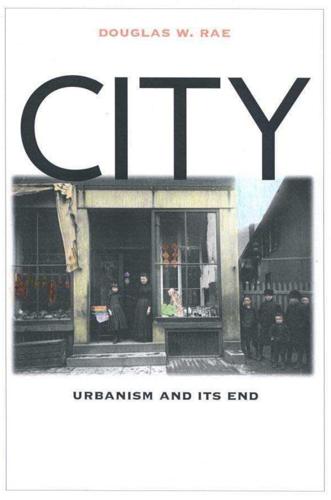
City: Urbanism and Its End
by
Douglas W. Rae
Published 15 Jan 2003
The sum of such casual, public contact at a local level—most of it fortuitous, most of it associated with errands, all of it metered by the person concerned and not thrust upon him by anyone—is a feeling for the public identity of people, a web of public respect and trust, and a resource in time of personal or neighborhood need. The absence of this trust is a disaster to a city street. Its cultivation cannot be institutionalized. Jane Jacobs, 1961 CONTENTS Preface, ix 1 Creative Destruction and the Age of Urbanism, 1 PART ONE / URBANISM 2 Industrial Convergence on a New England Town, 35 3 Fabric of Enterprise, 73 4 Living Local, 113 5 Civic Density, 141 6 A Sidewalk Republic, 183 PART TWO / END OF URBANISM 7 Business and Civic Erosion, 1917–1950, 215 C O N T E N T S 8 Race, Place, and the Emergence of Spatial Hierarchy, 254 9 Inventing Dick Lee, 287 10 Extraordinary Politics: Dick Lee, Urban Renewal, and the End of Urbanism, 312 11 The End of Urbanism, 361 12 A City After Urbanism, 393 Notes, 433 Bibliography, 477 Acknowledgments, 499 Index, 503 viii PREFACE City: Urbanism and Its End pursues the course of urban history across the boundaries that separate political science from sociology, geography, economics, and history itself.
…
First, many of the problems faced by city government today arise from the historical adaptation of its institutions to a far more supportive environment—an environ29 C R E AT I V E D E S T R U C T I O N ment where control over urban land use represented real power, where law enforcement was carried out substantially by civilian agents operating as storekeepers, as school principals, and simply as engaged neighbors helping one another to cope with the behavior of fifteen-year-old miscreants. Such an urbanist environment tended, without much explicit effort, to support trust and cooperation among civilians, and thus to reduce the strain on public sector responsibility for the keeping of good order and civil respect. As Jane Jacobs wrote: The first thing to understand is that the public peace—the sidewalk and street peace—of cities is not kept primarily by the police, necessary as the police are. It is kept primarily by an intricate, almost unconscious, network of voluntary controls and standards among the people themselves, and enforced by the people themselves.
…
If [the individual] comes into contact with his neighbors, and they with other neighbors, there will be an accumulation of social capital, which may immediately satisfy his social needs and which may bear a social potentiality sufficient to the substantial improvement of living conditions in the whole community. The community as a whole will benefit by the cooperation of all its parts, while the individuals will find in his associations advantages of the help, the sympathy, and the fellowship of his neighbors.56 181 U R B A N I S M Several others, including Jane Jacobs, have since independently discovered this idea, and Robert Putnam has made it a part of speech in American English with his Bowling Alone.57 It is a useful idea, and Hanifan got it right in 1916—in recommending rural policy in conscious emulation of urban life built up with civic density of just the sort we have reviewed here.

City Squares: Eighteen Writers on the Spirit and Significance of Squares Around the World
by
Catie Marron
Published 11 Apr 2016
Like many others, he was displaced by the quake and had to move in with his children an hour away, but he felt lonely and so was driven by his family every week into the city to meet old friends also driven there by their families—and the men would hang out in the now mostly empty public square outside the Duomo, because to them the square, even ruined, was L’Aquila, and there was nothing to replace it. “It’s the only real home we have,” Antonacci told me. Aquila, Piazza del Duomo I grew up in Greenwich Village, Jane Jacobs’s old neighborhood, where Washington Square Park was my version of Antonacci’s Duomo square, the place where I met friends, cooled off in the fountain, played catch with my dad, and people-watched. It was the heart of what was then a scruffier but more venturesome neighborhood than today’s Village.
…
In the case of Italian piazze, French places, and Spanish plazas, the restaurants, cafés, and shops that line the perimeters encourage the ease of human encounters. But their openness can also give city squares a feeling of desertion. They’re places where people with time on their hands hang out—the jobless, the old, the lonely. In The Death and Life of Great American Cities, Jane Jacobs quoted an Indiana woman on her town square: “Nobody there but dirty old men who spit tobacco juice and try to look up your skirt.” The square in front of the Paris city hall used to be called Place de Grève and was for centuries a place for unemployed Parisians to gather in search of work, which gave French its word for “labor strike.”
…
In East Berlin, Alexanderplatz—the center of Berlin night life during the Weimar years of the 1920s—had been redeveloped by the Socialist Unity Party in the 1960s in a style of Cold War kitsch: at one end, the blue glass slab of the Hotel Stadt Berlin, and the House of Teachers, with a giant mural wrapping around the third and fourth floors that depicts work and life in the German Democratic Republic, where everyone seems to be smiling; the TV Tower, with a revolving viewing platform inside a shiny metal ball perched on top of a twelve-hundred-foot concrete column; and the World Time Clock, with a rotating circular map of the world. The ruling Communists turned Alexanderplatz into a windswept pedestrian zone, as if they had been misreading their Jane Jacobs. In an essay on the square, the German writer Georg Diez describes a woman who lived near it: “The square, she says, was always empty, ‘just empty, nothing happening there, you just didn’t go over there, that’s just how it worked.’ A hole in the middle of the city.” On November 4, 1989, the hole filled up with more than half a million East Germans.
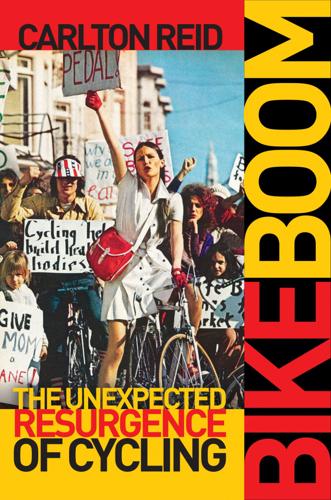
Bike Boom: The Unexpected Resurgence of Cycling
by
Carlton Reid
Published 14 Jun 2017
Just five years later the trick-riding White got his wish, thanks to Robert Moses. Possibly New York’s master builder built for bicyclists because, as Collier’s Weekly reported in 1939, he was a “bicycle bug” himself. Moses is best known today as the planner whose plans for expressways through Manhattan were thwarted in the 1960s by urbanist Jane Jacobs. A journalist for the Architectural Forum, Jacobs rode around Greenwich Village on a bicycle, her handbag stashed in a wicker basket on the front. With her grey thatch and owlish glasses, and her undeniably brilliant writing, she is now usually portrayed as a David-vs.-Goliath heroine, with Moses as Goliath.
…
Another suggested: “One of the ways to encourage cycling is to build cycleways. Cycleways are safer to ride on than streets and sidewalks. The adults have their roads to enjoy and young people have a right to have cycleways.” “TODAY EVERYONE who values cities is disturbed by automobiles,” wrote Jane Jacobs in her seminal study, The Death and the Life of Great American Cities. But she pointed out that, in the pre-automobile nineteenth century, city streets were hardly wonderful places. The problem wasn’t the automobile as such (cars didn’t deposit manure), it was that “we went awry by replacing, in effect, each horse on the crowded city streets with half a dozen or so mechanized vehicles, instead of using each mechanized vehicle to replace half a dozen horses.”
…
This was one of the key eco-polemics of the 1970s—it theorized that capitalism was inherently bad for the planet because, like a Ponzi scheme, it can only survive by growing, unsustainably. What was required instead, believed Schumacher, were small-scale “appropriate technologies.” The bicycle, believed the bike activists (“biketivists”), was more of an appropriate technology for city use than the smelly, dangerous, gas-guzzling, space-hungry automobile. Jane Jacobs’s The Death and Life of Great American Cities was the second non-cycling philosophical tome on the bookshelf of every card-carrying cycle activist of the 1970s, with the third being Ivan Illich’s Energy and Equity of 1974. CHICAGO-BASED Edward Aramaic explicitly linked cycling with environmentalism when he founded Bicycle Ecology and organized a “pedal-in” in October 1970.

Road to Nowhere: What Silicon Valley Gets Wrong About the Future of Transportation
by
Paris Marx
Published 4 Jul 2022
The highway construction boom slowed by the end of the 1960s as costs rose faster than inflation, but their construction had also created a new coalition to challenge them: environmental activists, civil rights groups, the consumer movement, and urban residents. The most prominent figure to come out of this movement was none other than activist and author Jane Jacobs. From the late 1950s through the 1960s, Jacobs was a leader in the campaign against Moses’s urban renewal strategy—in part because of how it affected her neighborhood of Greenwich Village—and his planned Lower Manhattan Expressway that would have cut through Manhattan to connect the Manhattan Bridge and the Williamsburg Bridge to the Holland Tunnel.
…
They demanded the city halt the project after Sidewalks Labs “orchestrated a misleading, undemocratic engagement process that harm[ed] the public interest” and leaked documents confirmed it wanted to control a much larger area of the waterfront.4 Bianca Wylie, whose criticism of the project earned her the title of “Jane Jacobs of the smart city,” called the process “thoroughly anti-democratic.”5 Instead of identifying the needs of residents, then developing or contracting for technology to meet those needs (if that was what was appropriate), the city and Waterfront Toronto were bending over backwards to allow Sidewalk Labs to impose its vision and its priorities on the residents of Toronto.
…
In challenging this reality, we cannot simply focus on the technology—though we must have solid critiques of how it works and who it serves as we try to halt its deployment. We must also consider how the need for capital accumulation is driving the change, and how even if we regulate some technologies and stop others, the direction of travel will continue toward tech’s vision of the city. Think back to Jane Jacobs and Ralph Nader. Jacobs and those inspired by her work stopped some freeways from being built, while Nader and his allies undoubtedly made cars safer, saving many lives in the process. But the expansion of suburbs and the growth of automobile dependence continued with harmful consequences. We need cities that are built for their residents, that improve their quality of life, and that consider their needs instead of opening the floodgates to technologies and gimmicks thought up by billionaires who have a very different experience of the city than most people.
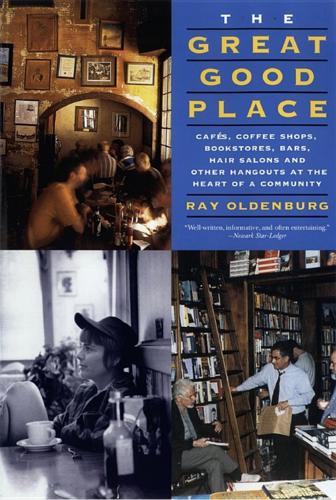
The Great Good Place: Cafes, Coffee Shops, Bookstores, Bars, Hair Salons, and Other Hangouts at the Heart of a Community
by
Ray Oldenburg
Published 17 Aug 1999
Before publication of this book, I found my kindred spirits almost entirely in the books they wrote, and I am pleased to report that the present decade is witness to an increasing number of volumes having to do with our subject. My recommendations for additional reading are subjective and incomplete. They consist of the men and women who have had most influence on me and whose books, regardless of publication date, seem to me to have great contemporary relevance. I could start with none other than Jane Jacobs’ The Death and Life of Great American Cities. For all the consternation she caused within architectural and planning circles, she has done a tremendous service for us all. One marvels at both the depth and quantity of her insights. Well within the Jacobs’ tradition and appearing the same year as my contribution was Roberta Gratz’s The Living City.
…
In the aftermath of hurricane Andrew in South Florida not long ago, many people emerged from the destruction feeling that need to gather with others to find out how severe and extensive the damage; to find out what was being done; to see how they could help and/or get help—but for most there was no place to assemble. Careful zoning had denied these people their “third places.” Third places also provide those whom Jane Jacobs called “public characters.” These are people who know everybody in the neighborhood and who care about the neighborhood. These are usually store owners or operators who “keep an eye” on what’s happening in the neighborhood. These are the people who alert parents about what their kids sometimes “get into” before it is necessary for the police to do so.
…
This otherwise obvious fact of social life is often obscured by the seeming contradiction that surrounds it—we need a good deal of immunity from those whose company we like best. Or, as the sociologist Richard Sennett put it, “people can be sociable only when they have some protection from each other.”4 In a book showing how to bring life back to American cities, Jane Jacobs stresses the contradiction surrounding most friendships and the consequent need to provide places for them. Cities, she observed, are full of people with whom contact is significant, useful, and enjoyable, but “you don’t want them in your hair and they do not want you in theirs either.”5 If friendships and other informal acquaintances are limited to those suitable for private life, she says, the city becomes stultified.
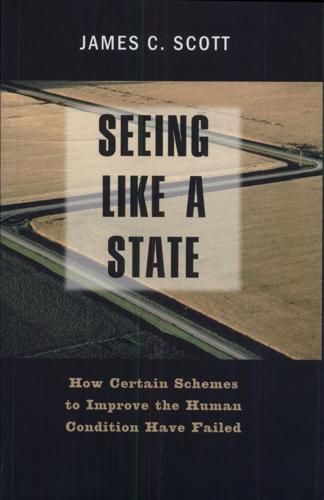
Seeing Like a State: How Certain Schemes to Improve the Human Condition Have Failed
by
James C. Scott
Published 8 Feb 1999
The small-scale street trader, the hawker or the rehris (barrows) have been banned from the city center, so that even where sources of interest and activity could be included, if only to reduce the concreted barrenness and authority of the chowk, these are not utilized."75 As in Brasilia, the effort was to transcend India as it existed and to present Chandigarh's citizens-largely administrators-with an image of their own future. As in Brasilia, the upshot was another unplanned city at the periphery and the margins, one that contradicted the austere order at the center. The Case Against High-Modernist Urbanism: Jane Jacobs Jane Jacobs's book The Death and Life of Great American Cities was written in 1961 against a high tide of modernist, functional urban planning. Hers was by no means the first criticism of high-modernist urbanism, but it was, I believe, the most carefully observed and intellectually grounded critique.76 As the most comprehensive challenge to contemporary doctrines of urban planning, it sparked a debate, the reverberations of which are still being felt.
…
Throughout the book I make the case for the indispensable role of practical knowledge, informal processes, and improvisation in the face of unpredictability. In chapters 4 and 5, I contrast the high-modernist views and practices of city planners and revolutionaries with critical views emphasizing process, complexity, and open-endedness. Le Corbusier and Lenin are the protagonists, with Jane Jacobs and Rosa Luxemburg cast as their formidable critics. Chapters 6 and 7 contain accounts of Soviet collectivization and Tanzanian forced villagization, which illustrate how schematic, authoritarian solutions to production and social order inevitably fail when they exclude the fund of valuable knowledge embodied in local practices.
…
Thanks to an excellent book by James Holston, The Modernist City: An Anthropological Critique of Brasilia," it is possible to analyze both the logic of the plan for Brasilia and the extent of its realization. An appreciation of the slippage between what Brasilia meant for its originators on one hand and for its residents on the other will in turn pave the way (no pun intended) for Jane Jacob's thoroughgoing critique of modern urban planning. The idea of a new capital in the interior predates even the independence of Brazil.56 Its realization, however, was the pet project of Jus- celino Kubitschek, the populist president from 1956 to 1961, who promised Brazilians "fifty years of progress in five" and a future of selfsustaining economic growth.

Ground Control: Fear and Happiness in the Twenty First Century City
by
Anna Minton
Published 24 Jun 2009
In Britain, in planning and urban-design circles this is the subject of raging debate, which echoes the uncertainty about whether or not gated communities are safer – American research described later in the chapter finds that they make little difference to crime and may actually increase it. At the centre of the debate about ‘defensible space’ is the question of whether ‘natural surveillance’, which deters crime, is created by the ‘eyes on the street’ of strangers, as argued by Jane Jacobs in her seminal book, The Death and Life of Great American Cities, 18 or whether strangers should be seen as dangerous intruders, as Newman believes. Both sides of the argument command influential support. Research from University College London shows that ‘defensible space’ does not create safer environments, finding that residents of cul de sacs were more likely to be burgled because their isolation means they are targets.19 Now, bolstered by the growing weight of evidence, even the government has acknowledged the need for change, suggesting in its recent Manual for Streets that developers return to the type of street pattern that has characterized the city over centuries.20 But no one expects developers to listen because in the other corner is Secured by Design, the influential police-backed design initiative based on Newman’s ‘defensible space’ ideas.
…
Creating such a segregated environment is entrenching this fear of difference and fear of strangers. STRANGER DANGER OR ‘EYES ON THE STREET’? Whether strangers are dangerous or essential to healthy city life is the question which has been at the heart of debates about cities for the last fifty years. Jane Jacobs’ classic text, The Death and Life of Great American Cities, published in 1961, 23 and Richard Sennett’s The Fall of Public Man, which came out in 1977, argue that the presence of strangers in cities is the essence of civility and safety. Sennett describes the city as the place ‘where strangers are most likely to meet’ and defines ‘civility’ as ‘treating others as strangers and forging a social bond on that distance’.24 Jacobs bases her case on ‘natural surveillance’, which is built around the informal social controls of strangers.
…
He claims it is replacing simpler terms such as membership, family, sociability and trust, and that a discussion about growing individualism and privatism would be more useful.89 Instead, ‘social capital’ is, like the ‘Respect’ agenda, an attempt to institutionalize the cultivation of trust, which Jane Jacobs warned against. But although the concept is much criticized among the academic community, it is very popular with politicians. It offers a relatively straightforward solution to fractures in society, which is to increase civic participation. Political scientist Barbara Arneil claims that this overlooks the fact that lack of cohesion is driven not so much by a decline in civic participation as by the enormous gap in levels of trust between privileged and deprived groups, and within deprived groups, which is why fear of crime is so much higher in the poorest parts of the country, where living conditions are hardest.
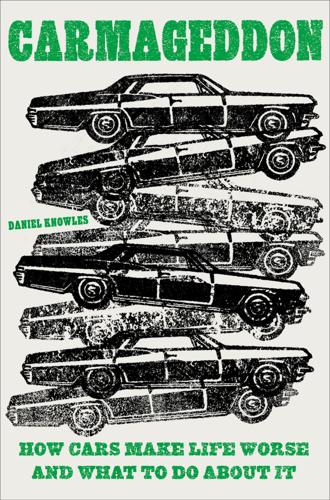
Carmageddon: How Cars Make Life Worse and What to Do About It
by
Daniel Knowles
Published 27 Mar 2023
ABRAMS The Art of Books 195 Broadway, New York, NY 10007 abramsbooks.com To my parents, who had child bike seats decades before it was cool, and to my wife, who has still not passed her driving test CONTENTS Introduction 1. When Cars Win 2. Hello, Mr. Toad 3. Motorway Cities of the Future 4. Detroit Breakdown 5. Jane Jacobs and the Fight Back 6. The Next Frontier 7. Electric Delusions 8. Bionic Duckweed 9. Why You Can’t Beat Traffic 10. Free Parking, Do Not Pass Go 11. Evil Carmakers 12. Gas Guzzler Nation 13. What Causes Traffic Accidents? 14. Bring in the Bikes 15. Go East: Lessons from Japan 16. Winning the Argument 17.
…
There is a reason the city remains the only place in America where a majority of people do not drive alone to work, and where public transport continues to carry millions of people every day. Looking back, it can seem inevitable that the city bounced back from its worst period, when the murder rate hit more than 2,000 per year and anyone who could afford to moved out. But it was not inevitable. Rather, people made it happen. And one woman in particular had a leading role. 5 JANE JACOBS AND THE FIGHT BACK Not everywhere in America was destroyed by the onslaught of the automobile. If you want to get a good sense of which places survived, you can just pull up a list of the most densely populated neighborhoods in America. Of the top one hundred most crowded zip codes, eighty are in New York City.
…
Moses had changed plenty of neighborhoods, but by the early 1960s, the power of his machine was waning. He had been through half a dozen different mayors, but each one had to be bent to his priorities. And in Lower Manhattan, he was about to encounter a surprising new nemesis, a middle-aged journalist and housewife originally from Scranton, Pennsylvania, named Jane Jacobs. Jacobs had moved to New York City in 1934 at the age of eighteen, initially to Brooklyn Heights, a neighborhood just across the water from Manhattan. Within a few years she had decamped to Greenwich Village, right underneath where Moses planned his expressways. As Anthony Flint, an American journalist, wrote in his book Wrestling with Moses, her career took off quickly.

The Secret War Between Downloading and Uploading: Tales of the Computer as Culture Machine
by
Peter Lunenfeld
Published 31 Mar 2011
Never submit to failure.” has to be one of the most repeated pieces of advice to sales trainees everywhere. Quoted in Richard Langworth, Churchill by Himself: The Definitive Collection of Quotations (New York: Public Affairs, 2008), 569; originally in Winston Churchill, My Early Life: A Roving Commission (London: Thornton Butterworth, 1930), 74. 7. Jane Jacobs, The Death and Life of Great American Cities (1961; repr., New York: Modern Library, 1993; Jane Jacobs, Systems of Survival: A Dialogue on the Moral Foundations of Commerce and Politics (New York: Random House, 1992). 188 NOTES 8. Manuel DeLanda offers a succinct definition of the difference between hierarchies and meshworks in “Homes: Meshwork or Hierarchy?”
…
She went to jail twice for defending her neighborhood, and was able to work with a large group of people who questioned why cars and commuters were more important than parks, communities, and pedestrians. The woman decided to write down the record of her experiences and thoughts about cities and urban planning, and the field of urban planning was changed forever. She was Jane Jacobs, the year was 1961, and her book was The Death and Life of Great American Cities. Jacobs was our preeminent urban anthropologist—a person who could look at a city block, and through building up the details, show exactly how it worked. An associate editor of Architectural Forum in the 1950s, she became more and more concerned with the deadening effects of urban planning on cities.
…
These syndromes are complex agglomerations of attributes, attitudes, and symptoms. In that, they serve as a model for the ways in which we will talk about downloading and uploading. Jacobs was a champion of hybridity, but understood that the secret was to maintain the right balance of the elements and system. Jane Jacobs is inspirational in terms of reminding us that deep systemic analysis can be linked to action.7 Metcalfe’s Corollary These infrastructure battles become more and more important because as complex systems evolve over time, what gets constructed now, no matter how ad hoc, tends to be grandfathered in as time goes by.
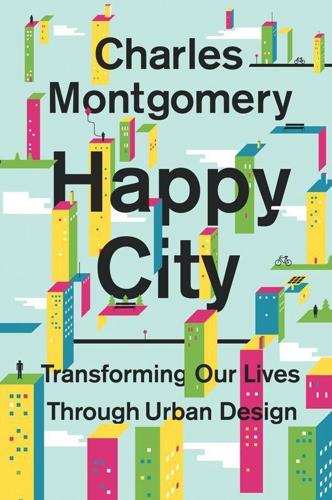
Happy City: Transforming Our Lives Through Urban Design
by
Charles Montgomery
Published 12 Nov 2013
Paris’s most glorious public gardens were built for the enjoyment of a ruling elite but now provide hedonic delights for all. The high modernists of the last century used architecture like an ethical bulldozer, pushing communities toward a symbolic, forced, and not-always-convivial closeness. The late great urbanist Jane Jacobs argued that the streets of 1960s Greenwich Village were made friendly and safe specifically because they were shared by many people. On the other end of the spectrum, millions of Americans have pursued a private version of happiness to detached structures far from any hint of what the Greeks would have called an agora.
…
I had been warned about the pathological aggression of Parisian drivers, and the streets were still full of them. But Britton and I were not the only ones on two wheels. There were dozens of other Vélib’ users around us. There were so many of us out there that drivers had to pay attention. They had to make room. In The Death and Life of Great American Cities, Jane Jacobs described the ballet that takes place on crowded sidewalks as people make eye contact and find their way around one another. I felt a similar if supercharged dynamic coming to life in Paris’s traffic lanes. With cars and bikes and buses mixed together, none of us could be sure what we would find on the road ahead of us.
…
In fact, just about every measure I’ve connected to happy urbanism also influences a city’s environmental footprint and, just as urgent, its economic and fiscal health. If we understand and act upon this connectedness, we just may steer hundreds of cities off the course of crisis. There Is No Such Thing as an Externality Even before widespread acknowledgment of human-caused climate change, Jane Jacobs warned that the city is a fantastically complex organism that can be thrown into an unhealthy imbalance by attempts to simplify it in form or function. In Cities and the Wealth of Nations she warned specifically about the tendency for designers and planners to overscale: the larger an organism or economy, the more unstable it would become in changing times, and the less the likelihood that the system would be able to self-correct.
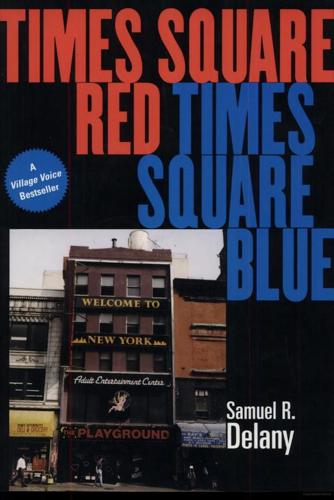
Times Square Red, Times Square Blue
by
Samuel R. Delany
Published 1 Jan 1999
—Library Journal “Composed of two diametrically opposed essays, Times Square Red, Times Square Blue falls somewhere in the cracks between memoir, social history, philosophy, and polemic—and draws its strength precisely from the tension between those elements. Delany plumbs the depths of a Times Square that’s all but gone in search of social treasure worth salvaging for future use; the result is worthy of a (sometimes contentious) position within a history of modernist city thinking that stretches from Walter Benjamin through Jane Jacobs to Marshall Berman.” —citysearch.com “Samuel Delany is one of America’s keenest observers. . . . In this eloquent, provocative book, Delany grieves for the loss of this strip of sexual release. Though he is careful not to romanticize or sentimentalize the peep shows and porn theaters, he does illuminate the way in which these venues crossed class, racial, and orientation lines, providing a delightfully subversive utopia—and a microcosm of New York life. . . . both heartfelt homage to a beloved city and lament for a quirky vitality increasingly phased out by encroaching capitalism.”
…
What this may just sign is that those four planned office towers, if not the rest of the brave new mall, could suffer the fate of so many of the country’s artificially built-up downtown areas over the last decade or two—Minneapolis, Minnesota; Springfield, Massachusetts—where no one wants to live or work, so that, as Jane Jacobs warned in her 1961 volume The Death and Life of Great American Cities, because there’s not enough intertwined commercial and residential variety to create a vital and lively street life, the neighborhood becomes a glass and aluminum graveyard, on its way to a postmodern superslum, without even going through the process of overcrowding—abandoned before it’s ever really used.
…
Visitors to New York might be surprised that such occurrences are central to my vision of the city at its healthiest. Lifetime residents won’t be. Watching the metamorphosis of such vigil and concern into considered and helpful action is what gives one a faithful and loving attitude toward one’s neighborhood, one’s city, one’s nation, the world. I have taken “contact,” both term and concept, from Jane Jacobs’s instructive 1961 study, The Death and Life of Great American Cities. Jacobs describes contact as a fundamentally urban phenomenon and finds it necessary for everything from neighborhood safety to a general sense of social well-being. She sees it supported by a strong sense of private and public in a field of socioeconomic diversity that mixes living spaces with a variety of commercial spaces, which in turn must provide a variety of human services if contact is to function in a pleasant and rewarding manner.

Working in Public: The Making and Maintenance of Open Source Software
by
Nadia Eghbal
Published 3 Aug 2020
Yet I’m asked to speak about it, and the work I’m actually *paid* to do no one really wants to hear about. ”240 Even as software’s purchase value is being driven dramatically down, its social value seems to be going dramatically up. We can’t live without software anymore, but we also don’t want to pay for it. How is this the case? The author Jane Jacobs explores these conflicting views in her 1961 book The Death and Life of Great American Cities, in which she tries to explain why urban planning policy failed cities. Jacobs’s major critique of urban planning in the 1950s is that the planners treated cities—the layout of their buildings, parks, and roads—as static objects, which were only developed at the outset, rather than continuously revised according to how people used them.
…
The benefit of “extra eyeballs” has a maximum beyond which additional reviews are not useful.215 † This is not dissimilar to shadow pricing, where, in the absence of a market price, value is calculated based on what consumers would be willing to pay to obtain a particular good. “Nobody can keep open house in a great city.” —JANE JACOBS, The Death and Life of Great American Cities261 When explaining why nobody wants to pay for software, people often cite the free-rider problem, which is the idea that if you can’t exclude others from consuming a good they’ll use it without paying. Eventually, the good becomes overused, as producers lack the resources—usually provided by consumers—to supply it.
…
(draft), University of Miami School of Law, April 6, 1997, http://osaka.law.miami.edu/~froomkin/articles/newecon.htm. 237 Ben Thompson, “AWS, MongoDB, and the Economic Realities of Open Source,” Stratechery, January 14, 2019, https://stratechery.com/2019/aws-mongodb-and-the-economic-realities-of-open-source/. 238 Bill Gates, “An Open Letter to Hobbyists,” February 3, 1976, via Wikimedia Commons, https://commons.wikimedia.org/wiki/File:Bill_Gates_Letter_to_Hobbyists.jpg. 239 David Friedman, Price Theory: an Intermediate Text (Cincinnati, OH: South-Western Publishing Co, 1986), 20. 240 Ben Lesh (@BenLesh), “Open Source is such a strange thing . . .,” Twitter, November 30, 2017, 1:26 p.m., https://twitter.com/BenLesh/status/936300388906446848. 241 Jane Jacobs, The Death and Life of Great American Cities (New York: Vintage Books, 1992), 433. 242 Timothy Patitsas, Nadia Eghbal, and Henry Zhu, “City as Liturgy,” Hope in Source, podcast audio, March 21, 2019, https://hopeinsource.com/city/. 243 Randall W. Eberts, “White Paper on Valuing Transportation Infrastructure,” W.E.
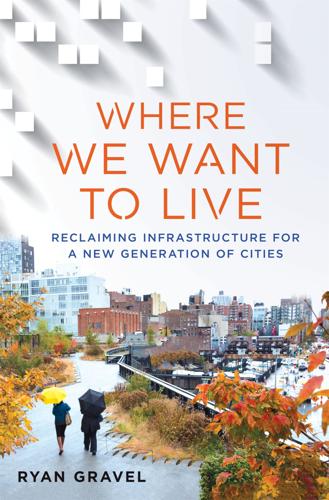
Where We Want to Live
by
Ryan Gravel
Published 2 Feb 2016
They accused contemporary planners of being interested only in “ensuring the smooth circulation of a rapidly increasing quantity of motor vehicles.”3 As the situationists grew more concerned about these motives, the targets of their frustration became clear. They “regarded all the social sciences, including urbanism, with a suspicion proportional to the field’s pretense of neutrality and expertise.”4 They challenged the status quo in modern city building efforts and in the very legitimacy of city planning practice, much like Jane Jacobs and other contemporaries who were fighting the similar transformation of New York under Robert Moses. Like that of Jacobs, and unlike most criticism of urban development patterns today, the situationists did not emphasize environmental matters such as climate change, air or water quality, land consumption, or the destruction of wildlife habitat.
…
The irony of my satisfaction with that dérive at the Place du Trocadéro, a part of Paris that had been radically altered at the hands of Haussmann, is not lost on me. But by acknowledging the viewpoint of both the situationist and the flâneur, a more enlightened picture is painted that illustrates what was—and still is—happening in the world. Alongside Jane Jacobs, parallel environmental arguments, and even more contemporary campaigns like Tactical Urbanism that are emerging at a grassroots level, the overwhelming sentiment seems to be that there is something very wrong with the way we have been building cities for well over the last half century. The durability and diversity of this movement and the increased clarity of that larger picture also suggest that those of us who care should push more aggressively against the status quo of most city building practices.
…
Six decades of building a physical environment organized primarily around cars instead of people has profoundly changed us. The serious and intransigent problems facing our country today are just now beginning to sink in. While they may yet go unnoticed in Congress or in state legislatures, they are increasingly evident in corporate conference rooms and around family dinner tables. In the five decades since Jane Jacobs wrote her landmark book, The Death and Life of Great American Cities, the physical growth of our metropolitan areas has been defined primarily by the forces she was fighting against. She was our preeminent citizen-planner and community activist. She fought with pragmatism, not nostalgia, in defense of the essential inner workings of public life that make our cities worth living in.
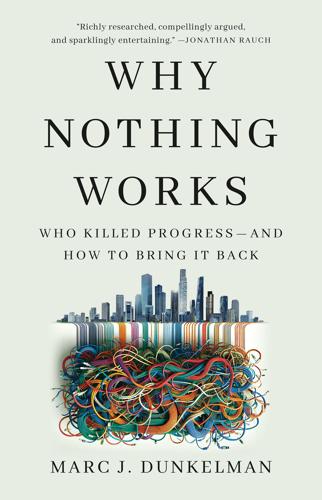
Why Nothing Works: Who Killed Progress--And How to Bring It Back
by
Marc J Dunkelman
Published 17 Feb 2025
Even in 2016, the child welfare systems in twenty states were operating under consent decrees, and the courts were processing ten thousand appeals each year for benefits from government agencies.95 To read those statistics today, many progressives may be tempted to cheer, if only because it’s so easy to imagine a Jane Jacobs type taking a Robert Moses–like figure to court, or a Ralph Nader acolyte convincing a judge to prevent a Republican appointee from leasing publicly owned forests to a corporation controlled by a GOP donor. Moreover, if a city’s child welfare bureaucracy isn’t protecting vulnerable children, why wouldn’t progressives sue to force caseworkers to do their jobs?
…
City fathers who had never particularly warmed to the southern Blacks arriving through the Great Migration saw “slum clearance” as an easy way out.56 As James Baldwin once put it, “urban renewal means Negro removal.”57 In 1964 alone, two-thirds of those “removed” by slum clearance were minorities.58 But poorer whites were victimized as well, and that was often because, as Jane Jacobs would eventually point out in The Death and Life of Great American Cities, the Establishment discounted the importance of social connection.59 The slums may have been ragged, but many were suffused with community ties. And the sputtering failures of an indelibly progressive strategy to fix cities eventually forced reformers, by the mid-1960s, to question their prior assumptions.
…
VETO BY VOICE In 1974, Samuel LeFrak, a legendary developer who worked primarily in New York’s outer boroughs, wrote an op-ed in the New York Times excoriating housing reformers for working to ensure that “the entire world should look like Greenwich Village.” He was particularly vexed by the growing celebrity of Jane Jacobs, the public intellectual who had emerged as Robert Moses’s archnemesis while stymieing a plan to build an expressway across lower Manhattan. Now considered the godmother of preservation, Jacobs was the nation’s foremost critic of centralized urban planning.85 LeFrak bristled: “For many years I have built six-story apartment houses in Brooklyn and Queens.

Obliquity: Why Our Goals Are Best Achieved Indirectly
by
John Kay
Published 30 Apr 2010
But from the 1920s to 1968, the autocratic Robert Moses controlled the physical environment of New York, driving expressways directly where homes, offices and factories had been only a short time before.8 The notion of the urban environment as a designed system was most fully implemented in planned cities such as Brasília, Canberra and Chandigarh. But these places are dull. The vitality of real communities is not successfully imitated by setting out to create a vital community. As with housing projects, their very functionality is dysfunctional. Jane Jacobs, who led the reaction against such planning (especially that of Moses), explained how the richness of city life was the product of obliquity, not design. Applauding Stanley Tankel’s comment that “it is beyond the scope of anyone’s imagination to create a community,” she wrote scathingly of the planners’ approach to civic design: “Only an unimaginative man would think he could: only an arrogant man would want to.”9 Both the tennis competition and the man-and-dog problem have best solution methods.
…
But on other matters his judgment was poor, the causes he pursued to the point of failure misconceived: the ill-fated Gallipoli expedition of 1915 and the disastrous return to the gold standard ten years later, his quixotic support of the deposed Edward VIII in 1936 and his stubborn resistance to Indian independence. When Jane Jacobs accused the modernist town planners of being unimaginative, she was making a subtle point. At first sight, visionaries who seek to rebuild whole cities seem engaged in extraordinary feats of imagination. But in reality, Le Corbusier’s schemes were characterized by a few ideas pursued with obsession.
…
Kilgore, “Origin and History of Wildland Fire Use in the U.S. National Park System,” George Wright Forum 24, no. 3 (2007). 7 Le Corbusier, The Radiant City (London, Faber & Faber, 1964), p.154. 8 Robert A. Caro, The Power Broker: Robert Moses and the Fall of New York (New York, Vintage Books, 1975), p. 11. 9 Jane Jacobs, The Death and Life of Great American Cities (Harmondsworth, UK: Penguin, 1965), p. 350. 10 Louis Pasteur, 1854, quoted in Maurice B. Strauss, Familiar Medical Quotations (London: J & A Churchill, 1968), p. 108. Chapter 7: Muddling Through—Why Oblique Approaches Succeed 1 Charles Lindblom, “The Science of “Muddling Through,” Public Administration Review 19, no. 2 (1959), pp. 79–88. 2 H.
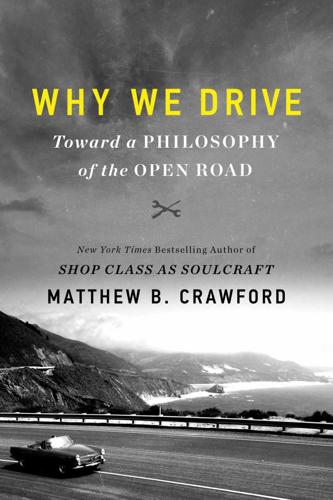
Why We Drive: Toward a Philosophy of the Open Road
by
Matthew B. Crawford
Published 8 Jun 2020
This may take the form of automated traffic enforcement, which elides the role of individual judgment (both that of a cop and that of a driver) in determining the appropriate speed, or it may take the form of elected officials holding a press conference to inform us that driving is drudgery, and we’re no good at it anyway. (Jane Jacobs referred to “Utopian minders of other people’s leisure.”) These are examples of a much larger trend. The technocrats and optimizers seek to make everything idiotproof, and pursue this by treating us like idiots. It is a presumption that tends to be self-fulfilling; we really do feel ourselves becoming dumber.
…
I will insist, on the contrary, that democracy remains viable only if we are willing to extend to one another a presumption of individual competence. This is what social trust is built on. Together, they are the minimal endowments for a free, responsible, fully awake people. Cars and the Common Good In her 1961 masterwork The Death and Life of Great American Cities, Jane Jacobs noted that “everyone who values cities is disturbed by automobiles.” They seem to stretch and rend the fabric of social interaction, which requires a certain intimacy of scale and fluidity of movement. To make way for cars and all that comes with them, such as parking lots, gas stations, and major arteries, “city streets are broken down into loose sprawls, incoherent and vacuous for anyone afoot.”
…
If the “policy and design” of parks and plazas is to be modest, deliberately underdetermining of the uses that might be found for them, the designer must refrain from precisely that which is most exciting to intellectuals: a comprehensive vision. Such visions invariably clamp down on play, because play insists on making its own rules, internal to some game that is “for us,” as Huizinga taught us. Urban skaters are a play community. Jane Jacobs criticized the kind of planning that seeks to bring order “by repression of all plans but the planners.’” Speaking of the Garden City plans of Ebenezer Howard, Jacobs called these “really very nice towns if you were docile and had no plans of your own and did not mind spending your time among others with no plans of their own.
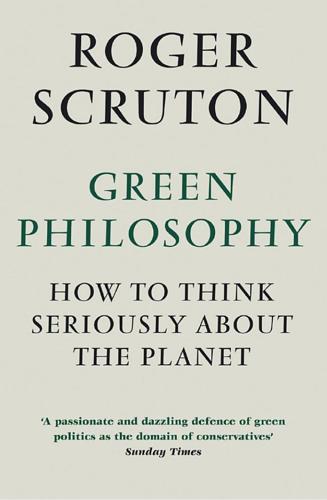
Green Philosophy: How to Think Seriously About the Planet
by
Roger Scruton
Published 30 Apr 2014
Sokal and Jean Bricmont, Fashionable Nonsense, London, 2003. 259 See Roger Scruton, Modern Culture, London, 2004. 260 Against the home and the family, Foucault, Laing, Esterson; against the nation, Pilger, Chomsky, Zinn. 261 Kant, Critique of Judgement, Oxford, 2008; Roger Scruton, Beauty, Oxford, 2009. 262 For more on this point, and on the concept of intrinsic value generally, see John O’Neill, ‘The Varieties of Intrinsic Value’, The Monist, 1992, in Keller, ed., op. cit., and also Krebs, Ethics of Nature, which explores the many ways in which we might discover and enjoy intrinsic values in nature. 263 This approach to value is second nature to economists, and ‘environmental economics’ has been subjected to severe criticism for this very reason by Sagoff, op. cit. 264 For some of the tendencies here see Krebs, Ethics of Nature. 265 See Martin Seel, Eine Ästhetik der Natur, Frankfurt, 1991. 266 See Scruton, Beauty. 267 Milan Kundera, The Unbearable Lightness of Being, New York, 1984. 268 See José Bové and François Dufour, The World is Not for Sale: Farmers Against Junk Food, London, 2001, and the websites of Slow Food International and Slow Food UK. 269 I defend this view in Art and Imagination, London, 1974, and Beauty. 270 Jane Jacobs, The Death and Life of Great American Cities, New York, 1961; Nicolai Oroussoff, ‘Outgrowing Jane Jacobs and Her New York’, New York Times, 30 April 2006. 271 Nathaniel Baum-Snow, ‘Changes in Transportation Infrastructure and Commuting Patterns in US Metropolitan Areas, 1960–2000’, American Economic Review: Papers and Proceedings, May 2010. 272 James Howard Kunstler, The Geography of Nowhere: The Rise and Decline of America’s Man-Made Landscape, New York, 1993, and The Long Emergency: Surviving the Converging Catastrophes of the Twenty-First Century, New York, 2005. 273 Joel Kotkin, The Next Hundred Million: America in 2050, New York, 2010. 274 Robert Bruegmann, Sprawl, Chicago, 2005.
…
The Italian hilltop town of stone and tile is very unlike the Zulu village with its huts of mud and grass and its church of corrugated iron, but they both obey aesthetic constraints, in which individual differences are softened and made acceptable by a common style. Hence there has to be a place for aesthetic judgement in the creation of every human habitat, and most of all in the planning and building of cities. In a fêted work, The Death and Life of Great American Cities, published in 1961, Jane Jacobs argued that cities should develop spontaneously and organically, so as to enshrine in their contours the unintended results of the consensual transactions between their residents. Only then will they facilitate the peaceful evolution of urban life. A true city results from what uncountably many residents have wanted, rather than something that a few self-appointed experts have planned.
…
Of course, some buildings should stand out – as do the Capitol in Washington, the Houses of Parliament in London and St Peter’s Basilica in Rome. But those buildings draw attention to themselves not as violations of the urban texture, but as completions of it. They are affirmations, rather than denials, of the ordinary life around them, symbols of the political and spiritual authority on which everyday existence depends. Jane Jacobs’s target was not the stylistic offences of high modernism but functionalism, according to which buildings are dictated by their purposes, so as to remain wedded to those purposes for ever. Since there is, in economic life, no such thing as ‘for ever’, the result is buildings that stand derelict after twenty years, and indeed whole cities that are abandoned as wasteland when the local industry dies.
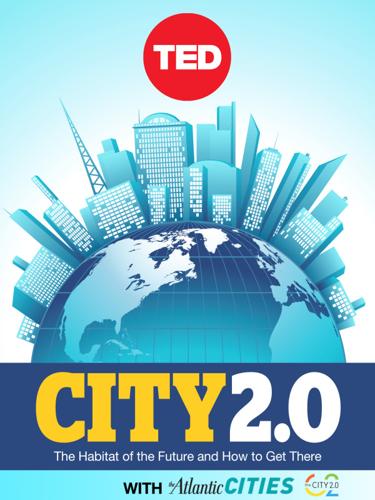
City 2.0: The Habitat of the Future and How to Get There
by
Ted Books
Published 20 Feb 2013
Image: URBZ The autocatalytic city Bottom-up growth, driven by citizens, trumps central command By Benjamin de la Peña The historic diversity of the city — the source of its value and magnetism — is an unplanned creation of many hands and long historical practice. Most cities are the outcome, the vector sum, of innumerable small acts bearing no discernible overall intention. — James C. Scott, Seeing Like a State Cities have the capability of providing something for everybody, only because, and only when, they are created by everybody. — Jane Jacobs, The Death and Life of Great American Cities * * * We are living on an urban planet; our cities are growing at spectacular rates. This growth has created new energy and excitement (cities account for 70 percent of the global economy), and it has highlighted the dysfunctions of cities. Most of our cities, particularly the fastest-growing ones, are messy, confusing places, even for the citizens who call them home.
…
Our understanding of cities has been shaped by our Industrial Age expectations of institutional control. As urban centers boom around the globe, however, we are hitting the limits of the machine model of cities. Metropolises are growing too fast for our old institutional models to work. Our task, as so ably argued by author and urban activist Jane Jacobs, is not to command the city but to understand the processes that make it work. Rather than dreaming up ways to control the autocatalytic city, planners and city leaders should think instead of how to enable it. We must avoid confusing aesthetic order with actual order. We must recognize the native intelligence and resilience of autocatalytic communities and not suffocate them with our push for the logic of efficiency.

Aerotropolis
by
John D. Kasarda
and
Greg Lindsay
Published 2 Jan 2009
In the end, we won’t stop flying for the simple reason that quitting now would run counter to our human impulse to roam. Will you be the one to tell a hundred million Chinese tourists (and another hundred million Indians) they’ll have to stay home? I live in one of the oldest sections of Brooklyn, blocks of leafy streets and brownstones I like to think Jane Jacobs would have recognized as her own. The park where I read the newspaper most mornings is a small one—a few tables and benches, a patch of grass, a playground—but it sits on the site of a fort defended by George Washington’s troops, one that gave the neighborhood its name: Cobble Hill. Most mornings, the only patrons at 7:30 a.m. are a few bleary-eyed dog owners or the parents of overeager toddlers.
…
Turning a corner, I came face-to-face with a quarter mile of brownstones lining Stapleton’s grand boulevard, looking exactly like my own back in Brooklyn. They were new, of course—so clean they’d obviously never seen a pigeon—but otherwise packed shoulder to shoulder like the loveliest stretches of my borough, where Jane Jacobs’s “sidewalk ballet” of people endlessly dances arabesques below our windows. Stapleton’s residents were learning the steps—dog walkers strolled the grassy median, and a few runners loped by—but it wasn’t quite Cobble Hill yet. After the initial shock of meeting its doppelgänger wore off, another one hit me: Who moves to Denver to live like they’re in Brooklyn?
…
Every city, region, and nation, whether they knew it or not, had been plunged into a Darwinian struggle from which a new world order would emerge. Today we call this process globalization. The Death and Life of American Cities Kasarda grew up in Wilkes-Barre, Pennsylvania, in the postwar years. Jane Jacobs, who was born in the next town over, Scranton, later noted that the twin cities of the Appalachian coal country “are less populated today than when I was a child in the 1920s, and even then people in search of city jobs were beginning to leave.” By the time Kasarda was born in 1945, the Diamond City’s veins of shining anthracite were running dry.
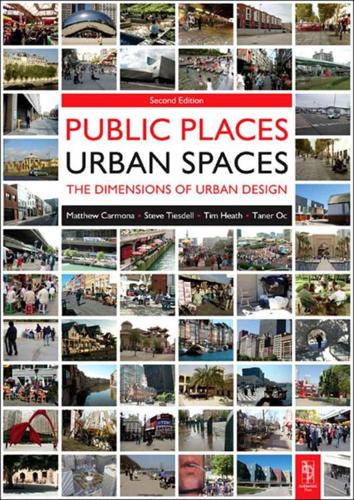
Public Places, Urban Spaces: The Dimensions of Urban Design
by
Matthew Carmona
,
Tim Heath
,
Steve Tiesdell
and
Taner Oc
Published 15 Feb 2010
FIGURE 1.1 Gammel Strand, Copenhagen (Image: Steve Tiesdell) FIGURE 1.2 St Andrews Square, Edinburgh (Image: Steve Tiesdell) FIGURE 1.3 Chicago (Image: Matthew Carmona) Introducing and defining urban design, this chapter is organised into three main parts. The first part develops an understanding of the subject. The second part discusses the contemporary need for urban design. The third part discusses urban designers and urban design practice. Understanding Urban Design From the early 1960s, a clutch of writers and designers – notably Jane Jacobs, Kevin Lynch, Gordon Cullen, Christopher Alexander, Aldo Rossi, Ian McHarg, Jan Gehl and others – became influential in shaping what would increasingly become known as urban design. The term itself had been coined in North America in the late 1950s and is often associated with Jose Luis Sert, Dean of Harvard’s Graduate School of Design, convening an ‘urban design’ conference at Harvard in 1956 and subsequently setting up the first American urban design programme at that university (see Krieger & Saunders 2009).
…
Identifying Kevin Lynch as a key proponent of this approach, Jarvis (1980: 58) highlights how Lynch shifted the focus of urban design in two ways: first, in terms of the appreciation of the urban environment – rejecting the notion that this was an exclusive and elitist concern, Lynch emphasised that pleasure in urban places was a commonplace experience – and, second, in terms of the object of study – instead of examining the physical and material form of urban places, Lynch (1960: 3) suggested examining people’s perceptions and mental images. Another key proponent was Jane Jacobs, whose book The Death and Life of Great American Cities (1961) attacked many of the fundamental concepts of ‘modernist’ urban planning, heralding many aspects of contemporary urban design (see Chapter 2). Jacobs (1961: 386) argued the city could never be a work of art because art was made by ‘selection from life’, while a city was ‘… life at its most vital, complex and intense.’
…
As is discussed later (see 4 and 8), definitions of urban design should not be too prescriptive about urban form because form depends in particular on issues of local climate and culture. Spatial forms that are appropriate in one climate and one culture may not be in another. Kaliski (2008a: 94–5), for example, acknowledges Jane Jacobs’ prioritising of the small scale of daily life as the generative component of good urbanism, but complains that she had:‘… too quickly associated specific forms with good urbanism and defined those forms as good. With hindsight, this type of insular recursion too quickly devalues alternate urbanisms that inevitably are as dearly loved by residents as the routines and forms of Greenwich Village were admired by Jacobs.’
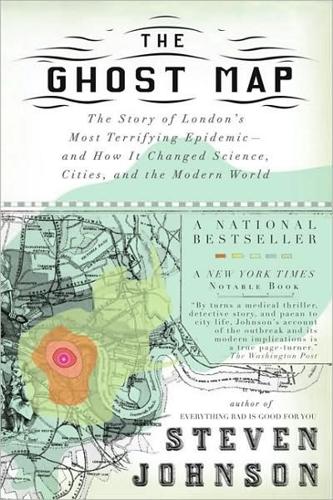
The Ghost Map: A Street, an Epidemic and the Hidden Power of Urban Networks.
by
Steven Johnson
Published 18 Oct 2006
The bigger the city, the more likely it is that you’ll be able to make an interesting link, because the overall supply of social groups and watering holes and local knowledge is so vast. Jane Jacobs observed many years ago that one of the paradoxical effects of metropolitan life is that huge cities create environments where small niches can flourish. A store selling nothing but buttons most likely won’t be able to find a market in a town of 50,000 people, but in New York City, there’s an entire button-store district. Subcultures thrive in big cities for this reason as well: if you have idiosyncratic tastes, you’re much more likely to find someone who shares those tastes in a city of 9 million. As Jane Jacobs wrote: Towns and suburbs… are natural homes for huge supermarkets and for little else in the way of groceries, for standard movie houses or drive-ins and for little else in the way of theater.
…
Edmund Burke, Fanny Burney, Percy Shelley, William Hogarth—all were Soho residents at various points in their lives. Leopold Mozart leased a flat on Frith Street while visiting with his son, the eight-year-old prodigy Wolfgang, in 1764. Franz Liszt and Richard Wagner also stayed in the neighborhood when visiting London in 1839–1840. “New ideas need old buildings,” Jane Jacobs once wrote, and the maxim applies perfectly to Soho around the dawn of the Industrial Age: a class of visionaries and eccentrics and radicals living in the disintegrating shells that had been abandoned a century ago by the well-to-do. The trope is familiar to us by now—artists and renegades appropriate a decaying neighborhood, even relish the decay—but it was a new pattern of urban settlement when Blake and Hogarth and Shelley first made their homes along the crowded streets of Soho.
…
In fact, the runaway growth of metropolitan centers may prove to be essential in establishing a sustainable future for humans on the planet. That reversal of fortune has much to do with the shifting relationship between microbe and metropolis that the Broad Street epidemic helped set in motion. “Cities were once the most helpless and devastated victims of disease, but they became great disease conquerors,” Jane Jacobs wrote, in one of many classic passages from Death and Life of the Great American City. All the apparatus of surgery, hygiene, microbiology, chemistry, telecommunications, public health measures, teaching and research hospitals, ambulances and the like, which people not only in cities but also outside them depend upon for the unending war against premature mortality, are fundamentally products of big cities and would be inconceivable without big cities.
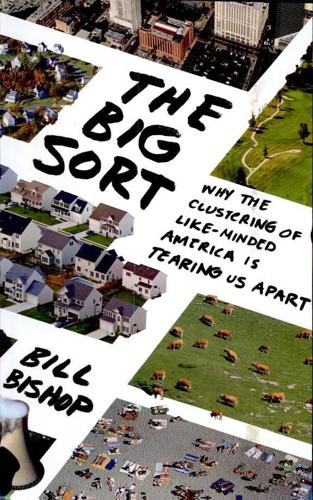
The Big Sort: Why the Clustering of Like-Minded America Is Tearing Us Apart
by
Bill Bishop
and
Robert G. Cushing
Published 6 May 2008
We drove and when a place felt comfortable, seemed right, my wife, the daughter of one of Kentucky's last New Deal liberals, drew a smiley face on the map. We didn't intend to move into a community filled with Democrats, but that's what we did—effortlessly and without a trace of understanding about what we were doing. We bought a house on one of those smiley-face streets, a shady neighborhood of dog walkers, Jane Jacobs-approved front porches, bright paint, bowling-ball yard art, and YOU KEEP BELIEVING; WE'LL KEEP EVOLVING bumper stickers. In 2000, George W. Bush, then the governor of Texas, took 60 percent of the state's vote. But in our patch of Austin, Bush came in third, behind both Al Gore and Ralph Nader.
…
The unusual thing about this country has been the stubborn and quite strong connection between religious belief and political party—a cultural peculiarity that, in the post-materialist politics of values, has allowed computer technicians in Orange County to find common cause with West Virginia coal miners and truck drivers.73 6. THE ECONOMICS OF THE BIG SORT Culture and Growth in the 1990s Opportunity, not necessity, is the mother of invention. —JANE JACOBS "An Inexplicable Sort of Mass Migration" THE Baton Rouge Advocate ran a series of stories in 2002 titled "Leaving Louisiana"—and people were. They were hoofing it from Louisiana by the hundreds of thousands long before Hurricane Katrina washed, rinsed, and tumbled out those who remained.
…
The entire society would be more productive and richer because of one person's new way of arranging a limited set of ingredients.34 "No amount of savings and investment, no policy of macroeconomic fine-tuning, no set of tax and spending incentives can generate sustained economic growth unless it is accompanied by the countless large and small discoveries that are required to create more value from a fixed set of natural resources," Romer wrote.35 According to Romer-inspired "new growth theory," ideas were the essential factor in increasing economic returns. City life was key for such economies of ideas to flourish, because cities sped both the creation and the spread of useful knowledge. That insight came from a woman who never graduated from college and was best known for her observations about city planning. In 1969, Jane Jacobs published the first edition of The Economy of Cities, a book that described how ideas scattered through urban areas, creating new industries and new wealth.* Jacobs wrote that new wealth and businesses didn't stem from isolated discoveries or unique inventions. Innovations sprang from older lines of work—"parent work," she called it.

Stacy Mitchell
by
Big-Box Swindle The True Cost of Mega-Retailers
and
the Fight for America's Independent Businesses (2006)
Local merchants derive much of their social standing from their accomplishments within the community; they win recognition and status from such things as taking the lead in addressing a local problem, organizing a fund-raiser for a local cause, or restoring a landmark downtown commercial building to its full glory.9 Local business owners often take on the role of what Jane Jacobs, author of the monumental Death and Life of Great American Cities, calls “public characters.” These are people stationed in public places who carry out a wide range of informal community tasks. Public characters talk to many people in the course of a day and, through this contact, serve to spread news and information and to strengthen the web of ties that bind communities COMMUNITY LIFE 79 together.
…
The second reason is that smaller stores better fit the scale of many communities, including both small towns and big-city neighborhoods. Vibrant, walkable downtowns and neighborhoods are invariably composed of a mix of many small and midsize uses—rather than a single use that covers ten acres. As the insightful urban observer Jane Jacobs once noted, “A lively city scene is lively largely by virtue of its enormous collection of small elements.” A third reason is that, the larger the store, the greater the impacts on its surroundings. The size of the region from which a store pulls customers, and thus the amount of tra‰c it generates, for example, expands in direct proportion to its scale.38 Two planning issues closely related to scale are location and site design.
…
I am grateful to all of the people who agreed to be interviewed for this book and generously gave of their time and expertise. Chuck D’Aprix contributed valuable research to the final chapter. Like all books, this one is built on the work of many other writers, including Joanna Blythman, Barbara Ehrenreich, Liza Featherstone, Thom Hartmann, Jane Jacobs, Marjorie Kelly, David Korten, James Howard Kunstler, Greg LeRoy, David Morris, Al Norman, Ray Oldenburg, Eric Schlosser, E. F. Schumacher, and Michael Shuman. I want to thank David Korten, who first suggested I write this book. My agent, Anna Ghosh, was wonderfully enthusiastic about this project and found a great home for it in Beacon Press, which has been independently publishing books for more than 150 years.
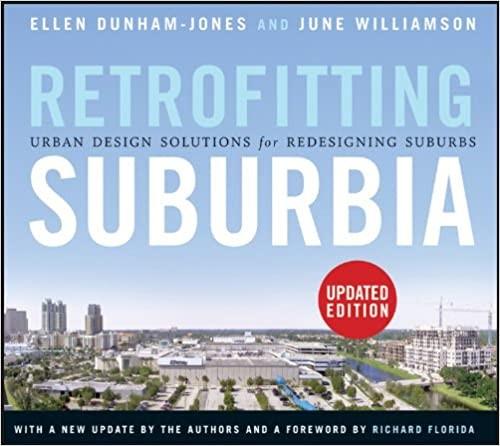
Retrofitting Suburbia, Updated Edition: Urban Design Solutions for Redesigning Suburbs
by
Ellen Dunham-Jones
and
June Williamson
Published 23 Mar 2011
Suburbia accounts for a large and growing share of the nation’s economic output but also to its biggest carbon footprints, its highest obesity rates, and the most automobile fatalities. Sure our suburbs need some upgrading and beautification, more parks and green space, but the real key to suburban renewal lies in two key, related factors—walkability and density. As Jane Jacobs and the Nobel Prize–winning economist Robert Lucas have shown, the clustering of people and economic activity is the basic engine of economic life—for cities, suburbs, and nations alike. When interesting people rub against each other, they spark new ideas; the clustering of economic assets and activities accelerates the formation of new entrepreneurial enterprises and dramatically increases overall productivity.
…
Furthermore, recent historical scholarship is bringing to light the ways in which socioeconomic, ethnic, and racial diversity have always been characteristic of suburban settings, despite generations of commentators who assumed otherwise. (See Figure 2–1.) Historian Becky Nicolaides points out how the scathing mid-century critiques of Jane Jacobs, Lewis Mumford, and William Whyte created “a recognizable cultural icon that lives on even in the popular culture of our own day.” She cites the “hellish ’burbs” depicted in recent films like American Beauty and the popular television series Desperate Housewives.2 Despite these persistent stereotypes and critiques, a close look will reveal that there is a great deal of demographic diversity within suburbs and, with retrofitting, increasing diversity in physical patterns as well.
…
The silver lining to the failure of a big box is the availability of cheap space for alternative uses. This is especially important for nonprofit groups, cultural facilities, or local shops that cannot generally afford new construction or extensive site work yet are in need of central locations to best serve their constituents. In The Death and Life of Great American Cities, published in 1961, Jane Jacobs criticized how urban renewal and large swaths of “one-age construction” robbed cities of older, affordable buildings—a vital asset for diversity. “Chain stores, chain restaurants, and banks go into new construction. But neighborhood bars, foreign restaurants, and pawn shops go into older buildings.
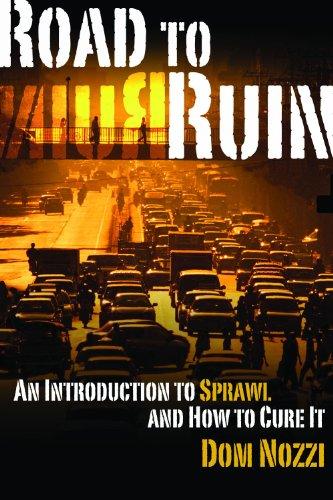
Road to ruin: an introduction to sprawl and how to cure it
by
Dom Nozzi
Published 15 Dec 2003
I’ll bet Dom Nozzi was at work when the need became apparent for a balanced, straight-forward text that breaks past the usual shrill rhetoric about cars and traffic. While it is written for popular readers, Road to Ruin also picks up and advances an important scholarly thread stirred by Lewis Mumford, furthered by Jane Jacobs, and more lately coalesced into practice by the New Urbanists and Smart Growthers. A two-part formula about land use and transportation was associated with twentieth-century city planning in America, especially in the rapidly changing Sun Belt. First, the formula assumed that land uses would remain separate and kept low in their intensity and density.
…
Walkable Streets and Blocks As designers have ignored the needs of pedestrians over the past several decades, the public realm—the streets, parks, sidewalks, and plazas—has become dangerous, uninviting, and undesirable. Pedestrians in such a community represent little more than inconveniences to motorists. As Jane Jacobs noted 40 years ago in The Death and Life of Great American Cities, “lowly, unpurposeful and random as they may appear, sidewalk contacts are the small change from which a city’s wealth of public life may grow” (p. 72). Yet many new residential and commercial developments either neglect to build a sidewalk along the frontage street or build one that is too narrow to be usable.
…
These forms of affordable housing become increasingly affordable as the number of New Urbanist communities grows, which will lower prices as a result of competition. Mixed-use and mixed-income housing units are allowable and acceptable in New Urbanist designs because they are properly scaled and detailed and do not generate as much car travel as single-use developments. As Jane Jacobs noted in The Death and Life of Great American Cities, vibrant downtowns (which are hurt by an auto-based culture) provide important entry-level, low-capital job opportunities for low-income people—selling food from carts, providing personal services, selling specialty goods, and so forth. And what do our auto-dominated communities offer the poor?
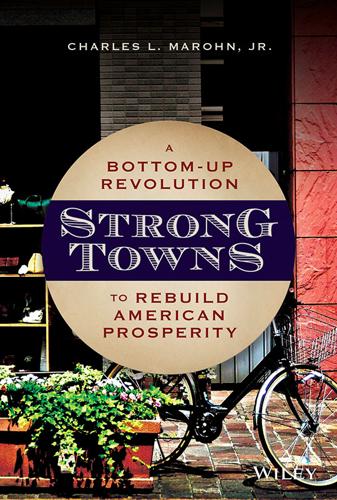
Strong Towns: A Bottom-Up Revolution to Rebuild American Prosperity
by
Charles L. Marohn, Jr.
Published 24 Sep 2019
These opposite rows of buildings were spaced at ratios comfortable to human beings. They were not so close as to feel constrained, but they were not so far that they failed to create an edge. Edges are very important for humans. In our habitats, we are drawn to edges. This is a phenomenon observed by Jane Jacobs in her book The Death and Life of Great American Cities, then elaborated on by Christopher Alexander in A Pattern Language. In public spaces, Jacobs notes that people “stay to the sides,” while Alexander states that people “naturally gravitate toward the edge.” This street in Pompeii provided that opportunity.
…
Successful blocks beget successful neighborhoods. Prosperous neighborhoods make up a prosperous city. A strong and stable state is an assembly of strong and stable cities. In Cities and the Wealth of Nations, a book I believe presents the most insightful economic analysis since Keynes, journalist and author Jane Jacobs describes how cities, not nations, are the only coherent level of economic analysis. Distinctions between city economies and the potpourris we call national economies are important not only for getting a grip on realities; they are of the essence where practical attempts to reshape economic life are concerned.8 A measurement of GDP tells us as much about American prosperity as a measurement of the average wealth of a hundred households when one of those households includes billionaire Jeff Bezos.
…
read-now=1&seq=19#page_scan_tab_contents. 2 Jared Diamond, The World Until Yesterday (New York: Penguin Books, 2012). 3 https://fraser.stlouisfed.org/files/docs/publications/books/posteconprob_harris_1943.pdf. 4 St. Louis Fed, https://fredblog.stlouisfed.org/2015/01/on-household-debt/. 5 St. Louis Fed, https://fred.stlouisfed.org/series/PSAVERT. 6 St. Louis Fed, https://fred.stlouisfed.org/series/FEDFUNDS. 7 https://www.strongtowns.org/journal/2015/9/14/lafayette-pipes-and-hydrants. 8 Jane Jacobs, Cities and the Wealth of Nations: Principles of Economic Life (New York: Random House, 1985). 9 https://money.cnn.com/2005/07/12/markets/bondcenter/bond_yields/. 10 http://futures.tradingcharts.com/historical/DJ/2005/0/continuous.html. 11 https://money.cnn.com/2005/08/09/news/economy/fed_rates/index .htm?

Dreyer's English: An Utterly Correct Guide to Clarity and Style
by
Benjamin Dreyer
Published 15 Jan 2019
I’d even urge you to set aside the Traditional Exceptions for Antiquity and/or Being the Son of God and go with: Socrates’s Aeschylus’s Xerxes’s Jesus’s 26. A warning: Hasty typing fingers are apt to render the likes of Jane Jacobs’s activism as Jane Jacob’s activism As typos go, that sort of thing is perilously easy to commit and to overlook. Be careful. 27. THE POSSESSIVIZATION OF DONALD TRUMP, JR. A GRAND GUIGNOL IN ONE ACT In July 2017 one of our nation’s preëminent if perhaps somewhat self-delightedly parochial magazines foisted upon the world this headline: DONALD TRUMP, JR.,’S LOVE FOR RUSSIAN DIRT The writer Michael Colton, in an aghast tweet, identified this particular method of rendering a possessive “period-comma-apostrophe bullshit,” which may not be the precise technical term for it but which does just fine anyway.
…
When the talk turns to, say, the writer of Great Expectations and Our Mutual Friend or the urban activist and author of The Death and Life of Great American Cities or the nemesis of said urban activist and author, how do we style their ownership? Well, I can certainly tell you how I style them: Charles Dickens’s novels Jane Jacobs’s advocacy Robert Moses’s megalomania Though you may come across much discussion elsewhere regarding the appending or not appending of post-apostrophe s’s based on pronunciation,*22 convention, or what day of the week it is, I think you’ll find that, as with the universal application of the series comma, you’ll save yourself a lot of thinking time by not thinking about these s’s and just applying them.
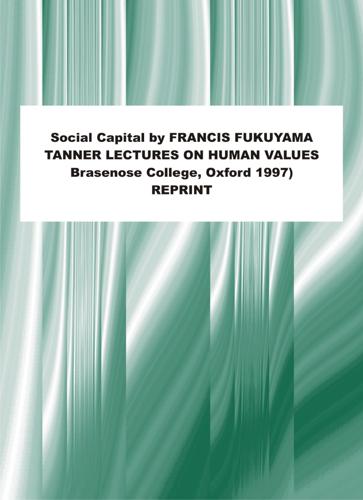
Social Capital and Civil Society
by
Francis Fukuyama
Published 1 Mar 2000
SOCIAL CAPITAL : DEFINITIONS The first use of the term “social capital” that I am aware of was in Jane Jacobs’s classic work The Death and Life of Great American Cities, in which she explained that the dense social networks that existed in older, mixed-use urban neighborhoods constituted a form of social capital and were far more responsible for cleanliness, absence of street crime, and other quality-of-life measures than were formal institutional factors like police protection.2 1 These are the broad themes of Trust: T h e Social Virtues and the Creation o f Prosperity (New York: Free Press, 1995). 2 Jane Jacobs, T h e Death and Life o f Great American Cities (New York: Vintage Books, 1961), p. 138
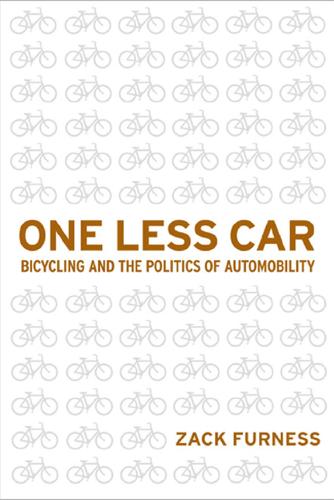
One Less Car: Bicycling and the Politics of Automobility
by
Zack Furness
and
Zachary Mooradian Furness
Published 28 Mar 2010
We are exchanging the meaningful and varied life of the cities for our increasingly monotonous life on wheels. The heart of the city should be served chiefly by rapid transit, buses, taxis and above all the human foot. The choice is clear and urgent: Does the city exist for people, or for motorcars?31 Jane Jacobs brought a similar set of questions to bear on the issue of transportation, but unlike Mumford, she did not see cars as the primary impediment to sound urban planning or a more orderly public sphere. rather, she posed the problem in terms of the urban planning paradigm itself, specifically the assumption that cities could, or should, be designed in accordance with a grand plan or master narrative: automobiles are often conveniently tagged as the villains responsible for the ills of cities and the disappointments and futilities of city planning.
…
For better or worse, the aT movement directed attention to issues of scale, specifically the correlation between the size of technological systems and their effects on societies, which Schumacher describes as inversely proportional, hence smaller being beautiful. This line of inquiry is significant because it closely paralleled critiques of urban planning and transportation in the same general period. Jane Jacobs was among those who challenged not only the size and scale implicit to orthodox urban planning but also the spatial tensions between the needs of pedestrians and those required of automobiles. ivan illich similarly bemoaned modern transportation, though his critique dealt less with the size and scale of auto-mobility than its high energy demands and its speed: “a true choice among practical policies and of desirable social relations is possible only where speed is restrained. participatory democracy demands low-energy technology, and free people must travel the road to productive social relations at the speed of a bicycle.”97 Schumacher, Jacobs, and illich formed something of a holy trinity for bicycle advocates who used their theories to create a more philosophically informed analysis of cycling in the 1970s. illich’s ideas understandably took on a prominent role because he mapped an entire politics of technology around the bicycle itself, writing in Energy and Equity: Bicycles let people move with greater speed without taking up significant amounts of scarce space, energy, or time.
…
Charlie McCorkell, Transportation alternative’s second executive director and a thirty-year bike advocate/builder/educator, recalls that cyclists in the early 1970s were “much more outside the system then today,” and Steven Faust, another longtime bike advocate and planner in new york City, says that cyclists were considered “sociologically marginal people.”102 rivvy neshama speaks clearly to the correlation between biking and the counterculture in describing the motivation for Ta’s 1974 Bike-in: i was thinking of what happened at that time to create a culture ripe for the idea. The environmental movement was new, idealistic, and hopeful, and that’s the movement i came from. Urban planners were also idealistic and looking to create humane environments; Barry Benepe and Brian Ketcham were two of them, and two of our founders influenced by Jane Jacobs (David Gurin was also influenced by Jane). Health, being more at one with nature, and using our own resources were three ideals of the time, influenced by the Whole Earth Catalog. it was a time of be-ins, love-ins, smoke-ins . . . so it was natural to plan a huge Bike-in—one that would bring all groups together around a common dream.103 What is interesting about these early years of bike activism is that despite its cultural emphasis, there was also a firmly entrenched commitment to transforming bicycling and automobility through formal political channels, whether it be lobbying, hosting community events, meeting with politicians and urban planners, circulating petitions, and/or getting involved with local (and regional) governmental affairs.

Age of the City: Why Our Future Will Be Won or Lost Together
by
Ian Goldin
and
Tom Lee-Devlin
Published 21 Jun 2023
Ed Glaeser’s Triumph of the City, Richard Florida’s The Rise of the Creative Class, Enrico Moretti’s The New Geography of Jobs and many other excellent books over recent years have laid a trail before us, as have canonical works such as Lewis Mumford’s The City in History, Peter Hall’s Cities in Civilization, Jane Jacobs’ The Death and Life of Great American Cities and Paul Bairoch’s Cities and Economic Development. We have also been inspired by recent works that explore the importance of place more broadly, such as Tim Marshall’s Prisoners of Geography, and provide a fresh historical perspective on why our world is the way it is today, including Peter Frankopan’s The Silk Roads.
…
In the early decades of the twentieth century, as public concern continued to grow over the quality of life for the working poor in overcrowded and ramshackle inner city housing, many rich countries began major efforts to clear such areas and replace them with social housing, a process that accelerated in the aftermath of the Second World War. Britain was a particularly enthusiastic adopter, building over four million social houses between the end of the war and the start of the 1980s.43 Such initiatives were not without their critics. For example, in the 1960s the urbanist Jane Jacobs argued forcefully against the prevailing approach in New York City of bulldozing slums and replacing them with lifeless, poorly designed housing projects that undermined local communities.44 But social housing has played an important role in reducing inequality in cities by ensuring that all residents can have their basic need for shelter met.
…
And they have made it possible for people to shuttle from destination to destination without ever having to encounter anyone not of their choosing. But seclusion and insularity are poor foundations for a cohesive society. The challenges associated with low-density sprawl have been understood for a long time. In her pioneering 1961 book The Death and Life of Great American Cities, Jane Jacobs argued that the subdivision of cities into areas with distinct functions – for living, for working and for playing – made them less safe and less enriching places to live.7 Since then, many cities have embraced mixed-use development and encouraged the regeneration of inner city neighbourhoods. Urban centres from Copenhagen to Vancouver have reclaimed streets for pedestrians, helping to increase the casual encounters that foster a sense of community.
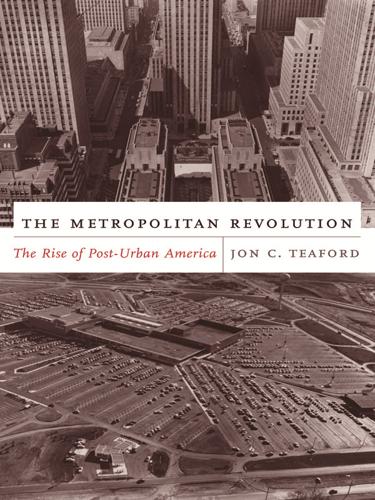
The Metropolitan Revolution: The Rise of Post-Urban America
by
Jon C. Teaford
Published 1 Jan 2006
Lack of demand for new apartments, excessive red tape, delays owing to political meddling, and the cumbersome review process mandated by federal officials all meant that an urban renewal project was a risky investment at best. One could make more money with less hassle by building shopping malls in suburbia. The most notable foe of the renewal and highway strategy of reinforcing the city center was Jane Jacobs. During the early 1960s through both word and deed, she assaulted prevailing notions about urban revitalization and presented an alternative vision. An editor of Architectural Forum, she was also a wife and mother living in the West Village area of Manhattan, and like other female foes of renewal, such as Dolores Rubillo and Florence Scala, Jacobs considered home and neighborhood rather than downtown skyscrapers and superhighways as the foundations of her city.
…
McDonald’s and Holiday Inns continued to proliferate along the metropolitan fringe, and corporate headquarters were joining them in suburbia. The centripetal expressways and renewal projects raised more wrath than municipal tax dollars or downtown sales figures. Despite the ambitious efforts of central-city promoters, metropolitan America was coming apart. Many Americans were finding bliss in Southdale Center; others like Jane Jacobs were discovering the good life in the West Village. But the impetus for drawing the whole together through a radical expressway and renewal strategy was waning. 4 The Debacle “Riots, skyrocketing crime, tax problems that multiply raise this question: Can the big cities of this country ever stage a comeback?”
…
Yet most Americans seemed to disagree with these naysayers, investing in millions of suburban tract homes, filling outlying malls, and making Wal-Mart the world’s largest retailer. Despite all the paeans to traditional neighborhoods, urbanity, and the enriching diversity of the core, Americans left the central city so admired by Jane Jacobs and her ilk and bought into the lifestyle sold by William Levitt and Sam Walton. Many of those who remained in the central cities retrofitted the old buildings and old neighborhoods to suit their own needs. They created gay ghettos and Yuppie havens, displacing working-class taverns with restaurants and bars deemed “hip” or trendy.
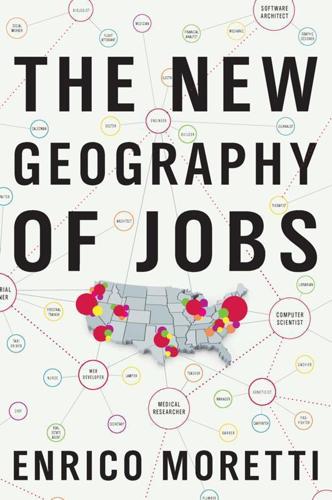
The New Geography of Jobs
by
Enrico Moretti
Published 21 May 2012
For a high school dropout, the effect is five times larger. Thus, the lower the skill level, the larger the salary gains from other people’s education. A large number of highly educated workers in a city is also associated with more creativity and a better ability to invent new ways of working. One way to see this is to look at what Jane Jacobs called “new work,” novel occupations that did not exist before. The economist Jeffrey Lin has studied which cities are the most creative in America, in the sense that they generate the most “new work” as measured by jobs that did not exist ten years earlier. Examples of new work in 2000 include Web administrator, chat-room host, information systems security officer, IT manager, biomedical engineer, and dosimetrist (don’t ask: I have no idea what a dosimetrist does).
…
This approach to economic development is based on the intuitive notion that public monies can jump-start a local economy trapped in poverty. But critics on both the right and the left have lambasted such initiatives, either as big government overreach or top-down control of local communities. In an influential 1984 article in the New York Review of Books, the progressive urban thinker Jane Jacobs wrote a scathing critique of big-push policies, including the TVA, arguing that it is an unnatural way to foster local economies and concluding that “in practice, they work miserably.” How can we assess these place-based policies in a rigorous way? The real test is not whether they create jobs during the push.
…
This is a world in which the iPhone is designed and engineered in Cupertino by Chinese or Indian PhDs and native American workers are the waiters, carpenters, and nurses who support them. What America decides about education is one of the most important strategic decisions facing the country today. The Local Global Economy As the great urban thinker Jane Jacobs recognized fifty years ago, communities, just like natural ecosystems, are not static entities but continually evolving creative commons that expand or shrink depending on the ingenuity of their residents. They are human ecosystems. Their process of continuous destruction and regeneration is ultimately what drives innovation, today as in the past.

Twilight of the Elites: America After Meritocracy
by
Chris Hayes
Published 11 Jun 2012
News and World Report, May 21, 2006. 50 “The boy seemed terribly, terribly bright”: See Jane Mayer, The Dark Side: The Inside Story of How the War on Terror Turned into a War on American Ideals (New York: Random House, 2009), p. 57. 51 “He was always right”: Ibid., p. 64. 52 “Pollack manages to eschew the cant, stupidity, and obfuscation”: Joshua Micah Marshall, “The Reluctant Hawk: The Skeptical Case for Regime Change in Iraq,” Washington Monthly, November 2002. 53 “argument for invading Iraq is surely the most influential book of this season”: Bill Keller, “The I-Can’t-Believe-I’m-a-Hawk Club,” New York Times, February 8, 2003. 54 “I was 21 years old and kind of a jerk”: Matthew Yglesias, “Four Reasons for a Mistake,” ThinkProgress, August 19, 2010. 55 “If you [the average investor or the average corporation] don’t know anything”: Ho, Liquidated, p. 40. 56 “improper dependency”: Lessig, Republic, Lost, p. 245. 57 what Jane Jacobs described as the Guardian Syndrome: See Jane Jacobs, Systems of Survival: A Dialogue on the Moral Foundations of Commerce and Politics, (New York: Vintage, 1992). 58 “At some point after incomes in the financial sector took off”: Thomas Ferguson and Robert Johnson, “When Wolves Cry ‘Wolf’: Systemic Financial Crises and the Myth of the Danaid Jar,” http://andrewgelman.com/movabletype/mlm/Ferg-John%201NET%20Conf%20Cambridge%20UK%20April%202010%20final%20%20pdf-1.pdf, accessed January 23, 2012. 59 “Mishkin even took $124,000 from the Iceland Chamber of Commerce”: See Annie Lowrey, “The Economics of Economists’ Ethics,” Slate, January 5, 2011, http://www.slate.com/articles/business/moneybox/2011/01/the_economics_of_economists_ethics.html, accessed January 23, 2012. 60 “adapted to the new environment with the most agility and creativity”: Janine R.
…
There are certain institutional functions and professional roles—like, say, member of Congress—that we want to see insulated from crass commercial concerns. And yet during our era of fractal inequality, the noncommercial sphere has shrunk, leaving noncommercial institutions increasingly dependent on commercial interests. What we’re left with is a blurring of the boundaries between what Jane Jacobs described as the Guardian Syndrome on the one hand and the Commercial Syndrome on the other. According to Jacobs, the Guardian Syndrome (“shun trading,” “be loyal,” “treasure honor”) regulates the behavior of the soldier, the politician, and the policeman among others, while the Commercial Syndrome (“compete,” “respect contracts,” “promote comfort and convenience”) guides the behavior of the banker, the baker, and the businessman.
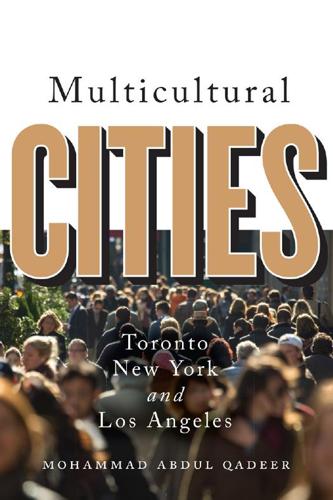
Multicultural Cities: Toronto, New York, and Los Angeles
by
Mohammed Abdul Qadeer
Published 10 Mar 2016
Multiculturalism is both a lived reality and an ideal of social life in times of global flows and universal rights. These propositions will illuminate the search for patterns in multicultural cities in the chapters to come. The diversity of people, activities, and roles has been the strength of cities. Peter Hall traces diversity as the source of creativity even in ancient and medieval cities.45 Jane Jacobs has identified diversity as the driving force of urban economy and social life.46 Richard Florida offers the theory that “regional economic growth is powered by creative people who prefer places that are diverse, tolerant and open.”47 Yet this diversity is sustained by the city serving as the common ground.
…
When Vancouver’s new Canada Line was opened, the authorities printed instructions for the use of passengers. The city of Delhi, India, had volunteers patrolling a new subway line instructing passengers not to squat or spit on the floor.25 Making one aware of public expectations is a step in constructing social order. Jane Jacobs said that the social order of the street is “kept primarily by an intricate, almost unconscious, network of voluntary controls and standards among the people themselves.”26 This social order evolves in public places, such as streets, parks, plazas, theatres, and stores, through the (micro) politics of doubt and trust expressed among strangers.27 In these politics, stereotypes and suspicions lurk below the surface, but shared experiences and frequent contacts, combined with the ethos 162 Multicultural Cities of citizenship, resolve such feelings over time.
…
A Time for Reconciliation, Report of the Commission de Consultation sur les Pratiques d’Accommodement Reliées aux Différences Culturelles, (Quebec, 2008), 19. 43 Yasmeen Abu-Laban and Baha Abu-Laban, “Reasonable Accommodation in a Global Village,” Policy Options 26, no. 8 (2007), 30. 44 Julius Grey, “The Paradox of Reasonable Accommodation,” Policy Options 26, no. 8 (2007), 34–5. Notes to pages 36–44 279 45 Peter Hall, Cities in Civilization (London: Weidenfeld & Nicolson, 1998), 6. 46 Jane Jacobs, The Death and Life of Great American Cities (New York: Vintage Books, 1992), 14. 47 Richard Florida, The Flight of the Creative Class (New York: Collins, 2005), 62. 48 William Shakespeare, Coriolanus, act 3, scene 1. 49 Janet Abu-Lughod, Changing Cities: Urban Sociology (New York: HarperCollins, 1991), 140. 50 James Holston and Arjun Appadurai, “Cities and Citizenship,” Public Culture 8 (1996),188–9. 51 Ibid., 200. 52 Ash Amin, “The Good City,” Urban Studies 43, nos. 5/6 (May 2006),1012. 53 Susan S, Fainstein, The Just City (Ithaca; Cornell University Press, 2010), 3. 54 Ibid., 43. 55 Leonie Sandercock, Mongreal Cities (London: Continuum, 2003), 87. 56 Henri Lefebvre, Writings on Cities, trans.

The Bookshop: A History of the American Bookstore
by
Evan Friss
Published 5 Aug 2024
That discount, a way to encourage activism, lasted a lifetime. Anchored by Washington Square Park and home to NYU, Greenwich Village had a long history as an epicenter of literary talent and the avant-garde. The neighborhood of crooked streets was, in fact, defined by counterculture. Bohemians, Bob Dylan’s protest music, and Jane Jacobs’s anti-car evangelism all belonged to the Village. Oscar Wilde’s Mercer Street neighbors included a yoga studio and a black-light poster room. Down the block was a head shop that sold pipes and gave away feathers to random passersby. There were also gathering spaces for anti-draft activists one night and a “Homophile Discussion Group” the next.
…
“You won’t get mugged here,” one East Villager promised, pointing to the vendors. In the West Village, a fifty-one-year-old said he preferred to park near the tables: “No one’s going to break into my car, because the bookstore is always open.” The booksellers understood as much. “I’m a public character,” Hasan said, referring to a concept from Jane Jacobs’s most influential book, The Death and Life of Great American Cities. A Village resident herself, Jacobs argued that people like Hasan were what made a neighborhood a neighborhood. A comfortingly regular sight, they spread neighborhood news, added vitality, and gained community trust. “People like me are the eyes and ears of this street,” Hasan maintained.
…
One had opened a traditional bookstore. But most had given up bookselling entirely. Instead of booksellers, the park was now filled with dancers, comedians, jazz trios, and a classical musician who rolled his piano in on wheels. Aptekar’s stock hadn’t changed much: Mark Twain, Truman Capote, and Jane Jacobs were perennial favorites. His clientele—NYU students, tourists, and some Village residents—remained largely the same, too. But he felt defeated: “It was fun, at one point, with all those wonderful people, the camaraderie, the wonderful books that we’d see on each other’s tables, and the whole scene.

To Save Everything, Click Here: The Folly of Technological Solutionism
by
Evgeny Morozov
Published 15 Nov 2013
I’m thinking, in particular, of Ivan Illich’s protestations against the highly efficient but dehumanizing systems of professional schooling and medicine, Jane Jacobs’s attacks on the arrogance of urban planners, Michael Oakeshott’s rebellion against rationalists in all walks of human existence, Hans Jonas’s impatience with the cold comfort of cybernetics; and, more recently, James Scott’s concern with how states have forced what he calls “legibility” on their subjects. Some might add Friedrich Hayek’s opposition to central planners, with their inherent knowledge deficiency, to this list. These thinkers have been anything but homogenous in their political beliefs; Ivan Illich, Friedrich Hayek, Jane Jacobs, and Michael Oakeshott would make a rather rowdy dinner party.
…
Putnam, Elite Transformation in Advanced Industrial Societies: An Empirical Assessment of the Theory of Technocracy (Ann Arbor: Institute of Public Policy Studies, University of Michigan, 1976), 11. 137 “For Larry [Page] and Sergey [Brin], truth was often self-evident”: Douglas Edwards, “Google Goes Electric,” Xooglers, March 22, 2011, http://xooglers.blogspot.com/2011/03/google-goes-electric.html. 138 fundamental assumption “is that disagreements occur”: F. Ridley and J. Blondel, Public Administration in France (London: Routledge and Kegan Paul, 1964). 138 Jane Jacobs’ attack on unimaginative urban planning, Isaiah Berlin’s attack on “procrusteanism,” Hayek’s attack on central planning, Popper’s attack on historicism, Michael Oakeshott’s attack on rationalism: see Jane Jacobs, The Death and Life of Great American Cities (New York: Vintage, 1992); on Berlin’s “anti-procusteanism” see Jonathan Allen, “Isaiah Berlin’s Anti-Procrustean Liberalism: Ideas, Circumstances, and the Protean Individual,” paper presented at the annual meeting of the American Political Science Association (August 28–31, 2003, Philadelphia, PA).
…
The paradox is that, while technocracy itself is an ideology, most technocrats try their best to distance themselves from any insinuation that they might be driven by anything other than pragmatism and the pursuit of efficiency. Unfortunately, Crick’s attack on technological thinking has received less attention than several other similar attacks by his contemporaries: Jane Jacobs’s attack on unimaginative urban planning, Isaiah Berlin’s attack on “procrusteanism,” Friedrich Hayek’s attack on central planning, Karl Popper’s attack on historicism, and Michael Oakeshott’s attack on rationalism come to mind. Most of these important critiques of the arrogance and self-conceit of the planner and the reformer are united by a common theme: something about the experience of living in the polis with other human beings is essentially irreducible to formulaic expression and optimization techniques.
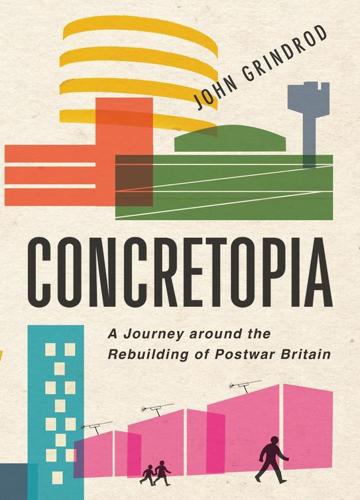
Concretopia: A Journey Around the Rebuilding of Postwar Britain
by
John Grindrod
Published 2 Nov 2013
But then among the thousands of council houses landed smaller estates of private housing: by 1978 over a fifth of all Cwmbran’s houses were privately owned. ‘They were worried then about creating a different sort of ghetto. It was a mixed social experiment. They were nervous about having lots and lots of large council estates,’ said Jim. He sat back, attempting to conjure up some kind of context for me. ‘By the end of the sixties Jane Jacobs had written her book in America’ – he was referring to the unlikely bestseller, The Death and Life of Great American Cities – ‘and there were lots of texts about “social engineering” it was called, steering people into these places. The town planning world was getting nervous about endlessly building council houses.’
…
Young architectural historians Dan Cruikshank and Colin Amery, in their short, sharp shock of a book, The Rape of Britain, described the redevelopment of towns such as Worcester, Bath and Hereford as ‘an officially sponsored competition to see how much of Britain’s architectural heritage could be destroyed in 30 years.’3 They were echoing a cry from across the Atlantic. Jane Jacobs’ 1961 book The Death and Life of Great American Cities had become, in its own way, as influential as Ebenezer Howard’s Garden Cities of To-morrow. In it she railed against the visions of modern life championed by Howard and Le Corbusier, and their ‘dishonest mask of pretend order, achieved by ignoring or suppressing the real order that is struggling to exist and to be served’.4 Instead she advocated a return to the bustle of traditional street life, before comprehensive development schemes and neighbourhood planning had simplified towns to death with their pedestrianised precincts and wholesale disruption of old street patterns.
…
‘We have learned one lesson,’ Matthew told a conference in 1974, after being named conservation advisor to the Secretary of State for Scotland. ‘Buildings are infinitely more adaptable than we have hitherto been persuaded to believe … there are many ways of using these solid structures today, or any other day.’6 It was the message that had resonated across the Atlantic from Jane Jacobs and her book on the life of America’s old city streets. Many would call Matthew’s conversion to the conservation movement a betrayal of his earlier modernist principles. But Matthew himself would argue that his vision had never wavered; what he wanted to create and what he wanted to protect were one and the same: buildings of quality.

City: A Guidebook for the Urban Age
by
P. D. Smith
Published 19 Jun 2012
Today the impact of Le Corbusier and the Modernist movement on town planning is widely seen as little short of a disaster.53 The urban theorist and historian Richard Sennett has accused Modernists of impoverishing the art of urban design and of undermining the complex social fabric of the city. In particular, the vertical city destroyed street life, an essential urban experience for thousands of years, one created by many hands, from builders to architects: ‘The London street has “citiness”. It is incoherent. Incoherent is good.’54 For Sennett and Jane Jacobs, the Modernists’ scientific plans eliminated the sources of density, diversity and even disorder that are vital to the creation of dynamic urban communities. Instead, from Moscow to Chicago, what Sennett terms the ‘overplanning’ of post-war cities has produced a ‘dystopia’ in which high-rise housing estates have become warehouses for the poor.58 Deyan Sudjic, director of London’s Design Museum, also believes that the inhabitants of today’s cities are ‘witnesses to the many soured urban utopias’ of the Modernists.59 A city is shaped by many people, from speculators to visionaries.
…
Wilson has himself admitted, ‘I still to this day do not know if improving order will or will not reduce crime.’53 The ‘zero tolerance’ approach has proved influential around the world, not least in the United Kingdom where, in order to combat the fear of crime in urban areas, British cities have pioneered a revolution in surveillance technologies. The urbanist Jane Jacobs famously advocated ‘eyes on the street’ as the best way of providing ‘natural surveillance’ and thus safe cities.54 But modern Britain prefers camera lenses to human eyes. Today, the land of George Orwell’s Big Brother has more surveillance cameras than the rest of Europe combined. Nearly all town centres in the United Kingdom have CCTV systems.
…
Bernard E. Harcourt and Jens Ludwig, ‘Broken Windows: New Evidence from New York City and a Five City Social Experiment’, University of Chicago Law Review, 73 (2006), cited from Anna Minton, Ground Control: Fear and Happiness in the Twenty-First-Century City (London: Penguin, 2009), 146. 54. Jane Jacobs, The Death and Life of Great American Cities (1961; repr. Harmondsworth: Penguin, 1994), 42–7. 55. Paul Lewis, ‘CCTV in the sky: police plan to use military-style spy drones’, Guardian (23 January 2010); cf. Sophie Body-Gendrot, ‘Confronting Fear’, in Ricky Burdett and Deyan Sudjic, eds, The Endless City (London: Phaidon, 2007), 356, and Minton (2009), 31. 56.
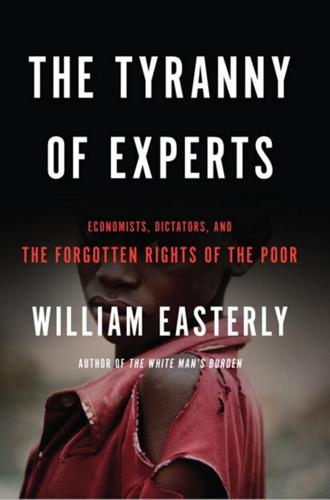
The Tyranny of Experts: Economists, Dictators, and the Forgotten Rights of the Poor
by
William Easterly
Published 4 Mar 2014
When I moved in here,” said Silver, “it had been a carpentry shop and there was literally a foot of sawdust over everything.”33 Meanwhile, Greenwich Village residents were horrified at what the Moses plan would do to their neighborhood. The SoHo artists formed an anti-Moses alliance with the Village residents. A West Village resident named Jane Jacobs engaged Moses on the same debate that failed to happen in development: spontaneous solutions versus conscious direction. In a classic book first published in 1961, Jacobs mocked the urban experts’ “pseudoscience of city rebuilding and planning” where “a plethora of subtle and complicated dogma have arisen on a foundation of nonsense.”
…
Jacobs praised the local neighborhoods as having organically evolved to meet the needs of residents, as embodiments of social networks that helped prevent crime (her famous “eyes on the street”), and as incubators of innovation.34 She might have added that they also were a source of democratic resistance to technocratic officials who would eradicate those same neighborhoods if they could. The belief in all-knowing experts fades when they are applying their conscious direction to you. Moses had won almost all of his previous battles in New York, but he lost this one, the last of his career. Greene Street had survived its near-death experience. What happened next vindicated Jane Jacobs’s position even more. The art boom took over. On the Greene Street block alone, at least-thirty-five art galleries would appear from the 1970s through the 1990s. In 1980, Leo Castelli, the art dealer representing Robert Rauschenberg, opened a gallery at 142 Greene Street. Castelli’s gallery also featured Roy Lichtenstein and Andy Warhol, among many other successful artists.
…
Under the Invisible Hand, the high payoffs were not only to the owners of the galleries, stores, and residences, but to their customers and suppliers in the larger society. The value of the block in the long run was simply the freedom to be whatever its residents and customers wanted it to be. The moral of the climactic phase of the Greene Street story is not just that Jane Jacobs was proven right after winning her debate with Robert Moses to save SoHo and Greene Street. Not every such debate has a positive outcome. The story just happens to conform to a broader pattern, for which we have seen evidence throughout this book. A system based on individual rights—both economic and political—tends to reward positive actions and stop negative ones.
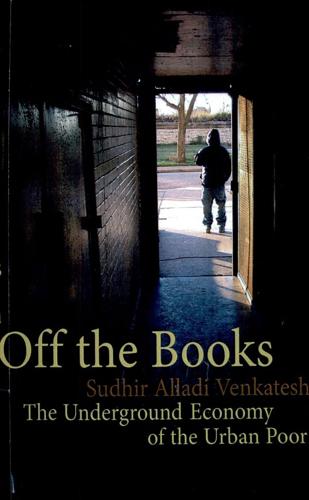
Off the Books
by
Sudhir Alladi Venkatesh
Even those shopkeepers who have established productive relationships with the hustling population nevertheless express frustration at having to accommodate this street presence. For these reasons, and because of the internal competition that exists over opportunities to work and make money, hustling is never secure and it takes a great deal of work for street based vendors and traders to stay in one place over time. Jane Jacobs offered the classic theory of how public order is maintained in the city with her notion of "eyes on the street," the ur-concept for modernist planning in terms of creating safe urban spaces.9 Jacobs drew on the vitality of New York City's streets—primarily the West Village neighborhood in Manhattan—to develop ideas regarding the important role that private citizens play in public space management.
…
So they routinely adopt alternate strategies to promote collective safety, especially in an area where residents' involvement in criminality is shaped by their own need to make ends meet by deriving illegal income. These strategies may be highly informal, such as private agreements with residents and secretive mediation routines. One of the essential components of good policing strategy, identified by Jane Jacobs, is an officer's ability to develop relationships with shopkeepers and residents. It may mean making compromises, such as retaining troublemakers as sources of information rather than removing them outright from the streets. Securing reliable informants is nothing new and has always been an ingredient in good law enforcement.
…
See Mary Patillo, Black Picket Fences: Privilege and Peril in the Black Middle Class (Chicago: University of Chicago Press, 1999). 12. Martin Sanchez Jankowski provides a systematic analysis of how gangs develop relationships with persons and organizations in the wider community. See his Islands in the Street (Berkeley: University of California Press, 1991). 13. For the classic rendition, see Jane Jacobs, The Death and Life of Great American Cities (New York: Vintage, 1961), 30. 14. Robert Sampson has developed the notion of "collective efficacy"—the "working trust and shared willingness of residents to intervene in sharing social control. The concept of collective efficacy captures the link between cohesion—especially working trust—and shared expectations for action."

Whole Earth: The Many Lives of Stewart Brand
by
John Markoff
Published 22 Mar 2022
From the outset, architects and their profession were in his crosshairs. “Frank Lloyd Wright houses are aesthetically paralyzed forever,” he wrote in his journal one day. “His commercial buildings get demolished.” He spoke with Peter Calthorpe and Sim van der Ryn as well as Christopher Alexander and Jane Jacobs. He also went back to his Whole Earth Catalog roots and interviewed J. Baldwin and Lloyd Kahn and went back even further to visit with his early mentor and boss Gordon Ashby. He also formed a small brain trust of people that he could use as a sounding board as he played with the ideas for the structure and the content of the book.
…
(How Buildings Learn would also include several uniquely Brandian touches, including the author’s address, on the premise that “publishers are ill-equipped to forward mail and authors need contact from readers to make corrections for later printings and to make things happen in the real world.”) After seven years of research and writing, How Buildings Learn: What Happens After They’re Built was published in 1994. As Christopher Alexander’s A Pattern Language and Jane Jacobs’s The Death and Life of Great American Cities had for their respective authors, How Buildings Learn established Brand as an independent and original thinker on design, urbanism, and ingenuity. Of all five of his books, this would be the one in which he would take the most pride. That said, when it was published, the book made much less of a splash than The Media Lab.
…
Moreover, while others saw great poverty in the world, Brand, preternaturally optimistic, decided that affluence was not inherently bad. Life-changing wealth comes at many levels, he concluded. The rich could be far more of a boon to society if nudged in the right direction, and the world could use that. He had been looking for a new book project for several years. At one point after visiting with Jane Jacobs in 2003 he had considered writing Great Grand: The Value, Values, and Duties of Elders. Then he reconceived his idea, focusing on the wealthy rather than the aging. “Title is HOW TO BE RICH WELL,” Brand wrote Brockman in an email message. “Tell me more,” Brockman responded. A week later, the perfect Brockman moment, in the form of a laudatory profile, appeared in the New York Times, written by John Tierney, a Times columnist with a libertarian bent.

Capitalism Without Capital: The Rise of the Intangible Economy
by
Jonathan Haskel
and
Stian Westlake
Published 7 Nov 2017
Indeed, cities that relied on single industries, like Youngstown, Ohio, which made steel, or Akron, which made tires, or most famously Detroit, the motor city, tended to do less well in the modern age than cities with a range of industries. Glaeser called these “Jacobs spillovers,” in honor of Jane Jacobs, the urbanist and defender of messy, unplanned cities. It seems that this effect is still going strong. A recent paper by Chris Forman, Avi Goldfarb, and Shane Greenstein (2016) showed not only that the San Francisco Bay Area has become an increasingly important location of invention in the last few decades, but also that it has become a source of inventions in many diverse areas, not just software and semiconductors.
…
We know that in an intangible economy, the ability to appropriate spillovers and make the most of synergies is prized. Research by psychologists suggests that people who are more open to experience are better at this. Perhaps this is because they are better at making the kind of connections between different ideas and people that, as Edward Glaeser and Jane Jacobs pointed out, are so important to the economic magic that goes on in cities. Perhaps creativity and innovation require openness to ideas (there is evidence that openness to experience helps in innovative and creative jobs). This suggests a new explanation for why the divide between supporters of Trump, Brexit, and similar movements and their respective nonsupporters is growing.
…
Cities should have freedom to grow to make the most of the ever-increasing synergies arising from intangibles. On the other hand, cities need to be connected and livable. Synergies are more likely to be realized if people meet each other and interact than if urban life is atomized and siloed. Getting this right involves striking a balance; it takes a combination of Jane Jacobs–style liberalism, tolerating messy and diverse areas rather than building multilane highways through them, and of some benign planning, providing enough infrastructure for people to get around and places for them to meet. The kinds of cities that attract what Richard Florida called the “creative class,” or the “innovation districts” that Bruce Katz observed emerging across the United States, involve a mixture of judicious planning and organic growth.

Ghost Road: Beyond the Driverless Car
by
Anthony M. Townsend
Published 15 Jun 2020
Yet while such fears aren’t misplaced—it’s easy to see pedestrian areas becoming overwhelmed by conveyors—it may be possible to program them to be so deferential that we may not mind. That’s the thinking behind an effort at MIT’s Aerospace Controls Lab, which is using deep learning to help computers understand the “intricate sidewalk ballet” described by urbanist Jane Jacobs in her 1961 classic The Death and Life of Great American Cities. Researchers have already successfully programmed a conveyor with enough sense to learn our unwritten rules of body language and smoothly move through crowds. But if faking human moves doesn’t solve sidewalk gridlock, conveyor makers may simply try to make their machines more cute.
…
And what “code”—ethical, moral, and social—can we, as humans, try to live by as we navigate the choices that the driverless revolution’s software shapes for us? Seeing Like an AV One of the first books many students of urban design read is Kevin Lynch’s The Image of the City, published in 1960. Lynch was a contemporary of Jane Jacobs, but lacked her soulful passion for urban social life. Instead, the MIT professor devoted his career to a studied distillation of the physical vocabulary of the city. He tried to decipher how the look and layout of buildings, blocks, streets, and plazas shaped the mental maps people create to navigate cities.
…
Burns, Reinventing the Automobile: Personal Urban Mobility for the 21st Century (Cambridge, MA: MIT Press, 2010), 24. 56“up to four bags of groceries”: “Marble’s Delivery Robots Hit the Ground to Map Out Arlington, Texas,” AUVSI, August 21, 2018, https://www.auvsi.org/industry-news/marbles-delivery-robots-hit-ground-map-out-arlington-texas. 57a global web of design and engineering, manufacturing: “Starship Technologies,” Crunchbase, accessed February 11, 2019, https://www.crunchbase.com/organization/starship-technologies#section-investors. 57the city’s Board of Supervisors to enact a temporary ban: Adam Brinklow, “San Francisco Ready to Permit Robots on City Sidewalks,” Curbed SF, March 14, 2018, https://sf.curbed.com/2018/3/14/17120628/san-francisco-robot-ban-fees-yee-tech. 57“intricate sidewalk ballet”: Jane Jacobs, The Death and Life of Great American Cities (New York: Random House, 1961), 92. 57a conveyor with enough sense to learn our unwritten rules: Jennifer Chu, “New Robot Rolls with Rules of Pedestrian Conduct,” MIT News, Massachusetts Institute of Technology, August 29, 2017, http://news.mit.edu/2017/new-robot-rolls-rules-pedestrian-conduct-0830. 57“students held a candlelight vigil for it”: Carolyn Said, “Kiwibots Win Fans at UC Berkeley as They Deliver Fast Food at Slow Speeds,” San Francisco Chronicle, May 26, 2019, https://www.sfchronicle.com/business/article/Kiwibots-win-fans-at-UC-Berkeley-as-they-deliver-13895867.php. 58capping a sudden surge of venture-capital investment: Leslie Hook and Tim Bradshaw, “Silicon Valley Start-Ups Race to Win in Driverless Delivery Market,” Financial Times, January 30, 2018, https://www.ft.com/content/decb36d8-056b-11e8-9650-9c0ad2d7c5b5. 58Ford plans to launch one based on a pickup truck chassis: Joann Muller, “One Big Thing: Ford CEO Says AV Progress Isn’t All about Technology,” Axios, October 12, 2018, https://www.axios.com/newsletters/axios-autonomous-vehicles-d682a456-7a3d-4e62-bcf0-5b322f82df48.html. 585.14-meter-long vehicle can carry 12 passengers: “Vision Urbanetic: On Demand, Efficient and Sustainable: Vision Urbanetic Answers the Question of Future Urban Mobility,” Daimler, September 10, 2018, https://media. daimler.com/marsMediaSite/en/instance/ko.xhtml?
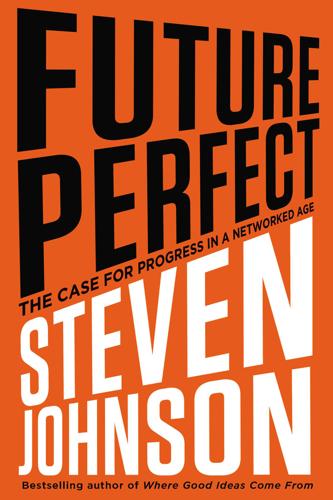
Future Perfect: The Case for Progress in a Networked Age
by
Steven Johnson
Published 14 Jul 2012
The price signaling of markets, in Hayek’s brilliant formulation, was a “system of telecommunications,” a way of solving the complex problem of constantly changing economic needs without reducing the whole mess down to a simplified central plan. Hayek would go on to become a patron saint of the libertarian right, but his critique of Legrand Star planning had an unlikely ally in the American progressive urbanist Jane Jacobs, who followed Hayek’s evisceration of Soviet planning with an equally devastating critique of master planners such as Robert Moses and the lifeless (and deadly) housing projects that had sprouted like concrete wildflowers in the postwar years. By replacing the local, intimate, improvisational balance of a city sidewalk with the bird’s-eye view of automobile-centric planning, Moses and his peers were destroying the connective tissues of urban life.
…
Bradford DeLong, at http://econ161.berkeley.edu/econ_articles/reviews/seeing_like_a_state.html, along with Henry Farrell’s response, “Seeing ‘Seeing Like a State’” at http://crookedtimber.org/2008/02/05/seeing-like-seeing-like-a-state/. Hayek’s arguments are nicely summarized in his 1945 essay “The Use of Knowledge in Society,” which appeared in The American Economic Review. Jane Jacobs’s attack on centralized planning appears in her classic work, The Death and Life of Great American Cities. For a comprehensive history of the birth of the Internet, see Where Wizards Stay Up Late, by Matthew Lyon and Katie Hafner, as well as Stewart Brand’s interview with Paul Baran, “Founding Father,” in Wired.

B Is for Bauhaus, Y Is for YouTube: Designing the Modern World From a to Z
by
Deyan Sudjic
Published 17 Feb 2015
Koolhaas is trying to prove that the well-intentioned architects who tried to tame the contemporary city with pedestrian precincts and conservation got it all disastrously wrong. They should have been trying to intensify the city’s intrinsic qualities, not neuter them. What is amazing is that you can draw a genealogy between Jane Jacobs and Disney. Since the Sixties, the most well-meaning brains in our profession have contributed to this final, terminal condition of shopping. The effort to preserve the street, the hostility to the car, the hostility to all those elements that were the inevitable elements of the twentieth century – all of this has somehow created the space for this preservation, and, in the name of preservation, the conversion of entire areas in the centre of the city to fundamentally anti-urban conditions.
…
Modernity was the means to eradicate slums and replace them with a utopian ideal of what the city ought to be. From Lord Rosebery, chair of the London County Council, to William Morris, much of the modern city was understood as a vicious monstrosity, to be treated as a diseased pathology, by surgical means. ‘Slum’ was a word that used to worry me. Jane Jacobs’s book The Life and Death of Great American Cities shocked me when I first read it as an adolescent. She painted a picture of the honest virtue of healthy urban communities, and conveyed a vivid sense of the multiple threats that faced them. The physical fabric of the city, apparently so reassuringly solid, was revealed in Jacobs’s urgent account as permanently on the edge of putrefaction.
…
That figure-ground comparison is a sanitized analysis that hides the stench, and the fear. There are things about the lives of the slum dwellers that can seem comforting or even heartening. Life in a Mumbai slum could be seen as being almost all right when compared with certain other possibilities. The slum is a place in which Jane Jacobs’s street, protected under the constant gaze of hundreds of eyes, is an everyday reality. This is the polar opposite of the anomie and social isolation of a suburb in Phoenix. And it is nothing like a Brazilian favela or a Johannesburg shanty in terms of the daily level of violence. In terms of its ecological footprint, it does an amazingly good job, making up for the terrible mess that most of us westerners make of limiting our negative impact on the planet.

Survival of the Richest: Escape Fantasies of the Tech Billionaires
by
Douglas Rushkoff
Published 7 Sep 2022
It’s a hubristic claim on world-building reminiscent of Walt Disney’s efforts to translate the utopian simulacres of Disneyland into a plan for a real, privately owned town called Celebration—which proved a disaster. The “new urbanist” developers behind Celebration and subsequent privately planned “communities” believed they were proving that the market yielded better neighborhoods than government planning. They loved to cite urban studies legend Jane Jacobs, who was suspicious of overly zoned neighborhoods and admired mixed-use areas like Greenwich Village, which grew naturally over decades or centuries, and as the result of many different forces—including businesses—all interacting and even competing for space. But they missed Jacobs’s real point.
…
Chapter 9: Visions from Burning Man 112 Shark Tank : A reality show where entrepreneurs pitch billionaires including Mark Cuban and Barbara Corcoran for investment. 113 “It’s well documented” : Nellie Bowles, “ ‘Burning Man for the 1%’: The Des ert Party for the Tech Elite, with Eric Schmidt in a Top Hat,” Guardian , May 2, 2016, https:// www .theguardian .com /business /2016 /may /02 /further -future -festival -burning -man -tech -elite -eric -schmidt. 113 “It’s important” : Bowles, “ ‘Burning Man for the 1%.’ ” 118 funneling capital from Colombia : Keith Larsen, “Investors Accuse Prodigy Network of Fraud at Troubled Park Ave Development,” Real Deal, September 24, 2020, https:// therealdeal .com /2020 /09 /24 /investors -accuse -prodigy -network -of -fraud -at -troubled -park -ave -development /. 118 charges of fraud : Global Property and Asset Management Inc., “Panic at Prodigy,” October 3, 2019, https:// globalpropertyinc .com /2019 /10 /03 /panic -at -prodigy /. 118 “game of life” : “Akasha—The Game of Life,” https:// www .playakasha .com, accessed August 10, 2021. 119 “exponential technologies … moonshots” : Singularity University, “An Exponential Primer,” https:// su .org /concepts /, accessed August 10, 2021. 119 “entrepreneurial leaders … planetary scale” : Singularity University, “Singularity University,” https:// su .org /, accessed August 10, 2021. 120 MacArthur Foundation : MacArthur Foundation, “100 & Change,” https:// www .macfound .org /programs /100change /. 122 She hated Robert Moses’s : Jane Jacobs, Systems of Survival: A Dialogue on the Moral Foundations of Commerce and Politics (New York: Random House, 1992). 123 new urbanism now amounts to : Rushkoff, Life Inc.: How Corporatism Conquered the World, and How We Can Take It Back (New York: Random House, 2009), 74–83. 124 Rutt has applied : Jim Rutt, “A Journey to Game B,” Medium , January 14, 2020, https:// medium .com /@memetic007 /a -journey -to -gameb -4fb13772bcf3. 125 President Eisenhower : Center for the Study of Digital Life, http:// digitallife .center /, accessed August 10, 2021. 125 “Yet in holding scientific” : Dwight D.

The Unwinding: An Inner History of the New America
by
George Packer
Published 4 Mar 2014
When he was covering city hall at The Palm Beach Post, he’d gotten deeply interested in urban planning—for a while he even thought about switching careers, until he realized that city planners had even less clout than reporters. But his bookshelves filled up with titles like A Field Guide to Sprawl, The History of the Lawn, Suburban Nation, and the pair that were his bibles: The Power Broker and The Death and Life of Great American Cities. Van Sickler became a Jane Jacobs disciple. She gave a vocabulary to the desire he had felt growing up in Cleveland Heights with no one around on those excruciating summer afternoons: short blocks, pedestrian permeability, mixed uses, safety in eyes on the street, density. Life was richest and most creative where people of different backgrounds could meet face-to-face and exchange ideas.
…
Signs advertising accident attorneys, fast cash for houses, and get-rich-quick schemes were everywhere, and auto insurance was higher in Florida than elsewhere—insurers called it “a fraudulent state.” Florida drew the transient and rootless on the eternal promise of a second chance, with more than its share of scammers and con men. So who was to say the guy living next door wasn’t one of them? A subdivision like Carriage Pointe was Jane Jacobs’s vision of hell. In 2006, Van Sickler wrote a story about the people buying houses around Tampa. A lot of them lived in other places, and when he tracked them down by phone, he would ask, “Are you living in the home? Oh, is it a vacation home? Why would you be vacationing in Ruskin—it’s not a vacation destination.”
…
People would get off the train and walk, and walking (without fear of traffic death) would change the urban landscape, away from the shopping plaza, the parking lot, the gas station, and the roadside sign to townhouses, cafés, bookstores, the kind of places that encouraged pedestrians to linger, and their presence would spur other businesses to cluster, and before long there would be density—Jane Jacobs’s heaven. Strangers would meet in nontraumatic accidental encounters and exchange ideas. Tampa would become the magnet for educated young people, tech start-ups, and corporate headquarters that its counterparts with commuter rail had already become, putting the economy on a sounder foundation than real estate had.

Order Without Design: How Markets Shape Cities
by
Alain Bertaud
Published 9 Nov 2018
However, the impact of the Internet on disseminating knowledge might be similar to that of books: it makes knowledge available quickly and cheaply, but it doesn’t replace the serendipity of a random meeting of people with similar interests. 3. Shlomo Angel, Planet of Cities (Cambridge, MA: Lincoln Institute of Land Policy, 2012). 4. Jane Jacobs, The Economy of Cities (New York: Random House, 1969). I do not wish to involve myself in the debate raised by Jane Jacobs, whether cities preceded agriculture. The existence of an obsidian industry in Çatalhöyük ca. 7000 B.C. is well established by archeologists. 5. Industrial Policy Resolution of the Government of India adopted in 1956 under the provisions of the Industrial Development and Regulation Act, 1951. 6.
…
Some Cities Keep Growing, While Others Don’t The rate of population growth is determined by economic opportunity, which in turn is largely determined by the comparative advantage of a city’s location and its population’s capacity for innovation. But the economic advantage provided by location is not necessarily permanent; it may increase, decrease, or even vanish with technological change. Being close to an obsidian mine might have been a decisive advantage for the early Middle Eastern cities like Çatalhöyük described by Jane Jacobs,4 but that advantage disappeared when obsidian ceased to be the preferred material for tools and weapons. The Anatolian cities, whose economies had not been able to diversify into activities other than obsidian’s craft and trade, inevitably shrank and eventually disappeared. The dominance of New York as the United States’ main eastern seaport was made possible by the comparative advantage provided by the Erie Canal.
…
In addition, getting in and out of an elevated highway requires the use of ramps, which involves the destruction of additional valuable real estate while obstructing pedestrian flows. The plan proposed by Robert Moses for the Lower Manhattan Expressway in New York was an attempt to increase street supply in a high-demand area. The popular grassroots movement, led by Jane Jacobs, against the destruction that the expressway would have caused put a stop to the project. Indeed, the negative impact of elevated highways in dense urban areas is not limited to the eventual destruction of existing side buildings; it often extends for several blocks around. Because of the negative impact and high cost of elevated highways, not only has their construction been practically halted around the world, but a reverse movement advocating the demolition of existing ones is spreading.
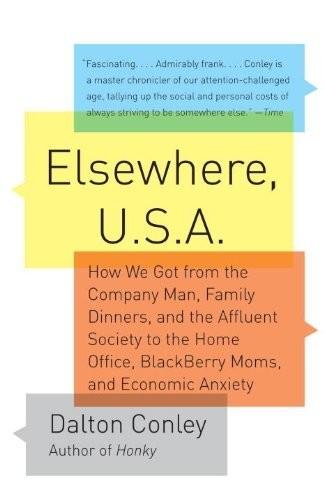
Elsewhere, U.S.A: How We Got From the Company Man, Family Dinners, and the Affluent Society to the Home Office, BlackBerry Moms,and Economic Anxiety
by
Dalton Conley
Published 27 Dec 2008
The very concept of public space is collapsing before our eyes (albeit in slow motion). First of all, there is the issue of the technologies themselves— the increase in people chattering away to “elsewhere” while walking down a city street or sitting in a park or driving down the interstate. Almost fifty years ago, the urban theorist Jane Jacobs wrote that “the eyes and ears of the street” were the basis of a community’s social order—much more than formal laws, policing, and other government institutions.1 Local residents kept a watch on kids playing stoop on the sidewalk. Shopkeepers noticed when suspicious characters appeared on the scene.
…
Ronna Larsen, “The Skyrocketing Number of Bank Branches,”e-merging Directions, Colliers Turley Martin Tucker Commerical Real Estate Services, at http://www.ctmt.com/pdfs/emergingDirections/BankBranches Skyrocket.pdf. 9. Juliet Schor, “The Social Death of Things,” working paper, 2007. 10. Barry Schwartz, The Paradox of Choice: Why More Is Less (New York: HarperCollins, 2004). SHOOT THE MOON 1. Jane Jacobs, The Death and Life of Great American Cities (New York: Vintage Books, 1961). 2. For this observation I must credit Natalie Jeremijenko’s research in“Share This Book” (PhD diss., University of Queensland, Aust). 3. “A Guide to UHF Television Production,” 2004-2007, at http://www.indiana.edu/~radiotv/wtiu/uhf.shtml. 4.

Why Information Grows: The Evolution of Order, From Atoms to Economies
by
Cesar Hidalgo
Published 1 Jun 2015
Francis Fukuyama, Trust: The Social Virtues and the Creation of Prosperity (New York: Free Press, 1995), 19. CHAPTER 5: AMPLIFIERS 1. This echoes ideas from urban activist Jane Jacobs. When Jacobs was asked about the importance of greed and self-interest in the economy, she remarked: “You are leaving out the most important things about economies. You can’t have greed unless there is something to be greedy about.” Video interview with Jane Jacobs on the nature of economies, https://www.youtube.com/watch?v=UPNPpdBCqzU. 2. George Johnson, The Ten Most Beautiful Experiments (New York: Knopf, 2008), 76–86. 3.
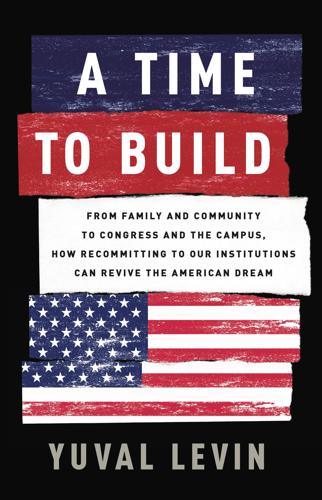
A Time to Build: From Family and Community to Congress and the Campus, How Recommitting to Our Institutions Can Revive the American Dream
by
Yuval Levin
Published 21 Jan 2020
Being constantly exposed to influences we did not choose is part of how we learn to live with others, to accept our differences while seeing crucial commonalities, to realize the world is not all about us, and to at least abide with patience what we would rather avoid or escape. We should not underestimate the socializing power of such unchosen experience. As the great mid-century urbanist Jane Jacobs suggested, this is a way in which the city creates the urbane denizen it requires. It is similarly the way in which our society more generally creates the kind of sophisticated liberal citizen that can be trusted with the immense degree of freedom our way of life provides us. We should therefore not underestimate the consequences of being able to cordon ourselves off into hermetically sealed bubbles filled with only the exposures and experiences we select—or those that various clever algorithms serve up for us.5 Such algorithms are a particularly important source of this loss of serendipity online.
…
In his (very) short story “A Radically Condensed History of Postindustrial Life,” David Foster Wallace perfectly captures this social dynamic of online life: “When they were introduced, he made a witticism, hoping to be liked. She laughed extremely hard, hoping to be liked. Then each drove home alone, staring straight ahead, with the very same twist to their faces.” David Foster Wallace, Brief Interviews with Hideous Men (New York: Little, Brown & Co., 1999), 1. 5. Jane Jacobs, The Death and Life of Great American Cities (New York: Random House, 1961). See particularly chapters 11 and 12. 6. Adam Mosseri, “Building a Better News Feed for You,” Facebook (press release), https://newsroom.fb.com/news/2016/06/building-a-better-news-feed-for-you/. 7. Stephen Marche, “The Crisis of Intimacy in the Age of Digital Connectivity,” Los Angeles Review of Books, October 15, 2018. 8.
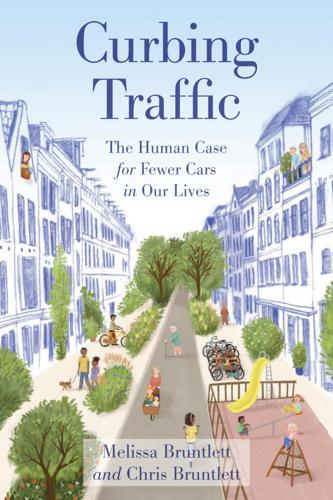
Curbing Traffic: The Human Case for Fewer Cars in Our Lives
by
Chris Bruntlett
and
Melissa Bruntlett
Published 28 Jun 2021
The results are confident, more independent children and much more chilled out parents. Building autonomous cities doesn’t just lead to happier kids, it leads to happier parents too! Chapter 2 The Connected City Neither television nor illegal drugs has been the chief destroyer of American communities. Instead, the automobile has that dubious honor. — Jane Jacobs All it took was a split second. One momentary lapse in focus, and our relationship with our street and our neighbors would forever change. After seeing Chris and the kids off to work and school, respectively, and finishing her last few sips of coffee in peace, Melissa stepped out of the house, closing the front door behind her to start the day.
…
“If you look at this through the lens of implicit or explicit bias, if your experience is predominantly driving a car, then you are going to design, plan, and manage for that experience,” states Johnston-Zimmerman. One need only look to the legendary feud between Robert Moses—icon of modernist planning—and Jane Jacobs—mother of human-scale planning—to see how planning from a single perspective shapes a landscape for the few and not the many. Funded by the car lobby and a champion of modernity through automobility, Moses was incentivized to build wide roads and highways to make the motor vehicle the easiest and most desirable means of travel.

Survival of the Friendliest: Understanding Our Origins and Rediscovering Our Common Humanity
by
Brian Hare
and
Vanessa Woods
Published 13 Jul 2020
What seems to work best are mid-rise buildings (twelve stories seems to be the upper limit), where mothers can keep an eye on children playing outside and residents can watch people passing below; mixed-income housing, where people from different professions and socioeconomic status can live side by side; sidewalks that lead to small businesses, cafés, and restaurants; people working in these businesses who know their customers; gardens and playgrounds where mothers can talk and their children can make friends.94, 95, 96 In the 1950s, the West Village, New York, was this kind of city. The urbanist Jane Jacobs described the intricate “ballet” outside her apartment every morning. “The strangers on Hudson Street, the allies whose eyes help us natives keep the peace of the street, are so many that they always seem to be different people….When you see the same stranger three or four times on Hudson Street, you begin to nod.”94 At their worst, cities prevent social contact.
…
Published online February 23, 2016, https://www.washingtonpost.com/news/morning-mix/wp/2016/02/23/donald-trump-on-protester-id-like-to-punch-him-in-the-face/. 93. J. Diamond, “Trump: I Could Shoot Somebody and Not Lose Voters” CNN Politics (2016). Published online January 24, 2016, http://www.cnn.com/2016/01/23/politics/donald-trump-shoot-somebody-support/. 94. Jane Jacobs, The Death and Life of Great American Cities (New York: Vintage, 2016). 95. Richard Florida, The New Urban Crisis: How Our Cities Are Increasing Inequality, Deepening Segregation, and Failing the Middle Class, and What We Can Do About It (UK: Hachette, 2017). 96. R.T.T. Forman, “The Urban Region: Natural Systems in Our Place, Our Nourishment, Our Home Range, Our Future,” Landscape Ecology 23 (2008), 251–53. 97.
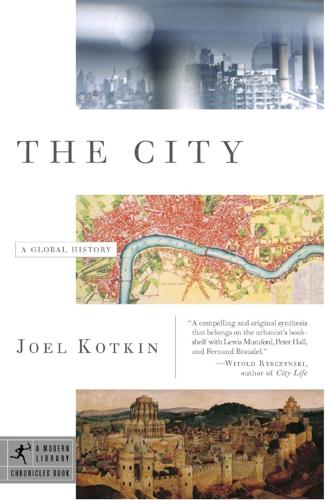
The City: A Global History
by
Joel Kotkin
Published 1 Jan 2005
Yamasaki’s ill-fated World Trade Center, constructed between 1966 and 1977, not only displaced thousands of small businesses centered around the old electrical district, but essentially cut off whole sections of New York’s West Side from one another.18 Clearly, such massive redevelopment failed to halt the migration of people and businesses to the periphery. Indeed, as the noted urbanist Jane Jacobs suggested, they may instead have accelerated dispersion. As the nation’s population rose by over 60 million in the last decades of the century, that of the central cities stagnated and in some cases continued to drop. By 1990, even New Yorkers seemed to have lost their faith in the cult of urban grandiosity; roughly six in ten told surveyors that they would live somewhere else if they could.19 THE FINAL AGONIES OF THE INDUSTRIAL CITY By millennium’s end, for every two of the world’s major cities that were adding population, as many as three were losing people.
…
Benjamin, “The 1,776 Foot Target”; Pelton, “The Rise of Telecities: Decentralizing the Global Society”; Jason Singer, “Tokyo Braces for Tsunami of New High-Rises,” The Wall Street Journal, December 11, 2002; Charles V. Bagli, “$3.7 Billion Plan to Alter Far West Side Is Revealed,” The New York Times, February 12, 2004; Margaret Ryan, “Skyscrapers Transforming City Skyline,” BBC News Online, March 24, 2004. 52. Jane Jacobs, The Economy of Cities (New York: Random House, 1969), 141. 53. H. J. Dyos, “Agenda for Urban History,” in The Study of Urban History, 1; Ryan, “Skyscrapers Transforming City Skyline.” 54. Coulanges, op. cit., 310. 55. Mike Biddulph, “Villages Don’t Make a City,” Journal of Urban Design 5, no. 1 (2000); William J.
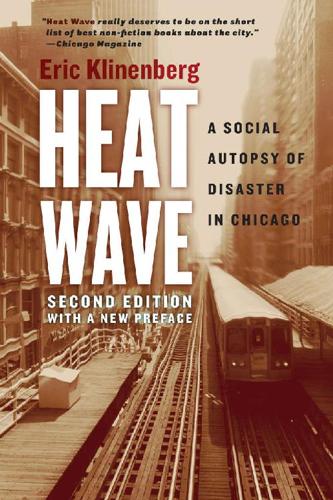
Heat Wave: A Social Autopsy of Disaster in Chicago
by
Eric Klinenberg
Published 11 Jul 2002
The result, as the Mayor’s Commission on Extreme Weather Conditions states, is that “those most at risk may be least likely to want or accept help from government.”17 There is some degree of truth in both of these explanations, and I will consider them seriously in this chapter. Yet even together they fail to provide a satisfying account of the reasons that so many Chicago residents died in solitude during the heat wave and that so many others continue to live in isolation. According to urban critic Jane Jacobs, “It took a lot of effort to make people this isolated.” But the ways in which Americans have engineered such extreme forms of individuation and social segmentation remain mysterious.18 Looking more closely at the conditions that made Chicagoans vulnerable to the heat helps to make visible a series of social transformations that contribute to the emerging phenomenon of being alone in the city.
…
This logic is most apparent in the culture of poverty arguments about the ways in which the practices of poor people contribute to the production of their own deprivation, but it informs more liberal theories as well. Yet there is also a rich heritage of research on city neighborhoods that highlights the spatial context of social order in the city.27 Although most contemporary urban scholars argue that high population density undermines social cohesion within neighborhoods, Jane Jacobs draws a distinction between high density and overcrowding, which suffocates residents and stifles community life. According to Jacobs, density and public activity are necessary preconditions for vigorous neighborhood social networks. Residents of city neighborhoods without comfortable and secure streets and sidewalks, without places that draw people out of their homes and into the public, are more likely to suffer from literal isolation and social distance.
…
“There’s not very much in the streets for people to do here anymore.” Figure 26. An open lot near the original Sears Tower in North Lawndale. Photo by Caitlin Zaloom. The collapse of North Lawndale’s commercial institutions and local economy was devastating for the public life of the area.32 As Jane Jacobs argues, a substantial quantity of stores and other public places sprinkled along the sidewalks of a district is the basic requisite for establishing public safety through informal social control. Commercial institutions draw residents and passersby out into the sidewalks and streets, inviting foot traffic and promoting social interaction among consumers, merchants, and people who simply enjoy participating in or observing public life.
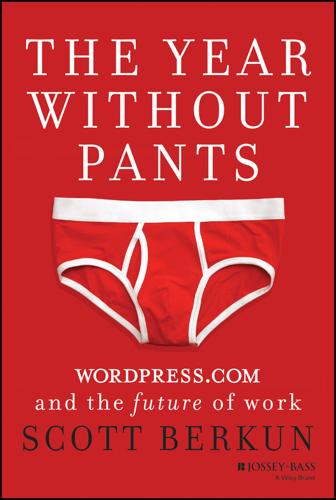
The Year Without Pants: Wordpress.com and the Future of Work
by
Scott Berkun
Published 9 Sep 2013
Some were fixed immediately, others were fixed soon, some were rejected, and others fell into the limbo of issues whose fate may never be decided. Source: Greg Brown, a code wrangler at Automattic. If you ask the old-timers, Automattic believed in the broken window theory, the idea popularized by Jane Jacobs in her book The Death and Life of Great American Cities.1 She examined why some neighborhoods in New York City were safer than others and concluded that neighborhoods that were well maintained by their inhabitants, including small things like picking up trash and fixing broken windows, tended to have less crime.
…
There was a mature balance of reporting data yet leaving people free to decide what they meant or how much they wanted to use in their thinking. MC was a manifestation of the line between support and creatives. MC was a tool, created by the Janitorial team, to support all the others in doing their work. But rarely would the data dictate to anyone what should be done. Notes 1 Jane Jacobs, The Death and Life of Great American Cities (New York: Vintage, 1992; originally published 1961). The theory was developed by James Q. Wilson and George L. Kelling, “Broken Windows,” Atlantic Monthly (March 1982). 2 Just as a broken leg will take more time to fix than a scratch, a simple incoming-versus-fix chart discounts possibly important details such as the scope of each issue. 3 A good summary of the problems with evaluating programming work based on lines of code is at http://en.wikipedia.org/wiki/Source_lines_of_code#Disadvantages.
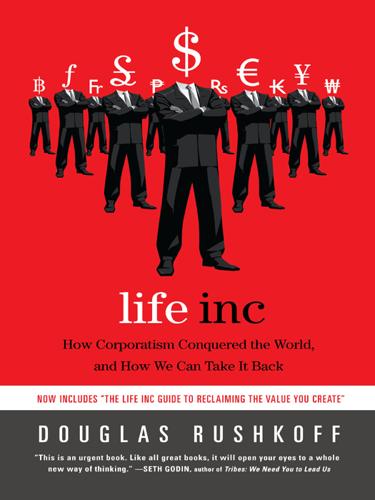
Life Inc.: How the World Became a Corporation and How to Take It Back
by
Douglas Rushkoff
Published 1 Jun 2009
Now, you live in or around the projects just outside the circle. Where would you go to mug someone?” Back on the World Wide Web, a friend of mine—another Park Slope writer—made an open appeal for my family to stay in Brooklyn. He saw “the Slope” as a mixed-use neighborhood now reaching the “peak of livability” that the legendary urban anthropologist Jane Jacobs idealized. He explained how all great neighborhoods go through the same basic process: Some artists move into the only area they can afford—a poor area with nothing to speak of. Eventually, there are enough of them to open a gallery. People start coming to the gallery in the evenings, creating demand for a coffeehouse nearby, and so on.
…
One of them even posts glowing daily observations to his Coffee at Birkdale blog about the community, its members, and their cars. Of course, he’s also a local real-estate agent. Birkdale was meant to serve as an antidote to the dislocation of the regular suburbs, and an application of a theory known as New Urbanism to the real world. The approach was first pioneered by the urbanist Jane Jacobs, a vocal critic of the land-use policies of the 1950s. Jacobs believed that the common practice of separating residences from businesses dislocated people from the real, vibrant spaces of more naturally developed towns and destroyed any opportunity for community. She often held up Manhattan’s Greenwich Village as an example of a thriving urban community.
…
But GNP for the rebuilt areas does go up, and—under the logic of corporatism—we have no choice but to record it as another success story. Finally, as with Birkdale Village, corporations abuse the logic of New Urbanism to develop mall towns from the bottom up. These are not genuinely diverse communities in the spirit of Jane Jacobs’s West Village, but selling machines as fastidiously constructed to induce spending as the most manipulative shopping mall. Just because they don’t have roofs doesn’t mean these faux villages are any less self-contained than the Southdale Center. Residents exist in a perpetual Gruen Transfer, consuming as a mode of existence, and utterly incapable of distinguishing between the stores in which they live and the real world they left behind.
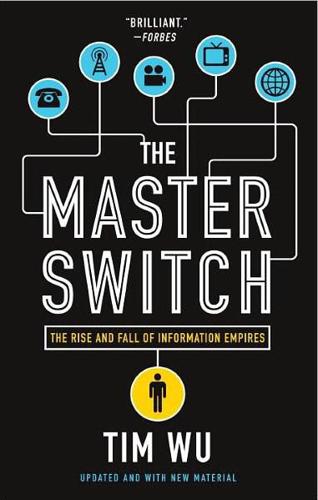
The Master Switch: The Rise and Fall of Information Empires
by
Tim Wu
Published 2 Nov 2010
Oversimplified as this may seem, we shall find the idea more easily acceptable if we consider that bigness, or oversize, is really much more than just a social problem.… Whenever something is wrong, something is too big.”10 Kohr’s student, the economist E. F. Schumacher, in 1973 wrote Small Is Beautiful: Economics As If People Mattered, developing the concept of “enoughness” and sustainable development.11 Jane Jacobs, the great theorist of urban planning, expresses a no less incendiary disdain for centralization, and as in Hayek, the indictment is based on an inherent neglect of humanity. In her classic The Death and Life of Great American Cities, she relies on careful firsthand observations made while walking around cities and new developments to determine how Olympian planners like Robert Moses were going wrong.12 There was no understanding, let alone regard, for the organic logic of the city’s neighborhoods, a logic discernible only on foot.
…
All the power would thus come to reside in one or two highly centralized giants, until some sort of sufficiently disruptive innovation came along and proved itself a giant killer. Small fry would then enter the new decentralized environment, and the natural progression would start all over again. The twenty-first century begins with no such predilection for central order. In our times, Jane Jacobs is the starting point for urban design, Hayek’s critique of central planning is broadly accepted, and even governments with a notable affinity for socialist values tout the benefits of competition, rejecting those of monopoly. Nor does the new century partake of the previous one’s sense of what is inevitable.
…
Leopold Kohr, The Breakdown of Nations (London: Routledge & Paul, 1957), ix. 11. Schumacher’s idea of “enoughness” stemmed from his studies of what he called “Buddhist economics.” See Ernst F. Schumacher, Small Is Beautiful: Economics As If People Mattered (New York: Harper & Row, 1973). 12. Jane Jacobs, The Death and Life of Great American Cities (New York: Vintage Books, 1961). 13. Frederick W. Taylor, The Principles of Scientific Management (New York: Harper & Bros., 1911). 14. Jon Postel wrote this into the “Robustness Principle,” Section 2.10 of the Transmission Control Protocol (January 1980), available at http://tools.ietf.org/html/rfc761#section-2.10. 15.

Open: The Story of Human Progress
by
Johan Norberg
Published 14 Sep 2020
The water was still there, and irrigation systems could make it possible to store floodwater until the crops needed it, but it took large groups of people in cooperation to build them. People started to congregate in cities to feed themselves better, and by doing so they also made it possible for more of them to do things that were not related to food production. The American-Canadian writer Jane Jacobs explained that, unlike what we’ve been led to believe, agriculture was not the start of civilization, cities were. It was the density of urban clusters – ‘sustained, interdependent, creative city economies’ – that made all sorts of creativity and innovation possible, including better agriculture.31 The development of cities supercharged mankind’s division of labour.
…
The new cities were created by largescale mobility from rural areas to towns and cities, and they became so productive because they were meeting places where merchants, missionaries and migrants from different groups and cultures met and exchanged ideas, goods and insults. ‘Great cities are not like towns, only larger,’ wrote the urban prophet Jane Jacobs, they differ in many ways, ‘and one of them is that cities are, by definition, full of strangers.’7 Because of this, cities became crucibles of thought, as Thomas Mann called them. They stood a greater chance of developing useful innovations and were more likely to give individuals opportunities to live the kind of life they wanted.
…
And ever since, elites have fought over the best land, since it is the one thing they can’t make more of, as estate agents point out. The harsh deal for the average person did not change until the last two hundred years of unprecedented economic growth. If someone had more than you, you had reasons to be resentful because he had probably taken it from you. The urbanist and journalist Jane Jacobs once described the striking difference the modern market economy has made: The doings of craftsmen and merchants are so innocent compared with making wars, pillaging, extorting, persecuting, executing, censoring, holding prisoners for ransom, and monopolizing land at the expense of serfs, peons, or slaves – all honorable activities for people who would sooner have died than sink into trade.14 The upshot is that evolution has adapted us to deal more with war-making and pillaging than with craftsmen and merchants.

The Rent Is Too Damn High: What to Do About It, and Why It Matters More Than You Think
by
Matthew Yglesias
Published 6 Mar 2012
Australian incomes have been rising steadily because the country does a booming business exporting raw materials to China. These rising incomes have pushed up both rents and home sale prices. It’s just like Greenwich Village in New York (where I grew up). When my dad first moved there in the 1970s, the Village was a cheap place to live. This was the classic Greenwich Village Jane Jacobs wrote about, the one where beatnik poets lived in the fifties and where Bob Dylan got his start. By the time my dad left in 2010, it was incredibly expensive—apartments in the building where I grew up sell these days for $2 million to $3 million. The huge premium that people pay nowadays to live in the Village may or may not last forever, but it’s not a bubble; the price reflects increased demand.
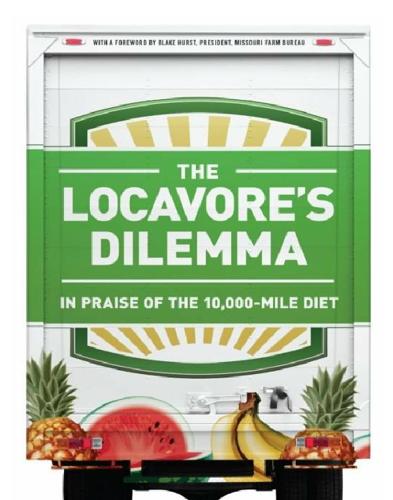
The Locavore's Dilemma
by
Pierre Desrochers
and
Hiroko Shimizu
Published 29 May 2012
By 2050, approximately 70% of the world’s population will be living in cities.15 Urban agglomerations have always proved essential for agricultural advances, be it in terms of providing the best setting for technological innovations, by offering large and concentrated markets for rural goods, and in generating the capital required to invest in rural development. As the urban theorist Jane Jacobs observed in 1969, agriculture “is not even tolerably productive unless it incorporates many goods and services produced in cities or transplanted from cities. The most thoroughly rural countries exhibit the most unproductive agriculture. The most thoroughly urbanized countries, on the other hand, are precisely those that produce food most abundantly.”16 Of course, many past agricultural advances can be traced back to the work of specialists such as livestock and crop breeders, geneticists, nutritionists, chemical and mechanical engineers, veterinarians, plant pathologists, and soil scientists who were sometimes (but often not) based in more rural regions.
…
The Economist (November 6) http://www.economist.com/node/12552404 For a much more comprehensive historical perspective on the issue, see Paul Bairoch. 1988. Cities and Economic Development: From the Dawn of History to the Present. University of Chicago Press. A recent concise analytical discussion of the issue can be found in Mario Polèse. 2009. The Wealth and Poverty of Regions. Why City Matters. University of Chicago Press, chapter 5. 16 Jane Jacobs. 1969. The Economy of Cities. Random House, p. 7. 17 Plato. Around 360 BCE. The Republic, Book II http://classics.mit.edu/Plato/republic.3.ii.html. 18 For a popular history of these latter developments, see Susan Freidberg. 2009. Fresh. A Perishable History. Belknap Press (Harvard University Press).

The New Class Conflict
by
Joel Kotkin
Published 31 Aug 2014
Decades later urban author Robert Caro described the new rows of small houses at the edge of New York as “blossoming hideously,” as families fled venerable, but dirty and crowded, parts of Brooklyn and Manhattan for more spacious tree-lined streets further east, west, south, and north.74 These early critics saw suburbs as often largely homogenous and spiritually stultifying. Jane Jacobs, who famously detested suburban Los Angeles, also considered the bedroom communities of Queens and Staten Island “the Great Blight of Dullness.”75 The 1960s social critic William Whyte denounced suburbia as hopelessly conformist and stultifying. Like many of today’s density advocates, he predicted in Fortune that people would tire of such dull places and move back toward the city core.76 Of course, there were always those who did indeed return to the urban center, but most, as the Census trends show, did not.
…
Robert Caro, The Power Broker: Robert Moses and the Fall of New York (New York: Vintage, 1975), pp. 143–44; Becky Nicolaides, “How Hell Moved From the Cities to the Suburbs,” in Kevin M. Kruse and Thomas J. Sugure, The New Suburban History (Chicago: Univ. of Chicago Press, 2006), p. 87. 75. Jane Jacobs, The Death and Life of Great American Cities (New York: Random House, 1961), p. 357. 76. Nicolaides, “How Hell Moved From the Cities to the Suburbs,” pp. 91–97. 77. William Vogt, Road to Survival (New York: William Sloane, 1948), p. 284. 78. Michael Janofsky, “Gore Offers Plan to Control Suburban Sprawl,” New York Times, January 12, 1999. 79.
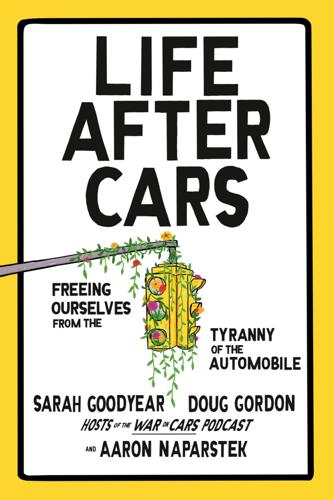
Life After Cars: Freeing Ourselves From the Tyranny of the Automobile
by
Sarah Goodyear
,
Doug Gordon
and
Aaron Naparstek
Published 21 Oct 2025
In response to the expansion of automotive hegemony in this period, a new war on cars emerged. Famously, during a wave of protests in the 1950s and 1960s that came to be known as “highway revolts,” communities across the country did what they could to stop the expansion of roads that they rightly believed would destroy cities. Urbanist and writer Jane Jacobs and other activists in Greenwich Village went head to head with New York’s master builder Robert Moses, fighting his plan to demolish large swaths of Soho and Little Italy for his planned ten-lane Lower Manhattan Expressway. That project, intended to deal with traffic created by roads and bridges Moses had already pushed through, would have displaced nearly 2,000 families and 800 businesses.
…
Called Merrily We Roll Along and starring comedian Groucho Marx, the special was sponsored by DuPont, which at the time owned a 23 percent stake in General Motors. In the special, Groucho says that “our love affair with the automobile” started long ago, and that “it was a real love affair, one that changed our whole way of life.” The phrase became part of the popular lexicon almost overnight. Produced the same year that Jane Jacobs published her seminal book The Death and Life of Great American Cities, and airing just as the highway revolts were gaining steam, Groucho’s hyping of the “love affair” was a brilliant defensive ploy on the part of the automobile industry. For generations, that hype has successfully obscured the darker reality of a world built for cars.
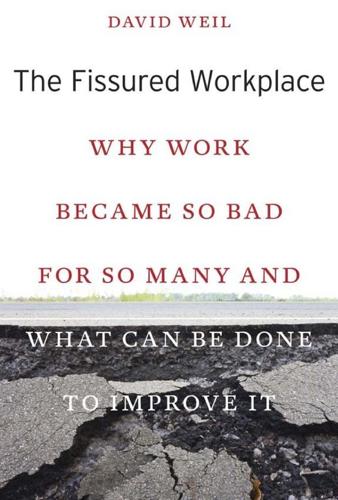
The Fissured Workplace
by
David Weil
Published 17 Feb 2014
By using community policing and focused efforts to “fix broken windows” through the reduction of panhandling, graffiti, low-level crimes, and other activities that citizens take as signs of imminent danger, people would reassert themselves in the daily life of their neighborhood and retake their role as the glue that Jane Jacobs called the “small change” of urban life. In short, reducing the major crimes that dominate newspaper headlines requires controlling the disorderly street-level activities that spawn them. The broken windows analogy is a useful one for the U.S. workplace. In some workplaces—particularly those employing large numbers of low-wage workers—day-to-day experience is replete with violations of basic labor standards.
…
However, if international monitoring systems, in conjunction with national labor inspectorates, change the way lead companies review, source, and relate to suppliers, they are more likely to change the behavior of the larger sector of suppliers in those countries and their resulting compliance with workplace standards and laws.44 Safe Streets, Fair Workplaces In 1961 Jane Jacobs described what defined “public peace” in a city: The first thing to understand is that the public peace—the sidewalk and street peace—of cities is not kept primarily by the police, necessary as police are. It is kept primarily by an intricate, almost unconscious, network of voluntary controls and standards among the people themselves, and enforced by people themselves.
…
Declining enforcement, erosion of unionization, a growing skepticism toward government, and a shift (legal and cultural) to more individually focused views of the workplace in many sectors have undermined the ability to attain public objectives in setting conditions in the U.S. workplace. The troubling working conditions and sometimes egregious behavior of employers found in low-wage settings echoes Jane Jacobs’s accounts of deterioration of civil society in neighborhoods and streets in Chicago. A tipping point arguably exists in many sectors affected by fissuring where the day-to-day experience of working people represents Jacobs’s urban jungle, where even the most fundamental rules of workplace fairness (for example, being paid for work completed; being allowed breaks; receiving benefits promised at the outset) have broken down.
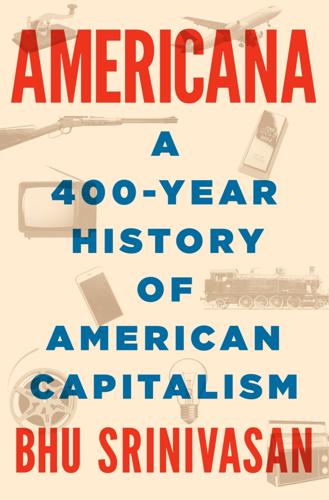
Americana: A 400-Year History of American Capitalism
by
Bhu Srinivasan
Published 25 Sep 2017
While the population from 1960 to 1970 grew from 180 million to 203 million, an addition of 23 million people, American roads added over 27 million registered passenger vehicles during the same time, with much of the growth found in high school parking lots. Some saw this affluence as a form of hollow prosperity, a mindless and fundamental alteration of society, where people served the economic engine, moved by the momentum of commercial events, rather than the other way around. To Jane Jacobs the evidence suggested that the cultural vibrancy of the city was being lost to remote, metallic islands traveling at seventy miles per hour. At the time of her book The Death and Life of Great American Cities, reflecting the move to the suburbs, the urban core of nearly every American city had started declining.
…
“You marvel at”: Levitt, “Let’s Build Up.” Sears and Montgomery Ward: Sears, Roebuck and Co., Sears Modern Homes Catalogue (New York: Dover, 2006). “identical piles of”: “Housing: Up from the Potato Fields.” “Pricing each home identically”: “Nation’s Biggest Housebuilder.” social and cultural critics: Jane Jacobs, The Death and Life of Great American Cities (New York: Vintage Books, 1992); Herbert J. Gans, The Levittowners: Ways of Life and Politics in a New Suburban Community (New York: Columbia University Press, 1982). “neither the urbanity”: Jackson, Crabgrass Frontier, 244. “proud country home-owners”: Levitt, “Let’s Build Up.” 700,000 immigrants arrived: Bureau of the Census, “Historical Statistics of the United States, 1789–1945,” Washington DC, 1949, series B 304–330 (Immigration—Immigrants by Country: 1820 to 1945), 32.
…
four thousand stores: Ibid. The “loss-leader”: Walter Henry Nelson, The Great Discount Delusion (New York: David McKay, 1965), 17. the loss-leading practices: Ibid., 68. populations as small: Sam Walton, Sam Walton: Made in America (New York: Bantam, 1993), 59. “or socially inevitable”: Jane Jacobs, The Death and Life of Great American Cities (New York: Vintage Books, 1992), 7. producer of oil: Michael Ratner and Carol Glover, “U.S. Energy: Overview and Key Statistics,” Congressional Research Service, July 27, 2014. running trade deficits: Bureau of the Census, “Historical Statistics of the United States, Colonial Times to 1970,” Washington DC, September 1975, series U 1–25 (Balance of International Payments: 1790 to 1970), 864.

Americana
by
Bhu Srinivasan
While the population from 1960 to 1970 grew from 180 million to 203 million, an addition of 23 million people, American roads added over 27 million registered passenger vehicles during the same time, with much of the growth found in high school parking lots. Some saw this affluence as a form of hollow prosperity, a mindless and fundamental alteration of society, where people served the economic engine, moved by the momentum of commercial events, rather than the other way around. To Jane Jacobs the evidence suggested that the cultural vibrancy of the city was being lost to remote, metallic islands traveling at seventy miles per hour. At the time of her book The Death and Life of Great American Cities, reflecting the move to the suburbs, the urban core of nearly every American city had started declining.
…
“You marvel at”: Levitt, “Let’s Build Up.” Sears and Montgomery Ward: Sears, Roebuck and Co., Sears Modern Homes Catalogue (New York: Dover, 2006). “identical piles of”: “Housing: Up from the Potato Fields.” “Pricing each home identically”: “Nation’s Biggest Housebuilder.” social and cultural critics: Jane Jacobs, The Death and Life of Great American Cities (New York: Vintage Books, 1992); Herbert J. Gans, The Levittowners: Ways of Life and Politics in a New Suburban Community (New York: Columbia University Press, 1982). “neither the urbanity”: Jackson, Crabgrass Frontier, 244. “proud country home-owners”: Levitt, “Let’s Build Up.” 700,000 immigrants arrived: Bureau of the Census, “Historical Statistics of the United States, 1789–1945,” Washington DC, 1949, series B 304–330 (Immigration—Immigrants by Country: 1820 to 1945), 32.
…
four thousand stores: Ibid. The “loss-leader”: Walter Henry Nelson, The Great Discount Delusion (New York: David McKay, 1965), 17. the loss-leading practices: Ibid., 68. populations as small: Sam Walton, Sam Walton: Made in America (New York: Bantam, 1993), 59. “or socially inevitable”: Jane Jacobs, The Death and Life of Great American Cities (New York: Vintage Books, 1992), 7. producer of oil: Michael Ratner and Carol Glover, “U.S. Energy: Overview and Key Statistics,” Congressional Research Service, July 27, 2014. running trade deficits: Bureau of the Census, “Historical Statistics of the United States, Colonial Times to 1970,” Washington DC, September 1975, series U 1–25 (Balance of International Payments: 1790 to 1970), 864.
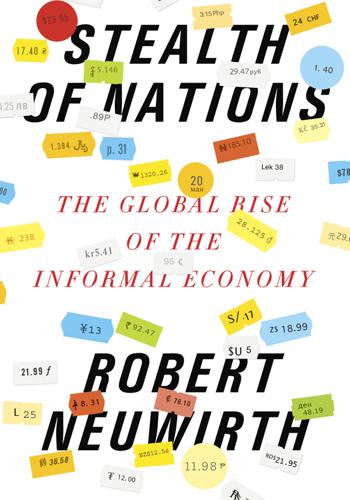
Stealth of Nations
by
Robert Neuwirth
Published 18 Oct 2011
Stanley was a tinker, selling tools from a pack, before he earned enough to found Stanley Works. The roots of the company that makes Van Heusen shirts—one of the most enduring clothing brands in the United States (which today owns Bass, Arrow, IZOD, Calvin Klein, and Tommy Hilfiger)—lie in a single unlicensed pushcart run by a husband-and-wife team in Philadelphia. As urban visionary Jane Jacobs noted, “Many a respectable American citizen of today got his education, and many a legitimate and constructive enterprise got its initial capital,” from peddling, piracy, smuggling, and illegality. Indeed, she went on, “One could argue that if immigrants had derived no capital from these sources … the economic development of the United States would have halted.”
…
Without the solidarity to create structures that can influence things beyond their immediate environment, the merchants are looking to government for salvation—and unfortunately, Meagher suggested, the government, which often operates like a corrupt entity itself, is unlikely to provide the necessary support. “The state’s not going to do this on its own. And the international lobby is pushing the opposite of what they need.” We live in an increasingly System D world. As urban visionary Jane Jacobs predicted back in 1969, the cities of the future “will not be smaller, simpler or more specialized than cities of today. Rather they will be more intricate, comprehensive, diversified and larger than today’s, and will have even more complicated jumbles of old and new things than ours do.” Without ever having seen them—and even if she had, Lagos, Ciudad del Este, and Guangzhou were comparatively tiny outposts four decades back—Jacobs described exactly how these cities and scores of others around the world would develop.

Wonderland: How Play Made the Modern World
by
Steven Johnson
Published 15 Nov 2016
According to Gruen’s original design, as Malcolm Gladwell writes, “Southdale was not a suburban alternative to downtown Minneapolis. It was the Minneapolis downtown you would get if you started over and corrected all the mistakes that were made the first time around.” Even the ultimate defender of traditional downtown sidewalks, Jane Jacobs, was smitten by Gruen’s designs. Describing an ambitious plan for a new Fort Worth that Gruen had developed but never built, Jacobs wrote, “The service done by the Fort Worth plan is of incalculable value, [and will] set in motion new ideas about the function of the city and the way people use the city.”
…
But I suspect the mall at the epicenter of Southdale and EPCOT is too distracting a scapegoat: dismissing EPCOT as a crowning moment in the history of suburbanization—the city of the future is built around a mall!—diverts the eye from the other elements of the plan that actually have value. The fact that Jane Jacobs, who had an intense antipathy to top-down planners, saw merit in the Gruen model should tell us something. It would be fitting, in a way, if some new model of urban organization emerged out of a shop-window designer’s original vision, given the roots of the industrial city in the lavish displays of the London shops.
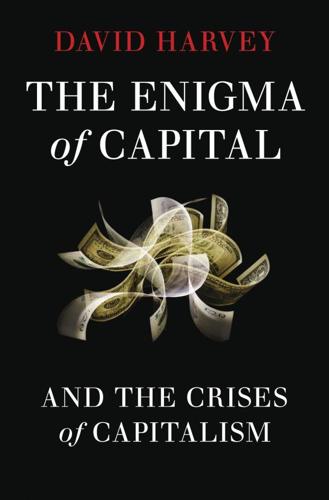
The Enigma of Capital: And the Crises of Capitalism
by
David Harvey
Published 1 Jan 2010
But all was not well in the suburbs either. The new lifestyle had all manner of social and political consequences. The individualism, the defence of property values, the bland if not soulless qualities of everyday life, became topics of critique. Traditionalists increasingly rallied around the urbanist Jane Jacobs, who had very distinctive ideas as to what constituted a more fulfilling form of everyday life in the city. They sought to counter sprawling suburbanisation and the brutal modernism of Moses’ large-scale projects with a different kind of urban aesthetic that focused on local neighbourhood development, historical preservation and, ultimately, reclamation and gentrification of older areas.
…
The processes Engels described recur again and again in capitalist urban history. Robert Moses ‘took a meat axe to the Bronx’ (in his own infamous words) and long and loud were the lamentations of neighbourhood groups and movements, which eventually coalesced around the rhetoric of the inveterate urban reformer Jane Jacobs, at the unimaginable destruction of valued urban fabric but also at the loss of whole communities of residents and their long-established networks of social integration. Once the brutal power of state expropriations and older neighbourhood destruction for purposes of highway construction and urban renewal had been successfully resisted and contained by the political and street agitations of ’68 (with Paris once more an epicentre but with violent confrontations everywhere from Chicago to Mexico City and Bangkok), a far more insidious and cancerous process of transformation began through fiscal disciplining of democratic urban governments, the freeing up of land markets from controls, property speculation and the sorting of land to those uses that generated the highest possible financial rate of return.
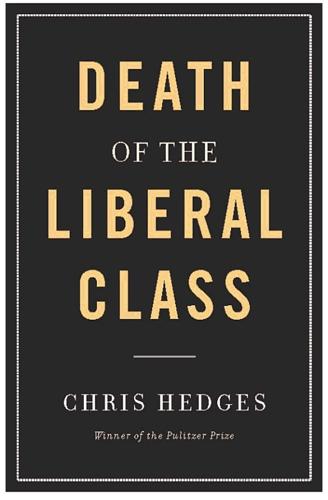
Death of the Liberal Class
by
Chris Hedges
Published 14 May 2010
The Beats, like the Bohemians who populated Greenwich Village after World War I, also flaunted a self-indulgent hedonism that mirrored the ethic of the consumer culture. Lipton called this “the democratization of amorality.” The Beats in the 1950s aided the dissipation of the intellectual class by abandoning urban centers, where a previous generation of public intellectuals, such as Jane Jacobs or Dwight Macdonald, lived and worked. They romanticized the automobile and movement. Russell Jacoby points out in The Last Intellectuals that the Beats had a peculiarly American “devotion to the automobile, the road, and travel, which kept them and then a small army of imitators crisscrossing the continent,” as well as a populist “love of the American people.”37 The Beats not only bolstered the ethic of consumption and leisure as opposed to work, but also they “anticipated the deurbanization of America, the abandonment of the cities for smaller centers, suburbs, campus towns, and outlying areas.”38 The new ethic of the liberal class, Cowley wrote, was one that embraced “the idea of salvation by the child,” which proposed a new educational system “by which children are encouraged to develop their own personalities, to blossom freely like flowers, then the world will be saved by this new, free generation.”
…
Hillis Miller, then of Yale; Gregory Ulmer of the University of Florida; and Marxist cultural historian Frederic Jameson, typified the trend. They wrap ideas in a language so obscure, so abstract, so preoccupied with arcane theory that the uninitiated cannot understand what they write. They make no attempt to reach a wider audience or enrich public life. Compared to the last generation of genuine, independent public intellectuals—Jane Jacobs, Paul and Percival Goodman, William H. Whyte, Lewis Mumford, C. Wright Mills, and Dwight Macdonald—they have produced nothing of substance or worth. Their work has no vision, other than perhaps calling for more diverse voices in the academy. It is technical, convoluted, self-referential, and filled with so much academic jargon that it is unreadable.

Peers Inc: How People and Platforms Are Inventing the Collaborative Economy and Reinventing Capitalism
by
Robin Chase
Published 14 May 2015
This order is all composed of movement and change, and although it is life, not art, we may fancifully call it the art form of the city and liken it to the dance—not to a simple-minded precision dance with everyone kicking up at the same time, twirling in unison and bowing off en masse, but to an intricate ballet in which the individual dancers and ensembles all have distinctive parts which miraculously reinforce each other and compose an orderly whole. The ballet of the good city sidewalk never repeats itself from place to place, and in any one place it is always replete with new improvisations. —JANE JACOBS, THE DEATH AND LIFE OF GREAT AMERICAN CITIES I LOVE THIS PASSAGE by urban planner Jane Jacobs. Her description of a city street that works—a place where infrastructure encourages the intricate ballet of life to flourish—is an analogy for what is required when building a Peers Inc platform. It took months of eighteen-hour days to ready Zipcar for launch.

The Fields Beneath: The History of One London Village
by
Gillian Tindall
Published 1 Oct 2002
Possibly the very existence of commuterlands, spreading wider and wider, and more and more dependent on the car, devaluing the rural image by associations with the phoney, has helped to revive the idea of attachment to a physically compact urban landscape, and to the ‘urban values’ reassessed by sociologists such as Peter Willmott and Jane Jacobs. Certainly the wholesale destruction of large parts of London and many other towns since the Second World War in the name of ‘planning’ has led to a massive loss of confidence in shining visions of a Brave New Future and to a revaluing of such districts as still retain some of their traditional aspect.
…
The good qualities of an urban environment as a place to live, work and play are quite other than the good qualities of a garden suburb, and if you attempt to change the town habitat too drastically you risk losing its essential qualities without gaining those of another type of place. But it was not till 1962 that an American, Jane Jacobs, wrote The Death and Life of American Cities, suggesting what large numbers of humbler people like Montagu Slater and the local shop-keepers had known all along: that an environment of streets and alleys can be a friendly one, catering adequately for most of the needs of the inhabitants. The Plan contained a sop-sentence or two about ‘retaining and encouraging the life of the communities’, but there was no suggestion how, in the presence of the new bisecting road schemes, this was to be achieved.

Reinventing Discovery: The New Era of Networked Science
by
Michael Nielsen
Published 2 Oct 2011
Among the more formative accounts for me were Ben Rich’s Skunk Works [184], Richard Rhodes’s The Making of the Atomic Bomb [183], and Robert Colwell’s The Pentium Chronicles [45]. A little further afield, Peter Block’s book Community: The structure of belonging [18] contains many insights about the problems of building community. And, finally, Jane Jacobs’s masterpiece The Death and Life of Great American Cities [98] is a superb account of how very large groups tackle a core human problem: how to make a place to live. Networked science, in general: The potential of computers and the network to change the way science is done has been discussed by many people, and over a long period of time.
…
[96] National Human Genome Research Institute. Reaffirmation and extension of NHGRI rapid data release policies: Large-scale sequencing and other community resource projects, February 2003. http://www.genome.gov/10506537. [97] In one instant a left-lane nation swerves right. Life, September 15, 1967. [98] Jane Jacobs. The Death and Life of Great American Cities. Toronto: Random House of Canada, 1961. [99] Irving Lester Janis. Groupthink: Psychological Studies of Policy Decisions and Fiascoes. Boston: Houghton Mifflin, 1983. [100] Eamon Javers. The pit bull of public relations. Business Week, April 17, 2006

Everything Is Obvious: *Once You Know the Answer
by
Duncan J. Watts
Published 28 Mar 2011
Yet in spite of the trillions of dollars of aid that planners have devoted to economic development, there is shockingly little evidence that the recipients are better off for it.18 Closer to home, and over roughly the same period of time, urban planners in the United States have repeatedly set out to “solve” the problem of urban poverty and have repeatedly failed. As the journalist and urban activist Jane Jacobs put it fifty years ago, “There is a wistful myth that if only we had enough money to spend—the figure is usually put at a hundred billion dollars—we could wipe out all our slums in ten years.… But look what we have built with the first several billions: Low-income projects that have become worse centers of delinquency, vandalism and general social hopelessness than the slums they were supposed to replace.”19 It is ironic that around the same time that Jacobs reached this conclusion, work began on the Robert Taylor Homes in Chicago, the largest public housing project ever built.
…
People have been fascinated with what sociologists call the small-world problem for nearly a century, since the Hungarian poet Frigyes Karinthy published a short story called “Chains” in which his protagonist boasts that he can connect himself to any other person in the world, whether a Nobel Prize winner or a worker in a Ford Motor factory, through a chain of no more than five acquaintances. Four decades later, in her polemic on urban planning The Death and Life of Great American Cities, the journalist Jane Jacobs described a similar game, called messages, that she used to play with her sister when they first moved to New York: The idea was to pick two wildly dissimilar individuals—say a headhunter in the Solomon Islands and a cobbler in Rock Island, Illinois—and assume that one had to get a message to the other by word of mouth; then we would each silently figure out a plausible, or at least possible, chain of persons through whom the message could go.
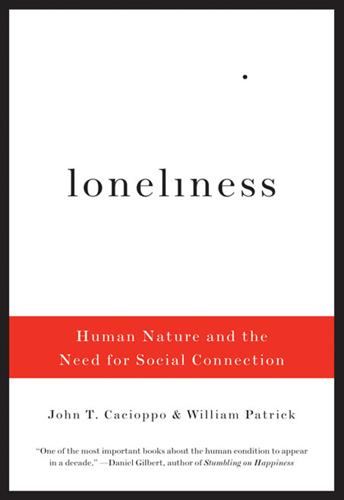
Loneliness: Human Nature and the Need for Social Connection
by
John T. Cacioppo
Published 9 Aug 2009
The apartheid government of South Africa went so far as to destroy a wide swath of Cape Town—a mixed-race area called District Six—precisely because of its rich sense of community. The harmony that had flourished among the district’s crowded mix of blacks and whites and Asian immigrants gave the lie to the ruling party’s agenda of racial separatism. In the 1960s urbanists like Jane Jacobs launched a counteroffensive. Jacobs’s book The Death and Life of Great American Cities is her paean to her own “village”—Greenwich Village in New York City. In its pages she extols the vitality of life on a smaller, more compact scale, where people live and work on the same block. She writes about the greater trust and sense of connection, as well as the enriching, serendipitous encounters that result.
…
In terms of health and well-being, science tells us that there are unintended negative consequences when, as Walter Lippmann put it a century ago, “we have changed our environment more quickly than we know how to change ourselves.”13 Here in the United States, progressive architects and developers have heeded Jane Jacobs’s call to take the imperatives of social connection more seriously. They try to replicate, in new communities such as Celebration, Florida, the physical aspects of small-town life—clustered housing, sidewalks, front porches for sitting—that facilitate social connection. Other communities, such as Treetops in Easthampton, Massachusetts, try to reintegrate older and younger people in a single living arrangement.
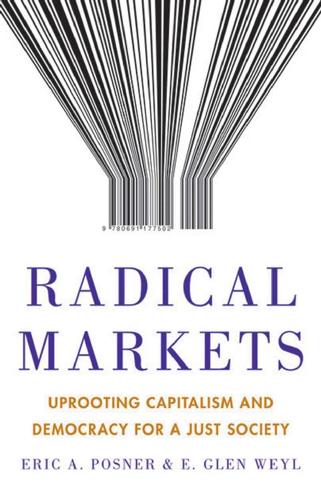
Radical Markets: Uprooting Capitalism and Democracy for a Just Society
by
Eric Posner
and
E. Weyl
Published 14 May 2018
This gives each individual a stake in others’ prosperity and, when markets function successfully, a reason to trust others and to act in a trustworthy manner toward others.15 This spirit is most clearly on display in well-functioning urban settings, where people live among numerous strangers and near-strangers. Urbanist Jane Jacobs describes the “modicum of responsibility” city dwellers take for each other “even if they have no ties to each other.” The critical benefit of “light” trust over the deep connections of tight-knit communities displaced by markets, Jacobs emphasizes, is that it allows for greater diversity and makes “city streets equipped to handle strangers.”16 The sociological spirit of the market is that of the city.
…
Sandel, What Money Can’t Buy: The Moral Limits of Markets (Farrar, Straus and Giroux, 2012), and Samuel Bowles, The Moral Economy: Why Good Incentives Are No Substitute for Good Citizens (Yale University Press, 2016). 14. A. O. Hirschman, Rival Interpretations of Market Society: Civilizing, Destructive, or Feeble?, 20 Journal of Economic Literature 1463 (1982). 15. Durkheim, Division of Labour in Society. 16. Jane Jacobs, The Death and Life of Great American Cities (Random House, 1961). 17. Marion Fourcade & Kieran Healy, Moral Views of Market Society, 33 Annual Review of Sociology 285 (2007), highlight that the most powerful visions of markets have been inherently moralizing and not just economic. We hope some readers will find this moral vision an important component of the project of Radical Markets. 18.

Falter: Has the Human Game Begun to Play Itself Out?
by
Bill McKibben
Published 15 Apr 2019
.… Such is the pattern of exploitation for which you have damned the strong.”26 Also a best seller, Atlas Shrugged nonetheless seemed to be swimming against the prevailing tide. It came out in 1957: Within a few years, Rachel Carson would publish Silent Spring, to far greater acclaim, stripping some of the shine off modernity. In Rand’s Manhattan, the great urbanist Jane Jacobs was busy taking down Robert Moses, the Roark-like New York master-builder who listened to no one as he built highways where he pleased. As the writer Andrea Barnet pointed out recently, a whole cadre of remarkable women came to the fore in those years, from Carson and Jacobs to Betty Friedan and Jane Goodall, and what they shared was a reaction to the “strict hierarchies and separations” of the 1950s.
…
Ayn Rand, The Fountainhead, twenty-fifth anniversary edition (Indianapolis: Bobbs-Merrill, 1968), p. 7. 22. Ibid., p. 3. 23. Burns, Goddess of the Market, p. 86. 24. Ibid. 25. Rand, The Fountainhead, p. 712 (emphasis added). 26. Ayn Rand, Atlas Shrugged (New York: Dutton, 1957), p. 1065. 27. Andrea Barnet, Visionary Women: How Rachel Carson, Jane Jacobs, Jane Goodall, and Alice Waters Changed Our World (New York: Ecco Books, 2018), p. 441. 28. Burns, Goddess of the Market, p. 157. 29. Jonas E. Alexis, Christianity’s Dangerous Idea: How the Christian Principle and Spirit Offer the Best Explanation for Life and Why Other Alternatives Fail: Volume 1 (Bloomington, IN: Authorhouse, 2010), p. 600.

The Trouble With Brunch: Work, Class and the Pursuit of Leisure
by
Shawn Micallef
Published 10 Jun 2014
Much thanks and gratitude to these last two people in particular for their patience and most gentle encouragement. About the Author Shawn Micallef (@shawnmicallef) is the author of Stroll: Psychogeographic Walking Tours of Toronto and Full Frontal T.O., a weekly columnist at the Toronto Star, and a senior editor and co-owner of the independent, Jane Jacobs Prize–winning magazine Spacing. Shawn teaches at the University of Toronto and was a 2011–2012 Canadian Journalism Fellow at University of Toronto’s Massey College. In 2002, while a resident at the Canadian Film Centre’s Media Lab, he co-founded [murmur], the location-based mobile phone documentary project that has spread to over twenty-five cities globally.

#Republic: Divided Democracy in the Age of Social Media
by
Cass R. Sunstein
Published 7 Mar 2017
But if people are sorting themselves into communities of like-minded types, their own freedom is at risk. They are living in a prison of their own design. DEATH AND LIFE Let me now disclose a central inspiration for this book, one that might seem far afield: The Death and Life of Great American Cities by Jane Jacobs.8 Among many other things, Jacobs offers an elaborate tribute to the sheer diversity of cities—to public spaces in which visitors encounter a range of people and practices that they could have barely imagined, and that they could not possibly have chosen in advance. As Jacobs describes great cities, they teem and pulsate with life: It is possible to be on excellent sidewalk terms with people who are very different from oneself and even, as time passes, on familiar public terms with them.
…
Sunstein, Infotopia: How Many Minds Produce Knowledge (Oxford: Oxford University Press, 2006). 5.Shanto Iyengar, Gaurav Sood, and Yphtach Lelkes, “Affect, Not Ideology: A Social Identity Perspective on Polarization,” Public Opinion Quarterly 76, no. 3 (2012): 405, http://pcl.stanford.edu/research/2012/iyengar-poq-affect-not-ideology.pdf (accessed August 29, 2016). 6.Ibid. 7.See Shanto Iyengar and Sean J. Westwood, “Fear and Loathing across Party Lines: New Evidence on Group Polarization,” American Journal of Political Science 59, no. 3 (2015): 690. 8.Jane Jacobs, The Death and Life of Great American Cities (1961; repr., New York: Random House, 1993). 9.Ibid., 81, 95. 10.Putnam, Bowling Alone, 178. 11.See Robert Glenn Howard, “Sustainability and Narrative Plasticity in Online Apocalyptic Discourse after September 11, 2001,” Journal of Media and Religion 5, no. 1 (2006): 25. 12.Adam Mosseri, “Building a Better News Feed for You,” Facebook Newsroom, June 29, 2016, https://newsroom.fb.com/news/2016/06/building-a-better-news-feed-for-you/ (accessed August 29, 2016). 13.Adam D.
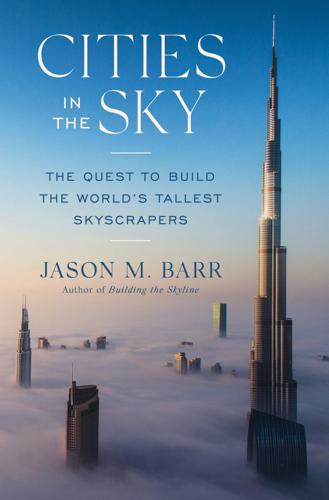
Cities in the Sky: The Quest to Build the World's Tallest Skyscrapers
by
Jason M. Barr
Published 13 May 2024
As a New Yorker, I find the notion of sight lines strange. In the United States, skyscrapers are the sight lines. Alongside the preservationists are the anti-skyscraperists, who feel tall buildings are not consistent with good design and planning and are antithetical to the teachings of urbanists such as Jane Jacobs and Jan Gehl, who argue that low-rise cities are the best. This group of Londoners claims that tall buildings are out of scale, block light and views, spew carbon dioxide, and add to income inequality. They house the superrich and harm the working classes who find themselves priced out of their gentrifying neighborhoods (we will return to the merits or demerits of these arguments in chapter 9).
…
There reformers wanted to clear the slums and provide open space and low-density buildings instead, while politicians wanted high-density housing only for the very poor (so as not to upset middle-class voters who believed cheap housing for other middle-class citizens was unfair). In the end, the comprise created new slums, unhappy residents, and a fear of building heights. In 1961, Jane Jacobs in her classic book, The Death and Life of Great American Cities, showed how Americans got the whole thing in reverse. Instead of fearing naturally occurring density and trying to surgically remove it, she argued, density should be embraced. Cities work not despite density but because of it. And city planners should not try to engineer perfection because the quest for utopia transformed American cities into dystopia.

The Great Mental Models: General Thinking Concepts
by
Shane Parrish
Published 22 Nov 2019
. … Though technical in nature, cartography, like architecture, has attributes of both a scientific and artistic pursuit, a dichotomy not satisfactorily reconciled in all presentations. » Norman J.W. Thrower11 Maps can influence territories: This problem was part of the central argument put forth by Jane Jacobs in her groundbreaking work, The Death and Life of Great American Cities. She chronicled the efforts of city planners who came up with elaborate models for the design and organization of cities without paying any attention to how cities actually work. They then tried to fit the cities into the model.
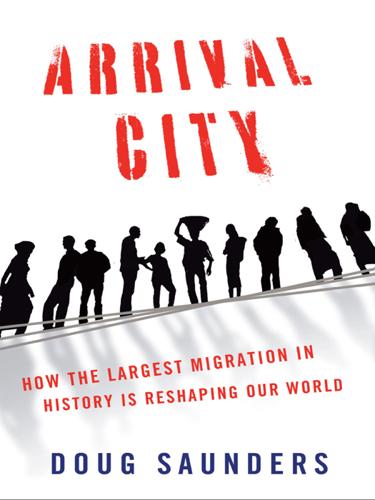
Arrival City
by
Doug Saunders
Published 22 Mar 2011
Most Western urbanites nowadays understand that downtown-core neighborhoods need to be spontaneous, organic, and flexible. Unfortunately, the neighborhoods where newcomers arrive are rarely allowed the same creativity, and their planners remain devoted to rigidly separated uses of property and land. We have learned what is wrong with this zoning approach from hard experience. The urbanist Jane Jacobs, who spent the 1950s studying and admiring the works of these big-project planners, was sent in 1958 to report on a huge slum-redevelopment high-rise project in Philadelphia, built using rigid zoning, low housing density, and broad public squares. “The drawings looked wonderful with all these little people in them,” she told me years later.
…
Housing Policy Debate 15, no. 1 (2004): 3. 10 ARRIVING IN STYLE 1 Gerben Helleman and Frank Wassenber, “The Renewal of What Was Tomorrow’s Idealistic City, Amsterdam’s Bijlmermeer High-Rise,” Cities 21, no. 1 (2004); Ronald Van Kempen et al., eds., Restructuring Large Housing Estates in Europe (Bristol: The Policy Press, 2005). 2 Helleman and Wassenber, “The Renewal of What Was Tomorrow’s Idealistic City, Amsterdam’s Bijlmermeer High-Rise,” 8. 3 Maurice Crul and Liesbeth Heering, eds., The Position of the Turkish and Moroccan Second Generation in Amsterdam and Rotterdam (Amsterdam: Amsterdam University Press, 2008), 63–85, 166. 4 Doug Saunders, “Citizen Jane,” The Globe and Mail, Oct. 11, 1997. 5 William H. Whyte, City: Rediscovering the Center (New York: Doubleday, 1989); Oscar Newman, Defensible Space: Crime Prevention through Urban Design (New York: MacMillan, 1972). 6 Jane Jacobs, The Death and Life of Great American Cities (New York: Random House, 1961), 221. 7 Alice Coleman, Utopia on Trial: Vision and Reality in Planned Housing (London: Longwood, 1985). 8 Narayan, Pritchett and Kapoor, Moving Out of Poverty, 223–72. 9 Recent exposés of the failure of aid include Dambisa Moyo, Dead Aid: Why Aid Is Not Working and How There Is Another Way for Africa (London: Allen Lane, 2009); William Easterly, The White Man’s Burden: Why the West’s Efforts to Aid the Rest Have Done So Much Ill and So Little Good (Oxford: Oxford University Press, 2007).

Whole Earth Discipline: An Ecopragmatist Manifesto
by
Stewart Brand
Published 15 Mar 2009
In this formulation, it is the throwing together of great wealth and great poverty in the urban stew that is part of the cure for poverty. The common theory of the origin of cities states that they resulted from the invention of agriculture: Surplus food freed people to become specialists. You can’t have full-time cobblers, blacksmiths, and bureaucrats, the theory goes, without farms to feed them. Jane Jacobs upended that supposition in The Economy of Cities (1969). “Rural economies, including agricultural work,” she wrote, “are directly built upon city economies and city work.” It was so in the beginning, she argued, and continues to this day. Most farming innovations, for example, are city-based. When Rome collapsed, European agriculture collapsed.
…
In the eighteenth century, the revolutionary use of fodder crops like alfalfa to fix nitrogen in the soil was developed first in city gardens. American agriculture soared in the 1920s when hybrid corn was invented, not on a farm but in a New Haven, Connecticut, laboratory. If agriculture didn’t create cities, what did? Jane Jacobs thought it was trade. My guess, based on the “constant battles” view of history, is defense. The first urban invention, I’ll bet, was a defendable wall, followed by rectangular buildings that allowed close packing of maximum residents within a minimum amount of wall. (Pastoral and hunter-gatherer buildings—yurts, tipis, hogans, wikiups, bomas, and the like—are round.)
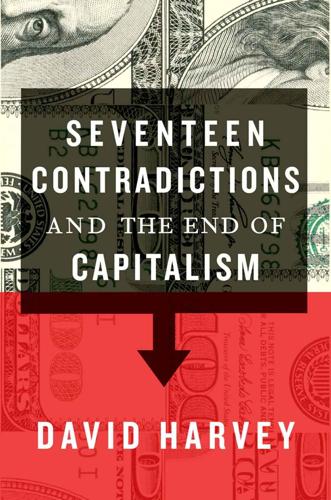
Seventeen Contradictions and the End of Capitalism
by
David Harvey
Published 3 Apr 2014
The new configuration often has spillover effects elsewhere because it creates what Arthur calls ‘opportunity niches’ – arenas where an innovation from one place might be meaningfully applied in another.1 Spontaneous development of innovation centres (some regions, cities and towns have a remarkable record for innovation) occurs because, as was long ago noted by commentators such as Jane Jacobs, the fortuitous co-presence of different skills and knowledges of the sort that Arthur regards as necessary for innovation to occur is more likely to be found in a seemingly chaotic economy characterised by innumerable small businesses and divisions of labour.2 Such environments have historically been far more likely to spawn new technological mixes than a single-dimensional company town.
…
Brian Arthur, The Nature of Technology: What It Is and How It Evolves, New York, Free Press, 2009, p. 202. Contradiction 8: Technology, Work and Human Disposability 1. W. Brian Arthur, The Nature of Technology: What It Is and How It Evolves, New York, Free Press, 2009, pp. 22 et seq. 2. Jane Jacobs, The Economy of Cities, New York, Vintage, 1969. 3. Arthur, The Nature of Technology, p. 211. 4. Alfred NorthWhitehead, Process and Reality, New York, Free Press, 1969, p. 33. 5. Arthur, The Nature of Technology, p. 213; Karl Marx, Grundrisse, Harmondsworth, Penguin, 1973. 6.

Exponential: How Accelerating Technology Is Leaving Us Behind and What to Do About It
by
Azeem Azhar
Published 6 Sep 2021
Life in cities is similar. As someone leaves their home for their daily commute to the office, they encounter millions of different variables. It’s as if they are scanning millions of books while looking for the right one. Strangers are the critical ingredient here: as the eminent American urbanist Jane Jacobs put it, ‘[Cities] differ from towns and suburbs in basic ways, and one of these is that cities are, by definition, full of strangers.’31 Consider the power of this mingling in a city like Hsinchu, home to many of the world’s leading chip experts. There is an exponential effect at play: once a city has been established as the go-to place for, say, AI research, the world’s best AI researchers flock there.
…
, National Defense University Press, 12 July 2016 <http://ndupress.ndu.edu/Media/News/News-Article-View/Article/834357/will-technological-convergence-reverse-globalization/> [accessed 6 September 2020]. 26 Nick Butler, ‘US Energy Independence Has Its Costs’, Financial Times, 2019 <https://www.ft.com/content/20870c24-0b86-11ea-b2d6-9bf4d1957a67> [accessed 10 May 2021]. 27 ‘Urban Population (per cent of Total Population)’, World Bank Data <https://data.worldbank.org/indicator/SP.URB.TOTL.IN.ZS> [accessed 11 January 2021]. 28 Azeem Azhar, ‘Don’t Call Time on the Megacity’, Exponential View, 20 May 2020 <https://www.exponentialview.co/p/-dont-call-time-on-the-megacity> [accessed 13 January 2021]. 29 Genevieve Giuliano, Sanggyun Kang and Quan Yuan, ‘Agglomeration Economies and Evolving Urban Form’, The Annals of Regional Science, 63(3), 2019, pp. 377–398 <https://doi.org/10.1007/s00168-019-00957-4>. 30 Cheng Ting-Fang, ‘How a Small Taiwanese City Transformed the Global Chip Industry’, Nikkei Asia, 15 December 2020 <https://asia.nikkei.com/Business/Technology/How-a-small-Taiwanese-city-transformed-the-global-chip-industry> [accessed 13 January 2021]. 31 Jane Jacobs, The Death and Life of Great American Cities (New York: Random House, 1961), p. 31. 32 West, Scale, pp. 281–88. 33 ‘Bright Lights, Big Cities’, The Economist, 4 February 2015 <https://www.economist.com/node/21642053> [accessed 20 March 2021]. 34 Jeff Desjardins, ‘By 2100 None of the World’s Biggest Cities Will Be in China, the US or Europe’, World Economic Forum, 20 July 2018 <https://www.weforum.org/agenda/2018/07/by-2100-none-of-the-worlds-biggest-cities-will-be-in-china-the-us-or-europe/> [accessed 20 March 2021]. 35 ‘Cities Worldwide Will Struggle, but Will Avoid a Mass Exodus’, The Economist, 17 November 2020 <https://www.economist.com/the-world-ahead/2020/11/17/cities-worldwide-will-struggle-but-will-avoid-a-mass-exodus> [accessed 20 March 2021]. 36 ‘COVID-19 and the Myth of Urban Flight’, Knowledge@Wharton, 1 December 2020 <https://knowledge.wharton.upenn.edu/article/covid-19-and-the-myth-of-urban-flight/> [accessed 13 January 2021]. 37 Samrat Sharma, ‘India’s Rural-Urban Divide: Village Worker Earns Less than Half of City Peer’, Financial Express, 12 December 2019 <https://www.financialexpress.com/economy/indias-rural-urban-divide-village-worker-earns-less-than-half-of-city-peer/1792245/> [accessed 18 March 2021]. 38 ‘Is There Really an Ever-Widening Rural-Urban Divide in Europe’, Euler Hermes Global, 17 July 2019 <https://www.eulerhermes.com/en_global/news-insights/economic-insights/Is-there-really-an-ever-widening-rural-urban-divide-in-Europe.html> [accessed 18 March 2021]. 39 Patrick Greenfield, ‘Uber Licence Withdrawal Disproportionate, Says Theresa May’, The Guardian, 28 September 2017 <http://www.theguardian.com/technology/2017/sep/28/uber-licence-withdrawal-disproportionate-says-theresa-may> [accessed 23 March 2021]. 40 ‘Why Cities and National Governments Clash over Migration’, Financial Times, 4 June 2019 <https://www.ft.com/content/319ec1f6-5d25-11e9-840c-530737425559>. 41 John Perry Barlow, ‘A Declaration of the Independence of Cyberspace’, January 1996 <https://www.eff.org/cyberspace-independence> [accessed 7 January 2020]. 42 Andrei Soldatov Borogan Irina, ‘How the 1991 Soviet Internet Helped Stop a Coup and Spread a Message of Freedom’, Slate, August 2016 <https://slate.com/technology/2016/08/the-1991-soviet-internet-helped-stop-a-coup-and-spread-a-message-of-freedom.html> [accessed 31 July 2020]. 43 Berhan Taye and Sage Cheung, ‘The State of Internet Shutdowns in 2018’, Access Now, 8 July 2019 <https://www.accessnow.org/the-state-of-internet-shutdowns-in-2018/> [accessed 19 July 2020]. 44 Claudia Biancotti, ‘India’s Ill-Advised Pursuit of Data Localization’, Pieterson Institute for International Economics, 9 December 2019 <https://www.piie.com/blogs/realtime-economic-issues-watch/indias-ill-advised-pursuit-data-localization> [accessed 20 March 2021]. 45 DLA Piper, Data Protection Laws of the World. 46 Alan Beattie, ‘Data Protectionism: The Growing Menace to Global Business’, Financial Times, 14 May 2018 <https://medium.com/financial-times/data-protectionism-the-growing-menace-to-global-business-f994da37e9e2> [accessed 26 March 2021]. 47 Ian Bremmer, ‘Why We Need a World Data Organization.
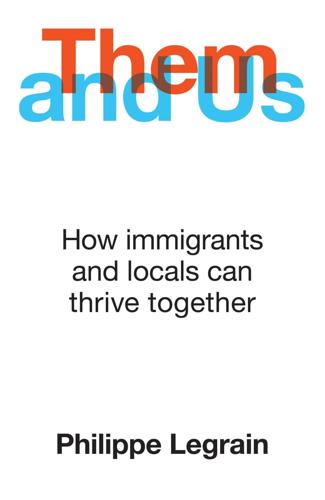
Them and Us: How Immigrants and Locals Can Thrive Together
by
Philippe Legrain
Published 14 Oct 2020
That tends to happen in dense, diverse cities with people of different disciplines sparking off each other – what I call the 3D model of innovation. The stimulus for new ideas may be a questioning mind, a pressing demand for solutions to problems or the pressure of competition. Wherever the demand for innovation comes from, it tends to be supplied in cities, as Jane Jacobs, a great American urbanist, first pointed out in the 1960s.6 More recently, Harvard economist Ed Glaeser documented in Triumph of the City how most innovation takes place in diverse, densely populated cities, where people are forever interacting with each other and experiencing new things. ‘We are a social species and we learn by being around clever people,’ he observes.7 ‘Cities have long sped this flow of ideas.’
…
, Migration Policy Debates 19, OECD, May 2019. https://www.oecd.org/migration/mig/migration-policy-debates-19.pdf 77 The top ten countries in terms of their attractiveness to highly educated workers, before factoring in visa rules, are the US, Australia, New Zealand, Canada, Sweden, Ireland, Switzerland, Norway, the Netherlands and the UK. 78 The top ten most attractive OECD countries to highly educated workers are Australia, Sweden, Switzerland, New Zealand, Canada, Ireland, the US, the Netherlands, Slovenia and Norway. 10 Diversity Dividend 1 Chris Bascombe, ‘Jurgen Klopp delights in diverse personalities of Liverpool’s record-hunting defensive bedrock’, Telegraph, 4 April 2019. https://www.telegraph.co.uk/football/2019/04/04/jurgen-klopp-delights-diverse-personalities-liverpools-record/ 2 Leslie Pray, ‘Discovery of DNA structure and function: Watson and Crick’, Nature Education, 1:1, 2008. https://www.nature.com/scitable/topicpage/discovery-of-dna-structure-and-function-watson-397/ 3 David Rowan, ‘DeepMind: inside Google’s super-brain’, Wired, 22 June 2015. https://www.wired.co.uk/article/deepmind 4 Ernest Miguelez, Julio Raffo, Christian Chacua, Massimiliano Coda-Zabetta, Deyun Yin, Francesco Lissoni, Gianluca Tarasconi, ‘Tied in: The Global Network of Local Innovation’, WIPO Economic Research Working Paper 58, November 2019. https://www.wipo.int/publications/en/details.jsp?id=4472&plang=EN 5 Quoted in Daniel Finkelstein, ‘How to bring brains together – at top speed’, The Times, 11 September 2013. http://www.thetimes.co.uk/tto/opinion/columnists/danielfinkelstein/article3865753.ece 6 Jane Jacobs, The Death and Life of Great American Cities, Random House, 1961. 7 Edward Glaeser, Triumph of the City: How Our Greatest Invention Makes Us Richer, Smarter, Greener, Healthier and Happier, Macmillan, 2011. 8 Richard Florida, The Rise of The Creative Class: And How It’s Transforming Work, Leisure, Community And Everyday Life, Basic Books, 2002. 9 ‘Mayors and mammon’, The Economist, 13 July 2013. http://www.economist.com/news/business/21581695-city-leaders-are-increasingly-adopting-business-methods-and-promoting-business-mayors-and-mammon 10 Frans Johansson, The Medici Effect: Breakthrough Insights at the Intersection of Ideas, Concepts, and Cultures, Harvard Business School, 2004. 11 Donald Campbell, ‘Blind Variation and Selective Retention in Creative Thought as in Other Knowledge Processes’, Psychological Review, 67:6, 1960, pp. 380–400. 12 Dean Simonton, Origins of Genius, Oxford, 1999. 13 Scott Page, The Difference: How the Power of Diversity Creates Better Groups, Firms, Schools, and Societies, Princeton, 2007. 14 Ibid. 15 Chiara Franzoni, Giuseppe Scellato and Paula Stephan, ‘The mover’s advantage: The superior performance of migrant scientists’, Economics Letters, 122:1, January 2014, pp. 89–93. http://www.sciencedirect.com/science/article/pii/S0165176513004874 16 Jennifer Hunt and Marjolaine Gauthier-Loiselle, ‘How Much Does Immigration Boost Innovation?’
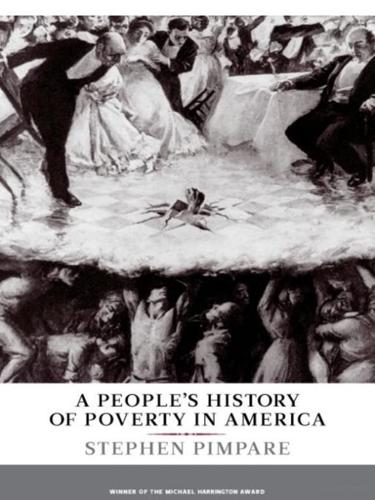
A People's History of Poverty in America
by
Stephen Pimpare
Published 11 Nov 2008
Mothers on welfare often shoulder the burden for working mothers who simply cannot be around enough to exercise vigilance. They provide an adult presence in the parks and on the sidewalks where it is most needed. Without these stay-at-home moms in the neighborhood, many a working-poor parent would have no choice but to force the kids to stay at home all day.18 This is the point that urbanist Jane Jacobs has made about the importance of a watchful eyes and mutual policing for a healthy, safe neighborhood. 19 And there’s this interesting observation by one journalist writing about recipients in Washington, D.C.:Although neither mother not daughter talked about it directly, there was another difference between wages and a welfare check.
…
Plotnick, and Mark Evan Edwards, “Determinants of Initial Entry onto Welfare by Young Women,” Journal of Policy Analysis and Management 19, no. 4 (2000): 527–46. 16 Steven VanderStaay, Street Lives: An Oral History of Homeless Americans (Philadelphia: New Society Publishers, 1992), 170. 17 Joe Soss, Unwanted Claims: The Politics of Participation in the U.S. Welfare System (Ann Arbor: University of Michigan Press, 2002), 45. 18 Katherine S. Newman, No Shame in My Game: The Working Poor in the Inner City (New York: Vintage, 1999), 219. 19 Jane Jacobs, The Death and Life of Great American Cities (New York: Vintage, 1961). 20 Nicholas Lemann, “Bad Choices: A Welfare Soap Opera,” Washington Post, October 5–8, 1980 (four-part series). 21 Note also Mexican American field laborer Grace Palacio Arceneaux, interviewed in 1977, about growing up in California and the stinginess of relief: “Man, they never gave us anything, but they watched us like a hawk.
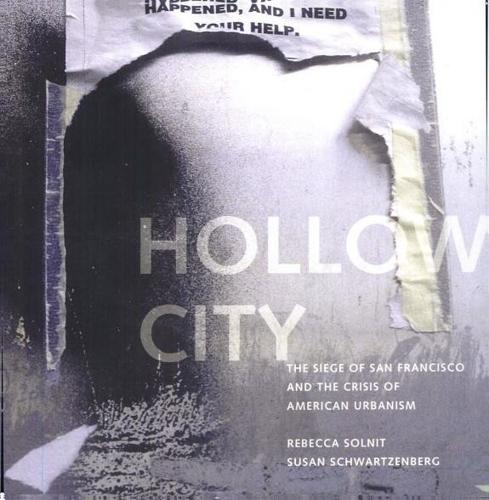
Hollow City
by
Rebecca Solnit
and
Susan Schwartzenberg
Published 1 Jan 2001
report went the neighborhood because single-family houses had been converted into apartments, convalescent hospitals and rooming houses and because (It is "stores, industry and houses are haphazardly intermingled." just this intermingling that suburban design sought to eliminate and that Jane Jacobs's 1961 manifesto, The Death and Life of Great American Cities, celebrates as key to the vitality of urban None of life.) the reports mentions that Fillmore Street had Harlem of the West, where jazz become the clubs and a lively nightlife flourished. My octogenarian neighbor who emigrated to the Western Addition from Texas around the time of the Second World War still speaks fondly of the elegant arches of lights that used to adorn Fillmore Street, of the six movie theaters, the of the street its hotels with wonderful jazz clubs, the liveliness at all hours.
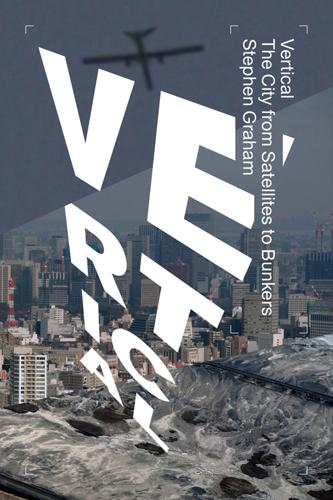
Vertical: The City From Satellites to Bunkers
by
Stephen Graham
Published 8 Nov 2016
In the fierce debates about the design and management of vertical mass housing that developed in France, the UK, the US and elsewhere from the late 1960s, vertical mass housing began to be read off as an (often racialised) proxy for pathologically rooted ‘urban problems’: crime, poverty, gang violence, ghettoisation and drug misuse. Jane Jacobs, the most influential critic of all, complained of the ‘great blight of dullness’ in the cheap and poorly designed US public housing projects.18 Dutch planner John Habraken, meanwhile, criticised modernist planners and architects for being ‘bewitch[ed] by partially understood technical possibilities’ which resulted in a soul-destroying ‘“automatism” and uniformity in housing design.’19 Certainly, the forcible and arrogant rehousing and removal of populations into warrens of cell-like apartments within badly sited, poorly designed and under-landscaped housing towers was often socially disastrous.
…
In a study of condo developments in Toronto, architecture researcher Michael Panacci found that the top of the building podiums, replete with lighted lagoons and luxury bars, often tends to be more active than the real street below, which is often now fringed by the highly securitised buildings and their car-garage entrances.48 The result is often a simulated urbanity – but one that is elitist, controlled, sterile and removed from the wider public city. ‘As these jointly owned spaces increase in complexity and use, they begin to form a new interior urban realm’,49 Panacci continues. ‘If Jane Jacobs’ view of urbanity centred on the street and neighbourhood block in the 60’s, it is becoming abundantly clear that to the current generation, urbanity must now surely include the condo corridor, elevator, its amenity spaces and the lobby.’50 Panacci’s research also shows that neighbourly interaction between the residents of new condo towers is often minimal.
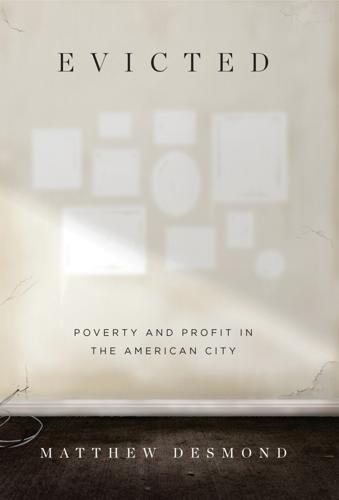
Evicted: Poverty and Profit in the American City
by
Matthew Desmond
Published 1 Mar 2016
“The public peace—the sidewalk and street peace—of cities is not kept primarily by the police, necessary as police are. It is kept primarily by an intricate, almost unconscious, network of voluntary controls and standards among the people themselves, and enforced by the people themselves.” So wrote Jane Jacobs in The Death and Life of Great American Cities. Jacobs believed that a prerequisite for this type of healthy and engaged community was the presence of people who simply were present, who looked after the neighborhood. She has been proved right: disadvantaged neighborhoods with higher levels of “collective efficacy”—the stuff of loosely linked neighbors who trust one another and share expectations about how to make their community better—have lower crime rates.3 A single eviction could destabilize multiple city blocks, not only the block from which a family was evicted but also the block to which it begrudgingly relocated.
…
In other words, unforced movers whose previous move was involuntary were far more likely to cite housing or neighborhood problems as the reason for moving than were unforced movers whose previous move was also unforced. Not only do poor renters disproportionately experience involuntary displacement, but involuntary displacement itself brings about subsequent residential mobility. See Desmond et al., “Forced Relocation and Residential Instability Among Urban Renters.” 3. Jane Jacobs, The Death and Life of Great American Cities (New York: Random House, 1961), 31–32; Robert Sampson, Great American City: Chicago and the Enduring Neighborhood Effect (Chicago: University of Chicago Press, 2012), especially 127, 146–47, 151, 177, 231–32. For an ethnographic take on the uses of public space, see Mitchell Duneier, Sidewalk (New York: Farrar, Straus and Giroux, 1999). 4.

The Lonely Century: How Isolation Imperils Our Future
by
Noreena Hertz
Published 13 May 2020
That sloping bus-shelter seat is not just inhospitable to ‘loiterers’, it also makes it a lot harder for the person with MS who uses a walking stick to take the bus to go shopping or meet friends. The Camden Bench that repels skateboarders also repels the elderly people who might in the past have spent a pleasant afternoon sitting in the sun, chatting with shopkeepers on their lunch breaks or passing children – those stalwart figures of community that urban-planning activist Jane Jacobs called our ‘eyes on the street’.25 In taking up the morally dubious task of protecting neighbourhoods from those deemed ‘undesirable’, hostile architecture denies us all shared spaces in which to sit together, hang out together, come together. It’s ironic that a strategy aimed to protect community may well do the very opposite.
…
While it does not have the highest total number of people experiencing homelessness, San Francisco has one of the fastest growing homeless populations in the US, having risen a shocking 30% just between 2017 and 2018, by one measure (Jill Cowan, ‘San Francisco’s Homeless Population Is Much Bigger Than Thought, City Data Suggests’, New York Times, 19 November 2019, https://www.nytimes.com/2019/11/19/us/san-francisco-homeless-count.html). 24 James Walker, ‘Invisible in plain sight: fighting loneliness in the homeless community’, Open Democracy, 31 July 2019, https://www.opendemocracy.net/en/opendemocracyuk/invisible-plain-sight-fighting-loneliness-homeless-community/. 25 See Jane Jacobs, The Death and Life of Great American Cities (Random House, 1961). 26 ‘Welcome to the neighbourhood’, Royal Wharf, https://www.royalwharf.com/neighbourhood/. 27 Robert Booth, ‘Subsidised tenants are excluded from pool and gym in London block’, Guardian, 1 November 2018, https://www.theguardian.com/society/2018/nov/01/subsidised-tenants-are-excluded-from-pool-and-gym-in-london-tower. 28 Harriet Grant, ‘Too poor to play: children in social housing blocked from communal playground’, Guardian, 25 March 2019, https://www.theguardian.com/cities/2019/mar/25/too-poor-to-play-children-in-social-housing-blocked-from-communal-playground. 29 The company, for its part, claims that such exclusion was never its policy. 30 Harriet Grant, ‘Disabled children among social tenants blocked from communal gardens’, Guardian, 27 September 2019, https://www.theguardian.com/cities/2019/sep/27/disabled-children-among-social-tenants-blocked-from-communal-gardens. 31 ‘New UWS development could have separate entrance for poorer people’, West Side Rag, 12 August 2013, https://www.westsiderag.com/2013/08/12/new-uws-development-could-have-separate-entrance-for-poorer-people; Adam Withnall ‘“Poor door” controversy extends to Washington DC as affordable housing “wing” given entrance on different street – next to the loading bay’, Independent, 4 August 2014, https://www.independent.co.uk/news/world/americas/poor-door-controversy-extends-to-washington-dc-as-affordable-housing-wing-given-entrance-on-9646069.html; Hilary Osborne, ‘Poor doors: the segregation of London’s inner–city flat dwellers’, Guardian, 25 July 2014, https://www.theguardian.com/society/2014/jul/25/poor-doors-segregation-london-flats. 32 Adam Withnall, ‘“Poor door” controversy extends to Washington, D.C. as affordable housing “wing” given entrance on different street – next to the loading bay’; New York has now closed the loophole that allowed buildings with separate entrances to qualify for the ‘inclusionary housing’ tax break.
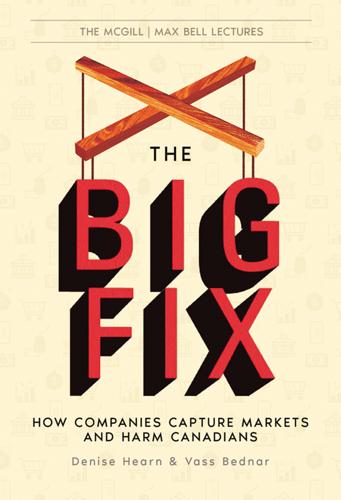
The Big Fix: How Companies Capture Markets and Harm Canadians
by
Denise Hearn
and
Vass Bednar
Published 14 Oct 2024
It was recognized that you really need safeguards on both sides to create real liberty and real democracy.267 Competition policy is about protecting the commercial conditions of markets so they foster human flourishing. In her book, The Nature of Economies, renowned American-Canadian author and activist, Jane Jacobs, articulates the two connected traits necessary for species survival. The first is Darwin’s survival of the fittest, often cited when thinking about competition. And the second trait, arguably more important but little mentioned, is habitat maintenance: ensuring the ongoing preservation of the habitat in which competition takes place.
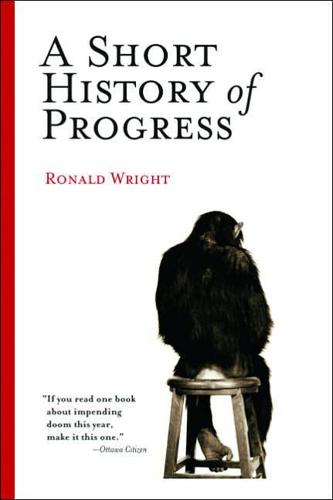
A Short History of Progress
by
Ronald Wright
Published 2 Jan 2004
See Science, June 13, 2003. 42. For example, French Meroving skeletons from the early Middle Ages show chronic starvation, partly because metal was reserved for weapons, leaving peasants who no longer knew how to make stone tools scratching the ground with wooden hoes and ploughs. Georges Duby and Robert Mandrou quoted in Jane Jacobs, The Economy of Cities (New York: Random House, 1969), pp. 14–15. 43. Çatal Hüyük, which is near a volcano, seems to have traded in obsidian. 44. Gordon Childe, What Happened in History (Harmondsworth, UK: Pelican, 1964), p. 74. 45. “Living room” for the German Volk. 46. The decline of the Devil since the Enlightenment is illustrated by an anecdote from the life of the great French geologist and naturalist Georges Cuvier (1769–1832).

Rendezvous With Oblivion: Reports From a Sinking Society
by
Thomas Frank
Published 18 Jun 2018
Before 1950, the adjective was used mainly to describe colors and sound—the latter of which, after all, is transmitted through the air as vibrations. People’s voices were often said to be vibrant. As were, say, notes played on an oboe. To apply the adjective to a “community” or a “scene,” on the other hand, was extremely unusual back then. In fact, the word “vibrant” does not seem to appear at all in Jane Jacobs’s 1961 urban classic The Death and Life of Great American Cities, even though that book is often remembered as the manifesto of vibrancy theory. How the expression made the leap from novelty to gold-plated bureaucratic buzzword is anyone’s guess. The real force behind our mania for the vibrant is the nation’s charitable foundations.

The Rational Optimist: How Prosperity Evolves
by
Matt Ridley
Published 17 May 2010
But they were exchanging harder in this region than anywhere else, and it is a reasonable guess that one of the pressures to invent agriculture was to feed and profit from wealthy traders – to generate a surplus that could be exchanged for obsidian, shells or other more perishable goods. Trade came first. In the 1960s, Jane Jacobs suggested in her book The Economy of Cities that agriculture was invented to feed the first cities, rather than cities being made possible by the invention of agriculture. This goes too far, and archaeologists have discredited the idea of urban centres preceding the first farms. The largest permanent settlements of hunter-gatherers cannot be described as urban even among the fishermen of the Pacific coast of North America.
…
p. 127 ‘One of the intriguing things about the first farming settlements is that they also seem to be trading towns’. Sherratt, A. 2005. The origins of farming in South-West Asia. ArchAtlas, January 2008, edition 3, http://www.archatlas.org/OriginsFarming/Farming.php, accessed 30 January 2008. p. 128 ‘Jane Jacobs suggested in her book The Economy of Cities’. Jacobs, J. 1969. The Economy of Cities. Random House. p. 128 ‘In Greece, farmers arrived suddenly and dramatically around 9,000 years ago.’ Perles, C. 2001. The Early Neolithic in Greece. Cambridge University Press. p. 128 ‘so the genetic evidence suggests’.
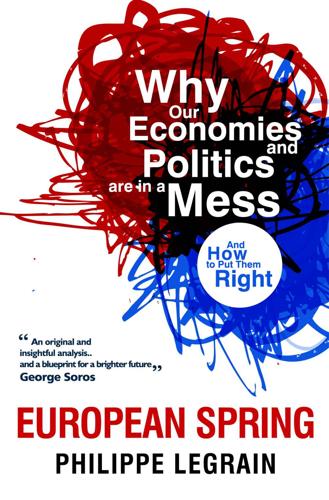
European Spring: Why Our Economies and Politics Are in a Mess - and How to Put Them Right
by
Philippe Legrain
Published 22 Apr 2014
Firms have responded to the threat of Chinese imports by increasing their productivity through adopting better information technology, higher spending on R&D and increased patenting.597 So opening up the economy and boosting competition more generally are vital for innovation and growth in Europe. Wherever the demand for innovation comes from, it tends to be supplied in cities. Jane Jacobs, a great American urbanist, pointed this out in the 1960s.598 More recent research by Ed Glaeser of Harvard University documents this. In his masterful Triumph of the City: How Our Greatest Invention Makes Us Richer, Smarter, Greener, Healthier and Happier, he explains how most innovation takes place in diverse, densely populated cities, where people are forever interacting with each other and experiencing new things.599 “We are a social species and we learn by being around clever people,” he observes.600 “Cities have long sped this flow of ideas.
…
title=File:Gross_domestic_expenditure_on_R%26D,_2000-2010_%28%25_share_of_GDP%29.jpg 595 http://www.oecd.org/site/innovationstrategy/45183382.pdf 596 http://www.oecd.org/site/innovationstrategy/45184357.pdf 597 Nick Bloom, Mirko Draca and John Van Reenen, “Trade Induced Technical Change: The Impact of Chinese Imports on Innovation and Productivity”, CEPR Discussion Paper No. 1000, 2011 http://www.voxeu.org/article/who-s-afraid-big-bad-dragon-how-chinese-trade-boosts-european-innovation 598 Jane Jacobs, The Death and Life of Great American Cities, Random House: 1961 599 Edward Glaeser, Triumph of the City: How Our Greatest Invention Makes Us Richer, Smarter, Greener, Healthier and Happier, Macmillan: 2011 600 http://www.ft.com/cms/s/0/d6074404-48f5-11e0-af8c-00144feab49a.html 601 http://www.economist.com/news/business/21581695-city-leaders-are-increasingly-adopting-business-methods-and-promoting-business-mayors-and-mammon 602 Alfred Marshall, Principles of Economics, 1890 603 Pierre Azoulay, Joshua Graff Zivin and Bhaven Sampat, "The diffusion of scientific knowledge across time and space: Evidence from professional transitions for the superstars of medicine", NBER Working Paper #16683, January 2011 604 Benjamin Jones, "The burden of knowledge and the ‘death of the renaissance man’: Is innovation getting harder?"

Wealth and Poverty: A New Edition for the Twenty-First Century
by
George Gilder
Published 30 Apr 1981
Two of the most thriving of the world’s economies lost nearly all their material capital during World War II and surged back by emancipating entrepreneurs. The materialist vision, by contrast, leads merely to newer versions of the fate of Midas. PART THREE THE ECONOMY OF FAITH CHAPTER NINETEEN THE KINETIC ECONOMY IN EVERY ECONOMY, AS Jane Jacobs has said, there is one crucial and definitive conflict.1 This is not the split between capitalists and workers, technocrats and humanists, government and business, liberals and conservatives, or rich and poor. All these divisions are partial and distorted reflections of the deeper conflict: the struggle between past and future, between the existing configuration of industries and the industries that will someday replace them.
…
Walton, ed., Inflation and National Survival, Proceedings of the Academy of Political Science, vol. 33, no. 3 (New York: the Academy of Political Science, 1979), pp. 149–154. 7 Hendrik Houthakker, “The Inverse Relation between Company Growth and Price Movements,” Brookings Papers on Economic Activity, no. 1 (Washington, DC: the Brookings Institution, 1979). 8 Abridged from Thomas Macaulay, The History of England, chapter 19, as quoted in Challenge 21, no. 4 (September–October 1978), pp. 3–6. 9 W. Arthur Lewis, The Theory of Economic Growth (London: George Allen & Unwin Ltd., 1955), p. 405. Chapter Nineteen 1 Jane Jacobs, The Economy of Cities (New York: Random House, 1969). Toward the end of this fascinating work, Jacobs writes: “The primary economic conflict, I think, is between people whose interests are with already well-established economic activities, and those whose interests are with the emergence of new economic activities” (p. 249). 2 Quoted in Arnold Heertje, Economics and Technical Change (New York: John Wiley & Sons, 1977), p. 75. 3 Joseph Schumpeter, Capitalism, Socialism, and Democracy (New York: Harper & Row, 1962). 4 William Tucker, “Of Mites and Men,” Harper’s, vol. 257, no. 1539 (August 1978) pp. 43–58. 5 Martin J.

Good Economics for Hard Times: Better Answers to Our Biggest Problems
by
Abhijit V. Banerjee
and
Esther Duflo
Published 12 Nov 2019
This was the argument made in New York City in support of the subsidies to Amazon: that as an investment they were well worth it.41 An alternative way to attract businesses to a particular location is to build infrastructure. This is what the Tennessee Valley Authority (TVA) did for Tennessee and its neighboring states over the period 1930–1960, using public funds to build roads, dams, hydroelectric plants, etc. The idea was that infrastructure would attract firms, firms would attract other firms, and so on. Jane Jacobs, one of the most influential American urbanists of the twentieth century, was skeptical. She wrote a piece about it in 1984, called, quite simply, “Why TVA Failed.”42 But it did not fail. Enrico Moretti and a colleague compared the TVA region with six other areas initially supposed to receive the same type of investment but where, for various political reasons, nothing happened.
…
(Boston: Mariner Books, 2012). 40 Michael Greenstone, Richard Hornbeck, and Enrico Moretti, “Identifying Agglomeration Spillovers: Evidence from Winners and Losers of Large Plant Openings,” Journal of Political Economy 118, no. 3 (June 2010): 536–98, https://doi.org/10.1086/653714. 41 Of course, the question being asked in New York was not about the size of the gains (everybody agreed there would be some) but why Amazon was allowed to keep so much of it for themselves. After all, Alexandria offered much less, and Boston nothing at all (but then Boston did not win). 42 Jane Jacobs, “Why TVA Failed,” New York Review of Books, May 10, 1984. 43 43.Patrick Kline and Enrico Moretti, “Local Economic Development, Agglomeration Economies, and the Big Push: 100 Years of Evidence from the Tennessee Valley Authority,” Quarterly Journal of Economics 129, no. 1 (2014): 275–331, https://doi.org/10.1093/qje/qjt034. 44 Ten percent growth over the past decade will raise growth over the next decade by 20 percent of 10 percent, which is 2 percent.
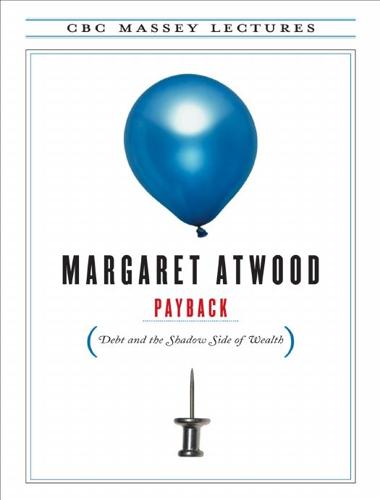
Payback: Debt and the Shadow Side of Wealth
by
Margaret Atwood
Published 15 Mar 2007
During the Great Depression, for instance, few in rural Nova Scotia had cash to spare, but my grandfather — the local doctor — got paid anyway, in chickens and wood. They certainly did get sick of chicken, said my mother, but at least they were never cold. IN HER 1994 BOOK, Systems of Survival, Jane Jacobs proposes the theory that there are only two ways in which human beings acquire objects: taking and trading. Everything we do in the way of accumulation falls under one of these two heads, says Jacobs, and we should never confuse the two. We should be especially careful to prevent experts in one area from being put in charge of the other.
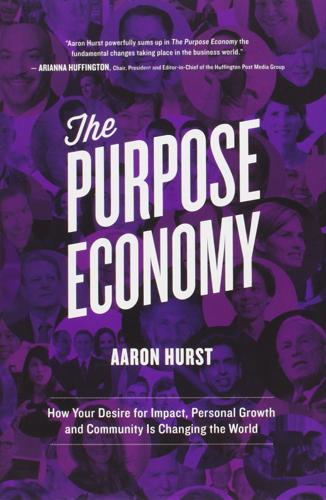
The Purpose Economy: How Your Desire for Impact, Personal Growth and Community Is Changing the World
by
Aaron Hurst
Published 31 Aug 2013
Lee, Elon Musk, Peter Koechley & Eli Pariser, David Payne and Michael Tavani, Michael Bloomberg, Rachel Kleinfeld, John Mackey, Michael Pollan, Brad Neuberg, Chris Anderson, David Edinger, Scotty Martin, Dr. Regina Benjamin, Frank Perez, Al Gore, Zack Exley and Judith Freeman, Ben Goldhirsh, Adam Grant, David Javerbaum, Dr. Jon Kingsdale, Jane Jacobs, Jimmy Wales and Larry Sanger, Jorge Montalvo, Judge Jonathan Lippman, Justin Hall, Molla S. Donaldson, Karl D. Yordy, Kathleen N. Lohr, and Neal A. Vanselow, Peter Block INTRODUCTION I am 39 years old. As an American male, my life expectancy is 76. I’m already in the second half of my life, though I’m often still referred to as a “young leader.”
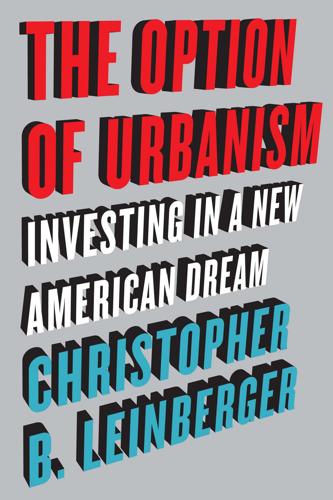
The Option of Urbanism: Investing in a New American Dream
by
Christopher B. Leinberger
Published 15 Nov 2008
Walkable urbanism as exhibited in Midtown Manhattan is at one extreme, and 1955 downtown Hill Valley is at the other extreme. The range in each place depends on the local market and political conditions. D E F I N I N G WA L K A B L E U R B A N I S M | 1 1 7 Of course, high-density development with a particular FAR is not the only thing that has to be in place to make a walkable urban place work, as the late Jane Jacobs taught us all in her critically important Life and Death of Great American Cities. Having a rich mix of different uses—retail, educational, civic, hotel, office, and housing—is essential as well, as the term “urbanism” implies. The streets and sidewalks must also be safe and convenient and allow easy connections among these many uses.
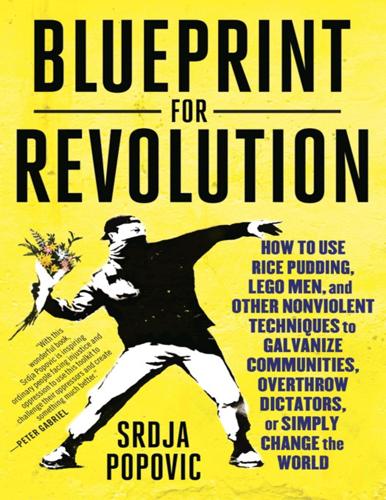
Blueprint for Revolution: How to Use Rice Pudding, Lego Men, and Other Nonviolent Techniques to Galvanize Communities, Overthrow Dictators, or Simply Change the World
by
Srdja Popovic
and
Matthew Miller
Published 3 Feb 2015
I told the Egyptians about Harvey Milk, the slain gay rights leader. He became the rst openly gay person to be elected to public o ce in California, and he was just a humble shopkeeper from San Francisco before he decided that attitudes about homosexuality needed to change. Harvey was another hobbit. When Jane Jacobs decided to stare down Robert Moses—the most powerful man in New York City, whose insane plan to plow a superhighway through the historic neighborhoods of downtown Manhattan would have destroyed the city—she was derided as a shrill housewife and a crazy dame. That’s because Jacobs, who ended up revolutionizing the eld of urban planning without even having a college degree, was a hobbit too.
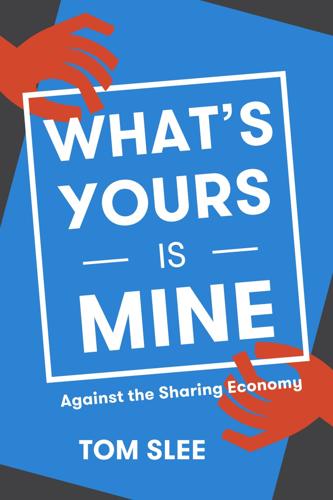
What's Yours Is Mine: Against the Sharing Economy
by
Tom Slee
Published 18 Nov 2015
Even when the company pays taxes on behalf of its hosts it refuses to give to the city governments the names and addresses of those hosts, making it almost impossible for democratically elected city governments to manage the impact of tourism on some their most valuable neighborhoods. Airbnb also demands homogenization: it operates in 34,000 cities and chafes at the inconsistency of regulations; but each city is different and the inconsistency, or variety, of regulations is a feature, not a bug. The ideas of urbanist Jane Jacobs have been a prolific source of ideas about the value of commons in our daily lives, but technology organizations such as Code for America, who seek to combine Jacobs’ ideas with software and work “to change the way cities work through technology and public service” are pursuing a contradiction.

The Techno-Human Condition
by
Braden R. Allenby
and
Daniel R. Sarewitz
Published 15 Feb 2011
They may use economic efficiency or the military equivalents to evaluate some thingsfor example, whether to put a certain machine in a factory, whether to introduce a certain product line, whether to deploy a certain weapon platform. But to understand their social and cultural environment, they use scenarios and games and "serious play"-structured and intelligent muddling. Jane Jacobs makes a similar point in regard to the complexity of cities and economic development. Jacobs cites the observation of the Japanese anthropologist Tadao Umesao that "historically the Japanese have always done better when they drifted in an empirical, practical fashion ... than when they attempted to operate by 'resolute purpose' and 'determined In Front of Our Nose 169 will,'" and she notes that Massachusetts' famous Route 128 technology corridor succeeded because of a "process of openended drift, taking up opportunities whatever they might be and whither they might lead."?
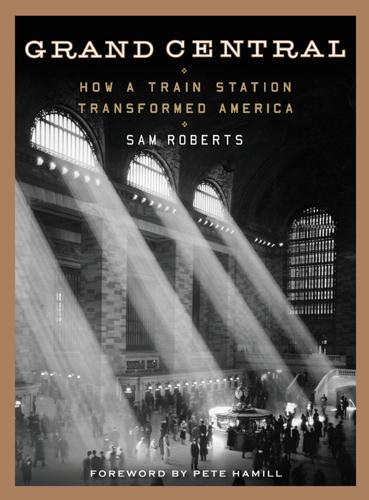
Grand Central: How a Train Station Transformed America
by
Sam Roberts
Published 22 Jan 2013
Guide to New York City Landmarks. Hoboken, NJ: John Wiley & Sons, 2009. Fitch, James M., and Diana S. Waite. Grand Central Terminal. New York State Parks and Recreation, Division of Historic Preservation, 1974. Gratz, Roberta Brandes. The Battle for Gotham: New York in the Shadow of Robert Moses and Jane Jacobs. New York: Nation Books, 2010. Grogan, Louis V. The Coming of the New York and Harlem Railroad. Pawling, NY: Louis V. Grogan, 1989. Grow, Lawrence. Waiting for the 5:05: Terminal, Station and Depot in America. New York: Main Street/Universe Books, 1977. Hanley, Sally. A. Philip Randolph: Labor Leader.

Progress: Ten Reasons to Look Forward to the Future
by
Johan Norberg
Published 31 Aug 2016
New York: St Martin’s Press, 2015, chap. 4; ‘More than 1.5 million cancer deaths averted in last two decades’, CBS News, 31 December 2014, http://www.cbsnews.com/news/more-than-1-million-cancer-deaths-averted-in-last-two-decades (accessed on 21 March 2016). 27 World Bank, ‘World Development Indicators 2015’. 28 In 2013 it was 86.6 years. 29 Jim Oeppen and James W. Vaupel, ‘Broken limits to life expectancy’, Science, 296, 5579 (2002), 1029–31. 30 Deaton 2013, p. 149. 4 Poverty 1 Jane Jacobs, The Economy of Cities. New York: Random House, 1969, p. 121. 2 Braudel 2002, p. 283. 3 Maddison 2003, p. 262. 4 Francois Bourguignon and Christian Morrisson, ‘Inequality among world citizens: 1820–1992’, American Economic Review, 92, 4 (2002), 727–44; World Bank, PovcalNet, http://iresearch.worldbank.org/PovcalNet; Marcio Cruz, James Foster, Bryce Quillin and Philip Schellekens, ‘Ending extreme poverty and sharing prosperity: progress and policies’, Policy Research Note no. 3, October 2015. 5 Martin Ravallion, ‘Poverty in the rich world when it was not nearly so rich’ (2014), blog post, Center for Global Development, Washington DC, http://www.cgdev.org/blog/poverty-rich-world-when-it-was-not-nearly-so-rich (accessed on 12 April 2016). 6 Fogel 2004, p. 41. 7 Adam Smith, An Inquiry Into the Nature and Causes of the Wealth of Nations, Glasgow Edition of the Works and Correspondence of Adam Smith.
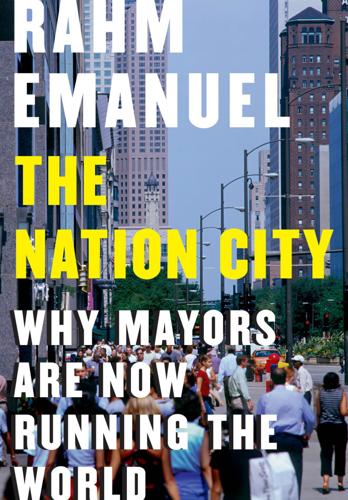
The Nation City: Why Mayors Are Now Running the World
by
Rahm Emanuel
Published 25 Feb 2020
Infrastructure and mass transit systems and other critical city services (like public education and policing) were some of the casualties. Our major cities had lower life expectancy rates than the country as a whole. It didn’t help that city planners from decades earlier had been misguided in some of their approaches. Jane Jacobs, in her 1961 book, The Death and Life of Great American Cities, wrote about one of the biggest problems cities faced: Most urban planning had been focused on business districts and not on building and strengthening the neighborhoods and communities that form the glue that holds cities together.

To Show and to Tell: The Craft of Literary Nonfiction
by
Phillip Lopate
Published 12 Feb 2013
Winnicott: Winnicott on the Child, Playing and Reality Karen Horney: Feminine Psychology Leslie H. Farber: The Ways of the Will Adam Phillips: On Kissing, Tickling, and Being Bored Jules Henry: Pathways to Madness Architecture and Landscape Lewis Mumford: Sidewalk Critic, The Lewis Mumford Reader Ada Louise Huxtable: On Architecture Jane Jacobs: The Death and Life of Great American Cities J. B. Jackson: Landscape in Sight William H. Whyte: The Essential William H. Whyte Robert Venturi, Denise Scott Brown, and Steven Izenour: Learning from Las Vegas Dance Edwin Denby: Dancers, Buildings and People in the Streets Arlene Croce: Croce on Dance, The Fred and Ginger Book Elizabeth Kendall: Where She Danced Art Denis Diderot: Diderot on Art John Ruskin: The Stones of Venice Harold Rosenberg: Discovering the Present Clement Greenberg: Collected Essays and Criticism Meyer Schapiro: Impressionism, Modern Art Robert Smithson: The Collected Writings John Berger: Ways of Seeing, Selected Essays Robert Hughes: Nothing If Not Critical Sports Red Smith: The Red Smith Reader, To Absent Friends A.
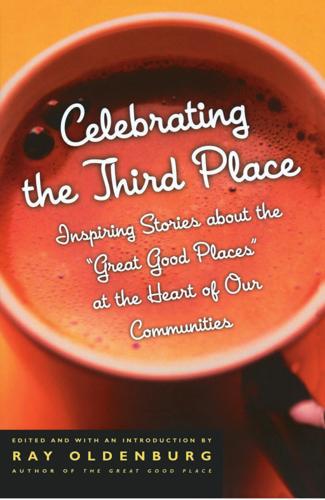
Celebrating the Third Place: Inspiring Stories About the Great Good Places at the Heart of Our Communities
by
Ray Oldenburg
Published 30 Nov 2001
Negative zoning thus set the stage such that these cloned and impersonal chains thrived, and they did so by killing off the independents. The personnel and the policies that the chains bring to town are a far cry from what local independents offered. Many of the people who operated the mom-and-pop stores were “public characters,” as Jane Jacobs called them—people who knew everyone in the neighborhood and cared about them. Those folks kept an eye on the children, kept an eye on the neighborhood, and kept people informed on matters of mutual concern. In contrast, chain personnel turnover is high and “wasting time” with customers is discouraged.

Antifragile: Things That Gain From Disorder
by
Nassim Nicholas Taleb
Published 27 Nov 2012
In France, some blame the modernistic architecture of housing projects for the immigrant riots. As the journalist Christopher Caldwell wrote about the unnatural living conditions: “Le Corbusier called houses ‘machines for living.’ France’s housing projects, as we now know, became machines for alienation.” Jane Jacobs, the New York urban activist, took a heroic stance as a political-style resistant against neomania in architecture and urban planning, as the modernistic dream was carried by Robert Moses, who wanted to improve New York by razing tenements and installing large roads and highways, committing a greater crime against natural order than Haussmann, who, as we saw in Chapter 7, removed during the nineteenth century entire neighborhoods of Paris to make room for the “Grand Boulevards.”
…
Metrification One example of the neomania of states: the campaign for metrification, that is, the use of the metric system to replace “archaic” ones on grounds of efficiency—it “makes sense.” The logic might be impeccable (until of course one supersedes it with a better, less naive logic, an attempt I will make here). Let us look at the wedge between rationalism and empiricism in this effort. Warwick Cairns, a fellow similar to Jane Jacobs, has been fighting in courts to let market farmers in Britain keep selling bananas by the pound, and similar matters as they have resisted the use of the more “rational” kilogram. The idea of metrification was born out of the French Revolution, as part of the utopian mood, which includes changing the names of the winter months to Nivôse, Pluviôse, Ventôse, descriptive of weather, having decimal time, ten-day weeks, and similar naively rational matters.
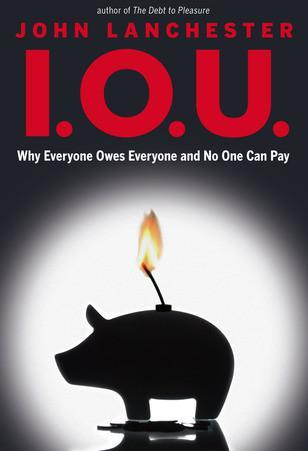
I.O.U.: Why Everyone Owes Everyone and No One Can Pay
by
John Lanchester
Published 14 Dec 2009
But it’s also that so many of the areas afflicted by modern poverty, and so many of the properties caught up in it, seen from another perspective, could be so pleasant to live in. There is a style of low-built row houses which feature in American cities, and which look from one point of view like ideal urban low-cost housing, built to a human scale and simply begging to be part of an idealized, mixed, diverse, complicated, modern way of living—it’s as if the ideas of Jane Jacobs about the ideal patterns of neighborhood use and city life had been built into these streets from their inception. And it’s that which makes them look so terrible when they go wrong. Because the houses are built to a pattern, small differences in upkeep, in the attention which all homes need, are magnified.
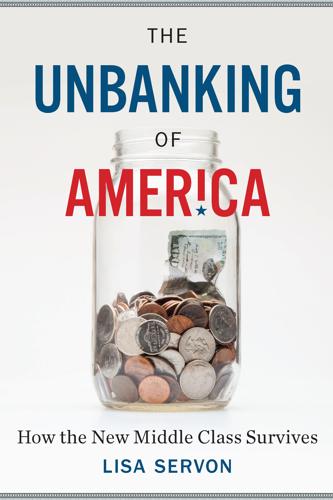
The Unbanking of America: How the New Middle Class Survives
by
Lisa Servon
Published 10 Jan 2017
Today she gets a call from a tanda member telling her when he’ll be by to drop off his payment. Someone else calls to ask Blanca about the location of another meeting she’ll attend later. Esme, Blanca’s comadre, works at a local bodega/bakery often scented with the sugar and vanilla of freshly baked pan dulce. Esme has what the urban-studies author Jane Jacobs calls “eyes on the street”—she knows everyone and sees everything. Esme is young, energetic, and sharp. She passed up invitations to join other tandas because she didn’t know the people running them well enough to trust them with her money. She emphasizes how important it is to know the person who runs the tanda very well before you join.
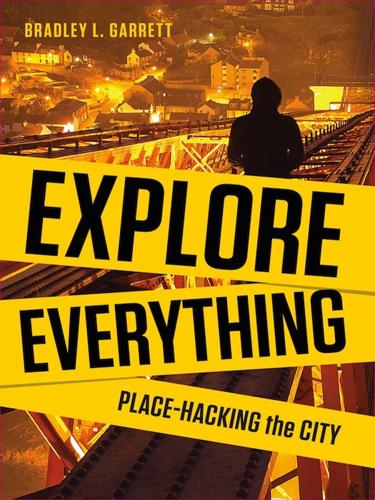
Explore Everything
by
Bradley Garrett
Published 7 Oct 2013
, New Statesman, 18 July 2012; Anon., ‘Graffiti Raids across London as Police Sanitise City Ready for Olympics’, atthelondonvandal.com/2012/07/graffiti-raids-across-london-as-police-sanitise-city-ready-for-olympics. 15 Rik Scarce, ‘A Law to Protect Scholars’, at skidmore.edu/newsitems/features/chronicle081205.htm (12 August 2005). 16 David Pescovitz, ‘Beating the Bounds Railwalk Project Shut Down’, at boingboing.net/2008/03/10/beating-the-bounds-r.html (10 March 2008). 17 ‘ASA Code of Ethics’, at asanet.org/images/asa/docs/pdf/EthicsCode.pdf; Jaschik, ‘Protecting His Sources’, Inside Higher Ed., 4 December 2009. 18 ‘(U//FOUO) National Counterterrorism Center: Urban Exploration Offers Insight into Critical Infrastructure Vulnerabilities’, at publicintelligence.net/nctc-urban-exploration (19 November 2012). 19 Jane Jacobs, The Death and Life of Great American Cities (New York: Random House, 1961). 20 Lisette Josephides, ‘Representing the Anthropologist’s Predicament’, in Allison James, Jenny Hockey and Andrew Dawson, eds, AfterWriting Culture: Epistemology and Praxis in Contemporary Anthropology (London: Routledge, 1997), p. 32, cited in Sarah Pink, Doing Visual Ethnography: Images, Media and Representation in Research (Manchester: Manchester University Press, 2001), p. 4. 21 Pinder, ‘Urban Interventions’, p 734.

Radical Cities: Across Latin America in Search of a New Architecture
by
Justin McGuirk
Published 15 Feb 2014
It was the same mistake that Margaret Thatcher made in Britain, only incalculably more serious, because the housing deficit in Latin American cities was measured not in thousands but millions. The laissez-faire approach to cities gained traction in the 1960s. Turner’s position can be seen in the context of Jane Jacobs defending the boisterous streets of Greenwich Village, members of Team 10 studying Dogon villages in Mali, and the Situationists lampooning Le Corbusier and his tower-block ‘morgues’. This attitude was exemplified by the 1964 exhibition ‘Architecture Without Architects’, curated by Bernard Rudofsky at the Museum of Modern Art in New York.

Uncanny Valley: A Memoir
by
Anna Wiener
Published 14 Jan 2020
The brochures collected on top of the mailboxes like a come- on and a taunt—reminders of our luck, and our impermanence. * * * There was a lot of discussion that year, particularly among the entrepreneurial class, about city-building. Everyone was reading The Power Broker—or, at least, reading summaries. Everyone was reading Season of the Witch. Armchair urbanists blogged about Jane Jacobs and discovered Haussmann, Le Corbusier. They fantasized about charter cities. They were beginning to notice something interesting—a potential opportunity, perhaps—taking place outside the windows of their ride-shares. They were beginning to catch on to the value of civic life. At a party, I met a man who leaned in and told me, with warm breath, that he was trying to get involved with an exciting new urbanism project.
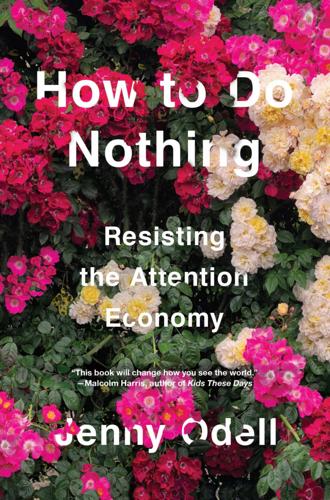
How to Do Nothing
by
Jenny Odell
Published 8 Apr 2019
Henry, “Cicero’s Treatment of the Free Will Problem,” Transactions and Proceedings of the American Philological Association 58 (1927), 34. 23. Ibid. 24. Navia, 63. 25. Carol Becker, “Stilling the World,” in Out of Now: the Lifeworks of Tehching Hsieh, ed. Adrian Heathfield (Cambridge, MA: The MIT Press, 2015), 367. 26. Mary Jane Jacobs and Jacquelyn Bass, Tehching Hsieh: An Interview, streaming video, 2012: https://www.kanopy.com/wayf/video/tehching-hsieh-interview 27. Becker, 367. 28. Henry David Thoreau, Walden, Volume 1 (Boston: Houghton Mifflin, 1897), 143. 29. Henry David Thoreau, On the Duty of Civil Disobedience (London: The Simple Life Press, 1903), 19. 30.
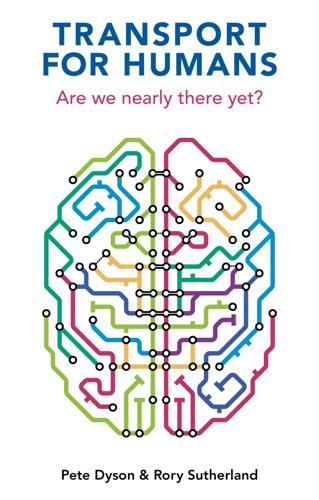
Transport for Humans: Are We Nearly There Yet?
by
Pete Dyson
and
Rory Sutherland
Published 15 Jan 2021
Digital journey planners enable choices to be presented with almost limitless creativity: quiet routes, scenic routes, step-free routes – even mobile-signal-friendly routes. City and urban planning draws us a map In 1965 Jan Gehl and Ingrid Gehl, an architect and a psychologist, secured a grant from the New Carlsberg Foundation in Copenhagen to study how people mingled and worked in public spaces in Rome and its surrounding towns. Their work built on that of Jane Jacobs, who published The Life and Death of American Cities in 1961: a meticulous critique of Planning Commissioner Robert Moses’s strategy for New York. As Jacobs wrote, ‘Intricate mingling of different uses in cities are not a form of chaos. On the contrary, they represent a complex and highly developed form of order.’ 22 Instead of taking pictures from the air, Gehl and Gehl studied streets at ground level to examine how people really used, interacted with and moved through city spaces.

On Paradise Drive: How We Live Now (And Always Have) in the Future Tense
by
David Brooks
Published 2 Jun 2004
You park on the fringe, near the retro-design eighteen-screen movie theater, and walk down Main Street, which has a Barnes & Noble, a Crate and Barrel, a Galyan’s, an artisanal bread store, a few Cosis or a Starbucks, a Restoration Hardware, and of course a brew pub. The stores all have awnings, different brick-and-stucco storefronts, and maybe a few loftlike mixed-residential apartments up above, to give them the streetscape feel that Jane Jacobs, an urban theorist, described. There’s a cell-phone transmission tower designed to look like a campanile, and the street has been artfully curved so there are no long view lines of the surrounding parking lots, thereby allowing the pedestrians to feel comfortably enclosed. The man and his family can eat outside at one of the Europeanized panini grills, under wicker shade umbrellas, and the servers will fill their iced-tea glasses every thirty seconds or so.

New York 2140
by
Kim Stanley Robinson
Published 14 Mar 2017
I could perhaps identify buildings that were more likely to collapse than the models had them collapsing on average, and figure out ways to upgrade them, putting off their collapse long enough that they could serve as refugee dwellings or maker spaces. Housing of any kind was scarce, because too many people kept coming to New York and trying to live here, out of some kind of addiction, some compulsion to live like water rats when they could have done better elsewhere. Same as it ever was! Which meant there was need for some kind of Jane Jacobs–like housing reform. This was more than I could handle, but some improvements in the intertidal, that I could try. The intertidal was my specialty, so that was where I could start. Try to figure something out. So I abandoned my screens one morning and went down to my sweet skimmer and hummed out of the building onto Twenty-third, and headed west to the Hudson.
…
“Fuck you.” He laughed. He was flushed and seemed a little giddy, maybe from talking to his friend from the Flatiron. “Just let me know if there’s anything I can do for you. Finance minister without portfolio, right?” “You’re already doing that,” she objected. “Redevelopment czar. Robert Moses meets Jane Jacobs.” “You’re already doing that too.” “Okay, so maybe you don’t need me.” “No, I need you.” “But not for anything more than what I’m already doing.” She looked up at him, and Vlade saw a new look on her face, an idea she liked. “Well, I wonder,” she said. “Could you give me a ride in your stupid little speedboat down to like Philly, or Baltimore?

The Wikipedia Revolution: How a Bunch of Nobodies Created the World's Greatest Encyclopedia
by
Andrew Lih
Published 5 Jul 2010
Urban Jungle The plight of Wikipedia growing from small community to larger digital metropolis is something both Joseph Reagle in his Ph.D. work on Wikipedia and Steven Johnson in Emergence note as being similar to problems of urban planning. There is no better historical example than that explored in Jane Jacobs’s book The Death and Life of Great American Cities, her critique of the modernist planning policies of the 1950s and 1960s, an era when New York City developer Robert Moses was razing entire swaths of neighborhoods for planned housing projects and communities. Jacobs argued for preserving her small neighborhood on Hudson Street and resisting massive urban renewal, because the intimate sidewalks served an important social function.

Before Babylon, Beyond Bitcoin: From Money That We Understand to Money That Understands Us (Perspectives)
by
David Birch
Published 14 Jun 2017
What this means is that the future sense of identity will be city-centric, with people seeing themselves as Londoners or New Yorkers rather than Brits or Yanks. Cities will undoubtedly form defence alliances and trade pacts and so forth with each other but I wonder if they will give up any real sovereignty? It’s an interesting and enjoyable area of speculation. This appeals to my long-held appreciation of Jane Jacobs’s work on the city as the basic economic unit (Jacobs 1985). In discussing that ‘Many Hands’ scenario, Ringland makes a passing but powerful observation on this future, saying that individuals will protect their ‘personal identity, credit ratings and parking spaces’ at all costs, and that since monetary arrangements (nation-state fiat currencies) will have collapsed, the commercial paper of global corporations will be used as international currency.
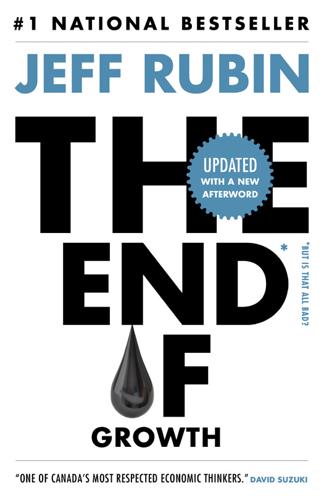
The End of Growth
by
Jeff Rubin
Published 2 Sep 2013
CHAPTER 6: THE DANISH RESPONSE this page: Information about Denmark’s environmental track record, including its level of carbon dioxide emissions since 1990, comes from figures available through the State of Green, a government-backed initiative to raise international awareness of the country’s green credentials (www.stateofgreen.com). this page: The argument for the relationship between urban population density and vibrant cities is well documented. Jane Jacobs, for one, argued convincingly against urban sprawl in her seminal work The Death and Life of Great American Cities, which has influenced thoughts on urban planning since its publication in 1961. CHAPTER 7: ZERO-SUM WORLD this page: The figures for Venezuela’s oil exports to the United States come from the EIA.
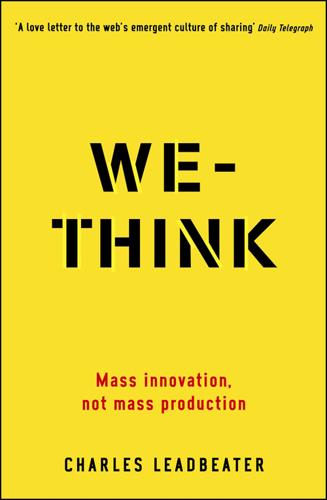
We-Think: Mass Innovation, Not Mass Production
by
Charles Leadbeater
Published 9 Dec 2010
Available from http://userinnovation.mit. edu/papers/6.pdf; Eric von Hippel and Georg von Krogh, ‘Open Source Software and the Private-Collective Innovation Model: Issues for Organization Science’, Organization Science 14.2 (2003), pp. 209–23; Eric von Hippel, ‘Horizontal Innovation Networks – By and For Users’, MIT Sloan School of Management Working Paper No. 4366–02, June 2002 12 Sonali Shah, ‘Open Beyond Software’, in Chris DiBona, Danese Cooper and Mark Stone (Eds), Open Sources 2.0 (O’Reilly, 2006) 13 Henry Jenkins, Convergence Culture (New York University Press, 2006) 14 Henry Jenkins, Fans, Bloggers, and Gamers (New York University Press, 2006) 15 Pekka Himanen, The Hacker Ethic and the Spirit of the Information Age (London: Secker & Warburg, 2001) 16 John Roberts, The Modern Firm (Oxford University Press, 2004) 17 Jane Jacobs, The Death and Life of Great American Cities (Vintage, 1992) 18 John Micklethwait and Adrian Wooldridge, The Company (London: Weidenfeld & Nicolson, 2003) 19 Henry Hansmann, The Ownership of Enterprise (Cambridge, MA: Belknap Harvard, 1996) 20 James Boyle, ‘The Second Enclosure Movement and the Construction of the Public Domain’, Law and Contemporary Problems 66.1&2 (2003), pp.33–74.

The People's Platform: Taking Back Power and Culture in the Digital Age
by
Astra Taylor
Published 4 Mar 2014
What kinds of people live in these places and how are they invited to express themselves? (Why, for example, is the word “like” so pervasive online as opposed to “interesting,” “important,” or “outrageous”?) As the writer Charles Petersen has observed, we are still waiting for the digital equivalent of Jane Jacobs to appear. Let her come quick. In 1970 a woman named Jo Freeman published “The Tyranny of Structurelessness,” a critique of the informal nature of women’s consciousness-raising groups popular during that period.22 The article spread like wildfire and remains a classic to this day, for it articulated a problem many women had felt but could not quite put into words.

The Autonomous Revolution: Reclaiming the Future We’ve Sold to Machines
by
William Davidow
and
Michael Malone
Published 18 Feb 2020
But a different scenario now seems just as plausible, which is that more and more people will choose to live in more densely populated areas that are served by intelligent public transportation. This could create an apartment construction boom. The cities of the future may come to look and feel more like the old cities that Jane Jacobs celebrated and mourned in her book The Death and Life of Great American Cities half a century ago—lively, diverse federations of mixed-use neighborhoods, but powered by twenty-first-century infrastructure. The amount of construction required to create this autonomous country of the future is massive.
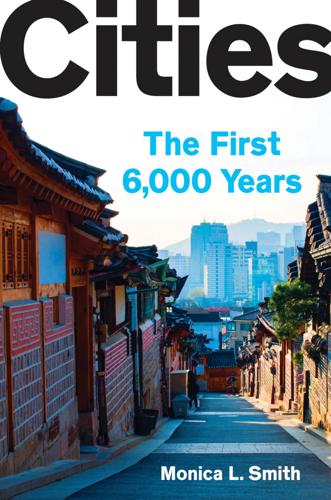
Cities: The First 6,000 Years
by
Monica L. Smith
Published 31 Mar 2019
flowering of the earliest urbanism: Melinda A. Zeder, “Provisioning Early Cities in Mesopotamia: The Role of Pastoralism in the Development of Specialized Urban Economies,” in The Social Construction of Ancient Cities, ed. Monica L. Smith (Washington, D.C.: Smithsonian Institution Press, 2003), 156–83. Many years ago, the urban theorist Jane Jacobs proposed that cities provided the main impetus for domestication in the first place, a “cities-first” perspective that has occasionally been revived, most recently by Peter J. Taylor in Extraordinary Cities: Millennia of Moral Syndromes, World-Systems, and City/State Relations (Cheltenham, U.K.: Edward Elgar, 2013).
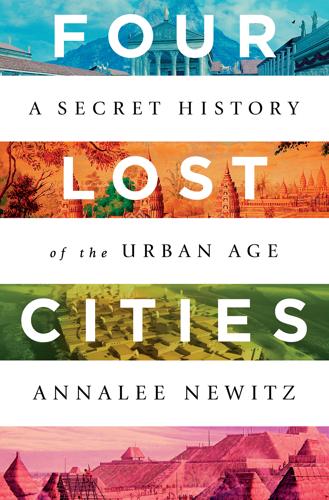
Four Lost Cities: A Secret History of the Urban Age
by
Annalee Newitz
Published 2 Feb 2021
Robert Graves built on Frazer’s work in the 1940s with a wildly popular book called The White Goddess, which argued that European and Middle Eastern mythologies all came from a primal cult devoted to a goddess who governed birth, love, and death. Graves’ work electrified anthropologists and the general public. As a result, people of Mellaart’s generation were primed to see ancient civilizations through the lens of goddess worship. Few scholars questioned his interpretation. Meanwhile, celebrated urban historians Lewis Mumford and Jane Jacobs were quick to embrace the idea that Mellaart had finally discovered the remains of a civilization that thrived in a time before humans had rejected female power. Mellaart went far beyond Frazer’s and Graves’ claims about goddess worship by suggesting Çatalhöyük was an ancient matriarchy where women ruled over men.
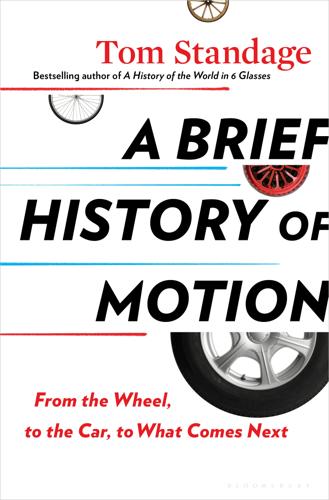
A Brief History of Motion: From the Wheel, to the Car, to What Comes Next
by
Tom Standage
Published 16 Aug 2021
For those who are not used to it, it feels strangely liberating to be a pedestrian in this kind of environment. But it provides a glimpse of what roads were like before the arrival of the car—and what they could be like again. 7 The Road to Suburbia The present relationship between cities and automobiles represents, in short, one of those jokes that history sometimes plays on progress. —JANE JACOBS, THE DEATH AND LIFE OF GREAT AMERICAN CITIES, 1961 DREAMING OF AUTOPIA It was a vision of the future: 1960, as seen from 1939. The theme of the 1939 New York World’s Fair, held at Flushing Meadows–Corona Park in the borough of Queens, was “The World of Tomorrow.” The first such exposition with an explicit focus on the future, the fair featured the debut of new technologies including nylon fabric, the View-Master system for viewing stereoscopic color photographs, an early version of Smell-O-Vision, and the first electronic speech synthesizer.

How to Fix the Future: Staying Human in the Digital Age
by
Andrew Keen
Published 1 Mar 2018
Harris, who is the founder of the nonprofit Time Well Spent and was described by the Atlantic as “the closest thing Silicon Valley has to a conscience,” believes that there need to be “new ratings, new criteria, new design standards, new certification standards” to ensure against addictive products.34 When I interviewed Harris for my TechCrunchTV show, he told me that the three dominant digital platforms of our networked age—Apple, Google, and Facebook—have been explicitly designed to hook our attention. “We all live in a city called the attention economy,” Harris argued, citing the work of the urban planning pioneer Jane Jacobs and suggesting that the challenges of software developers are similar to those of urban planners. And if this twenty-first-century city is to be habitable, he said, then these platform owners need to take responsibility for the impact of their products on their users. Can the Internet Save the World?
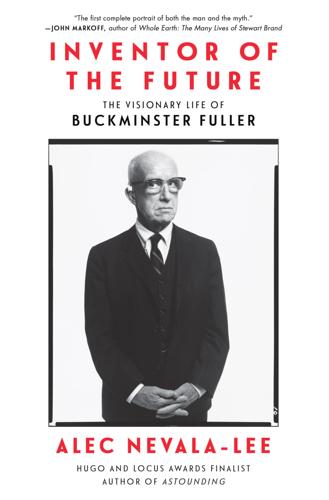
Inventor of the Future: The Visionary Life of Buckminster Fuller
by
Alec Nevala-Lee
Published 1 Aug 2022
The piece that Jordan had called “Skyrise for Harlem” was retitled “Instant Slum Clearance,” and her thoughtful prose was overwhelmed by Shoji Sadao’s stark drawing of what resembled a grid of nuclear cooling towers. Although Jordan was disappointed by its presentation, she remained close to Fuller, whose support allowed her to pursue her studies of community planning “for participation by Harlem residents in the birth of their new reality.” In an era when the journalist Jane Jacobs was exposing the failures of urban projects in The Death and Life of Great American Cities, Fuller continued to think in terms of megastructures, which kept him in the public eye at the expense of his vision of decentralization. By contrast, many of his other views were strikingly progressive. Fuller said that America was already “the most socialized of all countries in the world,” although it concealed this by underwriting corporations rather than individuals.
…
Remembering his frustrations with the political side of the Minnesota Experimental City Project, Fuller covered his own expenses—giving himself a free hand—and he produced a few sketches of a terraced pyramidal structure under a geodesic dome a half mile in diameter. For the details, Fuller recruited James Fitzgibbon, who reused elements of an existing proposal to cover Kuwait City with a geodesic umbrella. Fitzgibbon relocated the site to permit access to highways, and he acknowledged the influence of crusading journalist Jane Jacobs by dividing it into more livable quadrants. It still erased existing neighborhoods, but Fuller refused to compromise his vision, which he presented at a community forum in February. Cautioning that he would proceed only if they unanimously approved his plan for a “raceless and classless” development, Fuller unveiled a design that resembled a covered moon crater, which he called Old Man River’s City.

Mysteries of the Mall: And Other Essays
by
Witold Rybczynski
Published 7 Sep 2015
This should have been apparent as early as the 1930s, when the expansion of automobile ownership and truck transportation signaled the end of the concentrated railroad city. World War II, with its government-supported wartime industries, gave Philadelphia only a brief respite. Philadelphia was far from being a single-industry town like Pittsburgh or Cleveland. It had the manufacturing diversity that Jane Jacobs maintains is the pillar of urban economies. Nevertheless, Philadelphia’s complacent entrepreneurs did not capitalize on this variety. Like the infrastructure and the entrenched municipal bureaucracy, management proved too atrophied and too resistant to change. The loss of manufacturing jobs was nothing less than catastrophic.

The Age of Stagnation: Why Perpetual Growth Is Unattainable and the Global Economy Is in Peril
by
Satyajit Das
Published 9 Feb 2016
Places of higher learning have succumbed to commercial pressures. Well-funded institutions staffed by well-credentialed scholars with adequate facilities to teach and research have given way to a pragmatic, market-oriented approach to selling degrees and acquiring paying students. Social activist Jane Jacobs identified the shift from educating to credentialing, where the emphasis is on preparing students for employment. In some countries the increasing cost of education has placed it beyond the reach of many, or forced graduates to start their working lives with significant debts. The decreasing income advantage of some higher qualifications, after deducting costs, has reduced their attraction.

No Such Thing as a Free Gift: The Gates Foundation and the Price of Philanthropy
by
Linsey McGoey
Published 14 Apr 2015
Science becomes pseudo-science as the method of discovery that fuels scientific advance is subverted in favour of purposefully myopic strategies, those blind to the changing needs of different communities. Actual progress is undermined by proclamations of progress.10 In a recent book, technology writer Evgeny Morozov calls such pseudo-scientific fixes ‘solutionism’ and offers an impressive list of thinkers who criticized solutionist thinking: Jane Jacobs’s writing on urban planning, Michael Oakeshott on rationalism, Hayek on central planning, to name just a few.11 One good recent example of the shortcomings of ‘solutionist’ thinking is the proficiency targets set by No Child Left Behind legislation, where many schools have been held to strict improvement standards without additional funds offered to meet those standards.

Norman Foster: A Life in Architecture
by
Deyan Sudjic
Published 1 Sep 2010
Even Yale’s gymnasium is built in exuberant gothic style, and it comes equipped with a tower not much less imposing than that of Durham Cathedral. It is, in short, a university that might have been imagined by Ralph Lauren. But beyond its gothic zone, New Haven in Foster’s day was suffering from the early symptoms of the urban decay that Jane Jacobs identified in her book, The Death and Life of Great American Cities: a rotting centre and spreading affluent suburbs. Away from the security of the city lights and the campus police it would become a troubled place to live after the race riot of 1967. There were whole streets in New Haven in which the only functioning buildings were adult cinemas.
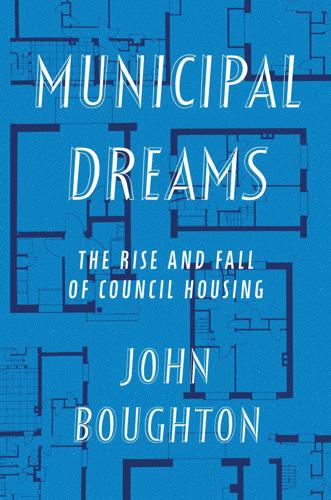
Municipal Dreams: The Rise and Fall of Council Housing
by
John Boughton
Published 14 May 2018
It wasn’t, however, just the organisational model of council housing that was wrong according to its opponents. On many occasions it was the new housing’s actual form that came under attack. There was, by the 1980s, an established literature challenging many of the cherished ideals of modern urban planning and redevelopment. This was represented most famously in Jane Jacobs’ 1961 book, The Death and Life of Great American Cities, which argued for dense, mixed-used neighbourhoods fostering, in her view, vibrant communities against the dead hand of those who would zone and isolate. This critique – and its defence of street life – was extended to the large public housing schemes that had appeared in some American inner cities.
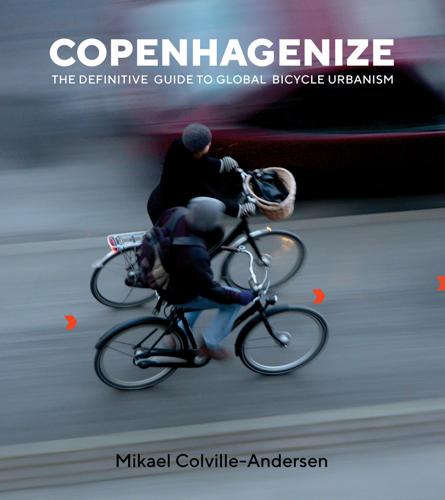
Copenhagenize: The Definitive Guide to Global Bicycle Urbanism
by
Mikael Colville-Andersen
Published 28 Mar 2018
Or perhaps they don’t want to, having grown up in a society that has misunderstood the bicycle’s full potential for a couple of generations. I’ll get into the nature of subcultures later in the book, but it’s interesting to consider how the placemaking community is built around and focused on their gurus: namely, Jane Jacobs and William H. Whyte. Apparently Jacobs rode a bike around, which is awesome. But back when they penned their holy scriptures, bicycle planning just didn’t feature at all, so maybe that’s why it gets the short end of the stick. Placemaking has an enormous focus on pedestrianism, which is important and fantastic, but I sometimes feel that the bicycle is seen as competition to this specific focus on walking.
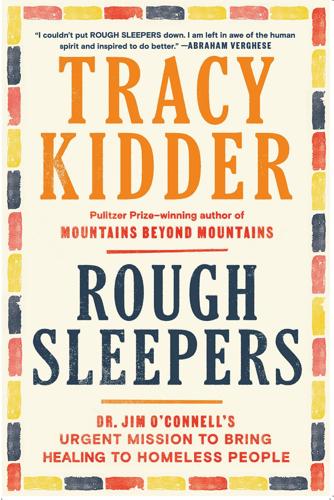
Rough Sleepers: Dr. Jim O'Connell's Urgent Mission to Bring Healing to Homeless People
by
Tracy Kidder
Published 17 Jan 2023
* * * • • • Tony had been born on the Charlestown Bridge, in the back seat of his father’s car. “You were a troublemaker from the start,” his mother liked to say. He grew up in Boston’s North End, known to outsiders for its Italian restaurants and American heirlooms—the Old North Church, Paul Revere’s house. “The healthiest place in the city,” Jane Jacobs called the neighborhood, in The Death and Life of Great American Cities. The streets, she wrote, had an “atmosphere of buoyancy, friendliness and good health.” The North End of Tony’s childhood was a harsher place. Outsiders used to say that a single woman could walk its streets in perfect safety, but this was true, Tony said, only if the woman was white.
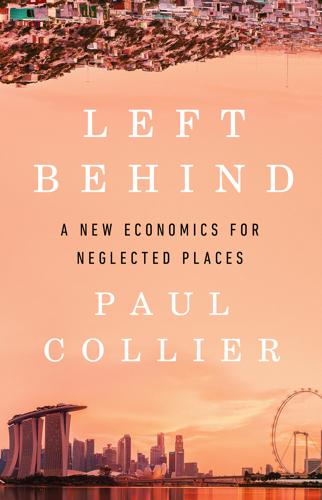
Left Behind
by
Paul Collier
Published 6 Aug 2024
Kigali had already become a beautiful and safe city with little congestion. But part of the price for the success of high-end tourism had been an alienating international architecture of High Modernism. Learning fast from each other, our committee united around recommending greater use of local design, local materials, local skills and the organic growth pioneered by Jane Jacobs. Three years later, a new minister expanded our brief from Kigali to include all Rwanda’s cities: we had become a small input into Rwanda’s authorizing environment for urbanization. Our instruction was to spread economic opportunities more widely: Kigali should not become too dominant. Our new role might be summarized as pre-empting the emergence of left-behind places in Rwanda.
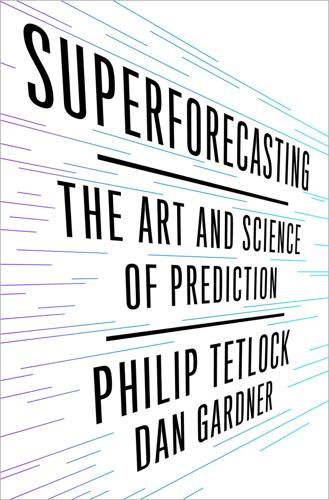
Superforecasting: The Art and Science of Prediction
by
Philip Tetlock
and
Dan Gardner
Published 14 Sep 2015
When I asked Joshua Frankel what he reads for fun, the young Brooklyn filmmaker rattled off the names of highbrow authors like Thomas Pynchon, thought for a moment, and added that he’d recently read a biography of the German rocket scientist Wernher von Braun and various histories of New York, although Frankel was careful to note that the books about New York are also for his work: he is producing an opera about the legendary clash between Robert Moses, New York’s great urban planner, and the free-spirited antiplanner Jane Jacobs. Frankel is not someone to tangle with on Jeopardy! Are superforecasters better simply because they are more knowledgeable and intelligent than others? That would be flattering for them but deflating for the rest of us. Knowledge is something we can all increase, but only slowly. People who haven’t stayed mentally active have little hope of catching up to lifelong learners.

Instant City: Life and Death in Karachi
by
Steve Inskeep
Published 12 Oct 2011
Ayub Lays Foundation of Korangi Satellite Town,” Times of Karachi, December 6, 1958, 1, 5. 88 “rely on their wits to thrive”: Jean Gottmann, Megalopolis: The Urbanized Northeastern Seaboard of the United States (Cambridge, MA: MIT Press, 1961), 46. 88 “migration and employment growth... thereby drawing more migrants”: Peter Morrison, “Migration from Distressed Areas: Its Meaning for Regional Policy” (New York: Ford Foundation, 1973), 17–18. 88 four million people in 1950 to 6.5 million in 1960: United Nations Population Division, World Urbanization Prospects: The 2009 Revision Population Database, http://esa.un.org/wup2009/unup/index.asp?panel=2. 88 “furnaces, sliding doors, mechanical saws”: Jane Jacobs, The Economy of Cities (New York: Random House, 1969), 152. 88 “an entirely new urban form”... “broad tree-lined boulevards”: Andrei Sorensen, The Making of Urban Japan: Cities and Planning from Edo to the Twenty-first Century (New York: Routledge, 2002), 162. 89 Constantinos Doxiadis caught the midnight flight: Doxiadis’s diary, December 15, 1958. 89 Ford had been assisting with planning and development: Doxiadis’s diary, December 15, 1958; also “Design for Pakistan: A Report on Assistance to the Pakistan Planning Commission by the Ford Foundation and Harvard University” (New York: Ford Foundation, February 1965). 89 Doxiadis snapped photos of arid land: Doxiadis’s diary, December 17, 1958. 89 The philosopher Plato spoke to him: Constantinos Doxiadis, Between Dystopia and Utopia (Hartford, CT: Trinity College Press, 1966), x–xi. 90 They worked everywhere from Baghdad to Rio de Janeiro: Doxiadis Associates archive, archive .doxiadis.org; also Between Dystopia and Utopia. 90 “helped resettle 10 million humans in 15 countries”: Time, November 4, 1966. 90 “Several aspects of the problem begin to worry me,”...
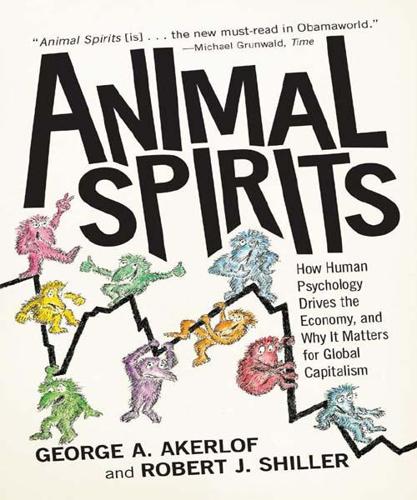
Animal Spirits: How Human Psychology Drives the Economy, and Why It Matters for Global Capitalism
by
George A. Akerlof
and
Robert J. Shiller
Published 1 Jan 2009
Even more significantly, there are changes over time in the prevalence of bad faith—economic activity that, while technically legal, has sinister motives.1 The exponents of capitalism wax poetic over the goods it provides.2 It produces whatever can be turned out at a profit. Thus the urbanologist Jane Jacobs sees architectural poetry in the variety and excitement of cityscapes that are the creation of individual private entrepreneurs.3 At the time of Mikhail Gorbachev’s apertura, Gary Becker, the intellectual heir to Milton Friedman’s legacy at the University of Chicago, described the Yellow Pages to Muscovites.
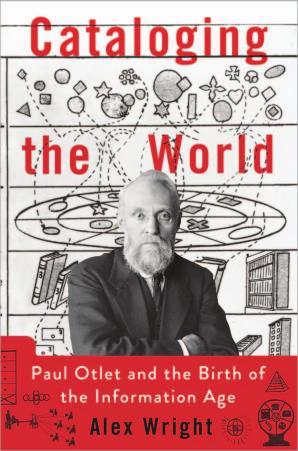
Cataloging the World: Paul Otlet and the Birth of the Information Age
by
Alex Wright
Published 6 Jun 2014
The Nazis specifically targeted Zamenhof ’s family for extermination.11 Paradoxically, the rise of utopian internationalism, which found such powerful expression at the Paris Expo, coincided with a surge of nationalist fervor—one that would ultimately drive the continent’s population into two cataclysmic wars. One might well look at the idealism of the Expo through the lens of Jane Jacobs’s famous critique of modernist urban planning: as “a dishonest mask of pretended order.”12 Certainly the imagined world on display there presented a relentlessly rosy picture of progress, papering over the dark sides of innovation and “progress”—like industrial militarization, and the economic exploitation of less developed countries—that would soon come into focus during World War I.
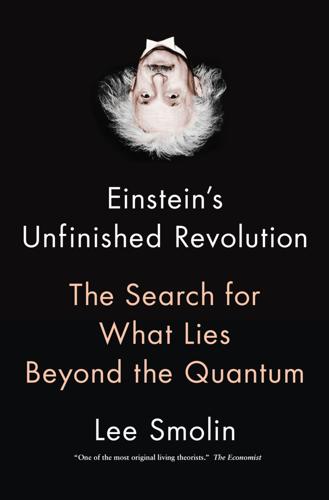
Einstein's Unfinished Revolution: The Search for What Lies Beyond the Quantum
by
Lee Smolin
Published 31 Mar 2019
Just as the same city viewed from different directions appears entirely different, and, as it were, multiplied perspectively, in just the same way it happens that, because of the infinite multitude of simple substances, there are, as it were, just as many different universes, which are, nevertheless, only perspectives on a single one.11 This is indeed a metaphor that Jane Jacobs would have appreciated, as it captures a notion of urban diversity championed by her and embraced by philosophers of the city, such as Richard Florida, since. This urban metaphor inspires a hypothesis about how space and locality break down. If you stand next to me and we both look out, by virtue of our proximity we have similar views of the rest of the universe.

Inheritance
by
Leo Hollis
The work is planned to continue over the next few years, but the aim is described thus on the project website: ‘Together with our neighbours and other London communities, we will embrace contrasting perspectives and create a space that has something to offer everyone. We will bring together the best knowledge to create a new kind of urban square that encourages discovery and fosters wellbeing.’12 This appears to be chapter and verse out of the place-making hymnal. It echoes the words of New Yorker Jane Jacobs, seen by many as the patron saint of modern urbanism: ‘Cities have the capability of providing something for everybody, only because, and only when, they are created by everybody.’13 And this is clearly the lesson being put to the test with the current development of the square and its concerted programme of public engagement.
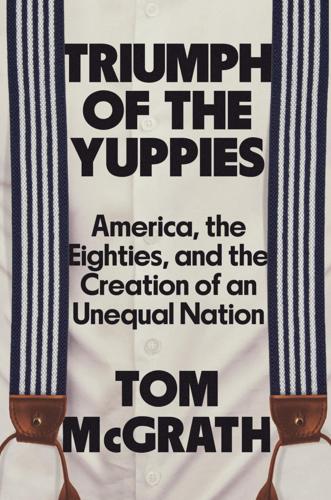
Triumph of the Yuppies: America, the Eighties, and the Creation of an Unequal Nation
by
Tom McGrath
Published 3 Jun 2024
Following graduate school at Syracuse, West landed a job with ABC Radio, and eventually moved—excitedly—to Manhattan, where she found herself surrounded by an emerging demographic that looked just like her: young, well-educated Baby Boomers. New York might have been at a low point, but to most of them it didn’t matter. “There were so many things about cities that I think appealed to us in that generation,” she said. “We’d read Jane Jacobs, and it was like this celebration of urban life. Many of us had been brought up in the suburbs, which now we thought were milquetoast and boring—get me out of here, I want something gritty and real and cultural and with history.” If gritty and real was what she and other Boomers were looking for, the Upper West Side—like many of the neighborhoods young people were moving into in cities across the country—certainly had it.

The death and life of the great American school system: how testing and choice are undermining education
by
Diane Ravitch
Published 2 Mar 2010
Many thanks to Meredith Smith and Antoinette Smith of Basic Books for their careful review of the manuscript, and to Lynn Goldberg and Angela Hayes of Goldberg-McDuffie, who gave me their wholehearted support. And I am grateful to Tim Sullivan, my editor at Basic Books, who quickly understood the book and suggested the title of my dreams. We both agreed that the title is a fitting homage to Jane Jacobs, whose book The Death and Life of Great American Cities helped to create a renaissance in the nation’s cities. Since I live the life that she wrote about, in a wonderful urban neighborhood saved by historic preservation, I love the idea of associating my book with hers, most especially with the hope that American education in general and urban education in particular might also experience a renaissance.

Adapt: Why Success Always Starts With Failure
by
Tim Harford
Published 1 Jun 2011
Innovations, too, often need a kind of isolation to realise their potential. It’s not that isolation is conducive to having ideas in the first place: gene mutations are no more likely to happen in the Galapagos than anywhere else, and as many people have observed, bright ideas emerge from the swirling mix of other ideas, not from isolated minds. Jane Jacobs, the great observer of urban life, looked for innovation in cities, not on Pacific islands. But once a new idea has appeared, it needs the breathing space to mature and develop so that it is not absorbed and crushed by the conventional wisdom. This idea of allowing several ideas to develop in parallel runs counter to our instincts: we naturally tend to ask, ‘What is the best option?’

Is the Internet Changing the Way You Think?: The Net's Impact on Our Minds and Future
by
John Brockman
Published 18 Jan 2011
We Have Become Hunter-Gatherers of Images and Information Lee Smolin Physicist, Perimeter Institute; author, The Trouble with Physics The Internet hasn’t, so far, changed how we think. But it has radically altered the contexts in which we think and work. The Internet offers a vast realm for distraction, but then so does reading and television. The Internet is an improvement on television in the same way that Jane Jacobs’s bustling neighborhood sidewalk is an improvement on the dullness of suburbia. The Internet requires an active engagement, and as a result it is full of surprises. You don’t watch the Internet; you search and link. What is important for thought about the Internet is not the content, it is the new activity of being a searcher, with the world’s store of knowledge and images at your fingertips.
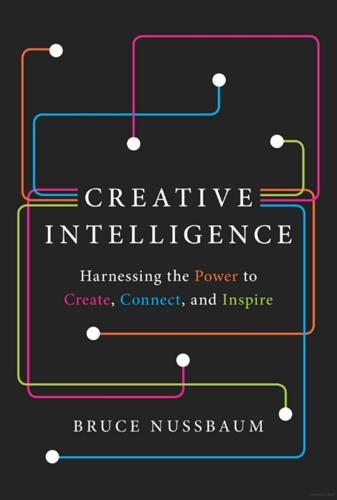
Creative Intelligence: Harnessing the Power to Create, Connect, and Inspire
by
Bruce Nussbaum
Published 5 Mar 2013
Cities are the cauldron within which most innovation and creativity take place, and the dean of Parsons, Joel Towers, has helped me understand the complexities and opportunities within the urban ecosystem. Urbanism in all its forms plays a huge role at the New School, to which Parsons belongs, and there is a deep domain knowledge about cities resident on campus. It has helped sustain the work Ben Lee and I have been doing in mapping creativity in New York with our students. Jane Jacobs would be proud of the New School’s approach to cities. I first met Keith Sawyer at a conference called Creativity, Play, and Imagination at Teachers College, Columbia University, in May 2011, but one of my students had already recommended his book, Group Genius, months before. Sawyer is one of the giants in the field of creativity, and his research underpins many of the stories we read about the subject in the popular press.

Broke: How to Survive the Middle Class Crisis
by
David Boyle
Published 15 Jan 2014
[10] Quoted in Owen Jones, Chavs: The demonization of the working class, updated edn (London, Verso, 2012), 113. [11] Jones, 131. [12] John Maynard Keynes, General Theory of Employment, Interest and Money (1936), 383. [13] Quoted in Roy Lewis and Angus Maude, The English Middle Classes (London, Phoenix House, 1949), 75. [14] See for example Jane Jacobs, Cities and the Wealth of Nations (New York, Random House, 1986). [15] Evidence for the link with fair pay scales is in D. Cowherd and D. Levie (1992), ‘Product quality and pay equity between low level employees and top management’, Administrative Science Quarterly, vol. 37. [16] See Ross Clark, A Broom Cupboard of One’s Own: The housing crisis and how to solve it (Petersfield, Harriman House, 2012)
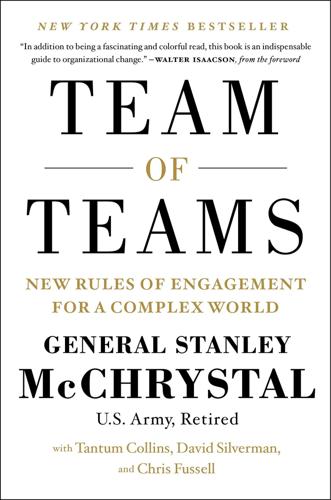
Team of Teams: New Rules of Engagement for a Complex World
by
General Stanley McChrystal
,
Tantum Collins
,
David Silverman
and
Chris Fussell
Published 11 May 2015
Metternich was referencing the spread of popular revolutions across Europe in the nineteenth century, and surely never imagined that his quote would be modified to apply to the economies of China and the United States. *Some taxonomies of “complex” include systems that automatically adjust in response to disruption—“resilient” systems—which we will address later. *One of the most frequently cited “founding texts” of emergence is Jane Jacobs’s book The Life and Death of Great American Cities, which explores how cities evolve without a central planner. *Technically the field of “joint cognitive systems” refers to interaction between people or groups of people and computer technology (thus it is relevant to flight crews but not always to surgeons and SEALs).
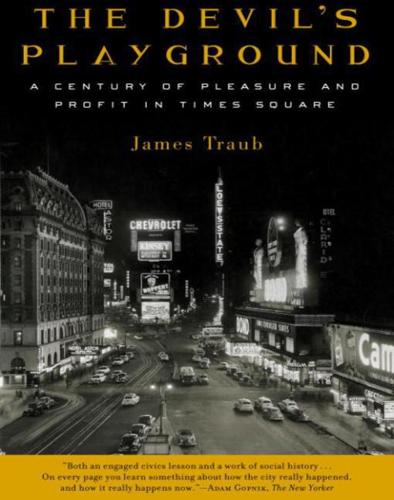
The Devil's Playground: A Century of Pleasure and Profit in Times Square
by
James Traub
Published 1 Jan 2004
I love the accidental quality of city life, the incongruous and the surreal. And to say that you love cities is to say that you love old cities, for only cities built before the advent of the automobile have the density that makes these myriad accidents and incongruities possible. (I do not love thee, Phoenix.) Jane Jacobs, that great champion of cities and dauntless foe of urban renewal, believes in density to the exclusion of almost everything, including open space and grass. And when I think of Times Square during the epoch I am most inclined to sentimentalize—the era of Damon Runyon and A. J. Liebling, the era just before and after 42nd Street—I think of an infinitely dense and busy asphalt village, or even a series of micro-villages, such as Jacobs loves, in the space of a few blocks.

The Evolution of Everything: How New Ideas Emerge
by
Matt Ridley
In America as a whole, nearly twice as many people work in grocery stores as in restaurants. In Manhattan, nearly five times as many work in restaurants as in grocery stores. When corrected for age, education and marital status, city-dwellers are 44 per cent more likely to visit a museum and 98 per cent more likely to go to a movie theatre than rural Americans. The sociologist Jane Jacobs was the first to realise that the density of urban living, ‘far from being an evil, is the source of its vitality’ (in John Kay’s words). In her successful opposition to New York’s city planners with their utopian schemes, she championed the unplanned, organic nature of the cities that people love, in contrast to the sterile spaces of planned cities like Brasilia, Islamabad or Canberra.

The Economics of Enough: How to Run the Economy as if the Future Matters
by
Diane Coyle
Published 21 Feb 2011
See also the website http://www.bettertogether.org. 8 Dasgupta (2009c) (paper prepared for presentation at the Annual Bank Conference on Development Economics, Seoul June 2009). 9 Keefer and Knack (1997). 10 For a survey of the empirical findings on social capital, see Bowles and Gintis (2002). 11 Nannicini et al. (2010). 12 Coyle (2007). 13 The original article and others are available on Intel’s website, http://www.intel.com/museum/archives/history_docs/mooreslaw.htm. 14 Nordhaus (2001). 15 David and Wright (2005). 16 Crafts (2004). 17 Coyle (1996). 18 Sheerin (2002). 19 Brynjolofsson and Saunders (2009). 20 Levy and Murnane (2005). 21 OECD and UN World Economic and Social Survey (2005). 22 I can’t possibly do it justice here but good overviews of the issues can be found in Held et al. (1999); Woods (2000); Mattl and Woods (2009); Held, Kaldor, and Quah (2010). 23http://data.worldbank.org. 24 Bobbitt (2002). 25 Hosted by Warwick University, see http://www2.warwick.ac.uk/research/warwickcommission/. 26 Although the 1997 book of the same name by Frances Cairncross did not make simplistic predictions of that kind. 27 These reasons were originally set out in a famous passage by Alfred Marshall (1890) 28 Glaeser (2008), Sassen (2002). 29 Insight into these areas can be found in Davis (2006) and Mehta (2004), in the context of very different cities. See also the classic description of city economies by Jane Jacobs (1961). 30 The term is the one used in official forms such as the census and statistics. 31 See for example Glaeser et al. (1995). 32 Page (2007). 33 Alesina and Glaeser (2006). 34 See also Dorling (2010), who argues that social inequality interacts with beliefs about the nature of society to increase divisions and reduce trust. 35 Frank (2004). 36 Haldane (2009b). 37 Seabright (2010), chap. 1, Coyle (2003). 38 Archibugi (2008), Siebert (2009).

City on the Verge
by
Mark Pendergrast
Published 5 May 2017
How the Creative Economy Is Making Where to Live the Most Important Decision of Your Life (2008); Leigh Gallagher, The End of the Suburbs: Where the American Dream Is Moving (2013); Edward Glaeser, Triumph of the City: How Our Greatest Invention Makes Us Richer, Smarter, Greener, Healthier, and Happier (2011); Ryan Gravel, Where We Want to Live: Reclaiming Infrastructure for a New Generation of Cities (2016); Richard J. Jackson, Designing Healthy Communities (2012); Jane Jacobs, The Death and Life of Great American Cities (1961); Alyssa Katz, Our Lot: How Real Estate Came to Own Us (2009); Joel Kotkin, The Next Hundred Million: America in 2050 (2010); John Kromer, Fixing Broken Cities: The Implementation of Urban Development Strategies (2010); Christopher B. Leinberger, The Option of Urbanism: Investing in a New American Dream (2008); David Owen, Green Metropolis: Why Living Smaller, Living Closer, and Driving Less Are the Keys to Sustainability (2009); Witold Rybczynski, Makeshift Metropolis: Ideas About Cities (2010).
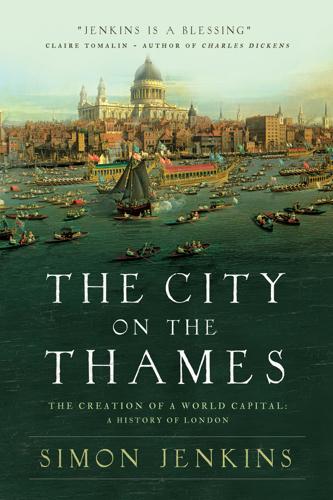
The City on the Thames
by
Simon Jenkins
Published 31 Aug 2020
Back gardens were replaced by unpoliced open space. Rather than house more people, the new blocks housed fewer. From 1950 to 1970, London’s population fell by 9 per cent and that of Inner London by 17 per cent. The concept of a city neighbourhood was analysed at the time by the American sociologist, Jane Jacobs, in her The Death and Life of Great American Cities (1961). Jacobs’s account of why people liked streets was rooted in her understanding of their social geography. It was that of the front door, its steps, the line of vision down a road from overlooking windows, and less tangible factors such as the nature and continuity of tenancy, family structure and employment.
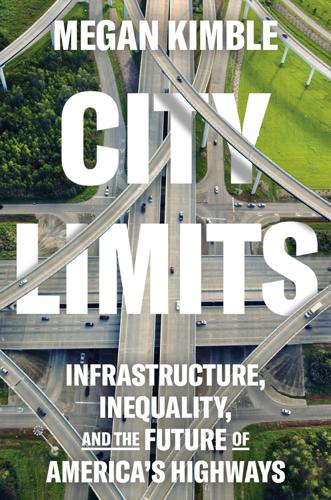
City Limits: Infrastructure, Inequality, and the Future of America's Highways
by
Megan Kimble
Published 2 Apr 2024
In San Francisco, after tens of thousands of people protested the city’s highway plan, the board of supervisors voted to cancel many of the proposed routes, including the completion of the double-deck Embarcadero Freeway along the waterfront. In Baltimore, a multiracial coalition of residents called Movement Against Destruction successfully killed an east-west expressway that would have demolished twenty-eight thousand housing units. In New York City, a writer named Jane Jacobs stopped a planner named Robert Moses from building a four-lane road through Washington Square Park. In Austin, city leaders approved a plan in 1962 for an extensive inner-city highway network, rendered as bright red lines on a black-and-white street grid. One of the proposed highways ran along the Colorado River, paralleling the north shore of the city’s beloved Town Lake.
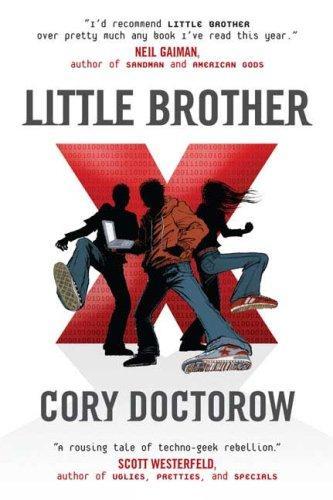
Little Brother
by
Cory Doctorow
Published 29 Apr 2008
It's more like a mall than a neighborhood, and the only businesses there are bail-bondsmen and liquor stores, places that cater to the families of crooks on trial and the bums who make it their nighttime home. I really came to understand all of this when I read an interview with an amazing old urban planner, a woman called Jane Jacobs who was the first person to really nail why it was wrong to slice cities up with freeways, stick all the poor people in housing projects, and use zoning laws to tightly control who got to do what where. Jacobs explained that real cities are organic and they have a lot of variety -- rich and poor, white and brown, Anglo and Mex, retail and residential and even industrial.

Radical Technologies: The Design of Everyday Life
by
Adam Greenfield
Published 29 May 2017
See also Tim Maughan, “The Changing Face of Shenzhen, the World’s Gadget Factory,” Motherboard, August 19, 2015. 5.MakerBot Industries, LLC, “MakerBot Reaches Milestone: 100,000 3D Printers Sold Worldwide,” April 4, 2016. 6.Jeremy Rifkin, The Zero Marginal Cost Society: The Internet of Things, the Collaborative Commons, and the Eclipse of Capitalism, Basingstoke, UK: Palgrave Macmillan, 2014; Paul Mason, Postcapitalism: A Guide to Our Future, London: Allen Lane, 2015; Nick Srnicek and Alex Williams, Inventing the Future: Postcapitalism and a World Without Work, London: Verso, 2015. 7.For a pungent critique, see mcm_cmc, “Fully Automated Luxury Communism: A Utopian Critique,” Libcom.org, June 14, 2015. 8.Jane Jacobs, The Death and Life of Great American Cities, New York: Random House, 1961. 9.United Nations, “Universal Declaration of Human Rights,” December 10, 1948, un.org/en/universal-declaration-human-rights/. 10.The slightly less-polished Othermill is still cheaper. Other Machine Co., “Othermill,” 2016, othermachine.co/othermill/. 11.James Hobson, “3D Printing Houses From Concrete,” Hackaday, April 15, 2016; National Aeronautics and Space Administration. “3D Printing: Food In Space,” May 23, 2013; Sean V.
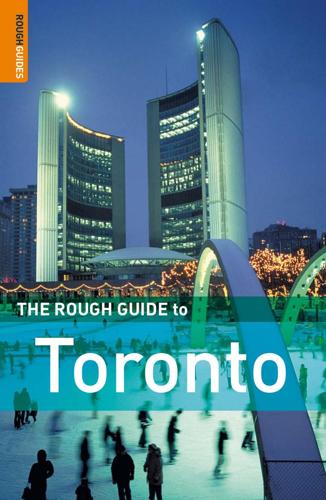
The Rough Guide to Toronto
by
Helen Lovekin
and
Phil Lee
Published 29 Apr 2006
Gladstone Hotel 1214 Queen St W, at Gladstone Ave T416/531-4635, Wwww.gladstonehotel .com. Streetcar: Queen (#501). When it Gladstone Hotel opened in 1889, the Gladstone was the kind of place where one’s maiden aunt could respectably stay. Today, owners Margaret and Christina Zeidler are guided by urban philosopher Jane Jacobs’s principle of “new ideas in old buildings”, though two important Gladstone traditions remain vibrantly intact: the Wednesday life-drawing class and the purely mad Thursday to Saturday karaoke nights in the Melody bar. Ongoing rennovations of guest rooms by local artists and the transformation of the ballroom into an art gallery give you an idea of the vibe. $140.
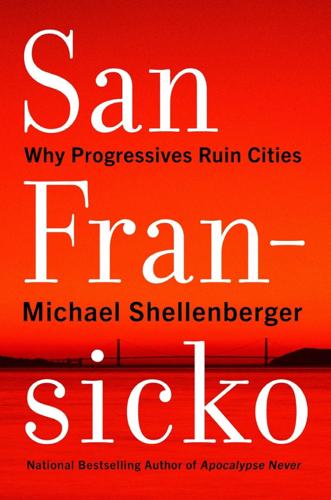
San Fransicko: Why Progressives Ruin Cities
by
Michael Shellenberger
Published 11 Oct 2021
Democrats until the late 1960s were pro-development, and had led efforts to demolish slums, build public housing, and revitalize the inner city. But starting in the late 1960s, Baby Boomers and the New Left turned against redevelopment. They were inspired by an influential 1961 book, The Death and Life of Great American Cities by Jane Jacobs, which blamed redevelopment, like that which had occurred in the Fillmore neighborhood of San Francisco, for destroying neighborhoods with freeways and high-rises, evicting low-income residents, and making them unlivable, as compared to highly walkable neighborhoods like Greenwich Village. But redevelopment occurred in Greenwich Village whereas the city of San Francisco increasingly subsidized housing for the homeless in the Tenderloin’s single resident occupancy hotels, which have for decades been dominated by a culture of heavy substance use and prostitution.
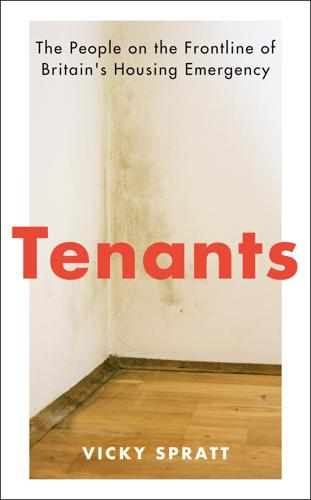
Tenants: The People on the Frontline of Britain's Housing Emergency
by
Vicky Spratt
Published 18 May 2022
Priscilla Parkhurst Ferguson (1996; New York: The New Press, 1998) Rutger Bregman, Utopia for Realists: And How We Can Get There (London: Bloomsbury, 2017) Emma Dabiri, What White People Can Do Next: From Allyship to Coalition (Penguin, 2021) Matthew Desmond, Evicted: Poverty and Profit in the American City (London: Penguin, 2016) Friedrich Engels, The Condition of the Working Class in England (1845; London: Penguin Classics, 2009) Derek Fraser, The Evolution of the British Welfare State (London: Macmillan, 1973) Ruth Glass, London: Aspects of Change (London: MacGibbon & Kee, 1964) Lynsey Hanley, Estates: An Intimate History (London: Granta, 2007; revised edition, 2012) bell hooks, ‘Homeplace: A Site of Resistance’ in Undoing Place?: A Geographical Reader, edited by Linda McDowell (London: Routledge, 1997) bell hooks, All About Love: New Visions (Love Song to the Nation #1) (2000; New York: William Morrow, 2016) Amelia Horgan, Lost in Work: Escaping Capitalism (London: Pluto Press, 2021) Jane Jacobs, The Death and Life of Great American Cities (1961; London: Bodley Head, 2020) Colin Jones and Alan Murie, The Right to Buy: Analysis and Evaluation of a Housing Policy (Real Estate Issues Book 9) (Oxford: Wiley-Blackwell, 2006) Leslie Kern, Feminist City: Claiming Space in a Man-made World (London: Verso, 2020) Loretta Lees, Tom Slater and Elvin Wyly, eds, The Gentrification Reader (London: Routledge, 2010) Anna Minton, Big Capital: Who is London For?

Bourgeois Dignity: Why Economics Can't Explain the Modern World
by
Deirdre N. McCloskey
Published 15 Nov 2011
Let us start having improved but thus far bureaucracy-blocked up-to-date computers for air-traffic control. Joel Mokyr, again, who is among the handful of my academic colleagues in economic history favoring the ideational approach (along with the historian Margaret Jacob, the sociologist Jack Goldstone, and such groundbreaking nonacademics as Jane Jacobs, Michael Novak, George Gilder, and Matt Ridley), makes the same point in speaking of the turn to usefulness in what he calls the Industrial Enlightenment. Yet Mokyr would agree that usefulness, too, needs a trading test, and that sheer innovation without the test is worse than useless, novelty without betterment—backyard blast furnaces, say.
…
Part IX The History and Economics Have Been Misunderstood 56 The Change in Ideas Contradicts Many Ideas from the Political Middle, 1890–1980 The rhetorical and ethical change around 1700, I say, contrary to the materialist persuasions of many of my colleagues, caused modern economic growth, which at length freed us from ancient poverty. As Jane Jacobs put it, the ethical code for commerce slowly replaced the ethical code for guardianship.1 Hierarchy seemed less natural, though given a second life around 1890 by scientific racism. Modern economic growth did not corrupt our souls, contrary to the antibourgeois rhetoric of the modern clerisy since 1848, and contrary also to an older line of aristocratic and priestly sneering at bourgeois life.
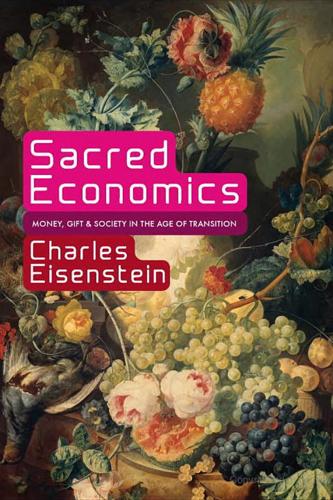
Sacred Economics: Money, Gift, and Society in the Age of Transition
by
Charles Eisenstein
Published 11 Jul 2011
Such a place is little more than a colony, and indeed that is what most places have become, especially in the United States, where towns have lost their local character and serve only as production and consumption centers for the global economy. For a region, city, or country to have a robust currency of its own, it must have a robust economy of its own as well. Key to building one is what economist Jane Jacobs called “import replacement”—the sourcing of components and services locally, and the development of the associated skills and infrastructure. Otherwise, a place is subject to the whims of global finance and dependent on commodity prices over which it has no control. In “developing” countries that still have strong local economic infrastructure, local currencies help to preserve that infrastructure and insulate them from global financial predation.
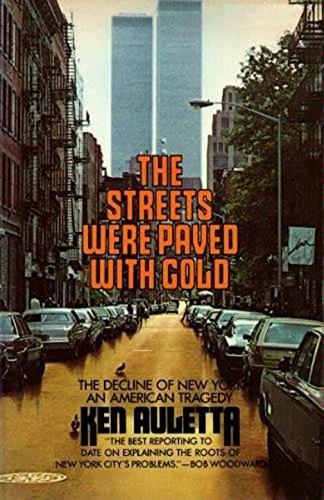
The Streets Were Paved With Gold
by
Ken Auletta
Published 14 Jul 1980
The changes in Harlem, the South Bronx, Bushwick, Williamsburg and Coney Island are mirrored in declining neighborhoods throughout the city—East New York, Borough Park, South Jamaica, Long Island City, Corona, Greenpoint, Fort Green, Washington Heights, Crown Heights. Of the city’s 340 health districts, almost one-half have less than one physician for every 1,000 residents—one-third the national average and in stark contrast to the average of 42 per 1,000 residents on the Upper East Side of Manhattan. A “successful city neighborhood,” Jane Jacobs wrote in The Death and Life of Great American Cities, requires “eyes upon the street, eyes belonging to those we might call the natural proprietors of the street.” Neighborly eyes ensured safety, a feeling of security, of community. In growing numbers of city neighborhoods, people no longer sit on stoops, no longer venture out at night.
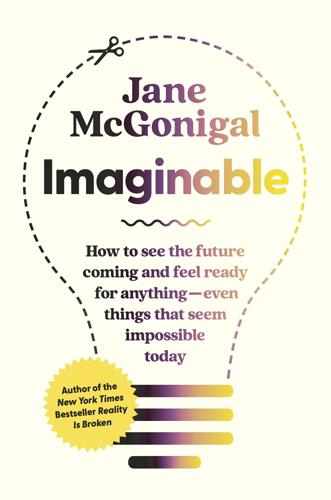
Imaginable: How to See the Future Coming and Feel Ready for Anything―Even Things That Seem Impossible Today
by
Jane McGonigal
Published 22 Mar 2022
“There’s an annual festival called Jane’s Walk, where people give free guided walks in their local communities. Anyone can volunteer to give a walk, to share neighborhood stories or reveal interesting facts about the area that people might not otherwise know.” The Jane’s Walk festival happens each May in hundreds of cities around the world, in honor of urbanist and activist Jane Jacobs, who is remembered for her pioneering research on what makes for vibrant, healthy cities. This year, Mita decided to give a Jane’s Walk inspired by some of the challenging future scenarios she has spent time imagining—such as disruptions to the power grid due to extreme weather and climate change.
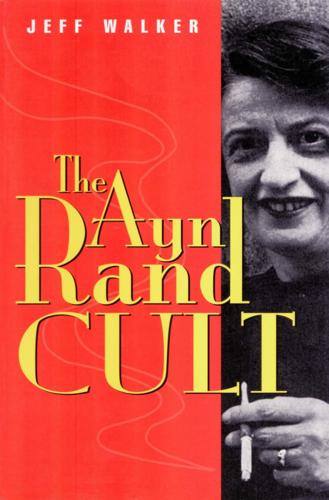
Ayn Rand Cult
by
Jeff Walker
Published 30 Dec 1998
Ron Merrill so wished to see Rand as without equal that he began his tome on Rand by stating that apart from Atlas very few among 1957’s crop of new books are in print today. Actually dozens are, several acknowledged as classics such as Jack Kerouac’s On the Road. He called her a genius doomed by her gender, despite acclaim during Rand’s era for female thinkers such as Simone de Beauvoir, Hannah Arendt, Karen Horney, Suzanne Langer, Jane Jacobs, and Margaret Mead. She fought alone against the world, he informs us. But consider all the major figures in Chapter 12 below, whom she could have counted as allies. Following publication of The Passion of Ayn Rand (1986), Objectivist Peter Schwartz attacked Barbara Branden’s credibility and impugned her motives.
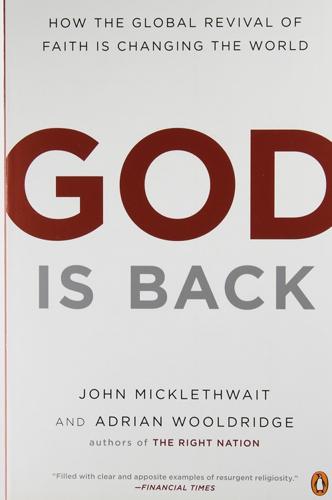
God Is Back: How the Global Revival of Faith Is Changing the World
by
John Micklethwait
and
Adrian Wooldridge
Published 31 Mar 2009
And while Continental Europe celebrates social solidarity and Asia values extended family ties, Americans fall back on themselves: they spend some $700 million on self-help books every year.16 The United States is the first country in history to classify more than half its population as suburban. That brings every material convenience from two-car garages to spacious rec rooms. But suburbs can also display a soul-destroying homogeneity—from the cookie-cutter McMansions to the anonymous big-box discount stores. Three decades ago Jane Jacobs, an admirer of traditional cities, observed that “every place becomes more like every other place, all adding up to Noplace.”17 Tom Wolfe remarked in A Man in Full (1998) that “the only way you could tell you were leaving one community and entering another was when the franchises started repeating and you spotted another 7-Eleven, another Wendy’s, another Costco, another Home Depot.”
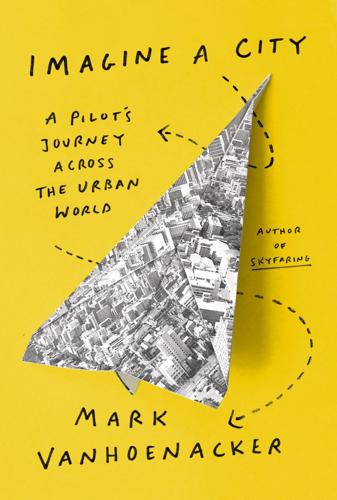
Imagine a City: A Pilot's Journey Across the Urban World
by
Mark Vanhoenacker
Published 14 Aug 2022
Mulholland’s famous line—“If you don’t get the water now, you’ll never need it”—appears in several forms. I’ve used the version that Margaret Leslie Davis records in Chapter 3 of Rivers in the Desert: William Mulholland and the Inventing of Los Angeles, her fascinating study of Mulholland and Los Angeles; while in “Just Subtract Water: The Los Angeles River and a Robert Moses with the Soul of a Jane Jacobs,” an essay published in the Los Angeles Review of Books on December 18, 2015, Joseph Giovannini includes this version: “If you don’t get the water, you won’t need it.” (He also notes the important role of the film Chinatown in telling the story of Los Angeles and its water wars.) Mulholland’s even more famous “There it is!

Connectography: Mapping the Future of Global Civilization
by
Parag Khanna
Published 18 Apr 2016
What began as SEZs can become multidimensional cities with life beyond the supply chain. The Suzhou Industrial Park in China now has modern arts and cultural centers, a Liverpool University campus, and its own Singapore-style pension scheme. It has become a full-service community of belonging. Urban purists have nostalgic visions of all cities resembling Jane Jacobs’s Washington Square Park. But while there is much to be adapted from neighborhoods that promote pedestrian civic life, many cities must urgently catch up to the present (and future) before they can become reflections of the past. CHINA’S SUPERSIZE SEZS No country has as many SEZs, new cities, and megacities as China.

The State and the Stork: The Population Debate and Policy Making in US History
by
Derek S. Hoff
Published 30 May 2012
Whereas the old guard stressed the harms of population growth, younger environmentalists offered a more holistic critique of capitalism that downplayed the population issue.164 As one journalist observed in 1972, some on the radical Left saw the zero population growth movement as a “copout, and a misanthropic one at that, a middle class diversion from the need to redistribute wealth as the real answer to America’s problems.”165 This viewpoint gelled with increasing efforts, loosely organized as the Alternative Technology Movement, to impose better social controls over technology.166 A few demographers, including Ansley Coale, also argued 190 chapter 6 that American economic organization itself was the primary cause of environmental degradation.167 Some individuals came to this position from a longstanding rejection of unplanned technology. For example, the great critic of the city Jane Jacobs wrote that American environmentalists were “laboring under the delusion that population and affluence are causing environmental deterioration.”168 The dominant figure arguing that technology harms the environment more than rising numbers of people was biologist Barry Commoner. By the late 1960s, Commoner had already established himself as a leading ecologist and critic of capitalism’s myopia.
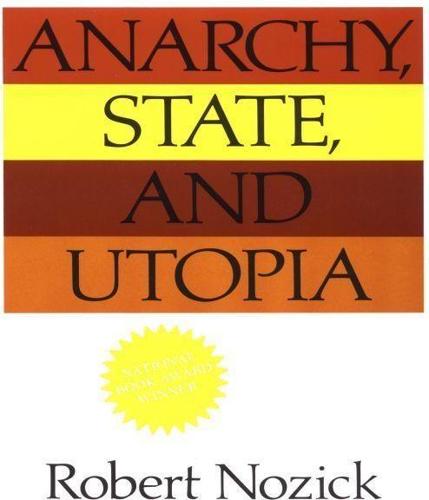
Anarchy State and Utopia
by
Robert Nozick
Published 15 Mar 1974
Richard Herrnstein’s discussion of the genetic factors in a society’s pattern of class stratification (I.Q. in the Meritocracy, Atlantic Monthly Press, 1973). 6. Discussions of how economic calculation is accomplished in markets. (See Ludwig von Mises, Socialism, Part II, Human Action. Chapters 4, 7—9.) 7. Microeconomic explanations of the effects of outside intervention in a market, and of the establishment and nature of the new equilibria. 8. Jane Jacobs’ explanation of what makes some parts of cities safe in The Death and Life of Great American Cities (New York: Random House, 1961). 9. The Austrian theory of the trade cycle. 10. Karl Deutsch and William Madow’s observation that in an organization with a large number of important decisions (which can later be evaluated for correctness) to be made among few alternatives, if large numbers of people have a chance to say which way the decision should be made, a number of persons will gain reputations as sage advisers, even if all randomly decide what advice to offer.

Coders: The Making of a New Tribe and the Remaking of the World
by
Clive Thompson
Published 26 Mar 2019
Or: “Never before in history have basically fifty mostly men, mostly twenty to thirty-five, mostly white engineer designer types within fifty miles of where we are right now, had control of what a billion people think and do when they wake up in the morning and turn their phone over . . . Who’s the Jane Jacobs of this attention city?” No one, he feared. His colleagues were sharp and clever but, he argues, unprepared to think about the society-wide implications of what they do. For his part, Krieger noted that Instagram and Facebook had, by August 2018, released tools so users could track the time they spent on the apps, set an amount of time to spend per day, and set an alert if they exceeded that amount.

Evil Geniuses: The Unmaking of America: A Recent History
by
Kurt Andersen
Published 14 Sep 2020
But even as that demolition of old buildings and neighborhoods was going full speed, local activists (in New York City most of all) and a few enlightened owners (in Omaha, for instance) started to beat it back—another example of how American citizens have placed essential checks and balances on excessive and misguided power. The Death and Life of Great American Cities, by the Manhattan journalist-turned-activist Jane Jacobs, became the manifesto of a successful and powerful new movement in 1961; by the end of the decade, historic preservation was fully institutionalized, and in the 1970s saving and renovating nice old buildings and neighborhoods was becoming the default.*3 At the same moment, architecture and urban planning rediscovered the amusements and lessons of history.
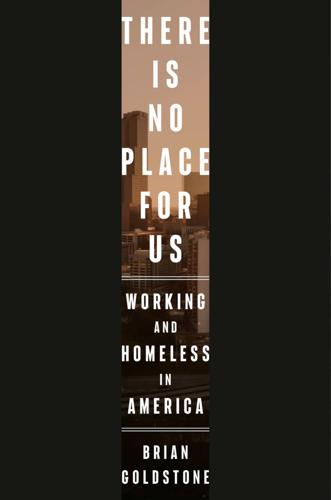
There Is No Place for Us: Working and Homeless in America
by
Brian Goldstone
Published 25 Mar 2025
Poignant and infuriating, his book reveals the tragic myths embedded in the stories we tell ourselves about working hard in America.” —Rachel Aviv, author of Strangers to Ourselves “A model of ethical journalism…[Goldstone] trains an empathetic eye on families that are struggling in an increasingly gentrified city that prizes property above people…. Make a place for this book alongside Jane Jacobs’ classic Death and Life of Great American Cities.” —Kirkus Reviews “Harrowing…Goldstone weaves a richly detailed narrative of his subjects’ increasingly desperate struggles…. It’s a gripping, high-stakes account of America’s housing emergency.” —Publishers Weekly CROWN An imprint of the Crown Publishing Group A division of Penguin Random House LLC. 1745 Broadway, New York, NY 10019 crownpublishing.com penguinrandomhouse.com Copyright © 2025 by Brian Goldstone Penguin Random House values and supports copyright.
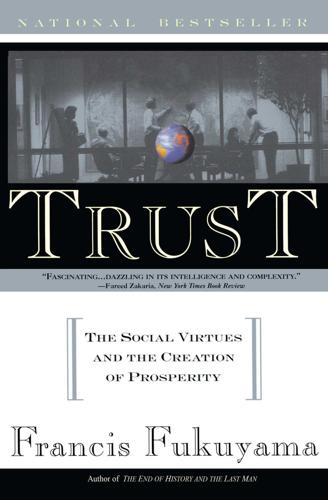
Trust: The Social Virtue and the Creation of Prosperity
by
Francis Fukuyama
Published 1 Jan 1995
Coleman, “Social Capital in the Creation of Human Capital,” American Journal of Sociology 94 (1988): S95-S120. See also Robert D. Putnam, “The Prosperous Community: Social Capital and Public Life,” American Prospect 13 (1993): 35-42; and Putnam, “Bowling Alone,” Journal of Democracy 6 (1995): 65-78. According to Putnam, the first use of the term social capital was by Jane Jacobs, in The Death and Life of Great American Cities (New York: Random House, 1961), p. 138. 9Gary S. Becker, Human Capital: A Theoretical and Empirical Analysis, 2d ed. (New York: National Bureau of Economic Research, 1975). CHAPTER 2. THE TWENTY PERCENT SOLUTION 1On this aspect of Adam Smith, see Jerry Z.
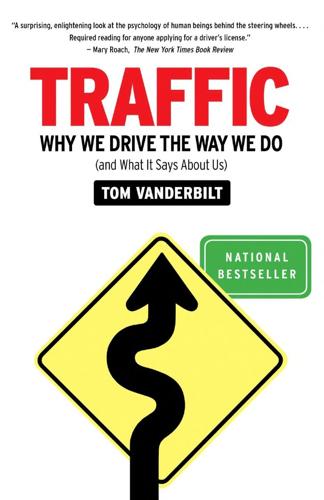
Traffic: Why We Drive the Way We Do (And What It Says About Us)
by
Tom Vanderbilt
Published 28 Jul 2008
In a study of what they called “disappearing traffic,” a team of British researchers looked at a broad list of projects in England and elsewhere where roads had been taken away either for construction or by design. Predictably, traffic flows dropped at the affected area. Most of the time, though, the increase in traffic on alternative routes was nowhere near the traffic “lost” on the affected roads. In the 1960s, as Jane Jacobs described in her classic book The Death and Life of Great American Cities, a small group of New Yorkers, including Jacobs herself, began a campaign to close the street cutting through Washington Square Park, in Greenwich Village. Parks were not great places for cars, they suggested. They also suggested not widening the nearby streets to accommodate the newly rerouted flow.

A Generation of Sociopaths: How the Baby Boomers Betrayed America
by
Bruce Cannon Gibney
Published 7 Mar 2017
A particular and relatively new complication is the antidevelopment NIMBYism of homeowners and the craven capitulation of Boomer governments. This movement started in the 1950s and 1960s, with a battle between Robert Moses, who would have bulldozed some of New York City’s most charming areas, against Jane Jacobs, who wanted to preserve scenic communities whatever their inefficiencies. While Jacobs then had the better of the argument, a degraded version of her mantle has been assumed by Boomers who refuse to consider change to their personal quality of life as a matter of fixed principle. Boomer bourgeoisie stasis must give way to forward thinking.
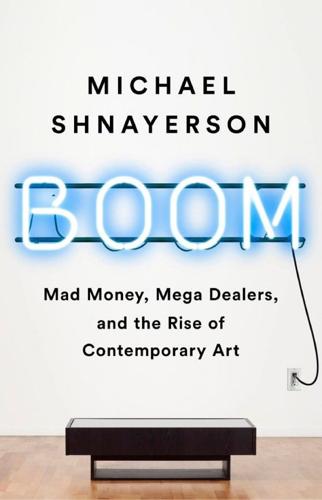
Boom: Mad Money, Mega Dealers, and the Rise of Contemporary Art
by
Michael Shnayerson
Published 20 May 2019
Landscape with Figures: A History of Art Dealing in the United States. Oxford: Oxford University Press, 2000. Graw, Isabelle. High Price: Art Between the Market and Celebrity Culture. Berlin: Sternberg Press, 2009. Greenfield-Sanders, Timothy. Art World. New York: Fotofolio, 1999. Gudis, Catherine, Mary Jane Jacob, and Ann Goldstein. A Forest of Signs: Art in the Crisis of Representation. Cambridge, MA: MIT Press, 1989. Hackforth-Jones, Jos, and Iain Robertson, eds. Art Business Today: 20 Key Topics. London: Lund Humphries, 2016. Haden-Guest, Anthony. True Colors: The Real Life of the Art World. New York: Atlantic Monthly Press, 1996.

Engineering Security
by
Peter Gutmann
CPTED includes not only standard security measures that are traditionally applied to the built environment like providing adequate lighting (but see the discussion further down for more on this) and minimising dense shrubs and trees that provide cover for miscreants but extends to a whole host of less immediately-obvious ones as well. One frequently-advocated (but less frequently-applied) measure involves positioning windows for so-called passive surveillance of outside public spaces, based on the “eyes on the street” concept of influential urban activist Jane Jacobs [115], with the intended goal being that “abnormal users [of the environment] will feel at greater risk of detection” [114]. Designing for passive surveillance includes measures like locating a car park in front of an office building so that the cars are in direct view of office workers rather than around the side of the building out of sight or, for schools, placing bike racks in front of classroom windows.
…
[108] “The Book of Risk”, Dan Borge, John Wiley and Sons, 2001. [109] “To Forgive Design: Understanding Failure”, Henry Petroski, Harvard University Press, 2012. [110] “The Great Bridge”, David McCullogh, Simon & Schuster, 1972. [111] “Crime Prevention Through Environmental Design”, C.Ray Jeffery, Sage Publications, 1971. [112] “Defensible Space: Crime Prevention Through Urban Design”, Oscar Newman, Macmillan, 1973. [113] “Design Against Crime: Beyond Defensible Space”, Barry Poyner, Butterworth, 1983. [114] “Crime Prevention Through Environmental Design”, Timothy Crowe, Butterworth-Heinemann, 1991. [115] “The Death and Life of Great American Cities”, Jane Jacobs, Random House, 1961. [116] “Creating Safe and Secure Environments for Schools and Colleges”, Randy Atlas and Richard Schneider, in “21st Century Security and CPTED”, CRC Press, 2008, p.279. [117] “Exchange 2003 Server Service Pack 2 (SP2) Anti-Spam Framework”, Alexander Nikolayev, 18 July 2005, http://blogs.technet.com/b/exchange/archive/2005/07/18/407838.aspx. [118] “Understanding Spam Confidence Level Threshold”, Microsoft Corporation, 10 September 2010, http://technet.microsoft.com/en-us/library/aa995744.aspx. [119] “Going Mini: Extreme Lightweight Spam Filters”, D.Sculley and Gordon Cormack, Proceedings of the 6th Conference on Email and Anti-Spam (CEAS’09), July 2009, http://ceas.cc/2009/papers/ceas2009-paper47.pdf. [120] “The Exploding Metropolis”, William Whyte, Doubleday/Anchor, 1958. [121] “Phishing with Rachna Dhamija”, Federico Biancuzzi, 19 June 2006, http://www.securityfocus.com/columnists/407. [122] “Malware Mythbusters”, Alex Kirk, presentation at Ruxcon 2011, November 2011. [123] “Malicious and Spam Posts in Online Social Networks”, Saeed Abu-Nimeh, Thomas Chen and Omar Alzubi, IEEE Computer, Vol.44, No.9 (September 2011), p.23. [124] “Metrics for Measuring ISP Badness: The Case of Spam”, Benjamin Johnson, John Chuang, Jens Grossklags and Nicolas Christin, Proceedings of the 16th International Conference on Financial Cryptography and Data Security (FC’12), Springer-Verlag LNCS No.7397, February 2012, p.89. [125] “A RESTful Web Service for Internet Name and Address Directory Services”, Andrew Newton, Dave Piscitello, Benedetto Fiorelli and Steve Sheng, ;login, Vol.36, No.5 (October 2011), p.23.

Wasps: The Splendors and Miseries of an American Aristocracy
by
Michael Knox Beran
Published 2 Aug 2021
The most insightful work on agora or plasquagórazza culture has been done almost entirely by Europeans, and almost entirely in the years between 1790 and 1940: Burke’s theory of the “little platoon,” Wordsworth’s evocation of provincial Cumbria and the “high value he set upon customariness, upon all that is habitual, local, rooted in the ground,” Coleridge’s vision of the provincial nucleus “round which the capabilities” of a place “may crystallize and brighten,” Ruskin’s studies of Venice, Pater’s “Denys L’Auxerrois” and his other agora fantasies, Fustel de Coulanges’ work on the Roman city and Jacob Burckhardt’s studies of Greek and Renaissance culture, the agora scholarship of Camillo Sitte, Johan Huizinga, and Werner Jaeger. (Hannah Arendt’s The Human Condition was published in 1958, but belongs in spirit to the earlier period.) With the possible exceptions of Lewis Mumford and Jane Jacobs (whose work was devoted rather to the large urban center than to the plasquagórazza forum) and of such expatriates as T. S. Eliot and Hemingway, no American has made a comparable contribution. The Roosevelts with the clergy (and King George VI and Queen Elizabeth) outside St. James’s Church in Hyde Park, New York.
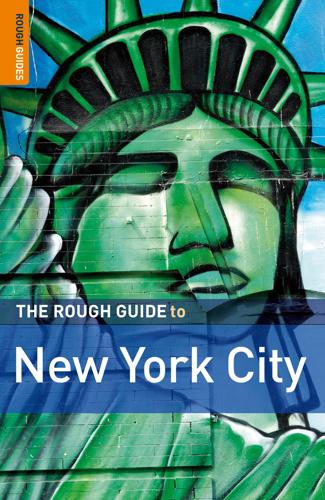
The Rough Guide to New York City
by
Martin Dunford
Published 2 Jan 2009
How could a railroad palace, modeled after the Baths of Caracalla in Rome, stand for only fifty years before being destroyed? The pictures alone warrant the price. Horst Hamann New York Vertical. This beautiful book pays homage to the New York skyscraper, and is filled with dazzling black-and-white vertical shots of Manhattan, accompanied by witty quotes from famous and obscure folk. Jane Jacobs The Death and Life of Great American Cities. Landmark 1961 screed authored by Robert Moses’ nemesis, and railing against urban over-planning. David McCullough Great Bridge: The Epic Story of the Building of the Brooklyn Bridge. The story of the father-and-son Roebling team who fought the laws of gravity, sharptoothed competitors, and corrupt politicians to build a bridge that has withstood the test of time and become one of NYC’s most noted landmarks.
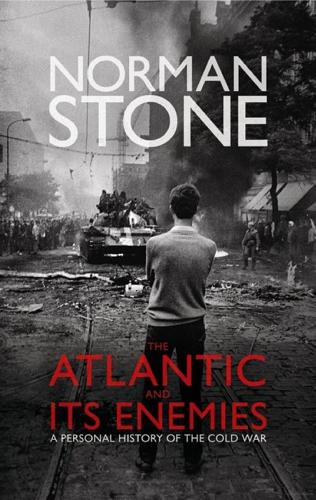
The Atlantic and Its Enemies: A History of the Cold War
by
Norman Stone
Published 15 Feb 2010
Two decades later governments had a great deal more money and were still producing squalor: what conclusion was to be drawn, that governments should have even more, or that they just could not help producing squalor? Vance Packard’s Status Seekers (1960) described the American business rat race. Jane Jacobs, looking at the wreckage caused by the San Francisco freeway system, wrote The Death and Life of Great American Cities (1961) and she foresaw that housing estates for the poor would turn into sinks of hopelessness worse than the slums that they were to replace; she also foresaw that city centres would become empty, inhabited only by tramps.
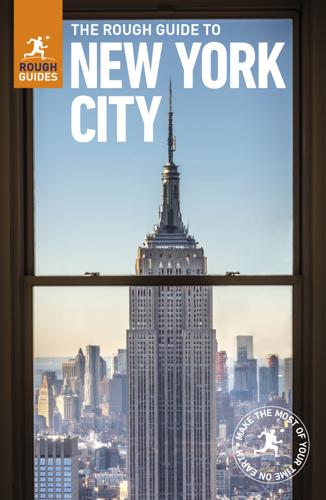
The Rough Guide to New York City
by
Rough Guides
Published 21 May 2018
How could a railroad palace, modelled after the Baths of Caracalla in Rome, stand for only fifty years before being destroyed? The pictures alone warrant the price. Horst Hamann New York Vertical. This beautiful book pays homage to the New York skyscraper, and is filled with dazzling black-and-white vertical shots of Manhattan, accompanied by witty quotes from famous and obscure folk. Jane Jacobs The Death and Life of Great American Cities. Landmark 1961 screed authored by Robert Moses’ nemesis, and railing against urban over-planning. David McCullough Great Bridge: The Epic Story of the Building of the Brooklyn Bridge. The story of the father-and-son Roebling team who fought the laws of gravity, sharp-toothed competitors and corrupt politicians to build a bridge that has withstood the test of time and become one of NYC’s most noted landmarks.
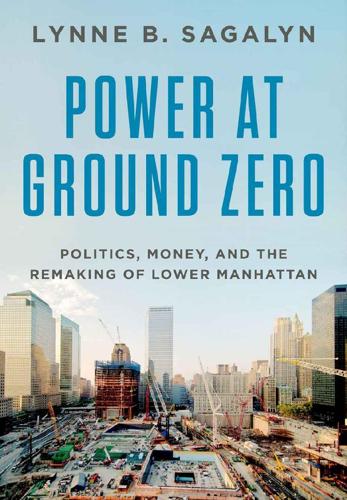
Power at Ground Zero: Politics, Money, and the Remaking of Lower Manhattan
by
Lynne B. Sagalyn
Published 8 Sep 2016
Yet by the 1960s, the spirit of change and the cost-benefit calculus that made great public works possible was gone—dissipated in a reactionary wave of criticism to the autocratic methods of New York’s greatest builder, Robert Moses. Urban renewal’s wholesale destruction of neighborhoods, the shift to a community-based approach to development and new appreciation of preservation stimulated by Jane Jacobs’s widely acclaimed Death and Life of Great American Cities, and the rise of the environmental movement profoundly changed the political calculus of thinking big. “New York seemed able to survive and even thrive without developing a new way” to build new big public works projects. On the morning of September 11, however, “the choice was taken out of the city’s hands.”